
Thank you to our Champion & Impact Partners












Thank you to our Champion & Impact Partners










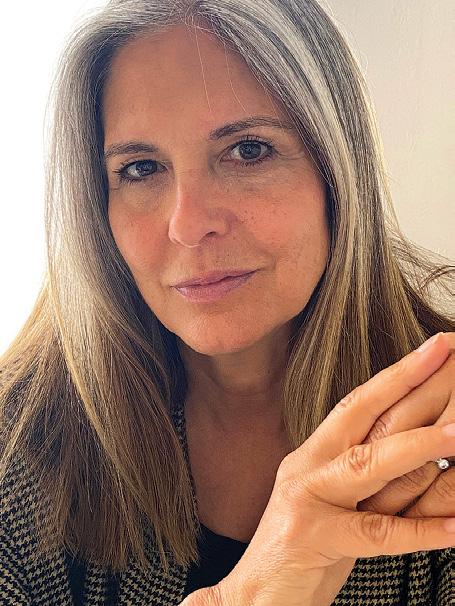
It is my great pleasure to present to you the inaugural edition of The Giving List Women
Did you know that only 1.8% of all U.S. philanthropic dollars currently go to women’s and girls’ organizations? That this number has been relatively static for over five years?
It is this staggering statistic that inspired the launch of The Giving List Women. As did coming to understand that whether we give $50 a year or $50 million a year, our greatest chance of moving the needle on any issue we care about is by supporting women and girls – by far the most powerful lever for change in almost every key area of philanthropic focus.
The Giving List Women’s central mission is to urge donors, no matter their age or giving capacity, to view women and girls as a lens, not a lane, in philanthropy.
This book was created to help donors apply this lens to their giving. It also exists to help nonprofits on the ground floor of our world’s most vital work tell their powerful stories in a way that can help us all better understand and appreciate the critical services they provide.
Our world is filled with nonprofits, of all types and sizes, that must compete for limited resources. The organizations written about in the pages of this book are certainly not the only ones doing great work. But they do represent our nation’s and our world’s vibrant nonprofit and philanthropic culture. They are working to give power to women and girls at a critical moment in our world’s history, and we believe that they are, each of them, worthy of your support.
I am grateful to our Champion and Impact Partner organizations, also profiled in this book, who enthusiastically linked arms in partnership with The Giving List Women. The women and men at these partner organizations helped not only to curate and to underwrite the cost of this effort, but deepened our understanding of why it matters so much to support women and girls.
Our partner organizations are focused, day in and day out, on investing in women and girls locally, nationally, and globally. They do this work because they understand the huge contribution being made by women and girls to the creation of a vision for a better world. They know that the idea is no longer for us all to fit into a world created by and for men. It is about building a world that will be better for us all, for every human on our planet. A world where we protect the Earth, where we rethink what good leadership looks like, where everyone is seen and protected and valued and included. And the only road to achieving this vision is that which leads to gender equity.
A special thanks to the 10 Giving List Women Trailblazers also interviewed for this publication. The life work of these philanthropic and movement leaders has made – and continues to make – an indelible impact on our world. They are part of the chorus of courageous voices in the powerful push for equity, compassion, and justice for all.
We hope that this publication will help you break through some of the confusion created by so many pressing needs. That you will use this book as a resource as you decide where to invest your much-needed support. Budgets are moral documents; they reflect our values and our understanding of what matters. We hope that you will consider applying the lens of women and girls to your giving, because in doing so, you will be a part of making the world a better place for us all.
In solidarity,
 Gwyn Lurie Co-founder & CEO, The Giving List Women
Gwyn Lurie Co-founder & CEO, The Giving List Women


We are all many things. We may be women, mothers, daughters. Fathers, sons, brothers. We are of every shape, size, color. We come from all walks of life, backgrounds, and places. We have our own proclivity for whom we love, whom or what we worship. And to view the world any other way is to leave out critical pieces of ourselves and others.
Like people, nonprofits are multifaceted. They focus on a plethora of critical, overlapping issues. In these pages, we have organized these 48 nonprofits and 19 Champion Partners across 10 chapters, though we understand that each aligns with many of the book’s themes. Our hope is that their placement helps us think differently about every important challenge we face and to better understand the complexities these organizations tackle. This is the reason, for example, you will find themes of social justice and racial justice interwoven throughout the book, not as separate chapters.
The title “How to Use This Book” is intentional, as we also hope that you will engage with it, and not merely read it. Our goal is for each story to inspire us to feel something, whether it be compassion for the human beings at the story’s center, an urgency to tackle a critical challenge, or indignance at the inequities reflected.
Mostly, we hope you feel compelled to act. That you will reach out to the organizations you are curious about; you will re-tell these stories to your colleagues, families, and friends; you will reflect on your own giving and the lens you currently use. That you will join the movement we are building with our partners to help unlock billions of dollars towards female-facing organizations. The word – or acronym – “List” in the title of this book reflects our intention at The Giving List Women: “Let’s Ignite Something Transformational!” To do that, we need your involvement.
Many people helped bring this inaugural book to life, from our commissioned artists to the writers who interviewed each nonprofit and Champion/Impact Partner and wrote the stories you’ll read in the following pages.
A special thanks to three talented individuals who made this book ready for your coffee table. Natalie Johnson’s beautiful images open each chapter of the book, while Ebony Osun Morris made a Giving List Women quilt, the 10 swatches of which are sewn together in real life, but for the book you’ll find each swatch in a chapter bar.
Finally, Dayna Bowers' centerfold visually summarizes the essence of what we are building together with our partners. So, tear it out and pin it on your wall! And don’t forget to read the back where you’ll find the bios of all our contributors.
A final note as you use this book. Please read the often overlooked masthead where we identify our team. Building something new is no easy feat. These individuals kept stepping up as the book expanded beyond our expectations as additional partners came aboard and as we navigated the challenges that come with creating anything new.

With much anticipation –
 Janine Berridge President, The Giving List Women
Janine Berridge President, The Giving List Women
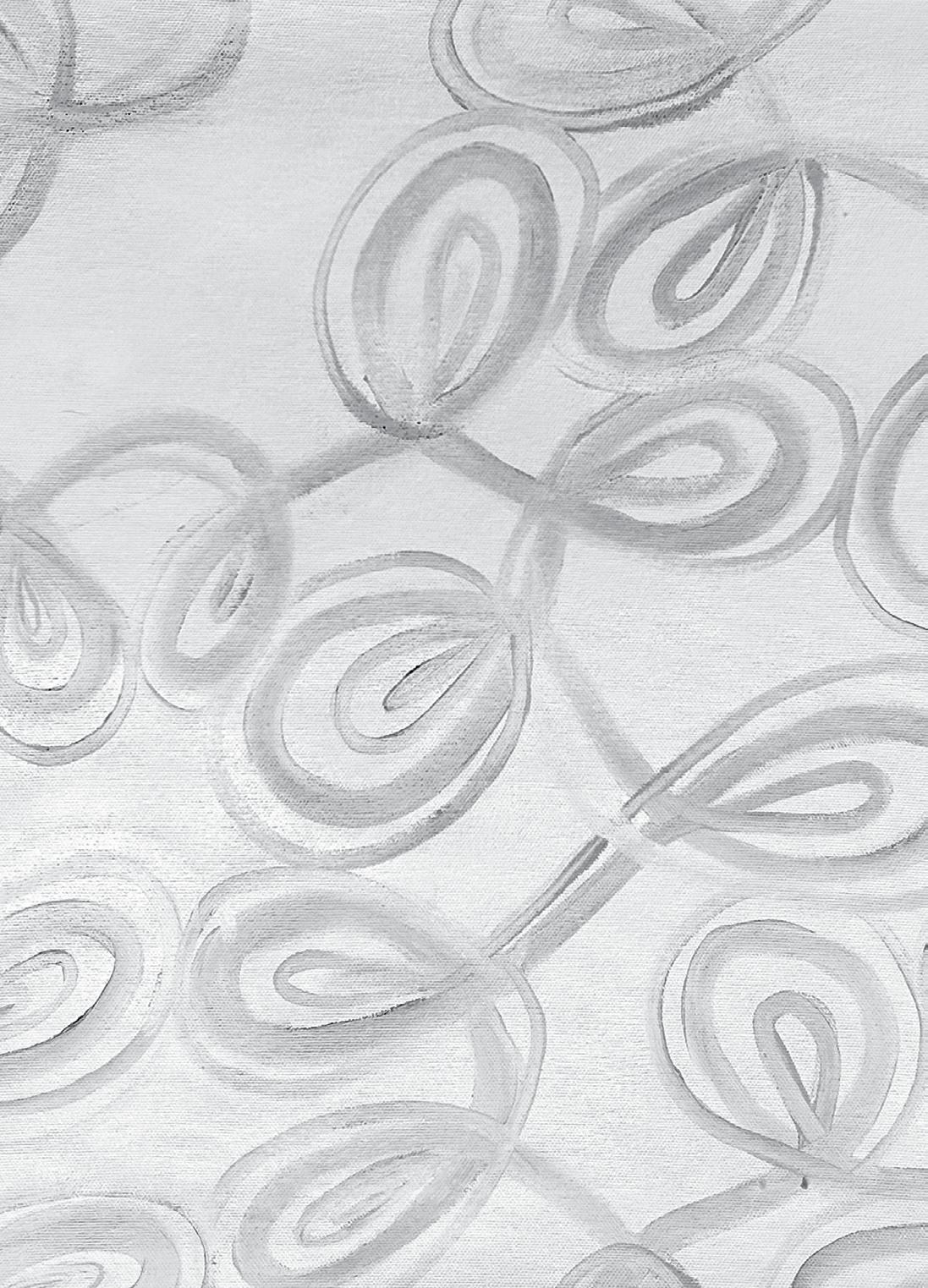
You’ve read The Giving List Women and hopefully you’re now wondering how you can become part of our network of networks. You’ve come to the right page and we have some ideas for you:
“Can we be featured next year as a nonprofit organization?”
• For our inaugural year, organizations were identified and selected through our own networks and recommendations from our Champion Partners and Thought Partners. The organizations featured in these pages represent a tiny selection that are undertaking critical work for women and girls around the world. To be featured in our 2025 edition, we invite organizations to apply online at www.givinglistwomen.com. Through a committee composed of a diverse selection of our 2024 partners, we will identify our next cohort of organizations to be featured.
“We are a foundation or collective giving organization and would like to partner with The Giving List Women.”
• The Champion Partners you read about in this book are all fueling our collective pursuit of gender equality in many different ways, whether through funding, research, membership networks, giving circles, campaigns, and more. They also fueled our ability to produce this book. If you’d like to become part of our growing list of Champion Partners, please email janine@thegivinglist.com.
“Our company is prioritizing women and girls through our impact initiatives or core business. We want ‘in’ too!”
• We seek Impact Partners who understand that ethical business is successful business. That doing well is doing good. Our Impact Partners are innovators and disruptors; they are evolving as our world evolves; they execute bold ideas and learn and grow through challenge; and above all else, they are committed to excellence and impact and gender equity.
• If this sounds like your company and you want to learn more, email janine@thegivinglist.com.
“I have a great idea for a Trailblazer who readers should know about.”
• We welcome your ideas, and especially those with diverse experiences, who might be unknown, but should be known.
“I heard there is an intimate annual convening of philanthropic and impact leaders that brings the book to life. That sounds like something I need to attend!”
• The inaugural Giving List Women Summit took place April 2024 in Montecito, California. With the goal of building relationships and passion around intersectional feminist philanthropy, the summit intends to broaden the tent of people who understand that when women and girls thrive, we all win – men and boys included. Learn more at www.givinglistwomen.com.
“I need to help drive up the dismal 1.8% of charitable giving that goes to women’s and girls’ organizations.”
• First, approach the featured organizations that you’re curious about. Next, keep track of data released by the Lilly Family School of Philanthropy. And don’t forget to support Give to Women and Girls Day on October 11!
“I love this book and want to share it with others.”
• Individuals can receive a complimentary copy of The Giving List Women by visiting www.givinglistwomen.com/signup.
• If you’d like to help distribute larger quantities of the inaugural book – or future editions – to your employees or members, please email jmoran@montecitojournal.net.

CHAMPION PARTNERS:
Bill & Melinda Gates Foundation Grassroots and Grasstops. P.14
Women’s Philanthropy Institute
An Entrepreneurial Approach to Growing Women’s Philanthropy P.18
Women Moving Millions
Taking Bold Risks and Championing Leadership. P.22
CHAPTER 1
Our World P.24 Women Rise to the Challenge
Q&A: Pat Mitchell
Connecting Women for Greater Opportunities and Maximum Power. P.26
CHAMPION PARTNER:
Global Greengrants Fund
Collaborating with Communities, Catalyzing Movements. P.28
Daughters for Earth mobilizes all women to actively engage in climate action by supporting on-the-ground, women-led efforts around the world to protect and restore the Earth. P.30
“…Women are the ones carrying the innovations forward at the front lines. And when they’re in positions of influence, the evidence is clear that they have better environmental policies and certainly better gender and family-focused policies.”
– Pat Mitchell, P.26
“…When you think about all the issues that philanthropy works on, women and girls are at the center, and now in leading nonprofits, leading social change movements in government, and certainly in the issues to which philanthropy seeks to respond… Many of the movement leaders are women. And that lens is very much part of how we think about these issues.”
– Miguel Santana, P.126
Pastoral Women’s Council promotes the cultural, environmental, and educational development of pastoralist women and children to facilitate their access to essential social services and economic empowerment. P.31
WECAN International engages women worldwide in policy advocacy, on-the-ground projects, training, and movement-building for global climate justice. P.32
Pacific Island Feminist Alliance for Climate Justice leads a participatory grantmaking program to resource, connect, and amplify feminist climate action across the region. P.33
Akashinga protects endangered wildlife and ecosystems in Zimbabwe by conducting antipoaching operations, delivering ranger training, supplying equipment and technological solutions, and providing critical project management and administrative support to local communities engaged in preventing poaching and trafficking. P.34
CHAMPION PARTNER: Global Center for Gender Equality
A Dynamic Gender Equality Collective Tackles the Hierarchy of Patriarchy. P.36

Our Democracy P.38
Women’s Equality Is at the Heart of Democracy
Q&A: Kimberlé Crenshaw
What “Intersectionality” Really Means and Why It’s So Crucial for Racial Equality. P.42
CHAMPION PARTNER:
Global Fund for Women
Shifting Power to Gender Justice Movements. P.44
Feminist Majority Foundation develops bold, new strategies and programs, advances women’s equality, non-violence, economic development, and, most importantly, empowers women and girls in all sectors of society. P.46
International Women’s Media Foundation unleashes the potential of women journalists as champions of press freedom to transform the global news media. P.47
The Ascend Fund, powered by Panorama Global, works with organizations to improve the gender composition of state legislatures. P.48
National Women’s Law Center advances gender justice – working across issues that are central to the lives of women and girls. It uses the law in all its forms to change culture and drive solutions toward gender equity. P.49
ERA Coalition works with its partner organizations to provide a strong, multigenerational, inclusive forum for all voices, and to build the groundswell moving toward a more equal future for all. P.50
“...So now we are not sure about feminism. We’re not sure what women’s rights are. We’re not sure how to frame it. We’re not sure about intersectionality. We’re not sure about democracy. All these things are up for grabs right now, and it is our failure to articulate a common narrative and aspiration that is our Achilles’ heel.”
– Kimberlé Crenshaw, P.42
“ When we’re looking at things from different angles, it’s very useful to have some of those angles seen through a woman’s lens.”
– Sara Miller McCune, P.158
Our Security P.52
Accessing Pathways to Build a Thriving Future
Q&A: Kavita Ramdas
The Prism of Philanthropy. P.54
CHAMPION PARTNER: New Moon Network
Leading with Lived Experience: Sex Workers & Survivors Working Together. P.56
The Cupcake Girls provides confidential support to those involved in the sex industry, as well as trauma-informed outreach, advocacy, holistic resources, and referral services to provide prevention and aftercare to those affected by sex trafficking. P.58
Downtown Women’s Center works toward ending homelessness for women and genderdiverse individuals by providing safe housing and supportive services centered on wellness, employment, and advocacy. P.59
Elman Peace Center promotes peace, cultivates leadership, and empowers the marginalized members of society to be decision-makers in the processes that ensure their wellbeing. P.60
Grameen America helps low-income entrepreneurial women build businesses to enable financial mobility. P.61
Friendship Bridge creates opportunities that empower Guatemalan women to build a better life. P.62
CHAMPION PARTNER: California Community Foundation
Creating a Stronger Los Angeles by Boosting Marginalized Communities. P.64
Our Safety P.66
Allies in the Protection and Safety of Women and Girls
Q&A: Hali Lee
The Power of Collective Giving P.68
CHAMPION PARTNER:
Gibson Dunn
Leading the Way to a More Equitable and Inclusive World. P.70
Futures Without Violence works to prevent and end violence against women and children around the world. P.73
Equality Now achieves legal and systemic change that addresses violence and discrimination against women and girls around the world. P.74
Nadia’s Initiative partners with local communities and local and international organizations to design, support, and implement projects that promote the restoration of education, healthcare, livelihoods, WASH (water, sanitation, and hygiene), culture, and women’s empowerment in the Sinjar region of Iraq. P.75
Minnesota Indian Women’s Sexual Assault
Coalition strengthens the sovereignty of its Tribal coalition members and uplifts the voices of survivors and service providers. P.76
Rape Treatment Center provides comprehensive treatment for adult and child victims of rape, sexual assault, and other forms of sexual abuse; prevention and education initiatives that reduce the prevalence of these forms of violence; and training programs for law enforcement and other service providers to enhance the treatment victims receive wherever they turn for help. P.77
CHAMPION PARTNER:
The New York Women’s Foundation
Bringing About an Era of Radical Generosity. P.78
Our Bodies P.81
The Anatomy of Valuing All Bodies
CHAMPION PARTNER:
Linked Foundation
Investing in Women to Change the World. P.82
Q&A: Dr. Jean Berchmans Uwimana
Innovating Equity in Rwanda Through a Trailblazing “Cooking” Show. P.84
Black Mamas Matter Alliance centers Black mamas and birthing people to advocate, drive research, build power, and shift culture for Black maternal health, rights, and justice. P.87
Breast Cancer Alliance improves survival rates and quality of life for those impacted by breast cancer through better prevention, early detection, treatment, and cure research. P.88
Plan C transforms access to abortion in the U.S. by normalizing the self-directed option of abortion pills by mail. P.89
One Heart Worldwide saves the lives and promotes the well-being of mothers and their newborns in underserved areas of rural Nepal. P.90
CHAMPION PARTNER: #HalfMyDAF
An Innovator Inspiring More Giving: Jennifer Risher. P.92

“I’m trying to make the case that giving circles are one important way for us to reanimate and reclaim our democracy –a way to exercise our democracy and civic engagement muscles. Especially when participation in churches, PTAs [parent–teacher associations], the Elks – all those civic associations that animated American culture two generations ago –are plummeting.”
– Hali Lee, P.68

“It’s honestly astonishing because again and again, we see research that says if you invested more in women, particularly women contributing to the economy, trillions more would go to global GDP. That investing in women tends to not only pay back in an economic sense, but also because of the trickle-down effect – the intergenerational [effect], the community effect, of a woman doing well in her community.”
– Cherie Blair,P.138
Our Minds P.94
A Healthier Coming of Age
Q&A: Kara Nortman & Julie Uhrman Women in Sports: Passion, Purpose, and Profitability. P.96
CHAMPION PARTNER: Grantmakers for Girls of Color Guiding Liberated Futures. P.100
Girls on the Run North Bay inspires girls to be joyful, healthy, and confident by using a fun, experience-based curriculum that creatively integrates running. P.102
Girls Inc. of Greater Santa Barbara inspires all girls to be strong, smart, and bold. P.103
Pine Ridge Girls’ School radically changes the trajectory of Lakota girls’ lives by equipping them with vital foundations for new and promising futures full of choice and opportunity. P.104
Stand with Trans empowers and supports transgender youth and their loved ones. P.105
Tools & Tiaras shows girls that Jobs Don’t Have Genders™. P.106
CHAMPION PARTNER:
The Annie E. Casey Foundation Overcoming the Barriers to Success. P.108
Our Culture P.110
Lifting Up Women and Girls in the Arts Is Vital to Cultural Progress
Q&A: Franco Stevens Creating Representation. P.112
National Women’s History Museum educates, inspires, empowers, and shapes the future by integrating women’s distinctive history into the culture and history of the United States. P.114
Queer Women of Color Media Arts Project uses film to shatter stereotypes and bias, reveal the lived truth of inequality, and challenge the roots of inequity and injustice through art and activism. P.115
The Representation Project builds a world where all people can achieve their potential and be seen for their full humanity. P.116
V-Day responds against violence toward women, girls, and the Earth. It unifies and strengthens existing anti-violence efforts, and it lays the groundwork for new educational, protective, and legislative endeavors throughout the world. P.117
Girls Make Beats empowers girls by expanding the female presence of music producers, DJs, and audio engineers. P.118
CHAMPION PARTNER:
The Curve Foundation Championing Lesbian and Queer Women’s Stories and Culture. P.120
“Empowering more women directly, giving them more opportunities for education, and helping society know that by doing so, it does not only benefit the woman, but it benefits the country – it benefits the society and everyone who is part of the society.”
– Dr. Jean Berchmans Uwimana, P.84

Our Solidarity P.122
One of the Most Important Social Justice Movements You’ve Probably Never Heard Of
Q&A: Miguel Santana Forever Changed and Engaged by the Strong Women Who Shaped His Life. P.126
A Call to Men transforms society by promoting healthy, respectful manhood and offering training and educational resources for companies, government agencies, schools, and community groups. P.128
Equimundo works to promote gender equality and create a world free from violence by engaging men and boys in partnership with women, girls, and individuals of all gender identities. P.129
Fathering Together turns dads into positive change agents. P.130
Men 4 Choice unconditionally supports the women and impacted individuals leading the pro-choice movement by activating, educating, and mobilizing male allies in the fight to protect and expand reproductive freedom. P.131
Next Gen Men works to change how the world sees, acts, and thinks about masculinity. P.132
CHAMPION PARTNER: Philanthropy Together Changing Philanthropy’s Narrative Through Community Involvement. P.134
“For me, feminism has nothing to do with what’s between your legs; it’s what’s between your ears.”
– Kavita Ramdas, P.54
“…So little funding is devoted to gay people, and then there’s no accurate demographics on how much money is given to lesbian causes because nobody keeps track of that kind of stuff.”
– Franco Stevens, P.112
Our Careers P.136
Opening Doors to Prosperity
Q&A: Cherie Blair The Woman Behind the Business Revolution for Women. P.138
Cherie Blair Foundation for Women empowers women in low- and middle-income countries to start, sustain, and grow successful businesses, and it builds fair and inclusive business environments. P.140
Equal Rights Advocates protects and advances rights and opportunities for women, girls, and people of all gender identities through groundbreaking legal cases and bold legislation that sets the stage for the rest of the nation. P.141
Lift Our Voices changes toxic workplace cultures. P.142
Women’s Economic Ventures cultivates the power within each woman to realize her dreams, achieve financial independence, and succeed on her own terms. P.143
National Domestic Workers Alliance works for the respect, recognition, and rights for more than 2.2 million nannies, house cleaners, and home care workers who do the essential work of caring for our loved ones and our homes. P.144
CHAMPION PARTNER: Women Connect4Good Lifting Up Women 4 the Future. P.146
Our Leadership P.148
It’s Time for a New Definition of Leadership
Leadership Women empowers and advances women leaders by providing transformative programs, networking opportunities, and leading-edge information on state, national, and global issues. P.151
CHAMPION PARTNER:
illumyn
Elevating Board Candidates to Diversify the Boardroom. P.152
Him For Her accelerates diversity on corporate boards. P.154
Rise Up partners with women, girls, and allies who are transforming their communities and countries as part of a global movement for justice and equity. P.155
Girls for Gender Equity works intergenerationally, through a Black feminist lens, to achieve gender and racial justice by centering the leadership of Black girls and gender-expansive young people of color to reshape culture and policy through advocacy, youth-led programming, and shifting dominant narratives. P.156
Q&A: Sara Miller McCune
Building Sage and Productive Change. P.158
CHAMPION PARTNER:
The Annenberg Foundation
Inspiring Innovative Change and Empowering Women from All Generations. P.160
“ Women’s sports is a cultural institution that brings people joy, that moves their mind, body, and spirit. It moves things forward by getting people to show up, getting their butts in seats, and making them feel part of something that isn’t connected to a screen – part of a community in the real world – and all that makes us feel human and present.” – Kara Nortman, P.96
To learn more about joining The Giving List Women movement, please visit: www.givinglistwomen.com
CEO & Co-Founder
Gwyn Lurie gwyn@montecitojournal.net

COO & Co-Founder Tim Buckley tim@thegivinglist.com
President Janine Berridge janine@thegivinglist.com
Executive Editor Vicki Horwits vicki@thegivinglist.com
Production Manager/Associate Editor
Maya Becker
Elizabeth Long
Art Director Trent Watanabe
Copy Editor Lily Buckley Harbin
Graphic Design/Layout Stevie Acuña
Operations Jessikah Fechner jmoran@montecitojournal.net
Illustrators
Dayna Bowers, Natalie Johnson
Photography Lisa Kristine
Contributors
Aliya Bashir, Alyssa Wright, Anna Lind-Guzik, Aviva Dove-Viebahn, Brenda Gazzar, Brett Simpson, Carrie N. Baker, Cecile Garcia, Dan Schifrin, Ebony Osun Morris, Hannah Murphy, Holly C. Corbett, Isabella Rolz, Janell Hobson, Jen Christensen, Lauren Brathwaite, May Jeong, Nadra Nittle, Rob Okun, Wendy Eley Jackson
the giving list women
is published by: The Giving List Women, LLC. Corporate offices located at: 1206 Coast Village Circle, Suite H, Montecito, CA 93108




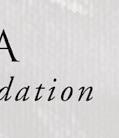

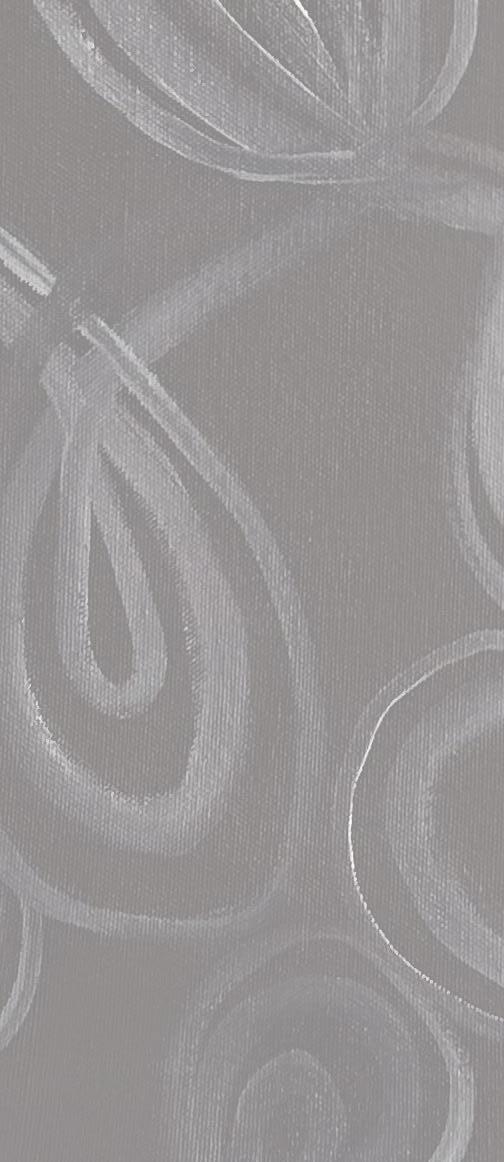

Even among nonprofit giants, the Bill & Melinda Gates Foundation is a behemoth. With an $8.6 billion budget for 2024 – larger than the GDP of many small island nations – the Gates Foundation exists in its own stratosphere. As of December 2022, their endowment was $67.3 billion. But here’s what really makes them a giant among giants: ey plan to give all that money away. In his annual letter, CEO Mark Suzman announced a new goal to raise the budget to $9 billion by 2026 in furtherance of Bill and Melinda Gates’ commitment to spend down the endowment within 20 years of their deaths. And they’re calling on other billionaires to do the same via the Giving Pledge, which is a promise by the world’s wealthiest individuals and families to dedicate the majority of their wealth to charitable causes.
F rom its perch atop the philanthropic ecosystem, the Gates Foundation acts as a convener and catalyst, and in the last decade, one of its top priorities has been gender equality. It’s a deeply felt belief that resonates throughout the foundation. When asked why it matters to lift up women and girls, Alex Jakana, a former journalist and now senior program officer for Philanthropic Partnerships at the Gates Foundation, cites the women in his life and his experiences in Uganda, the U.K., and the U.S., witnessing the same challenges for women repeat themselves and how little progress has been made. He also makes an elegant, practical case for gender equality: “If you go to the gym and you work out your left side more than your right side, [the imbalance] is going to affect your entire system. Anything other than equality is the definition of self-harming.”
“ When women and girls are lifted up, they lift up an entire community with them. It’s proven over and over again that women invest in community and the world around us. It’s a ‘rising tides lift all boats’ scenario.”
– Katelen Kellogg
Katelen Kellogg, communications officer at the foundation, credits her education in gender theory and feminist philosophy, and the explanatory power of a gender lens for steering her into philanthropy, first in LGBTQ+ rights and now at the Gates Foundation. “When women and girls are lifted up, they lift up an entire community with them. It’s proven over and over again that women invest in community and the world around us. It’s a ‘rising tides lift all boats’ scenario.”

Although women and girls have always benefited from the foundation’s programming more broadly, it wasn’t until 2014 that the Gates Foundation made its first set of explicit investments in gender equality. Following the 2015 adoption of the 17 United Nations Sustainable Development Goals (SDGs) – world development goals that call for a concerted effort toward building an inclusive, sustainable, and resilient future for the people and the planet – the foundation began to scale its investment in gender equality. In 2018, the Gates Foundation launched its first strategy on gender equality, and by 2020, gender equality had its own division. is increasing commitment meant more funding to partners working directly on gender equality, and also an internal structural shift to intentionally and explicitly apply a gender lens and track relevant data across all of the foundation’s divisions.
The foundation serves a number of roles within the feminist funder space, this includes a Philanthropic Partnerships strategy to inspire and enable donors to give more generously. According to Jakana, their team’s goal is to facilitate philanthropy by asking, “What mechanisms would make giving easier and more frictionless?” eir
target audience is the donor who says, “I want to fund this issue, but I don’t know where to write the check.” As Jakana argues, “Gender inequality, for example, is universe-sized,” and people are easily put off from acting.
e Gates Foundation is there to provide community and support. is includes providing research and data, and partnering with learning communities like Greenwood Place, where they’ve planned a deep dive for donors on gender equality as defined by SDG 5.
One data point they’re tracking: Women are poised to inherit a massive amount of wealth in the coming decades as older generations pass. According to the management consulting firm McKinsey, women in just the U.S. are expected to inherit around $30 trillion by 2030. e Gates Foundation sees this wealth transfer to women as an opportunity to build philanthropic networks, pool community resources, and fund programs for gender equality. e foundation takes a similar approach to all its partnerships: “We’re trying to bring resources together and be a convener in a way that’s so often missing in terms of gaps in the market and the larger ecosystem.” is fits within the Gates Foundation’s ethos that we need both “grassroots and grasstops.” Kellogg describes their theory of systemic change: “You not only need power, brilliance, and expertise from community, but that needs





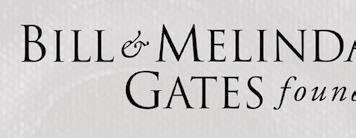

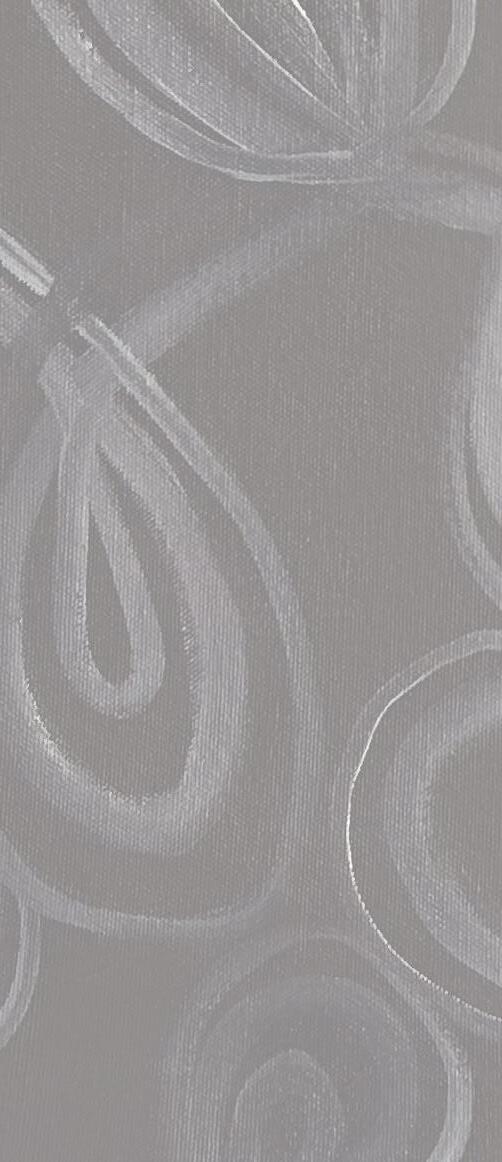
to then be transferred up to the people in government who are making policy decisions and funding decisions related to what those communities are actually receiving.”
On the funder side, what does that look like? Susan Sherrerd was part of a pilot cohort learning journey sponsored by the Foundation to participate in and reflect together on the Women Deliver 2023 Conference. When asked why she funds gender equality, she says, “I believe in a gender equal world without sexism, discrimination, and gender-based violence. Gender equality -- besides being a fundamental human right -- benefits everyone, men as well as women.” It’s essential, she says, to achieve peaceful societies and a sustainable world. As for what message she would share with prospective Giving List Women donors? Don’t wait until you think you’re ready. “Confidence and skill come from making the grants,” she says. Also, manage your expectations and think long-term because social change work isn’t like vaccine development, for example, with a clearly defined problem and solution. No one organization, institution, or donor can solve gender equality on their own. Don’t duplicate efforts. “Giving collaboratively with other donors leverages my grants and catalyzes my impact to address the scale and complexity of gender inequality.”
– Grantee Partners as Critical Intermediaries
Increasingly the money going to fuel gender equality is being directed to collaborative funds, critical intermediaries with local relationships, cultural context, and skills in advocacy and communications. ese collaboratives increasingly practice Trust-Based Philanthropy and are often led by women and people of color. e end goal is to close the distance between donors and grassroots organizations already doing the work in
We’re trying to bring resources together and be a convener in a way that’s so often missing in terms of gaps in the market and the larger ecosystem.
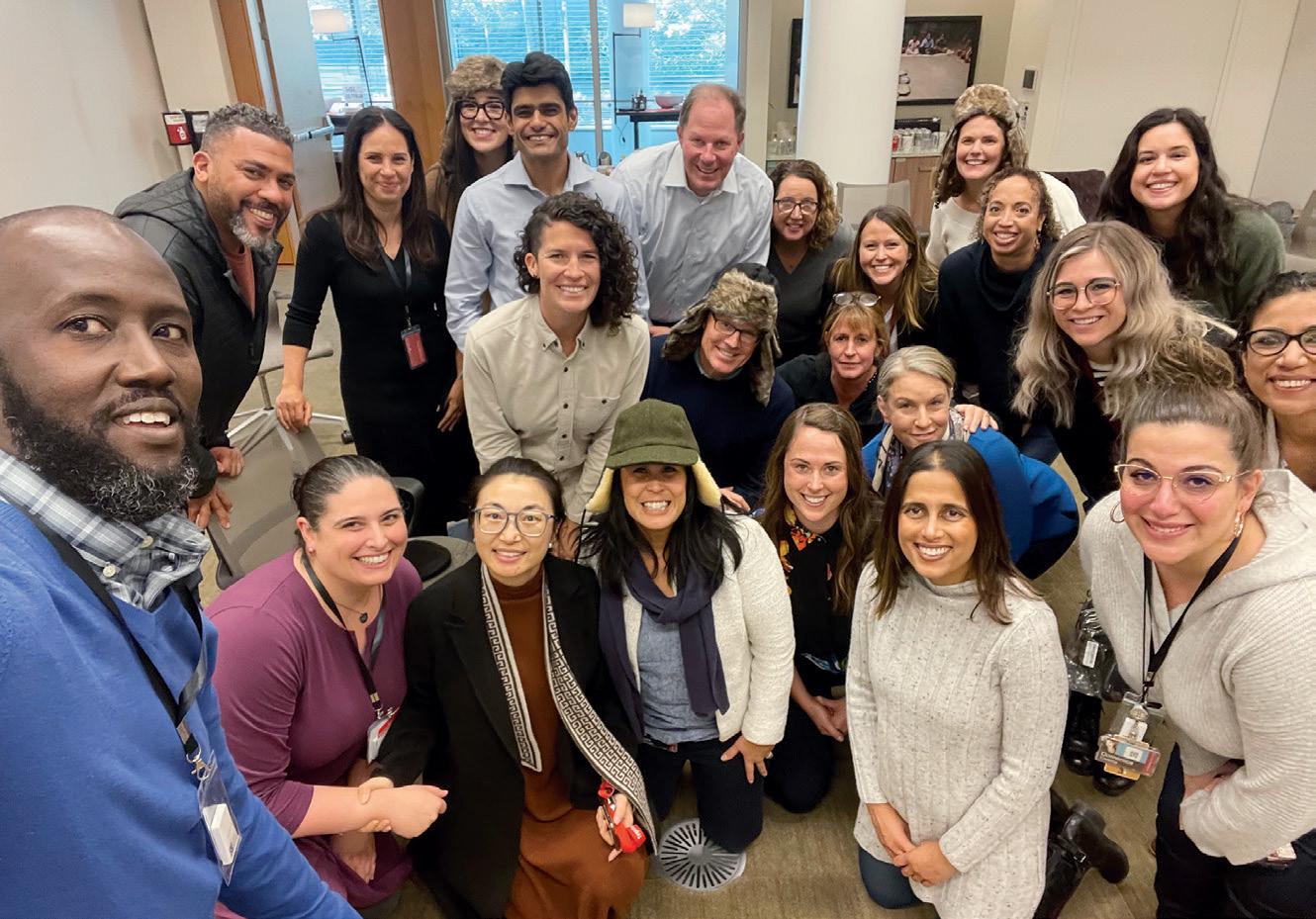
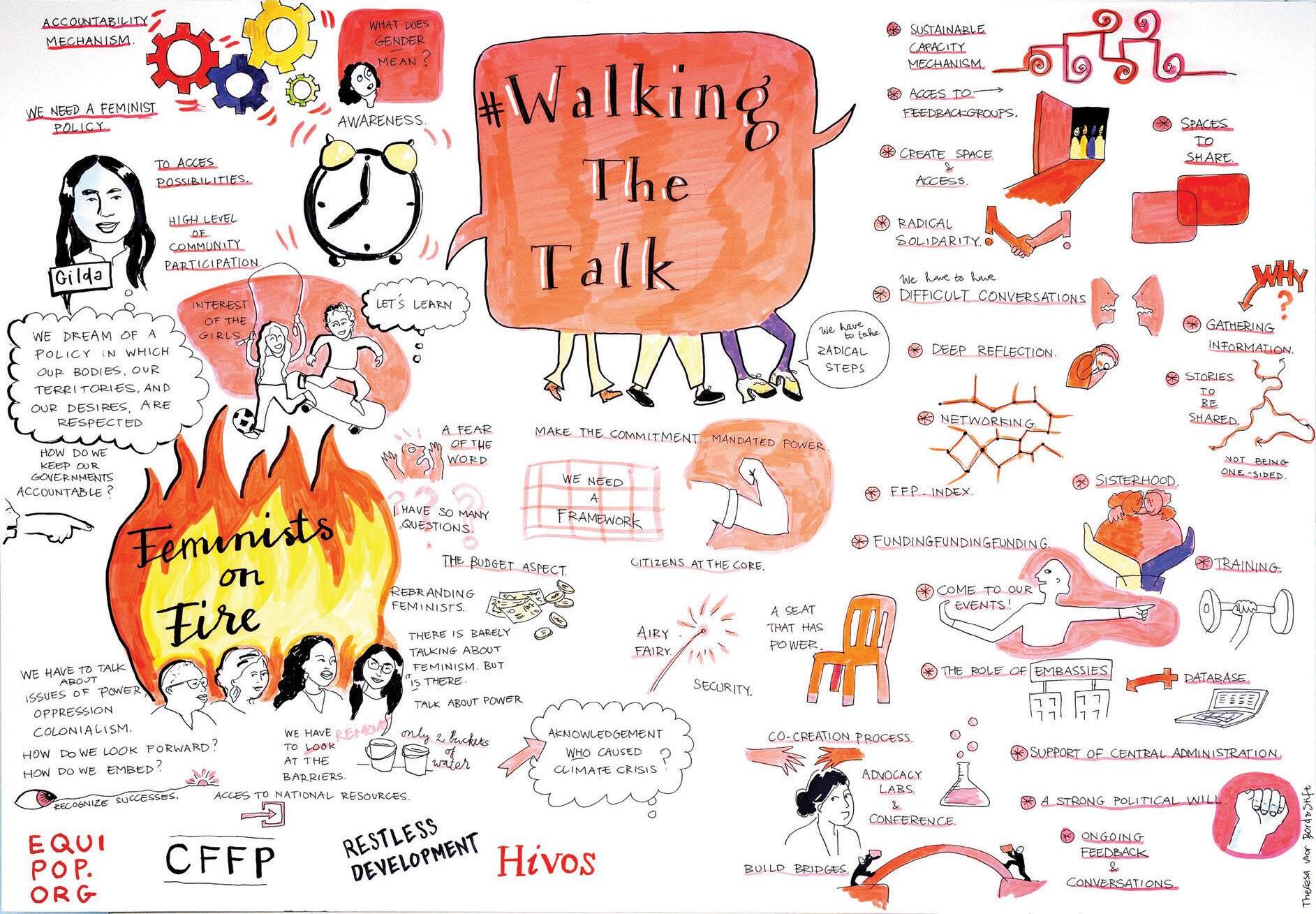
Walking the Talk in a visual – or what an ideal feminist foreign policy (FFP) may look like according to 70+ participants at an FFP Community Festival held in the Netherlands in October 2023. (image: Holland Park Media)
their own communities. To do that, the foundation seeks out grantee partners that build bridges – nonprofit partners, regional funds, feminist collectives that are best positioned to act as intermediaries. “Bridge-building reduces the likelihood of losing things in translation. It speeds up the ability to be able to connect. It reduces the likelihood of hurting while you’re trying to help,” says Jakana.
One grantee, Komboa, is an African regional collective of feminist funds whose name translates to “transform” in Arabic, “liberate” in Swahili, and “resist” in Creole. Komboa describes itself and its mission as follows: “Each institution in the collective exists to resource different communities within the dynamic and broad demographic of African women, girls, and gender-diverse peoples, with evidence-based and community-informed strategies that advance gender justice and center the experiences of their target communities. Our collective mission is to resource and strengthen feminist resistance, movements, and collectives across Africa, enabling them to advance gender justice and be inclusive, and resilient to the attacks from anti-rights movements.”
Another grantee, Walking the Talk, is a European consortium of organizations advocating the full potential of feminist foreign policy. Like Komboa, Walking the Talk is a regional collective responding to the global backlash against
women’s rights. ey’ve united to unlock “a feminist foreign policy that places gender equality and the rights of women, LGBTIQ+ people, and other marginalized groups at the heart of all areas of foreign policy – be it trade, diplomacy, global health, climate justice, or security. From the four Rs –Rights, Representation, Resources, Reality Check – Walking the Talk focuses on getting more Resources into the hands of feminist movements in the Global South.”
e Gates Foundation’s pledge to “spend it all down” will have a tremendous, enduring impact across philanthropy. But their efforts to inspire billions to intersectional feminist collaboratives enabling grassroots activists to make continental-scale systemic change will likely have a global transformative impact driving progress for women and girls around the world.
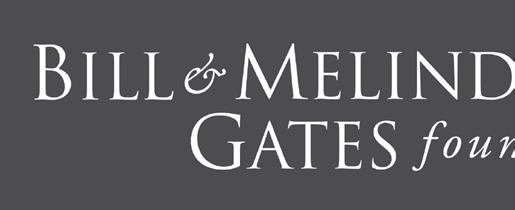






Jeannie Infante Sager, director of the Women’s Philanthropy Institute (WPI) situated within the Indiana University Lilly Family School of Philanthropy, brings a unique perspective as a seasoned frontline fundraiser and nonprofit leader. “What drew me to the institute was this entrepreneurial approach to improving behaviors in the (philanthropic) field and growing women’s philanthropy in a much more focused and intentional way,” says Sager.
WPI, founded in 1991 as the National Network of Women as Philanthropists, conducts, curates, and disseminates in-depth research so that women’s philanthropy, and philanthropy dedicated to uplifting women and girls, can grow.
WPI is part of the acclaimed Lilly Family School of Philanthropy, the world’s first school dedicated solely to the study and teaching of philanthropy. e Lilly Family School of Philanthropy is a treasure trove of philanthropic resources, research, and learning opportunities for those interested in pursuing a career in philanthropy.
A Global Hub for Harnessing the Power of Women’s Philanthropy
Sager joined WPI in early 2020 amidst global health challenges. She immediately focused on enhancing WPI’s global standing as a hub for women’s philanthropy, study, and education. With an existing audience of fundraisers and wealth advisors, she aimed to expand the network of donors and women philanthropists, instilling confidence by showcasing their role in the research. Sager believes a philanthropist’s identity is reflected in how they give and express generosity.
“Where I hope the work of translational research impacts the practice is that more women continue to self-identify as philanthropists. And that they can confidently contribute new and expanded resources to and for the public good, and that they’re showing up in different ways,” says Sager.
While there is great enthusiasm surrounding the increased visibility of prominent women – such as MacKenzie Scott and Melinda French Gates – who openly express their philanthropic agency, to unlock the full potential of women’s philanthropy, WPI knows that we must understand how gender shapes giving. eir research seeks to answer why women give where they give.
Sager firmly believes the ongoing growth of women’s wealth will drive more philanthropy, an underpinning of WPI’s research. However, she expresses the importance of delving deeper into understanding how women make financial decisions, not just in their philanthropy but also in managing their other finances.
“Reports suggest that 90% of women say that they’re the chief financial officer of their households, so we want to continue to better understand why women seem more inclined than men to use their wealth for philanthropy,” says Sager.
She states that figures like French Gates stress that supporting women and girls translates to supporting communities and society, given that women often set goals considering both their families and the broader community.
W PI is the only academic institute committed to furthering understanding of gender and philanthropy through research, education, and data. WPI’s research can help fundraisers and donors understand context for giving and can provide evidence-based data to help both groups proceed with confidence.
Among their stellar research is their signature series, Women Give, a compilation
Philanthropic support for women’s and girls’ organizations totaled $8.8 billion in 2020, remaining less than 2% of overall charitable giving.
TOTAL CHARITABLE GIVING: $486.3 B $8.8B 2020 1.8%

“ Where I hope the work of translational research impacts the practice is that more women continue to self-identify as philanthropists. And that they can confi dently contribute new and expanded resources to and for the public good, and that they’re showing up in different ways.”– Jeannie Infante Sager
of yearly research reports that highlight vital factors that shape gender-based giving (such as age, religion, and income) to help to encourage transformative philanthropy.
Sager believes that WPI’s research has the potential to uplift, amplify, and inspire more women to fully embrace and step into these influential roles.
Another WPI flagship research project is the Women & Girls Index (WGI), which provides the only comprehensive data on organizations dedicated to women and girls and tracks the philanthropic support they receive. U.S. nonprofits focused on advancing these causes received $8.8
EquitableGivingLab.org/WGI #GiveToWomenAndGirls
billion in philanthropic support in 2020. is amount constitutes just 1.81% of the total charitable giving landscape.
“What the fifth annual Women & Girls Index says about the current state of funding for women and girls is that there is huge room to grow,” says Sager. “We now have a benchmark to work towards. anks to the WGI, we’ve defined what a women’s and girls’ serving organization is here in the United States, which wasn’t defined before. We could put some parameters around this question about giving to women and girls and then create a data point around it. It has resonated for the sector that these women’s and girls’ organizations were excited to be recognized as such, to know that they’re part of this index, and to be able to use that data point as a call to action for support.”
Sager underscores the significance of the less than 2% figure for organizations ranging from well-known entities like Women Moving Millions to smaller grassroots organizations serving local communities. is figure has been instrumental in generating momentum for charitable contributions. However, she acknowledges that the sector has grappled with the stagnation of the percentage, as there hasn’t been any notable movement beyond the less than 2% threshold since WPI began tracking it.
Sager stresses that WPI works to translate research into practice. Given its location at a large state-sponsored research institution, WPI turns to its strategic partners and creative initiatives to advocate for increased philanthropy towards women and girls.
Sager also highlights a rising concern over heightened politicization of women’s issues. She reflects on her onetime mentor’s perspective, who framed it as part of the “moral imagination,” where philanthropy navigates a crossroads between diverse agendas. She acknowledges that both organizations that uplift women, like the Ms.





Foundation for Women, and extremist groups that target women operate within their own “moral imagination.”
“We want to do research that shares answers to questions based on the facts and without preconceived agendas. Wherever those answers end up, we also know that we have a responsibility to give voice to these organizations that are doing well and to women donors who want to be more outspoken,” Sager says.
Sager acknowledges a unique gap in dedicated giving communities for women and girls, unlike initiatives supporting causes like climate or animal welfare. To that end, WPI’s creation of Give to Women and Girls Day, supported by anchor partners like Pivotal Ventures, Women Moving Millions, and the National Women’s Hall of Fame, has been impactful. Aligned with the International Day of the Girl on October 11, it exemplifies a collaborative journey, and has been well-received but still has room for growth. Sager emphasizes the promotion of Give to Women and Girls Day through a gender lens, advocating for an abundance mindset.
“[Let’s] grow and not worry about the fact that the pie is somehow only going to be a certain size. Make a bigger pie! Give us a bigger slice! e more people who are talking about it, the better. And I think everybody understands that, and that’s why coalescing around Give to Women and Girls Day has been a really great collaboration,” she says.
Sager engages audiences in discussions about WPI’s research and finds it intriguing that, despite her familiarity with the data, many people approach her after presentations, having encountered the research for the first time.
“It’s important to support women and girls. We need to move the needle on this less than 2% [statistic] because other research indicates that by supporting women and girls and all the different intersections of causes they operate in, we’ll get more impact for our investment,” says Sager. “ e consequences of inaction in this field of work are there are less resources going to important missions. at’s the consequence.
“It is about changing donor behavior, and that’s hard. We must examine social norms and how we inspire people to operate differently and within their authenticity to allow them to live their values. Success for WPI continues to be more researchers looking at gender as a variable and an important concept in philanthropy and giving.”
Please contact us to learn more about:
Jacqueline Ackerman Interim DirectorPost O ce Box 6460 Indianapolis, IN 46206
Tax ID# 35-6018940
(*Indicate Women’s Philanthropy Institute as direction for gift)



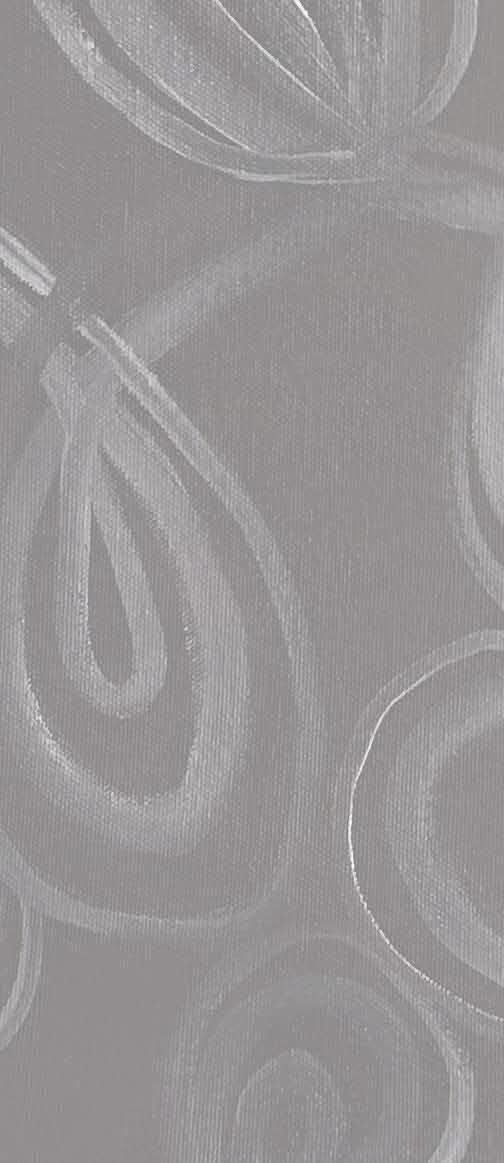

We had just finished distributing the first edition of e Giving List – Bay Area when I received a call from Stacey Keare, a Silicon Valley philanthropist and Board Chair of Women Moving Millions (WMM).
“I love e Giving List book; my family uses it for our giving,” Keare began. en came the question that would change the trajectory of my life’s work and that of our company. “Would you ever consider doing a Giving List Women?” Keare posited.
And so began my years-long journey into understanding how profoundly underfunded nonprofit organizations are that primarily focus on women and girls.
More importantly, as I talked with Women Moving Millions, whose mission is to catalyze unprecedented resources for a gender-equal world, I began to understand that the irony of the perpetual underfunding of women and girls is that women and girls are widely understood to be the most powerful lever for the very impact most philanthropists and donors seek to bring about.
“Investing in women and girls is the smartest social change strategy. If you care about impact, why are you not investing
in the
most effective and proven and researched way to accelerate change? When you invest in women, everybody benefits.”
Women Moving Millions inspired me to think more deeply about how we can support donors at every level to understand the importance of treating women and girls as a lens, and not a lane, in philanthropy. I became motivated to consider what it would take to drive billions of donor dollars to organizations that focus primarily on this demographic.
And so e Giving List Women was born. We are grateful to WMM for joining us as our first partner in this exciting new venture.
“Women have the unique combination of skill sets that the world presently needs,” says Sarah Haacke Byrd, CEO of WMM, a vibrant, dynamic network of nearly 400 female philanthropists committed to building a gender-equal world.
In its 15 years, WMM has catalyzed an impressive $1 billion in funding from its members specifically benefiting organizations and initiatives that empower women, girls, and gender-expansive people. Now the organization is committed to unlocking the next $1 billion at an accelerated pace.
WMM sees itself as a convener, educator, and resource advocate, uniting changemakers around a shared cause while also building their capacity for greater impact and pushing forward the broader movement for women’s rights.
“Members join Women Moving Millions because they want to be part of a supportive peer network with other philanthropists who care deeply about improving the lives of women and girls,” Haacke Byrd explains. “ ey also seek out this com-
munity to enhance their own philanthropic education.”
Mona Sinha, former WMM Board Chair and current Global Executive Director of Equality Now, agrees. “My community at Women Moving Millions both challenges me to be better and brings me so much joy,” says Sinha. “It is understanding the power that each one of us has, what we can do together, and how we can meet the urgency of our times. e support and closeness that the WMM community offers is a wonderful model to share with other communities and spaces that I engage with.” e organization champions core values of trust-based philanthropy, encouraging members to take bold risks and move major resources while giving grantees more flexibility. is contrasts starkly with the wider landscape, where less than 2% of all U.S. philanthropic dollars goes specifically towards organizations empowering women and girls.
A critical message WMM pushes is just how strategically smart – and profoundly ethical – it is to invest in women-focused programs. “Investing in women and girls is the smartest social change strategy. If you care about impact, why are you not investing in the most effective and proven and researched way to accelerate change? When you invest in women, everybody benefits. From strengthening public health to reducing poverty, research clearly shows lifting up women creates a halo effect benefiting families and communities more broadly,” says Haacke Byrd.
WMM spotlights members’ stories to inspire others to join the movement. Profiles of young inheritors like WMM members Elsa Soderberg and Vanessa Evans showcase how women are driving social change wherever they are in their own unique philanthropic journey. ese narratives also counter staid assumptions that female philanthropists are inherently more risk averse. “Women are truly leading a new approach to giving, using their voice and influence, embracing bold collaborations, and taking risks in their giving all the time,” says Haacke Byrd.
By positioning members as forward-thinking leaders in this space, WMM focuses on building the confidence of its members to dream even bigger. is capacity building connects to the enormous intergenerational wealth transfer currently underway, with women set to inherit over $30 trillion in the next decade. Haacke Byrd wants to leverage this milestone to make women’s giving even more visible and accessible and by supporting women to step into their leadership.
“I think that women inherently are more inclined to build consensus, collaborate, and ensure everyone has a seat at the table,” says Haacke Byrd. “Rather than making unilateral decisions, women tend to lead through compassion, respecting complexity, and elevating alternate standpoints.” ese inclusive leadership traits prove doubly important considering the escalating crises our society currently faces. “ e challenges before the world today are too complex for us to manage alone, or by a small group of men in some back room,” says Haacke Byrd. “It’s just

WMM Board Chair, Stacey Keare, participates in WMM’s Annual Member Day in May 2023. (Photo by Myleen Hollero Photography)
simply not possible to actually meet the moment and what’s being required of humanity.”
Instead, realizing change requires unlocking women’s collective leadership and influence across public, private, and social sectors. rough community building and capacity-expanding platforms like WMM, Haacke Byrd sees immense potential to advance gender equality through bold, trust-based philanthropy. True to its name, Women Moving Millions seeks to exponentially accelerate resources benefiting women and girls worldwide by catalyzing women’s innate power to transform lives.
According to Keare, WMM is only starting its journey to positively impact the rights of girls and women in this country and across the world. “Women and girls are beginning to make a huge imprint on the vision of a better world,” says Keare. “ e goal is no longer fitting into a man’s world but creating one that will be better for everyone. A world in which we protect the Earth, include everyone, create new forms of leadership, and work together to make life better and fairer for us all.”
Please contact us to explore membership opportunities:
Amanda Gri n Director of Community Engagement agri n@womenmovingmillions.orgWomen Moving Millions
New York, NY
TaxID# 45-2576859
womenmovingmillions.org
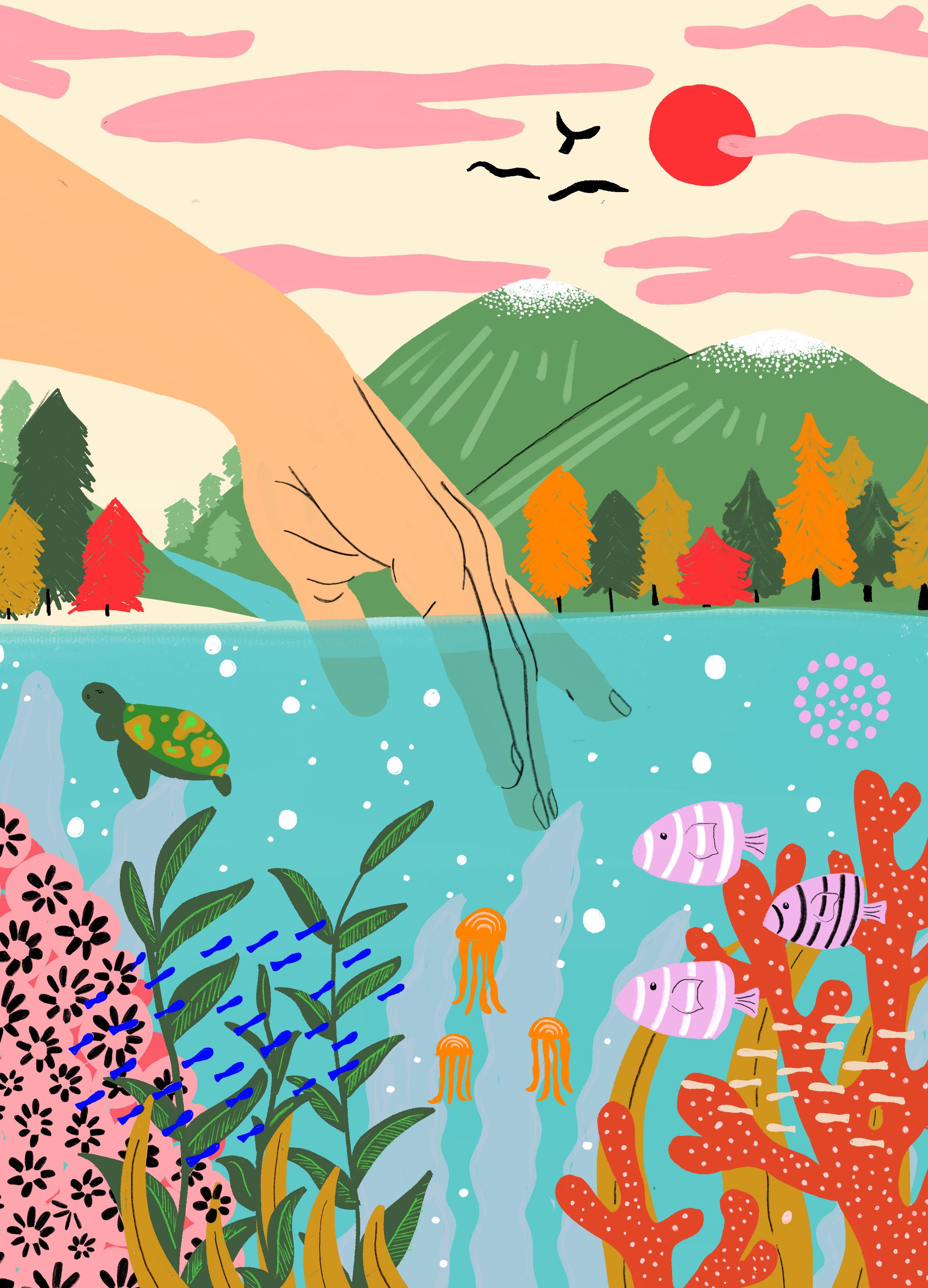
As temperatures rise around the world, one thing is clear: Women are paying an outsized price. The United Nations estimates that 80% of those displaced by climate change are women. Women are likelier victims of natural disasters, and pregnant women and babies are especially vulnerable to climate change. Black, brown, and Indigenous women, as well as women in the Global South, bear an even heavier burden due to systemic inequities wrought by centuries of racism and colonialism.
But there’s another side to this story: The same forces that make women more vulnerable uniquely equip them to lead solutions. In the Global South, women collect two-thirds of water supplies and are responsible for up to 80% of food production. As they are on the front lines of water and food scarcity, disaster recovery, and biodiversity loss, women are well-positioned to identify root causes and dream up solutions. Through the process, research shows that they’re core agents for peacemaking and likelier to work to improve their entire community.
Women in higher-income countries are better advocates for the environment, too. One study found that, in Organization for Economic Co-operation and Development countries, women, who make over 80% of consumer purchasing decisions, are more likely to recycle, buy eco-friendly products, and focus on lifestyle changes to combat climate change. A 2021 survey of European Union citizens revealed that women are slightly more concerned about –and likely to have taken action against – climate change than men.
At the highest level, women leaders make more climate-forward decisions. A 2005 study indicated that countries with more female representation in their parliaments are more likely to ratify international environmental treaties. Research in 2019 suggests that the election of more women to parliaments can lead to countries adopting more rig-
orous climate policies and lowering carbon dioxide emissions.
If global disempowerment of women has been bad for the Earth, the era of climate change is also an opportunity to rethink the systems that got us here. From fossil fuel reliance, to wasteful or crumbling water infrastructure, to an unsustainable and inequitable global food supply, it’s clear that the status quo is failing. As we leave behind extractive systems of the past, we have an opportunity to do away with the gender inequities they perpetuate and build a more just future.
Despite the evidence in favor of investing in women, less than 2% of environmental funding goes to women-led projects. At the highest level of climate leadership, women decision-makers are still underrepresented: In 2023, only 15 of the 133 world leaders at the 28th United Nations Climate Change Conference (COP28) were women. In 2024, COP29 host Azerbaijan announced an allmale 28-member conference organizing committee. (After criticism, the government included 12 women.)
The challenges of climate change can feel overwhelming, and it’s tempting to feel hopeless. But women on the front lines of the planet’s most drastic changes – who are responsible for the well-being of the most vulnerable and often for entire communities – don’t have the choice of despair.
And women around the world are acting. They are rewilding forests, feeding their communities, and protecting wildlife. They are rebuilding after cyclones, constructing seawalls, and educating their communities on reproductive health and biodiversity. These women, and their allies, are leading the transition out of an era of extraction and exploitation, and dreaming up new systems of support, regeneration, and care.
These are some of the women – and the organizations supporting them – who are taking on the responsibility of hope with courage and ingenuity.
Pat Mitchell is a pioneering figure in the media industry, a dedicated advocate for women’s rights, and a firm believer that gender justice and environmental health go hand in hand.
As the first woman president of PBS and CNN Productions, Mitchell oversaw the production of documentaries and series that received 37 Emmy Awards, five Peabody Awards, and two Academy Award nominations. Her Emmy-winning TV talk show Woman to Woman was the first national program produced and hosted by a woman, and she personally received a Primetime Emmy Award in 1996 for Survivors of the Holocaust on TBS.
Mitchell is chair emerita of the Women’s Media Center; chaired the board of the Sundance Institute; and, in partnership with TED, launched TEDWomen in 2010. She continues to serve as TEDWomen’s editorial director, curator, and host. Among many honors, she has received the WICT Network Woman of the Year Award and the CINE Golden Eagle for Lifetime Achievement.
Mitchell’s impact has become increasingly global, as she continues to connect the stories and leadership potential of women around the world through projects like V-Day, a movement to end violence against women and girls; the WOW – Women of the World Festival in London; and the Connected Women Leaders initiative, which brings together women leaders in government and civil society. Among the initiative’s key ventures is Project Dandelion, a women-led global climate justice campaign.
Mitchell is the author of the 2019 memoir Becoming a Dangerous Woman: Embracing Risk to Change the World.
Giving List Women: You served as the [president and] CEO of PBS and of the Paley Center for Media when few women held such positions. Did that inform your choice to spend much of your life working to support women and girls?
Pat Mitchell: Growing up in the rural South, the expectations for girls were severely limited. I was almost
always the first or only, as was any girl or woman who wished to break through those boundaries and expectations. That never felt right, and always [felt] lonely. So, the first commitment I made internally without recognizing it was to bring other women into those spaces with whatever influence I had.
Creating opportunities for women to tell their own stories and ideas was embedded in my work. That’s not altruism. That was the feeling that if I have this power or influence, I must use it to create another opportunity for another woman or elevate her accomplishments. And then moving from being a journalist to being an executive who got to hire people and make decisions about programming, I felt that as a woman of privilege and good fortune, it was my responsibility to bring more along.
GLW: Were you leading differently than the men with whom you were working?
PM: Absolutely. I believe all women do if they allow themselves to be in touch with their full selves. Women and men bring different skills to leadership. But often women leave them behind as they attempt to succeed on the same terms as the men they replace or who hire them. But if we don’t bring different skills and interests to the table, then the argument for having more equal leadership falls away. It’s the differences that make it imperative to have both women and men in leadership positions for the best, most balanced use of power.
If you look at transformative women leaders, they bring their full intuition, capacity, and interest in collaboration – their ability to build consensus. We come to positions with experiences that are part of being a woman. Part of being a mother, a wife, a partner.
GLW: Why did you decide there needed to be a TEDWomen?
PM: As a TED audience member for years, watching mostly man after man go on that stage and give a TED
Talk about an idea, there were very few women. So, I asked [TED Curator] Chris Anderson, “How can you not be interested in the ideas of half of the world’s population?” He said, “I’d love to, but I can’t find them.” Well, that’s all you have to say to somebody who spends her life connecting women. I said, “I can find them.” And he said, “I’m looking for a rocket scientist for the next TED.” I found him 10 women without breaking a sweat – five of them women of color. So, I said, “Why don’t we try and create a TED platform featuring women giving TED Talks, and we’ll invite men, too?” We thought the first one would be the last. Then 1,700 people showed up on the coldest day of the year in D.C.
“If you look at transformative women leaders, they bring their full intuition, capacity, and interest in collaboration – their ability to build consensus. We come to positions with experiences that are part of being a woman. Part of being a mother, a wife, a partner.”
GLW: Women are not monolithic. But can our life experiences bring important leadership assets like collaboration and respectful discourse?
PM: You’ve just described the rules for our convenings with the Connected Women Leaders forums. We often have different political views. We certainly have different priorities and commitments. But in this room, we can collectively problem-solve, we can find consensus, we can lead. And out of that has come astonishing innovations including Project Dandelion, which grew out of a group of climate leaders and non-climate leaders saying this competition for resources is keeping the work siloed. We needed connective tissue over the silos to connect the women to each other in positive ways. And that’s been our work for the last 18 months – connecting frontline women leaders, across every sector of social justice issues, intersectional with the climate and nature crisis.
GLW: Project Dandelion is a good example of applying a female lens to a critical issue.
PM: When [former President of Ireland] Mary Robinson first came to me and said, “We have to make climate the key work of the Connected Women Leaders,” I said, “But gender equality must remain our top gender justice issue.” “Gender justice is climate justice, as is racial justice and digital rights justice,” she said. Getting
out of that siloed mindset is why we decided to start a movement rather than another organization, which could be seen competitively.
We started realizing how little people knew about the disproportionate negative impact of the climate crisis on women and girls. Education is disrupted, more girls are married off, reproductive health is seriously threatened. Eighty-four percent of those who’ve died from climate-related disasters are women and girls.
We have over 800 climate organization partners, and we elevate their work and tell their stories. Our message is, climate is everyone’s issue, just as gender is everyone’s lens on how we spend our money.
GLW: Would you say that Project Dandelion is one of the most impactful efforts of which you’ve been a part?
PM: I would say if we don’t get this one right, we won’t have a habitable planet. It’s the most important work that anyone can be involved in because we are at that crossroads where if we go this way, we’re looking at a catastrophic future. And if we go this way, we’re on the cusp of getting it right. And from what I’ve witnessed, we’re going to get it right if women are in leading positions. Because women are the ones carrying the innovations forward at the front lines. And when they’re in positions of influence, the evidence is clear that they have better environmental policies and certainly better gender and family-focused policies. That’s the premise of Project Dandelion. It’s integrated, intersectional work that speaks to a more just, peaceful, and prosperous world where men and women share power.




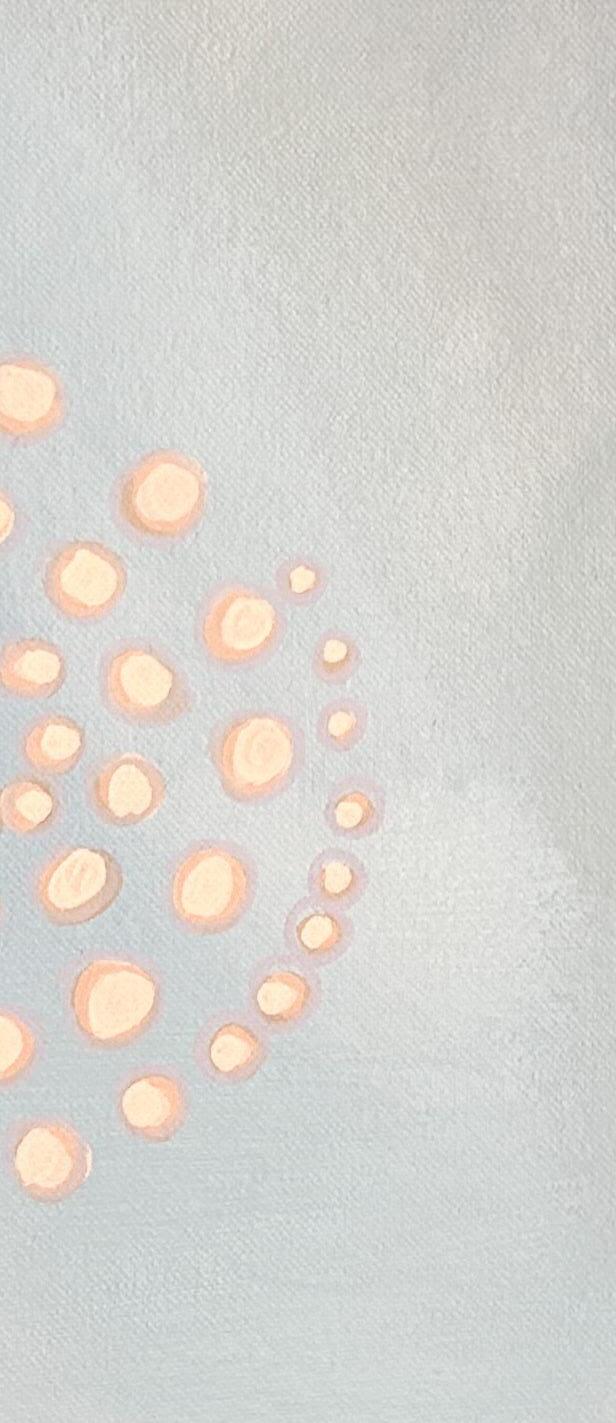

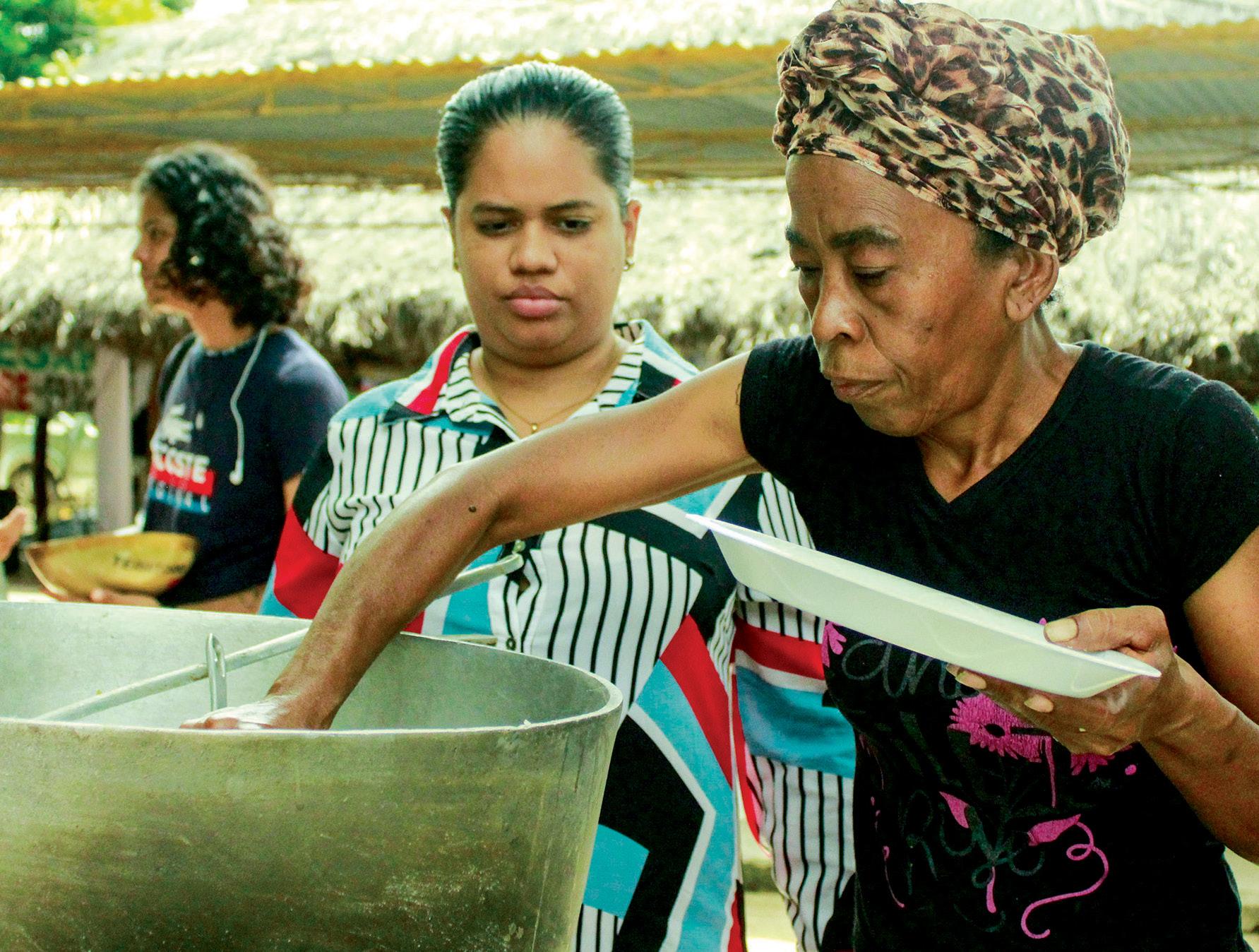
The water was rising: On the western coast of Bangladesh in the early 2000s, communities deep in the Sundarbans mangrove forest began tasting salt in their drinking water and watching their elds ood and crops choke and die. It was a crisis coming to coasts around the globe: the steady creep of sea level rise.
In the Global North, the crisis didn’t go unnoticed. Year after year, major investors were pouring millions of dollars into the construction of seawalls around the villages. And year after year, as storm surges increased, those seawalls were crumbling.
But locals knew that their villages once had a natural defense: the mangroves. is once-dense barrier, diminished by decades of logging and development, had shielded their communities from the sea for generations. In the early 2010s, one group of women began their own movement to restore it – mobilizing their community to plant and protect the trees. As the forest came back, slowly but surely, it began to slow the ooding.
“It’s an example of how top-down approaches fail to closely observe what’s happening,” says Laura García, president and CEO of Global Greengrants Fund. “ ese communities live there, experience the problem, and understand why those multimillion-dollar initiatives do not work.”
Today, Sundarbans reforestation is one of thousands of projects supported by Global Greengrants Fund, which connects philanthropic dollars to grassroots organizations ghting for human rights and environmental justice around the world.
Before 1993, when Global Greengrants Fund was founded, there would have been virtually no way for philanthropy in the Global North to nd, let alone sup-
“ We need to take a transformative approach. To tap into the feminist theories of economic sustainability and equality that are countering the systems of oppression that generated the climate crisis in the fi rst place.”
port, the communities in the Sundarbans. Paradoxically, the highest-impact, lowest-investment work seemed the most di cult to support.
“ ere’s a huge gap between resources needed by hundreds of thousands of small-scale organizations and the large amounts of funding sitting in the Global North given through traditional large-scale investments,” García says.
Global Greengrants Fund works to close this gap.
eir “people and planet” approach acknowledges that those living on and caring for the land are best equipped to identify and create ways to protect it.
Across Africa, the Arctic, Asia, Latin America, the Middle East, and the Paci c Islands, they are supporting more than 1,300 grassroots environmental organizations annually in areas from youth, disability rights to gender justice, organizations that would likely previously never have otherwise found support.
“Global Greengrants Fund was born out of the great opportunity to democratize the funding from the philanthropic sector to be able to advance environmental justice globally,” García says.
Grassroots Movements Take the Lead
How does a global fund nd organizations that are, by de nition, hyperlocal and movement-based? By working from the grassroots up. For three decades, Global Greengrants Fund has steadily grown their network of more than 215 advisors who are deeply connected to local communities and environmental justice causes around the world. Advisors bring their nominations to one of 30 regional or thematic advisory boards that connect these groups to the funding.
“ e decentralized grantmaking decision system is unique in the philanthropic space,” García says. “It’s about participation and treating grantees as true partners.”
Another core aspect of these grants is their exibility. By leaving the terms of the agreement more open ended, Global Greengrants Fund puts trust in the community to confront and be exible to new challenges as they arise.
Flexible funding also allows for unconventional ap-
proaches. As an example, Global Greengrants Fund’s Latin American advisory board recently observed a pivot taken by a group of Indigenous women grantees organizing their communities to oppose mine approvals. During the pandemic, as a food security crisis emerged, these women began using their funds to set up community kitchens. After the worst of the pandemic was over, they had built up so much credibility in their communities that they saw a surge in meeting attendance and newfound support from initially skeptical male leaders.
Building a new philanthropy model requires confronting both new and age-old systemic challenges like gender injustice. Global Greengrants Fund recognizes that climate change disproportionately a ects women, who receive only a minuscule fraction of climate investment. Since 2014, they’ve rapidly increased their grantmaking to projects that address the gendered e ects of climate change. Today they are one of the world’s top public foundations supporting gender-just environmental initiatives, which comprise over 50% of their grants. “We need to take a transformative approach,” García says. “To tap into the feminist theories of economic sustainability and equality that are countering the systems of oppression that generated the climate crisis in the rst place.”
Global Greengrants Fund was built for this work. To nd those in need who are working towards a new vision for their world and connect them directly with those who can support it. ey are extending their advisory board grantmaking model to underfunded areas like Central Asia, and launching thematic boards for Indigenous Peoples’ rights, plastics, and zero waste among others. But at the center of all of their work is gender.
García says, “We cannot really expect to tap into that magic of imagining equality and justice if we don’t fund those who have been ghting for it for a very long time: women.”
Please contact us to learn more about Global Greengrants Fund:
Kézha Hatier-Riess Vice President of External Relations kezha@greengrants.orgwww.greengrants.org
Global Greengrants Fund LLC Tax ID# 84-1612422
What part can I play in the climate ght?
To answer this question, the late Kenyan environmentalist Wangari Maathai, who won the 2004 Nobel Peace Prize, told the parable of the hummingbird: As a wild re tears through a forest, all of the animals stand frozen, immobilized by fear. All except the hummingbird, which ies to the river, lls its beak with water, and drops it on the re. e other animals ridicule it as it zips back and forth, ghting the re one droplet at a time. e tiny bird looks at each of them and says, “I am doing the best I can – are you?”
For Zainab Salbi, co-founder of Daughters for Earth, the hummingbird story is key to her organization’s mission: to elevate women around the world who are proving that no e ort is too small.
“With everything going on in the world, every day can become fear oriented,” Salbi says. “ e Hummingbird [story] is about shifting the focus and putting it on hope.”
Take Flávia Neves Maia, a Brazilian urban planner. And a Hummingbird. When Neves Maia moved to Barra Grande, a shing village threatened by both climate change and tropical deforestation, she joined a local women’s circle that took a personal approach to discussing climate action. Together, they devised a plan to regenerate local mangrove forests – and created a model to spread and scale community-led climate responses.
Funding is only the rst step. Step two: “We celebrate the heck out of them.” Neves Maia is now the hero of a colorful graphic novel. ese “Hummingbird Community” novels come out weekly, forming a series that shares stories of women like her.
Reframing the Narrative
I
n philanthropic giving, Salbi says she’s seen the bias against women-led, small-scale solutions rsthand. She says philanthropists often prefer to invest in expensive, high-tech solutions over small-scale, human ones.
“Other donors chase after the inventions, the ‘let’s extract carbon from the sky,’” she says. “We say, ‘Let’s get back down to Earth and see what people are doing to solve this.’”
And they’re gathering data to help show that investing in local, women-led solutions is not just the right thing to do – it will be essential to global climate-related goals.
In 2023, Daughters for Earth teamed up with Vital
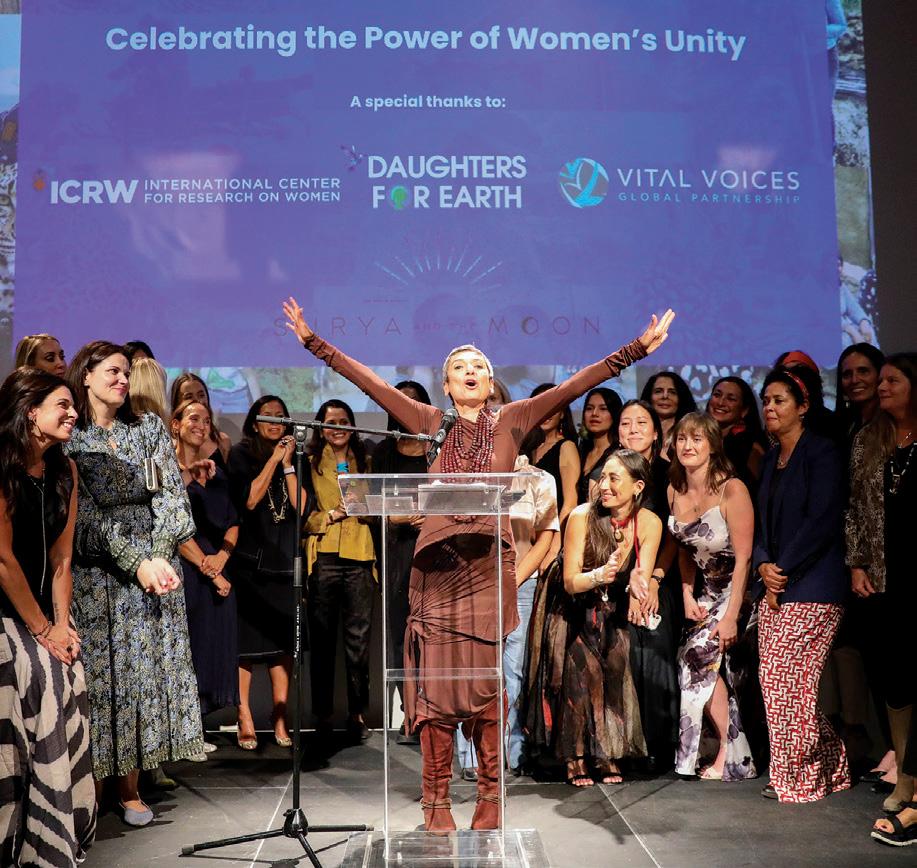
Voices to power Foreign Policy’s FP Analytics division report “Accelerating Nature-Based Solutions to Climate Change rough Women’s Leadership.” is report helped prove that both women-led and nature-based solutions remain under-prioritized and underfunded. Yet research shows that women act as multipliers leading nature-based solutions around the world. If used widely, nature-based solutions could provide roughly 30% of the cost-e ective mitigation necessary to keep warming below two degrees Celsius above pre-industrial levels by 2030.
“Women don’t need to be empowered. ey are in their power,” Salbi says. “What they need is to be reinforced, echoed, heard, supported, and celebrated.”
Today, Daughters for Earth has funded 103 women-led organizations in 37 countries, with plans to expand. Every Hummingbird and their story, Salbi hopes, will help mobilize women around the world.
Daughtersforearth.org
Casey Rogers Chief Mobilizing O cer (201) 308-3044
casey@daughtersforearth.org
Ways to Give...
By Check or DAF:
NEO Philanthropy, Inc. 1001 Avenue of the Americas 12th Floor
New York, NY 10018
Tax ID# 13-3191113
*NEO Philanthropy (Fiscal Sponsor of Daughters for Earth)
While Maanda Ngoitiko was growing up in her Maasai community in northern Tanzania, a blade of grass was the symbol of a woman’s place in society, growing quietly. If she had the privilege to attend a meeting, waiting for a man’s invitation would be her only opportunity to speak.
At five years old, Ngoitiko was one of only two girls her age selected to begin school. Later, with help from a local member of Parliament, she rejected a forced marriage and left her village to continue school.
“I was so scared, so lonely, and felt powerless,” she says. “But with education, I learned self-reliance and resourcefulness.”
A Crisis of Natural Resources
In 1995, Ngoitiko returned to her village, hoping to help the Maasai women and girls enhance their voice, agency, and rights. What she found was a land crisis. e Maasai of Tanzania are one of the few Indigenous pastoral communities raising livestock on the country’s northern plains. With growing pressures on natural resources, including land, water, and forests, plus harsh droughts from climate change, life for pastoralists is hard. Additionally, women bear the brunt of feeding families and caring for children with dwindling resources and few opportunities to escape poverty.
Ngoitiko knew that women needed to be part of the solution. After all, she says, in this culture, it is women who know the land best, as they search for and collect water, food, and medicine. Ngoitiko helped organize a meeting of 500 local women. ey united with the mission of bringing education, economic opportunity, and property ownership to Maasai women – to empower new female leadership to save their pastoral way of life.
“As Maasai women, we focus on education because it helps us to become decision-makers, innovators, and to respond to the climate crisis,” Ngoitiko says.
Transforming from Within
Nearly 30 years later, that group, now the Pastoral Women’s Council, reaches and transforms the lives of over 20,000 Indigenous women annually. ey fund girls’ scholarships, enhance women’s rights and agency, change negative social norms, drill for clean water, support women’s economic empowerment, and women’s health and wellness.
Maasai women are now business owners and commu-

nity leaders and they negotiate with local and federal governments on issues ranging from sustainable water management to climate change adaptation.
Solidarity sits at the center of this work – and the Pastoral Women’s Council works hard to include men and boys to change traditional attitudes. “If women and men are collaborating, doesn’t that make for greater success and happiness?” Ngoitiko asks.
Y et the challenges for the Maasai continue to grow, from ongoing land rights challenges, to increased uncertainty and worsening droughts. e Pastoral Women’s Council seeks long-term strategic partners and to empower ever more highly motivated young women to stand up for their rights and make a lasting difference to their community.
Maasai women have come a long way from that single blade of grass, says Ngoitiko. “We have created a model of constant learning that will produce the leaders of the future. Together, we planted a tree. Now, it is bearing fruit.”
Women’s Council
pastoralwomenscouncil.org
Ruth Kihiu Head of Programs+255 767 237 470 pwctanzania@gmail.com
Friends of Pastoral Women’s Council P.O. Box 5406
Incline Village, NV 89450 Tax ID# 92-1204704
The image made headlines around the world: five Indigenous women in traditional regalia standing outside the imposing facade of a European bank. It was 2017, and the Indigenous Women’s Divestment Delegation had formulated because of the Dakota Access Pipeline protest at Standing Rock. Sitting at conference tables, these women faced down Norwegian, German, and Swiss bankers, and told stories of their fight to protect water and experiences of law enforcement abuse. Citing international human rights law, they made a straightforward request: Stop financing the destruction of their land.
“Women were able to look decision-makers directly in the eye and tell their stories of harm to their lives, bodies, and homelands,” says Osprey Orielle Lake, founder and executive director of Women’s Earth and Climate Action Network (WECAN), who co-coordinated these meetings with Divest Invest Protect leadership. Collective pressure worked: Hundreds of millions of dollars were divested from the project. Since its inception, WECAN has facilitated various types of delegations of frontline women worldwide to stop fossil fuel expansion and deforestation.
WECAN’s programs reach more than 50 countries, uniting women in the fight for social and climate justice. From reforestation projects in the Congo and Amazon rainforests to the protection of nine million acres of old-growth forest in Alaska, from fossil fuel divestment to United Nations climate policy advocacy, from Indigenous rights to food sovereignty projects, WECAN gets behind women on the frontlines tackling the root causes of environmental degradation and socioeconomic inequalities.
“We need to have Indigenous, Black, and Brown women, in the room, directly engaging with government leaders and financial institutions. Communities being impacted must be heard,” Lake says. “Simultaneously, while we are working to stop destructive projects, we need to be building the healthy and equitable world we know is possible.”
Women’s leadership can, quite literally, change the climate. So demonstrated the more than 1,000 women of the WECAN Women for Forests program in the Democratic Republic of Congo, who have planted

more than 300,000 trees in the Itombwe Rainforest. ere, women carry native saplings on their heads, strategically planting them to yield a 94.7% survival rate. ese carbon-sequestering trees have influenced the local climate, lowering temperatures and bringing rain to parched landscapes. e reforestation effort has also increased available habitat for gorillas, golden cats, and rare birds. And women responsible are emerging as newly respected leaders of their communities.
“Study after study demonstrates that investing in women and girls is a solution to the climate crisis and that we cannot achieve thriving communities without women’s leadership,” Lake says.
But WECAN faces a major challenge. Research shows that women and Indigenous peoples are key to protecting biodiversity and ensuring food security and water supplies. Yet philanthropic investors too often regard women-centered organizations as niche rather than essential to climate solutions.
“WECAN works to reframe and redirect the narrative on climate change to ensure that women’s successful work in the fields, forests, streets, universities, and halls of power are made central to the climate discussion,” Lake says. “We are never giving up. We are fighting for our communities and our beautiful planet.”
Women’s Earth and Climate Action Network wecaninternational.org
Wyolah Garden Secretary-Treasurer (415) 722-2083
wyolah@wecaninternational.org
By Check or DAF:
Women’s Earth and Climate Action Network
775 E. Blithedale Ave. #384 Mill Valley, CA 94941 Tax ID# 37-1702450
Acrumbling sea-worn headstone, half-submerged in dark sand: is is all that’s left of a burial site in Togoru, Fiji. It’s a haunting symbol of the devastating question this and many other communities must face: How do you preserve a people, a memory, and a culture displaced from their land?
Traditional disaster response isn’t built to answer these kinds of questions. In 2015 and 2016, two massive cyclones struck the Pacific Islands. Sharon Bhagwan Rolls, a second-generation Pacific Island feminist and technical advisor of the Pacific Island Feminist Alliance for Climate Justice (PIFA4CJ), housed within the Shifting the Power Coalition, recalls the aid and humanitarian response from the Global North in the wake of those cyclones: Top-down and male-led. e result? In Togoru, women received a surplus of water tanks, when what they really needed were rocks to build a seawall.
“For many reasons Pacific Island communities are underrepresented in decision-making processes. at includes women in local communities who have the traditional knowledge and recommendations,” Bhagwan Rolls says.
Founded in 2016, the Shifting the Power Coalition is now also the Secretariat of the Pacific Island Feminist Alliance for Climate Justice (PIFA4CJ) which further disrupts the traditional top-down, one-time-funding models of humanitarian aid. e purpose is to shift the power between “donor” and “recipient” for Pacific Island women to determine resourcing priorities.
“ is is feminist funding – not the traditional donor mentality of, ‘We’re going to hover over you,’” Bhagwan Rolls says. “It demonstrates trust and allows you to adapt.”
In the Pacific Islands, adaptability is essential as ever-increasing, ever-mighty cyclones are threatening homes, families, culture, and heritage. To the Pacific Island Feminist Alliance for Climate Justice, the climate crisis offers an opportunity to reimagine a more resilient response model to long-term, unpredictable change.
“Climate change is not a project,” Bhagwan Rolls says. “Within the climate justice agenda, you have so many intersectional issues: the impact on women’s health, loss and damage, cultural identity, and so much more.”

Interview with Frances Namoumou, MovementLed Committee
representative for Pacific Conference of Churches, for the PIFA4CJ short film, "Pacific Island Women Rising for Climate Justice." (photo by Carolyn Kitione)
2023 brought more cyclones. But that year, women were leading a more intersectional response. ey built seawalls, helped disabled women lead their communities’ need assessments and aid distributions, and young women brought each other reproductive health resources.
“Sure, you can still provide a water tank,” Bhagwan Rolls says. “But you also can have a conversation with one of our partners from the community, talking about how this affects women’s health, reproductive rights, future access to water, and climate change. at’s transformative.”
e era of climate change inevitably magnifies inequities. ough the Global North is responsible for 50% of greenhouse gas emissions, the reality of loss and damage and relocation is an issue now for Pacific Island communities, who are some of the lowest contributors to emissions globally. (Note: not everyone will be a refugee; most relocation plans start with a national or local option.)
“ e political conversations are a lot better now, rather than simply being about disaster, response, recovery, and the next stage,” Bhagwan Rolls says. “It’s really about feminist climate justice for Pacific Island women as we know it, as we live it, here.”
Pacific Island Feminist Alliance for Climate Justice facebook.com/PIFA4CJ
Alisia Evans Coordinator PIFA4CJ +679 7659978
alisia.evans@stpcoalitionpac.org
By Check or DAF: c/o Shifting the Power Coalition, Pacific Island Feminist Alliance for Climate Justice - Secretariat 7 Thurston Street Suva, Fiji Islands
The line of green-clad rangers step carefully through the dense foliage of a forest in Zimbabwe, rifles bouncing on their backs. e lead ranger raises two fingers in the air, and they all stop. In a clearing ahead, an elephant steps forward, tail swishing, unaware it’s being watched.
ese are the Akashinga, a Shona word meaning “the Brave Ones,” trained in and tasked with the protection of the biodiversity of their home forests. Since these rangers began their work in 2017, they have transformed the local model of anti-poaching enforcement. Wildlife encounters have increased by 400 percent, whereas in the 16 years prior to Akashinga’s involvement, Zimbabwe’s mid-Lower Zambezi Valley had previously lost 8,000 elephants (40 percent of the entire elephant population in the region). And elephant poaching in this region has decreased by a staggering 90 percent.
e difference? e rangers are all women.
“I see these animals as my children,” says Petronella Chigumbura, deputy ranger supervisor and one of the original 16 rangers who undertook this training. “I will do anything to protect them.”
Zimbabwe, where Akashinga got its start, is home to the world’s second-largest population of elephants, an endangered species threatened by worsening droughts. As populations decline, they become more valuable to poachers and the threat of illegal poaching there, and across Africa, can increase dramatically.
“T raining was extremely hard,” Chigumbura says.
“Up to that point, I had only been responsible for doing the dishes.” Akashinga approached her in 2017, when she was 29, recently divorced, a mother of two, and a survivor of domestic violence.
rough rigorous courses, she and the other women in the first group of 16 trained for days at a time out in the bush, where they learned to detect signs of wildlife and identify snares and illegal logging as they moved through the wild as protectors and friends. Chigumbura discovered both a love of animals and a knack for leadership. In 2018, she was promoted to the leadership role of Deputy. She, and most of her colleagues from the initial 16, are now ascending through the ranks and training hundreds of new rangers each year.
Conservation, Akashinga’s model shows, can build community. Everywhere they operate across the 9.1 million acres they are mandated to protect, Akashinga’s rangers commit to relationship building – working with local communities to find out their greatest needs. And then they work helping to address those needs. Akashinga has provided scholarship programs for education, drilled boreholes for clean water access, and they support local healthcare clinics that serve over 5,000 local citizens each month. ey have also created an ethos of conservation. Schools now have environmental education, conservation clubs, and community gardens where children learn to garden and plant trees. “We asked little girls what they want to be when they grow up, and they said they wanted to be Akashinga Rangers,” Chigumbura proudly says.
From the frontlines of Zimbabwe’s wilderness, Chigumbura and her colleagues have witnessed something extraordinary: “ e animals are coming back.”
But as the animals return, so do the poachers. With time come new, and growing, challenges: How do we adapt to worsening droughts? How do we train more rangers to mitigate these threats? And Zimbabwe is far from the only African nation with forests in desperate need of protection.
But Melody Westen, Akashinga’s executive director, notes, Akashinga can only grow as fast as their funding. And that will only come through spreading the message that protecting animals, conserving wilderness, and uplifting communities can all come together through a single force for good: women in conservation leadership roles.
Akashinga
tgl.akashinga.org
Andrea Enfield Development O cer (540) 316-0019
andrea.enfield@akashinga.org
Ways to Give...
By Check or DAF:
Akashinga 100 N 18th St, Suite 300 Philadelphia, PA 19103 Tax ID# 32-0408734
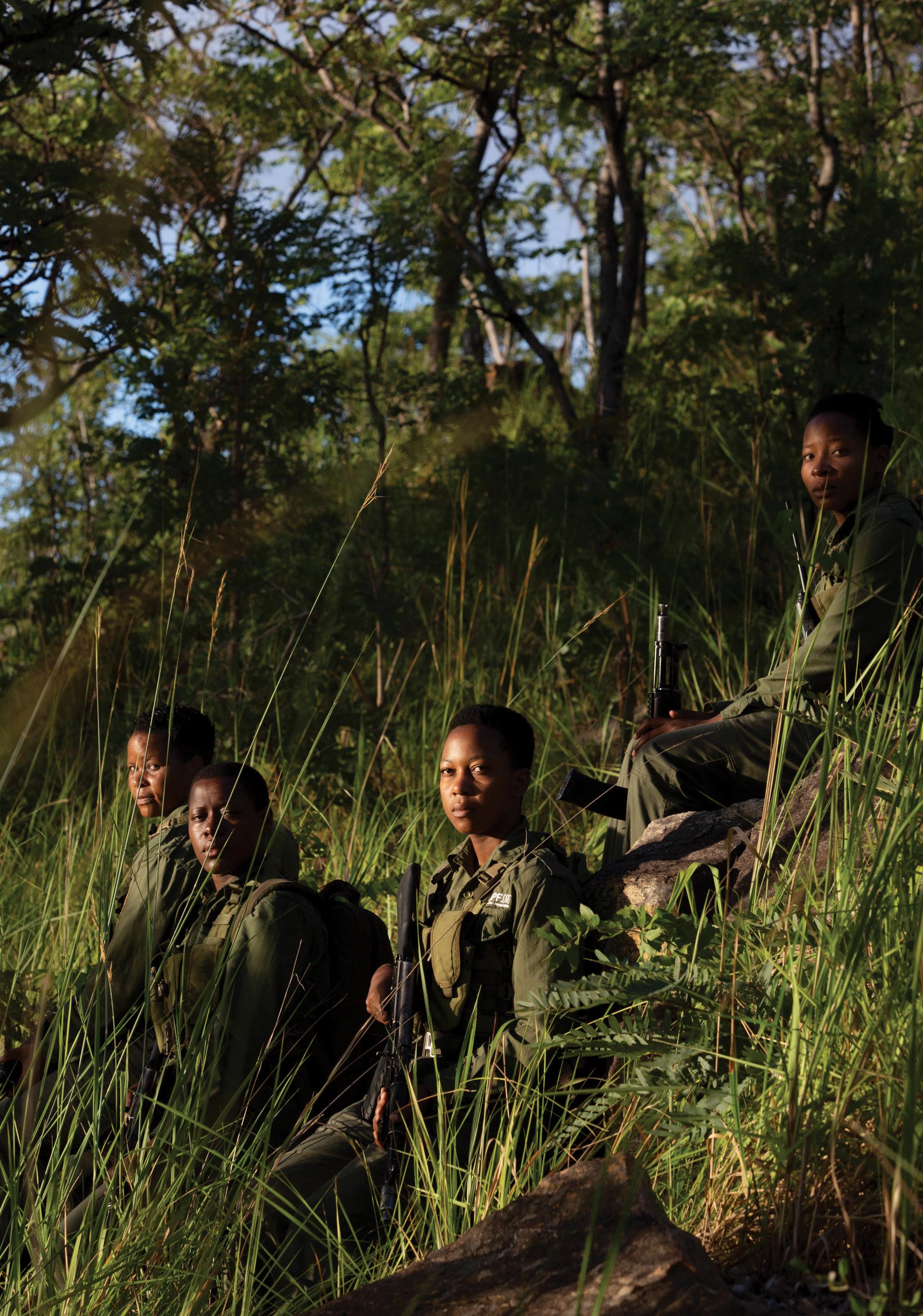
 Akashinga Sergeant Margaret Darawanda (right front) and Deputy Ranger Supervisor Petronella Chigumbura (left front) lead an Akashinga Ranger unit during a patrol in the bush at Phundundu, near Nyamakate, Zimbabwe. (photo credit: Davina Jogi)
Akashinga Sergeant Margaret Darawanda (right front) and Deputy Ranger Supervisor Petronella Chigumbura (left front) lead an Akashinga Ranger unit during a patrol in the bush at Phundundu, near Nyamakate, Zimbabwe. (photo credit: Davina Jogi)




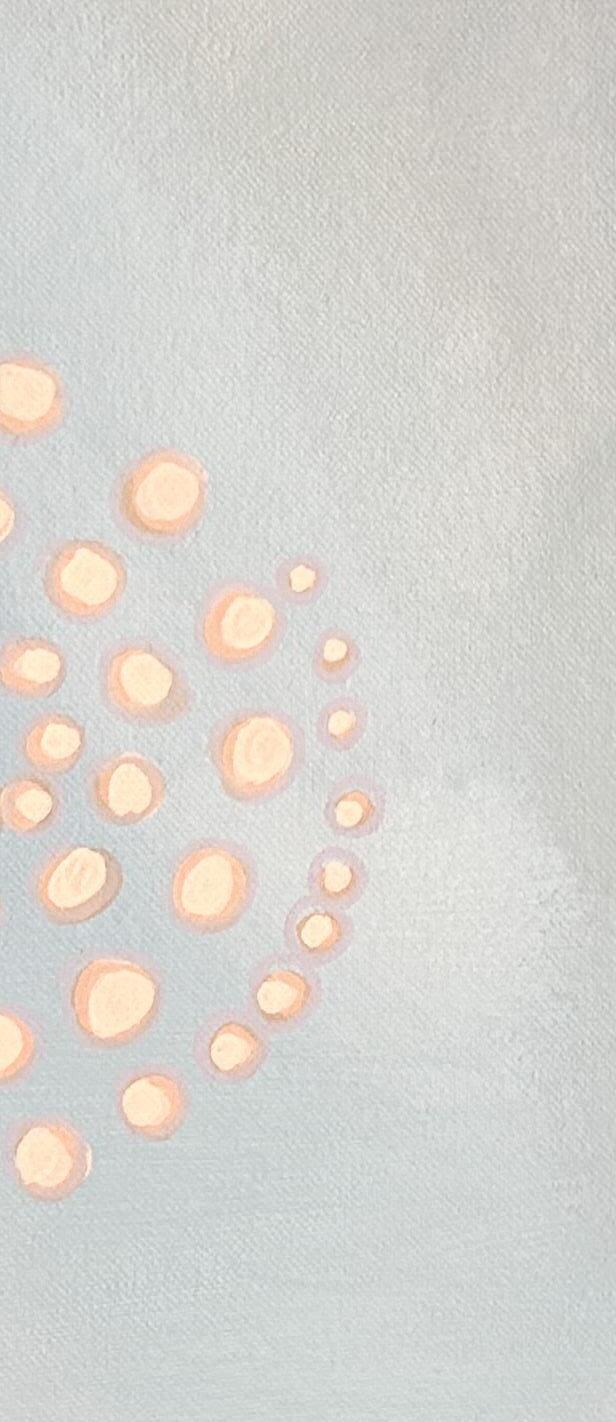

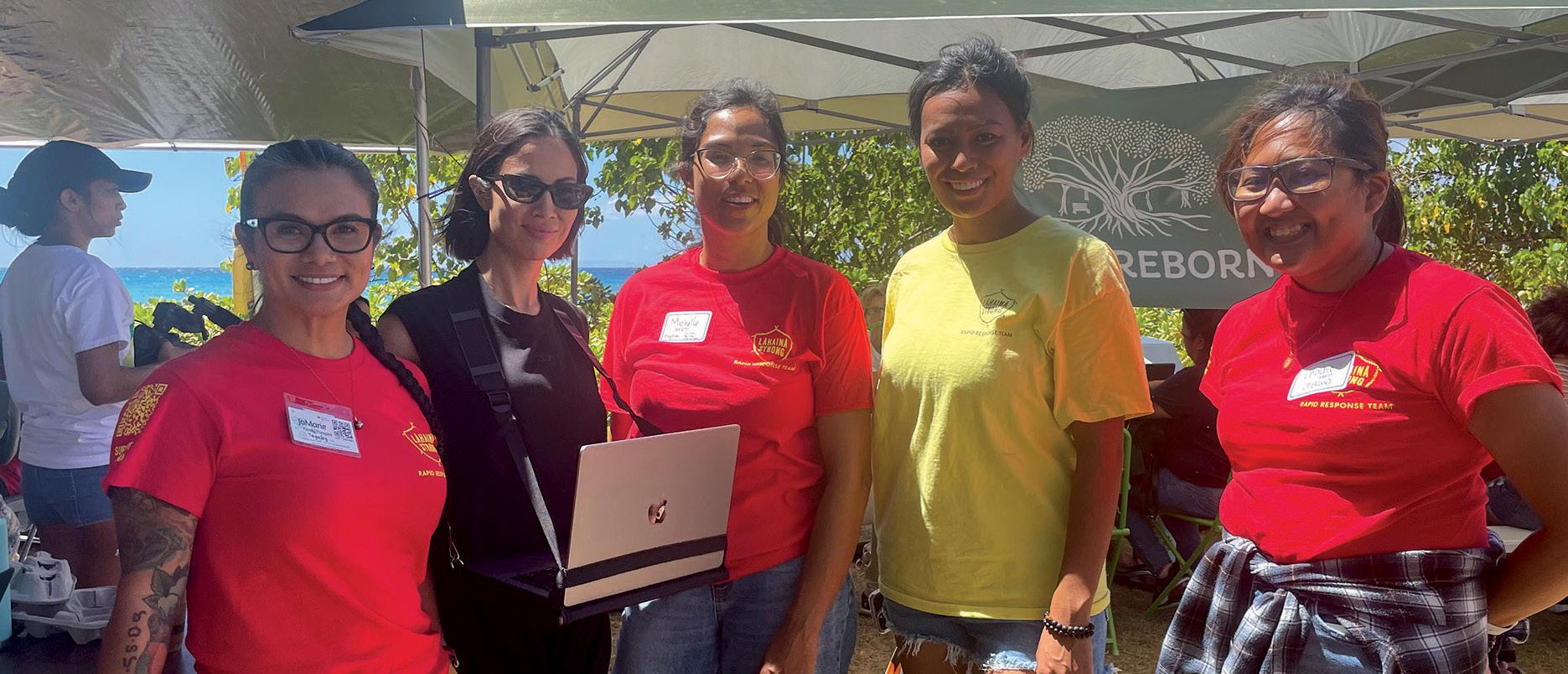
People don’t always agree on what feminism, equality, or system change is or looks like. But what can be agreed on is that women everywhere deserve better, and unless bold steps forward are taken, patriarchy will continue to define women’s lives, and women will never see progress accelerate.
e Global Center for Gender Equality (GCfGE) is a team of world-class gender experts that understands this battleground and tackles patriarchy through three main approaches: gender mainstreaming, feminist leadership, and feminist philanthropy. It is a full-service, gender equality firm that has advised on over 350 projects and programs around the world.
eir newest philanthropic offering is a first-of-its-kind, explicitly feminist donor education program and interactive playbook for women with wealth: e Feminist by Design System. e System contributes to the rapidly evolving infrastructure to support philanthropists and develop feminist-giving strategies and portfolios.
e GCfGE began as an academic center at Stanford University and spun out into an independent collective – hiring the best in gender equality design and implementation. eir dynamic team of core staff and an expansive bench of consultants come from academia, research, government, and grassroots movements, which allows them to combine thematic, sector, and geographic expertise to meet niche needs with personalized solutions for individuals, communities, and organizations. ey have senior staff based in the U.S. and internationally from Helsinki to Hawaii. e GCfGE provides technical assistance on gender equality to one of the world’s largest philanthropic organizations, as well as global public health institutions, national governments, and individual philanthropists.
eir most extensive work has been gender mainstreaming – a strategy for gender equality endorsed by the United Nations – where they enable funders to amplify their impact on gender equality in the global health and development sectors – both changing how organizations function, as well as how projects are designed, implemented, and evaluated. And they are influencing the broader development sector – making resources and tools available publicly in peer-reviewed journals, partner blogs, and gender equality toolkits.
Feminist concerns have not yet risen to the mainstream in United States city planning despite momentum to redesign open space around climate change and public health.
eir feminist leadership program developed an original framework to assist governments to build capacity for a gender-equitable approach to public sector leadership.
e Public Leadership for Gender Equality (PL4GE) framework is an engaging, deeply immersive, and country-contextualized experience that was delivered to Ethiopian and South African governments in partnership with major U.S. philanthropic organizations. GCfGE speaks confidently about their impact because they measure and study their results; and to expand this impact to reach as many as possible, the collective democratizes their learnings through publications – you can read more about how they are developing government capacity to develop gender equal policies in e Lancet
GCfGE’s impact is also intimate, as they believe in living their values through a feminist workplace. All employees enjoy a four-day workweek and flexible schedules that factor in women’s disproportionate caregiving responsibilities, cultural holidays, and health needs. ey are incubating the feminist organizational practices they want their partners and society at large to embrace.
Change can come from the top, but, when it does, it is often fragile and unstable without mass popularity. is is why GCfGE equally prioritizes feminist philanthropy to bolster frontline movements for gender equality. eir orientation of feminist philanthropy is comprehensive and internationalist, and led by a feminist movement leader who has been defining intersectional feminism on the ground in Asia-Pacific for two decades.
e GCfGE feminist philanthropy team works directly with philanthropists both behind-the-scenes and in public fora. ey spearheaded the development of a series of advanced gender training modules for Asia Venture Philanthropy Network (AVPN) – a pan-Asia network of 600+ philanthropists across 33 countries that works to increase the flow of capital towards impact in Asia. ese modules aim to propel learners on transformative personal and philanthropic journeys towards mobilizing increased resources for gender equality and development. Available on the AVPN Academy learning platform, these modules provide a gateway for social investors eager to fund with a gender lens, offering practical guidance and resources to incorporate gender equality principles into their philanthropic endeavors.
e GCfGE feminist philanthropy team also works
with U.S. philanthropists to implement intersectional feminist principles in their unique contexts. e GCfGE superpower lies in meeting philanthropists where they are, and building their comfort, capability, and capacity to step forward into feminism. For example, they partnered with the Monarch Foundation to support a groundbreaking program that aimed to redesign New York City Parks and leverage park commons as a means to advance gender equality and environmental justice. is project also worked to address a systemic challenge: feminist concerns have not yet risen to the mainstream in United States city planning despite momentum to redesign open space around climate change and public health. is project showcases the wide range of endto-end services that GCfGE offers to build and manage feminist aspects within any project and across contexts.
Developed with audiences like members of e Giving List in mind, GCfGE’s latest offering is an interactive playbook that provides philanthropists with a feminist problem-solving process around a curated challenge. is product was created for feminists with wealth dedicated to reimagining philanthropy, redistributing resources in alignment with intersectional feminism, and cross pollinating with other donor groups.
e Feminist by Design playbook is, at its heart, about impact, not ideation. For feminist analysis, CGfGE hosts the Feminist by Design podcast, available on Apple and Spotify, which considers what philanthropy and our world would look like if feminists were its architects. e series explores system change and how philanthropists can engage the most urgent topics in gender philanthropy – Middle East geopolitics, the U.S. environmental disaster response apparatus, military industrial complex, and tax reform led by philanthropists who break with their class interests.
At the Global Center for Gender Equality, they believe in a holistic, history-informed, and data-driven approach to dismantling old systems, and creating durable social change.
For more information, contact GCfGE at: info@gcfge.org www.gcfge.org
To Make a Donation:
New Venture Fund
1828 L Street, NW Suite 300-A Washington, D.C. 20036
TaxID# 20-5806345
*Please indicate GCfGE
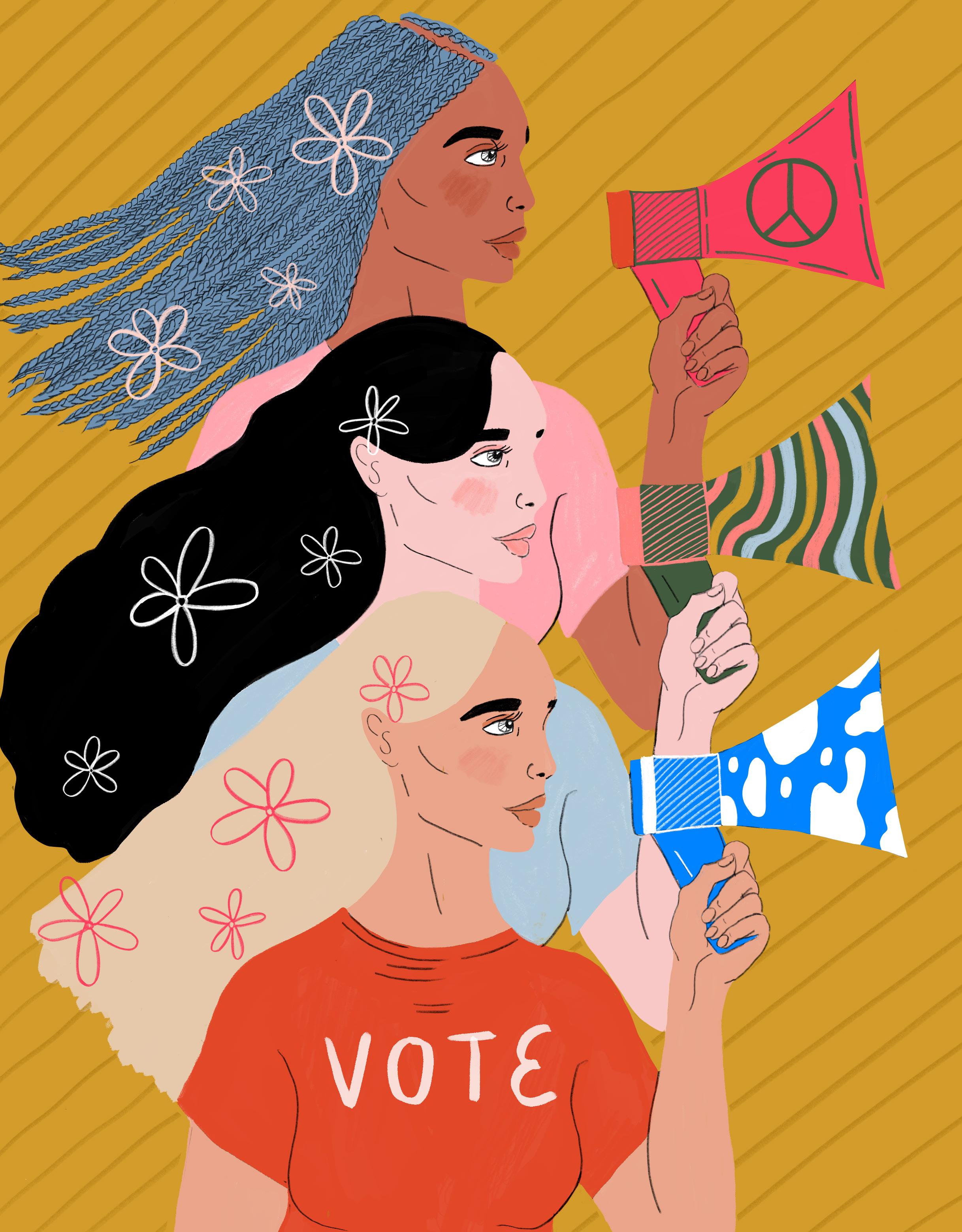
How is it that over 60% of Americans support the legalization of abortion in most cases, but Roe v. Wade was overturned and 14 states have now banned abortion in most circumstances? A president whose vote count fell millions of votes short of that of his opponent appointed three Supreme Court justices, who joined the extreme right wing of the Court to overturn a half-century-old constitutional right supported by a majority of Americans. Then politicians in states with high levels of gerrymandering and voter suppression banned abortion, contrary to the wishes of the majority of voters in those states. In response, abortion rights supporters have turned to direct democracy. The seven abortion-related ballot measures since the Supreme Court reversed Roe in June 2022 have favored abortion rights, even in red states like Kansas and Ohio.
“Women’s rights are at the core of any democracy,” says Kathy Spillar, executive director of the Feminist Majority Foundation (FMF) and executive editor of Ms. magazine. “As authoritarians rise to power, a central platform is the attack on women’s rights and bodily autonomy. If half of the country’s population is subjected to discrimination and denied full and active participation in the civic life of a nation, you can’t have a true democracy. Fighting for women’s full equality is central to a functioning democracy.”
The five organizations featured in this chapter promote democracy by working to support women’s rights, as well as the equal representation and inclusion of women’s voices and perspectives in politics and media. These organizations address the interconnections between democracy and women’s rights from multiple angles – mobilizing young women to engage politically (FMF); advocating for gender equality in political representation (The Ascend Fund); supporting women
and feminist perspectives in journalism to inform voters (the International Women’s Media Foundation and FMF’s Ms. magazine); supporting recognition of the already-ratified Equal Rights Amendment (ERA Coalition); and advocating for the rights of women and LGBTQ+ people through litigation, policy, and culture change work (National Women’s Law Center). These organizations are fighting for women’s equality and increased representation in positions of leadership in society – in elective office, in journalism, in the economy, and more.
As of February 2024, the U.S. lags behind 70 other countries across the world in women’s political representation in national legislatures, with American women holding only 29.2% of seats in the House of Representatives and 25% of seats in the Senate. There are 151 women in Congress, 64 of whom are women of color, compared to 381 men. Women’s representation is only marginally better in state legislatures, where women hold 32.9% of seats. Similarly, in the courts, in 2023, women made up only about one-third of federal judges and one-third of state judges.
Women in public office matter. Countries with more women in elected leadership are less likely to go to war; more likely to enact policies that reduce carbon dioxide emissions; and more likely to enact policies that support pregnant women, mothers, infants, and children. These differences mirror significant gender gaps in attitudes toward many public policy issues. For example, women are more likely than men to prefer that the government take an active role in providing a social safety net – including food assistance, health insurance, and welfare – for those in need. Women are also more likely than men to support regulations to protect the environment and laws that protect the LGBTQ+ community from discrimination. In contrast, women are less like-
ly than men to support military interventions and gun rights.
Political scientist Jennifer M. Piscopo explains: “Ideas about appropriate gender roles mean that women and men have different lived experiences, which shape women’s awareness of problems and their preferences for solving them. For instance, women are more likely than men to perform caretaking roles – like raising children – and both historically and today they are more likely than men to want stronger healthcare, housing, education, childcare, and anti-poverty programs.”
The Ascend Fund recruits and trains women to run for political office in order to achieve diverse, gender-balanced representation in Congress and state legislatures across the country. FMF recruits and trains girls and young women to be feminist leaders, including by registering young people to vote in battleground states. Both these organizations work to create diverse political leaders who are more responsive to the concerns and needs of the communities they represent.
Just as male-dominated legislatures are less likely to support women’s rights, mainstream media disproportionately centers male experiences and perspectives, often excluding the lives and voices of women and girls. An analysis across the major U.S. media platforms revealed that in the first three months of 2021, men received 57% of news bylines and credits. Men also dominate media leadership. According to the Reuters Institute for the Study of Journalism, in 2023, only about a fifth of 180 top editors across 240 major outlets in 12 global markets were women, despite the fact that women account for, on average, 40% of the journalists in those markets.
“The news media is one of the most important ways that perceptions about society are made, and if those perceptions are being led by a non-diverse news industry, then we are not going to be able to further the democratic process,” says the International Women’s Media Foundation (IWMF) Executive Director Elisa Lees Muñoz.
The IWMF promotes women in the media with awards, reporting opportunities, fellowships, grants, safety training, and emergency aid. By supporting and recognizing women in journalism, the IWMF strengthens the free press and democracy across the globe.
“The public needs to be informed to be able to make good decisions,” says Muñoz. “If they’re not getting a true reflection of their communities in the media that they consume, then their ability to make informed decisions at the ballot box about their leaders is gone. They’re making decisions based on potentially false information – disinformation.”
FMF also supports women in media by publishing Ms. magazine, which offers in-depth analysis and reporting on the lives of women and girls around the world – coverage often missing from mainstream reporting. Ms. reports on the impact that cutting off abortion access has had not only on women’s health but also on the economy and on women’s ability to participate in politics and the economy. The magazine covers other women’s issues that are critical to a functioning democracy, including our care infrastructure, gender-based violence, and the Equal Rights Amendment (ERA).
“The research and reporting we do with Ms., in combination with the grassroots organizing that we do to ensure that young women voters have their voices heard, is critical to strengthening and furthering democracy,” says Spillar.
In addition to equal representation in politics and media, the organizations featured in this chapter champion women’s rights and equality. The bedrock of women’s equality is the ERA, which has been fully ratified but is still not recognized as the 28th Amendment to the U.S. Constitution. The ERA Coalition and FMF are fighting for publication of the ERA.
“In a democracy, we’re all supposed to be participating. For everyone to participate, we have to all be treated equally,” says Bettina Hager, the ERA Coalition’s chief of policy and programs.
In addition to supporting the ERA, FMF is fighting for the expansion of women’s rights in a wide range of areas, including reproductive rights, wage equity, the right to be free from sexual harassment and gender-based violence, and paid leave and childcare support – all issues linked directly to democracy.
“How can women participate fully in the economy, which is critical to a strong democracy, if they are constantly juggling care of children, elderly parents, or sick members of their own families?” asks Spillar. “Without a publicly funded and accessible and affordable system of childcare, elder care, and disability care, how can the people who are most often responsible for this care participate?”
Women’s rights and representation are a barometer of democracy. The erosion of women’s rights is a canary in the coal mine of a dying democracy. Rising autocratic regimes across the world are targeting women’s rights, particularly regarding reproduction and bodily autonomy. To build a true democracy that ensures women’s rights and better care for all, the organizations featured in this chapter fight for inclusive political leadership and media that reflect the diversity of the communities they serve and respect all of our rights.
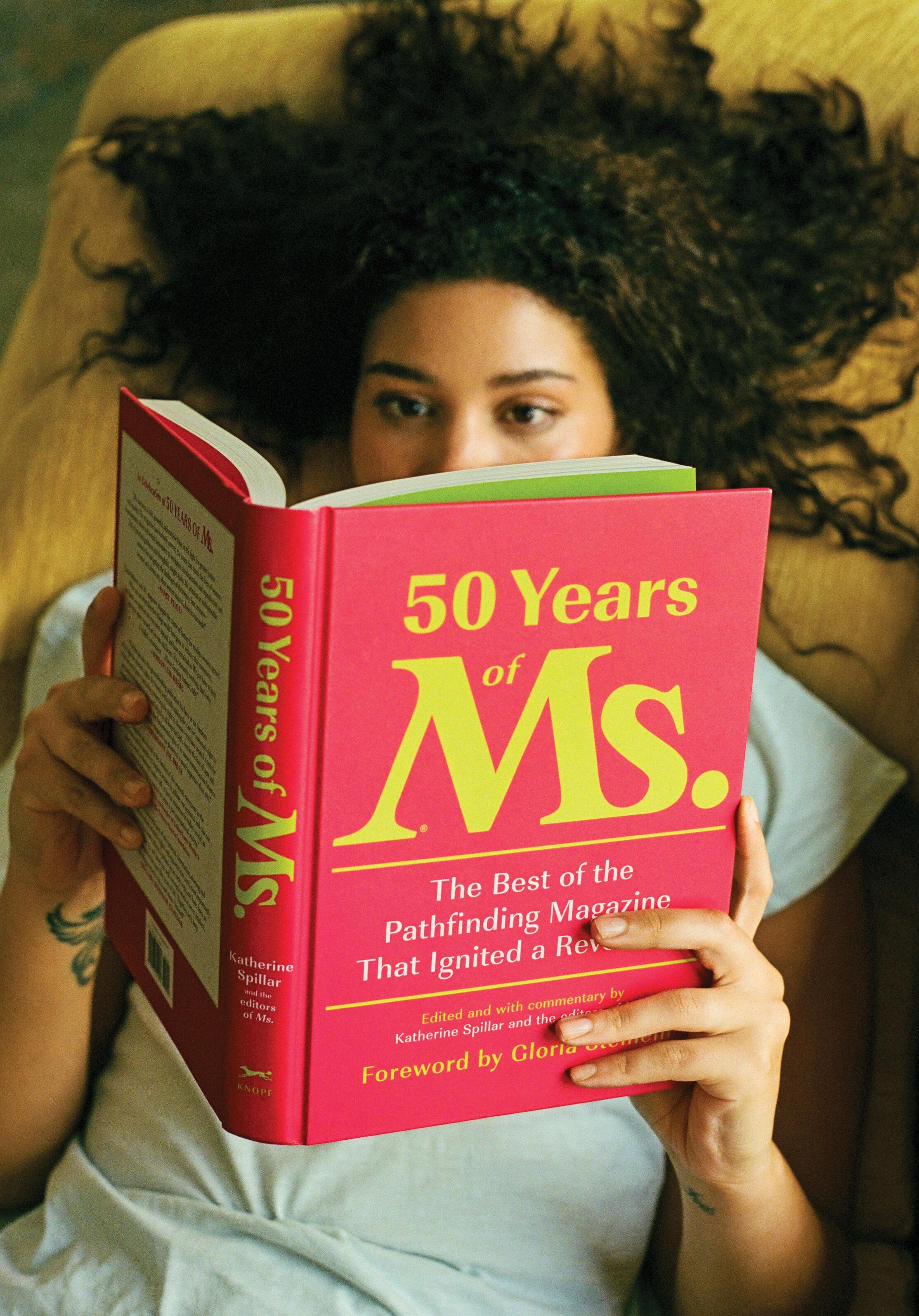
“An illustrated guide to toppling the patriarchy … 50 Years of Ms . recounts how the magazine upended norms, disrupted the print world, and made trouble.”
The New York Times
imberlé Crenshaw – both Distinguished Professor of Law and Promise Institute Chair in Human Rights at the University of California, Los Angeles, School of Law and Isidor and Seville Sulzbacher Professor of Law at Columbia Law School – may be best known for coining the term “intersectionality.” A key idea in today’s zeitgeist, intersectionality is Crenshaw’s metaphor for how multiple forms of inequality or disadvantage come together as if at a traffic intersection, compounding prejudice.
Crenshaw is also a pioneer in the field of critical race theory, an expansive framework for examining race and racism embedded within the very structure of law and society. Among her key insights is that the law is often a result of cultural biases, rather than a cause of them.
In 1991, she was part of the legal team that represented law professor Anita Hill when she accused U.S. Supreme Court nominee Clarence Thomas of sexual harassment during his confirmation hearings. In the wake of that complex moment, when race, gender, and sexuality converged publicly, Crenshaw co-founded the African American Policy Forum, an innovative think tank that connects academics, activists, and policymakers to promote efforts to dismantle structural inequality.
Internationally, Crenshaw’s groundbreaking work on intersectionality influenced the drafting of the equality clause in the South African Constitution. She also wrote the background paper on race and gender discrimination for the United Nations’ World Conference on Racism in 2001.
Crenshaw co-authored the report Say Her Name: Resisting Police Brutality Against Black Women, which led to the #SayHerName movement to call attention to police violence against Black women and girls.
Crenshaw’s forthcoming book, coauthored with Luke Charles Harris and George Lipsitz, is The Race Track: How the Myth of Equal Opportunity Defeats Racial Justice. She provides commentary for media outlets including MSNBC and NPR and hosts the podcast Intersectionality Matters!
Giving List Women: You’re credited with coining the term “intersectional feminism,” which gets overused and sometimes misused. Why did you coin this term?
Kimberlé Crenshaw: The term intersectionality is a prism through which to see things that have slipped through the cracks. … As a young law student, I grappled with the fact that the way the law thought about things like race discrimination and gender discrimination and disability and sexuality was often as separate and mutually exclusive experiences. And when Black women would raise questions about their discrimination or experiences, courts were confounded. They didn’t know how to respond to it, especially because in some of these industrial settings, the employer might have hired Black people, but all the Black people they hired were men for a particular kind of job. And they might’ve hired women, but the women they were hiring were front office workers, secretaries, receptionists – jobs that Black women weren’t considered for. I found a case where the employer said, “You can’t charge us with discrimination because look, we hire Black people, and you can’t say we practice gender discrimination because we clearly hire women.” It’s just subtext that all the Blacks are men, and all the women are white. … We hadn’t made progress in getting the law to see that Black women received both exclusions at the same time, and the courts were effectively saying that exclusion is excluded from the law.
I was looking for a way of explaining that there are various avenues through which disempowerment happens, and Black women are often situated exactly where that traffic converges. I thought, maybe if we use the term intersection, I can explain to judges why being protected against gender discrimination means that you get protected all the way down to the intersection of it with another form of discrimination.
GLW: Did that help in your experience working on the Anita Hill case?
KC: No, because the problem wasn’t just the law. The problem was our culture, our organizations, our media. When Anita Hill came forward, I was working on an article called “Mapping the Margins,” prompted by recognition that the law will continue to be a problem if all our organizations and advocacy strategies continue to produce this idea that racism is exclusive from gender
discrimination and vice versa. So, the whole framework around anti-rape organizing frequently didn’t consider that Black victims were far less likely to be believed, far less likely to see their assailant arrested even when they were arrested and prosecuted and convicted. There was race discrimination within gender discrimination, but we weren’t talking about that.
And the same thing on the other side. We weren’t talking about the disparities in rape prosecution when it was anti-racism in any way that paid attention to women. It was basically about the false accusation of Black men, which is a real problem. But there’s also the devaluation of Black women when they were raped, and anti-racism wasn’t addressing that. … When Anita Hill came forward, I worried that everything I was seeing about how Black women who make claims about being sexually abused were treated would play out in this political arena, and surely it did. She was called the angry Jezebel and promiscuous. The very fact that she testified as to what Thomas said to her was used to discredit her. What was disappointing was how much the African American community would read her as not being a Black woman because she was making a claim about sexual harassment.
If you want to know why intersectionality matters, look at all the things that Clarence Thomas’ elevation to the Supreme Court made possible, including destroying campaign finance reform. So now we have politicians for sale destroying the Voting Rights Act, which means a huge amount of voter suppression, destroying affirmative action, environmental [injustice] … all because we did not have a sufficiently intersectional understanding of this Black woman’s story in one of the most pivotal moments in our history. It hurts all of us.
GLW: How do feminism and Black feminism overlap, and do they ever work against each other?
KC: Feminism has always had to struggle with some unfortunate histories of its initial articulation. Initially, abolitionists and feminists worked together to denounce enslavement. And the metaphor for enslavement was also used to capture the experience of women in the home in relationship to men. The beginnings were bumpy because when the 14th Amendment was created, men decided that they weren’t going to push for women’s suffrage at the time; “This was the Negroes’ hour” is what they said. Of course, the Negro included women, but people weren’t thinking about what Black women might need to fully emerge from enslavement. That kind of disempowerment of being laborers and being forced into reproductive labor – nobody talked about that. Even white feminists were mad that this wasn’t a moment for suffrage. So, there was an ugly spinout, and some – not all – of our most beloved feminists said some horrible, racist things. And feminism has had to grapple with that historical moment. The second and third wave [of] feminism have been more responsive to the
recognition that that was a political and historical mistake, but it cast a long shadow over feminism. Intersectional thinking helps us understand why feminism must have an interface with anti-racism, xenophobia, heterosexism, and transphobia because women experience our lives in all these contexts.
GLW: Do you think that narrative is understood well enough?
KC: No, but I don’t think anything is right now. Every aspect of the post-civil rights consensus from the ‘60s onward has been intentionally distorted at this moment. You can’t really talk about making America great again by looking in its past without trying to erase everything that’s happened since 1960. Because if you go back before 1960, it wasn’t great for most of us. The brilliance of the latter part of the 20th century is that every decade brought about a deepening commitment to making America great by grappling with the ways that it was not.
But we didn’t do the things we needed to do to sink it in cement. We did not dig a deep enough trench so that we could actually fly high enough to meet our aspirations. And the other side was fully aware that we weren’t tending to the foundation, and they forced us to swing too high and to topple over. And so now we are not sure about feminism. We’re not sure what women’s rights are. We’re not sure how to frame it. We’re not sure about intersectionality. We’re not sure about democracy. All these things are up for grabs right now, and it is our failure to articulate a common narrative and aspiration that is our Achilles’ heel.






What happens when you’ve succeeded with your mission of seeding women-led grassroots organizations for over 30 years, and helped create more than 20 sister funds at national and regional levels around the globe? “You shift from the trees to the forest,” says PeiYao Chen, Global Fund for Women’s President and CEO.
Chen has been with Global Fund for Women for over 10 years and helped lead their transition from supporting organizations to supporting gender justice movements. Why gender justice? Global Fund for Women was created with the understanding that women’s rights are fundamental to social, economic, and political change around the world. Gender justice is an even more expansive version of this. Why movements? Research has shown that social movements are one of the most e ective mechanisms for long-term sustainable change.
As Chen explains, until 2020, Global Fund for Women focused on identifying grassroots organizations, the “trees,” and helping them grow. Each year, they would support 300 to 500 organizations globally. But a social movement, the “forest,” is made up of trees and so much more. Air, soil, sun – an entire ecosystem that changes the framing and units of analysis.
Global Fund for Women was created with the understanding that women’s rights are fundamental to social, economic, and political change around the world.
Where Global Fund for Women Fits into the Feminist Funding Ecosystem
Global Fund for Women now supports 11 gender justice movements around the globe – loosely connected groups of individuals, organizations, and networks working towards similar goals, goals which are not necessarily tied to policy change alone. What ties each movement together is a shared vision for the future.
Global Fund for Women serves as a hub for funding, collaboration, sharing best practices, and promoting cross-regional cooperation. Internally, Global Fund for Women strives to bolster their own management practices by building opportunities for sta growth and leadership, maintaining transparency around decision making, and providing inclusive governance at the board level for young people, creatives, and partners.
ey understand that for movements to sustain themselves in the long run, they can’t just depend on protest alone. ey need the ability to make collective decisions about the future, including decisions about priorities. ey need to also focus on what kind of resources the various movements require to be successful. If the movement desires to make decisions collectively, Global Fund for Women helps establish an inclusive movement committee. Global Fund for Women’s goal is to shift power from donors to movements, and within movements to marginalized groups, whose voices need to be at the table.
How does this work in practice? In Peru, Global Fund for Women has been supporting the movement to end sexual and gender-based violence for the past three years. First, they analyzed the landscape by engaging local researchers who showed them that most resources and attention went to a handful of more established organizations in Lima. Many organizations led by marginalized communities outside of Lima felt disconnected from the mainstream feminist movement. To address this, Global Fund for Women helped form a Movement Advisory Group that included underrepresented groups. ey succeeded in bringing activists from rural, young, indigenous, disability rights, and trans communities together and giving them power to decide where the money goes. ree years into this movement committee model, the results are promising. Global Fund for Women measures their reach by how many small (under $50K), new ( rst time grantee), and unregistered organizations get grants. In a typical Global Fund for Women portfolio, 20-30% of grantee partners meet their criteria. In Peru, it’s 75%. Global Fund for Women is reaching groups that were previously inaccessible to them, from hard-to-reach regions of the country. And because committee members serve for limited terms, this rst movement committee is making plans to transition and bring in the next cohort. Power shifted.
Using
“Movements start with anger. People who experience injustice are angry that existing systems are not responding to their needs. ey take their anger to the streets and online, and we use that as early indicators that collective actions are happening,” says Chen. But it’s nearly impossible to stay abreast of all the gender movements globally when they’re in their nascent stages.
Enter the Gender Justice Data Hub, a digital tool Global Fund for Women launched in 2023 using publicly available protest data to systematically identify and track where anger is coalescing, and leading to organizing. Global Fund for Women developed a Social Movement Index that ranks countries based on the level of activist activity. ey ultimately identi ed six countries in Latin America for close monitoring in the pilot phase. Using on-the-ground knowledge and connections, and local activists and advisors who provided further contextual information, Global Fund for Women identi ed three emerging gender justice movements they would not have known about if they had not gone through this process. e plan is to learn from this process in Latin America and then expand it globally.
While questions may arise about privacy and security with the launch of the Gender Justice Data Hub, Glob-

Abortion Rights Activists in Argentina—On August 8, 2018, thousands of supporters and opponents gathered in Buenos Aires to await the outcome of the historic vote that would expand women’s access to legal abortion. After hours of debate and an early morning vote, the Senate handed down their decision as crowds waited outside. With a vote of 38 to 31, the law was defeated. Despite the outcome of the Senate’s decision, women’s groups in Argentina feel that they are at a turning point in the e ort for legal abortion, and they vow to continue their work. (photo by Roberta Dabdab, estudio x+x for Global Fund for Women)
al Fund for Women is intent on providing digital safety support to movements, including by partnering with organizations with expertise in digital security that provide training in safe communications and new technologies.
Global Fund for Women’s movement approach shifts power into the hands of those working at the frontlines of gender justice. eir grantmaking and advocacy are challenging the status quo. From the trees to the forest, their movements are moving mountains.
We are eager to work in partnership with you as we fund bold, ambitious, and expansive gender justice movements to create meaningful change that will last beyond our lifetimes.
Pradeepa Jeeva VP of Brand and Culturepjeeva@globalfundforwomen.org (917) 575-5730 globalfundforwomen.org
Global Fund for Women Attn: Donations PO Box 97309
Washington, D.C. 20090-7309
Tax ID# 77-0155782
In January 2021, the inaugural National Youth Poet
Laureate Amanda Gorman delivered her poem, “ e Hill We Climb,” at the inauguration of President Joe Biden. In February 2023, the Senate confirmed the first LGBTQ Latina, Ana C. Reyes, to the U.S. District Court for the District of Columbia.
What do Gorman and Reyes have in common? ey both cut their teeth in the Feminist Majority Foundation’s (FMF’s) life-changing youth leadership programs – Gorman in FMF’s Girls Learn International program for middle and high school students and Reyes in FMF’s Feminist Campus program for college students. Both programs teach young women to advocate for human rights, equality, and democracy in the U.S. and around the world.
Working very closely with women’s and gender studies programs, women’s centers, and multi-cultural centers on college campuses, FMF recruits and trains young women to be leaders in the feminist movement.
FMF also strategically works on college campuses during election years to make sure young voters are informed and active. ey strive to ensure they have the right to vote where they are going to school, that they know what issues are at stake in an election, and that they know where they can vote, and FMF mobilizes to get them to the voting booth on Election Day. FMF also works to make sure that voting locations are on college campuses because many students don’t have cars. Young voters are the most progressive voters, but they have the lowest turnout rates of the entire electorate, says FMF Executive Director Katherine Spillar. “Some of it is because they’re unfamiliar with voting. is is the fi rst time they’re going to be voting. Also, they’re away from home, and they’re led to believe all too often that they can’t vote where they’re going to school. Students have a right to register and vote where they are in school, no matter what state they are from, where they returned home during the summers, or where a parent lives or their parents or guardians live. Making sure they know that is a critical part of what we do. And we have proven that by increasing the turnout rates at the margins, you can impact an entire election.”
Turnout of young voters made a critical difference in the outcome of the 2022 elections in key battleground states, including Nevada, Arizona, Pennsylvania, and New Hampshire, and promises to do so again in 2024.
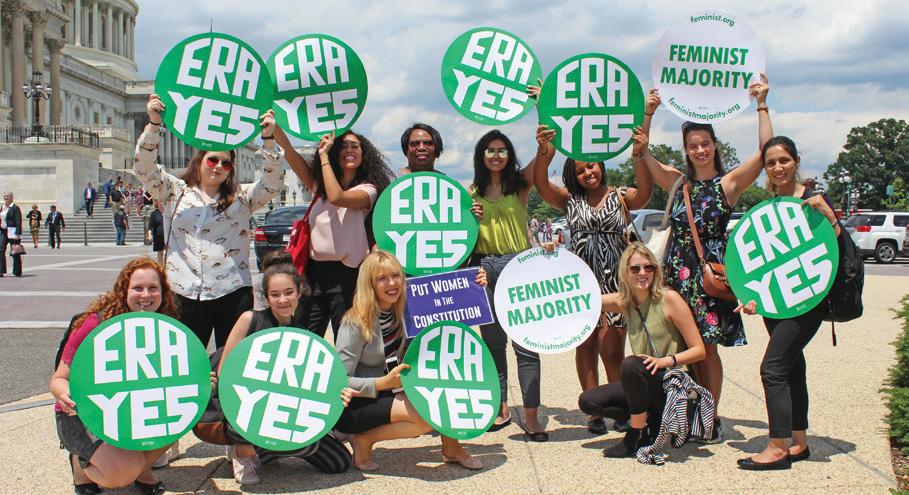
Keeping Feminism at the Forefront
In addition to on-campus organizing, FMF holds a young feminist conference in Washington, D.C., each year, bringing students from across the country to the nation’s capital to engage with other feminist students and leaders and learn how to advocate to their representatives.
To keep people informed on the issues, FMF publishes Ms. magazine. Co-founded in 1971 by journalist and social/political activist Gloria Steinem, Ms. magazine was the first national American feminist magazine. It is one of the only media sources providing in-depth analysis about what’s happening to women and girls here in the U.S. and around the world, and how the violations of women’s rights are damaging to democracy.
As Ms. magazine and their research and action programs show, FMF is dedicated to advancing the legal, social, and political equality of women.
How They’re Doing This Differently Young voters have the lowest turnout rates of the entire electorate and yet can impact an entire election.
e Feminist Majority Foundation is mobilizing young women on college campuses by ensuring they’re aware they can register and vote away from home, and have access to voting booths on campus since so many students don’t have a car.
Feminist Majority Foundation www.feminist.org www.msmagazine.com
Valerie Cain CFO (310) 556-2500 vcain@feminist.org
Feminist Majority Foundation
433 South Beverly Drive Beverly Hills, CA 90212 Tax ID# 54-1426440
In today’s world, the news media and the safeguards of press freedom have changed drastically. e democratic protections once available for the press no longer apply. Every beat comes with its own danger, implications, and polarization. Abuse can even be directed not only at the journalist, but their entire family.
With the rise of authoritarian regimes, misinformation and disinformation are also surging. “Authoritarian leaders share a playbook to demonize the press as ‘enemies of the people’ and target journalists with coordinated online and legal attacks,” says Elisa Lees Muñoz, executive director of e International Women’s Media Foundation (IWMF).
Further, women and nonbinary journalists face heightened rates of abuse simply because of their identities. According to research from the IWMF and TrollBusters, more than 70% of women journalists have experienced digital violence and 20% have been physically attacked in incidents seeded online. One-third of women journalists consider leaving the profession due to this abuse, which leads many to censor their reporting.
In 2020, the Bill & Melinda Gates Foundation commissioned “ e Missing Perspectives of Women in News,” documenting gender inequities in journalism. e report found that men are the protagonists in 70-85% of news headlines, and political news coverage features men’s voices up to seven times more frequently than women’s voices.
“Women make up more than half of the world’s population, so women’s voices should occupy at least 50% of the news media; that balance is just not happening today,” says Lees Muñoz. “Journalism is a critical pillar in a democratic society, but it can’t be that pillar if the journalism industry isn’t equitable.”
Based on these and other factors that allow journalism to remain male-dominated, the IWMF has created comprehensive programming, training, and funding designed to help support and protect the work and careers of women and nonbinary journalists.
The IWMF’s work focuses on four key areas: safety, equity, opportunity, and recognition. e IWMF provides safety training and emergency aid; reporting opportunities; and fellowships, grants, and awards for women and nonbinary journalists. ey also provide an
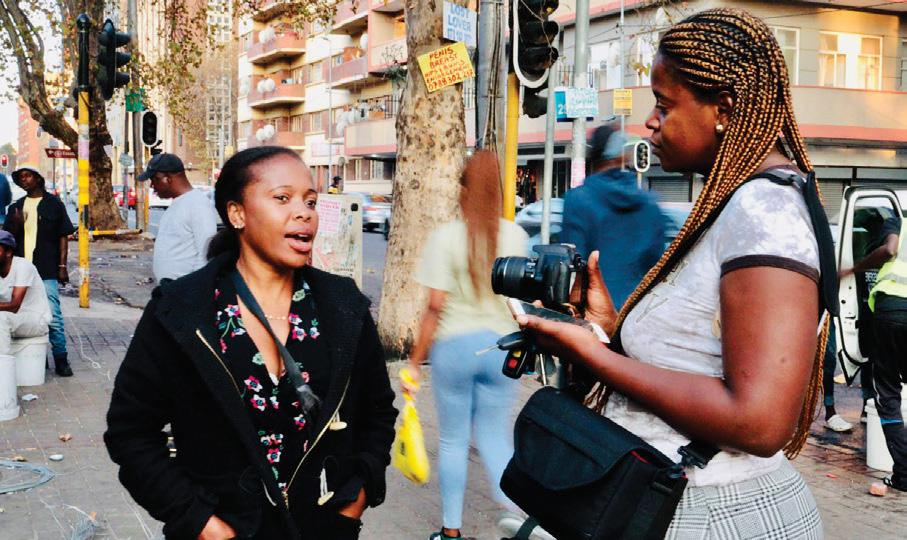
Online Violence Response Hub and emergency assistance for relocation and therapy grants for mental health care so journalists can keep reporting.
“We hear firsthand from journalists who have been doxed for reporting on far-right nationalist movements, who receive death threats from conspiracy theorists, who are stalked, and who are afraid of covering political rallies where gun violence is a real possibility. ere are huge interests online trying to silence diverse voices,” says Lees Muñoz.
Lees Muñoz gives examples from around the world: Trump targeted April Ryan in the U.S., Modi targeted Rana Ayyub in India, Duterte targeted Maria Ressa in the Philippines, Bolsonaro targeted Patrícia Campos Mello in Brazil, and AMLO targeted Carmen Aristegui in Mexico.
“ e global news industry is in crisis,” says Lees Muñoz. “If we aren’t supporting the equal representation of women, then those voices won’t be there, and that is not democratic.”
International Women’s Media Foundation www.iwmf.org
Sara Johnson
Senior Development Coordinator (202) 496-1992 sjohnson@iwmf.org
By Check or DAF:
International Women’s Media Foundation
2002 Massachusetts Ave. NW, Suite 5 Washington, D.C. 20036 Tax ID# 52-1648942
Today, women hold less than one-third of elected offices in the U.S. at both the federal and state levels. What would our laws and public policies look like if legislatures across the country mirrored the broad diversity of American citizens today? e Ascend Fund, which supports nonprofit organizations that train and recruit women to run for public office, is working to find out. eir goal, along with their nonprofit partners such as Native Action Network and Mississippi Black Women’s Roundtable, is to achieve gender parity with proportional racial representation in all 50 states by 2050.
“When women lead, our nation will be transformed,” says Gabrielle Fitzgerald, founder and CEO of the Panorama Group, which runs e Ascend Fund. “ ere’s a lot of research that shows women are more likely than men to work collaboratively and work in their constituents’ best interests. Women pass a larger number of bills than men, and they’re more focused on getting things done.”
Research also shows that women in elected office are more likely than men to prioritize issues affecting women and families, including reproductive rights, paid family and medical leave, child care, and sexual harassment.
“What we’re seeing every day is legislation being introduced that is not meeting the needs of many women, and it’s because their voices aren’t being represented,” says Fitzgerald.
Fitzgerald gives the example of the Build Back Better Act, which would have required employers to off er 12 weeks of paid family leave. Less than one in fi ve U.S. workers have access to paid leave for the birth or adoption of a child, or to care for a sick family member. e bill also would have funded subsidies for childcare, universal pre-kindergarten, and expanded long-term care options for the elderly and disabled. Despite the U.S. lagging behind most countries in the world with paid family leave and support for childcare, the white-male-dominated U.S. Congress dropped these provisions from the bill. A pared-down version was eventually signed into law as the Infl ation Reduction Act of 2022.
“Women bring different lived experiences to the table and, as a result, they govern differently and shift the agenda, ultimately bringing much-needed change to our pale, male, and stale institutions,” says Fitzgerald.
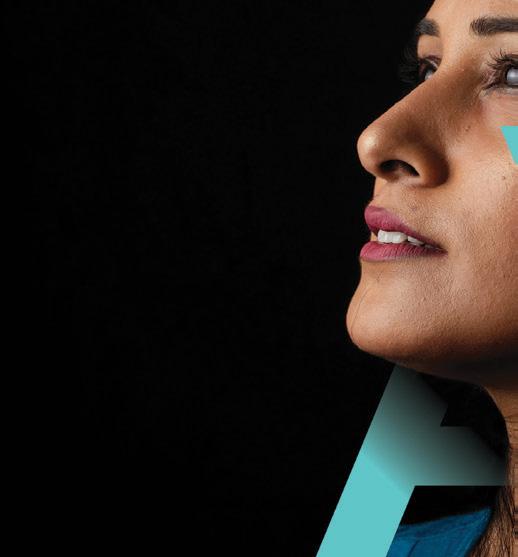

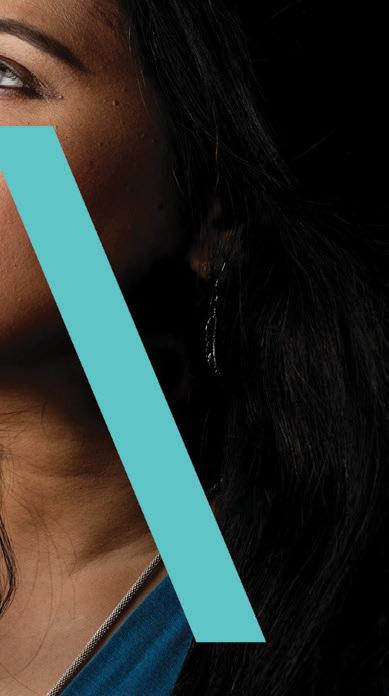
The Ascend Fund supports potential women candidates by investing in a diverse range of nonpartisan organizations that recruit and train women to run for public office, and they convene the leaders of these organizations to solve problems, share resources, and provide strategic support.
Since their launch in 2020, e Ascend Fund has invested more than $9 million in 29 national, state, and local organizations, which have trained nearly 80,000 women.
eir model has stellar results. Women with this training who have run for public office have a 67% win rate in their primaries and a 66% win rate in their general elections – nearly double the national average for women candidates.
“Our partners could program an additional $10 million tomorrow, and upwards of $100 million is needed to ensure the transformational change we all wish to see,” says Fitzgerald. “ e time to invest is now.”
panoramaglobal.org/the-ascend-fund
Jennifer Cho
Vice President, Partnerships (917) 282-3527
jennifer.cho@panoramaglobal.org
By Check or DAF:
Panorama Global 2101 4th Avenue
Suite 2100
Seattle, WA 98121
Tax ID# 81-4204119
The Ascend Fund, powered by Panorama Global
Are you furious that the extremist Supreme Court is rolling back the rights of women and girls, pregnant people, and the LGBTQIA+ community, as well as democracy itself?
e National Women’s Law Center (NWLC) has a plan. “We’re an organization that is multi-strategy and multi-issue across the lives of women and girls,” says Fatima Goss Graves, president and CEO of the NWLC. e organization’s approach to gender justice is inextricable from the fight for racial, economic, and disability justice, and it is based on a commitment to ensuring that all people, no matter their background, are equal under the law. is includes both culture change work as well as traditional legal work like representing clients in court, writing amicus briefs, and running legal networks. It also includes housing and operating the TIME’S UP Legal Defense Fund, which connects survivors of workplace harassment with legal and public relations assistance, as well as running the Abortion Access Legal Defense Fund, which helps people pay for certain legal expenses they may face as an abortion patient or supporter in a post-Dobbs landscape.
NWLC also advocates for legislation, rules, and policies on the federal and state levels, but they don’t stop there. Recognizing that laws and policies are only as good as they are culturally understood, the organization also creates campaigns to ensure the public understands what they’re fighting for – and where they, too, have the power to effect change.
It’s especially important to celebrate wins. In January, the Biden administration repealed the Trump-era “Refusal of Care” rule, which gave individuals and institutions the right to refuse care to patients based on their personal beliefs. Until recently, an operator answering the phone at a health clinic could legally deny a patient care based on the operator’s personal beliefs. To undo this, NWLC sued the Trump administration, ran a public education campaign, and participated in the rulemaking process. In the coming year, they’re seeking to ensure that as many people have access to abortion care as possible, and that our care economy improves. Responding to the systemic strain of the pandemic, NWLC has focused on improving access to childcare and paid leave.
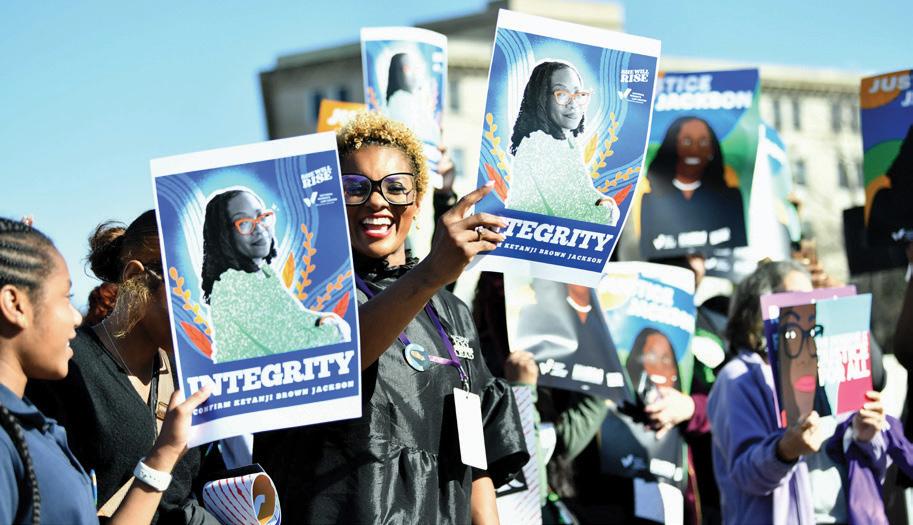
ey’re also seizing on what could be the Biden administration’s final year to push for rules on pay transparency, Title IX, and contraception.
It’s Time To Be Bold and Innovative in Fighting for Women’s Rights
Since its founding in 1972, NWLC has been intimately involved in the fight to protect, defend, and enshrine our freedoms in the U.S. As Goss Graves says, the early ’70s was a time when NWLC founder and co-president emerita Marcia Greenberger, legal icon Pauli Murray, and Ruth Bader Ginsburg “had to imagine not only a world that looked really different from the one they were inhabiting but the tools needed to get them there.” e challenges of our current era are extensions of that same fight, and considering the current backlash, it’s more essential than ever to be bold and creative in how we fight for the rights of women and girls. We are grappling with, as Goss Graves says, whether we are a country that is moving towards a narrow, overpoliced definition of gender roles, or one that embraces a more expansive vision of gender equality and thus ensures the future of our democracy.
National Women’s Law Center nwlc.org
Andrea Pagano-Reyes Vice
Presidentfor Development (202) 306-9759 apaganoreyes@nwlc.org
Ways to Give... By Check or DAF:
National Women’s Law Center P.O. Box 200871 Pittsburgh, PA Zip: 15251-0871
Tax ID# 52-1213010
In the U.S., there is no constitutional protection against sex discrimination. ere is no explicit guarantee of equal rights for all regardless of sex. Simply put, men and women are not equal according to our Constitution.
In 1923, legendary activists Alice Paul and Crystal Eastman sought to change this by introducing the Equal Rights Amendment (ERA) in Congress. roughout the ensuing years, the proposed amendment kept getting reintroduced. In 1971, it was finally passed by the House, and in 1972, it was passed by the Senate. By 2020, the necessary two-thirds of the states had ratified the ERA. But pending complicated, lengthy legal challenges, today the ERA is still not a constitutional amendment.
and political empowerment. Iceland ranks at the top of their list of countries closing the gender gap. Where does the U.S. rank? Forty-third out of 146 countries in 2023. Down from 27th in 2022.
e ERA Coalition is determined to change that. “Our democracy would be much stronger if we had equality on the basis of sex in our Constitution,” says Hager. “Equality is fundamental to democracy.”
T“ Our democracy would be much stronger if we had equality on the basis of sex in our Constitution.
Equality is fundamental to democracy.”
“We have fulfilled all the requirements. It just needs to be published. We don’t have it; we should have it. ere’s just no one willing to do it,” says Bettina Hager, the ERA Coalition’s chief of policy and programs.
The ERA Coalition is a movement designed to push forward, on every front possible, the advancement of equality and the ultimate recognition of the ERA. e ERA would create a permanent constitutional basis for protecting reproductive rights, ensuring equal pay for equal work, providing stronger protections for survivors of domestic violence and sexual assault, and prohibiting discrimination against LGBTQIA+ people. Few women globally have true gender equality. e World Economic Forum compares countries’ gender gaps across four dimensions: economic participation and opportunity, educational attainment, health and survival,
he ERA Coalition convenes a diverse alliance of over 300 partner organizations representing 80 million people across the country. ey employ a vast array of far-reaching strategies, including mobilizing support on Capitol Hill, legal expertise, research, tracking candidates’ positions on equality issues, and educational media outreach to galvanize efforts nationally to champion the ERA movement. ey have state policy working groups pushing for more ratifications, state-level ERAs, resolutions to support recognition of the federal ERA, and audits of state laws and administrative codes for compliance with the ERA. Additionally, they have several youth group members, including Feminist Front and Young Feminist Party, and young women forming their own youth coalition for the ERA, which the ERA Coalition supports with resources and mentorship.
“We are keeping the drumbeat going and making sure that everyone knows that people around the country care about equal rights,” says Hager.
Today, 85% of the 193 United Nations member states have a provision in their constitution that specifically addresses gender equality – but not the U.S.
“Right now, we don’t even know what it would feel like to live in a country that guarantees equality,” says Hager. “We only know what it feels like not to have it.”
ERA Coalition eracoalition.org
By Check or DAF:
CEOZakiya Thomas President and
(703) 239-3788 zthomas@eracoalition.org
Fund For Women’s Equality 1 Thomas Circle Suite 700
Washington, DC 20005 Tax ID# 47-1180199
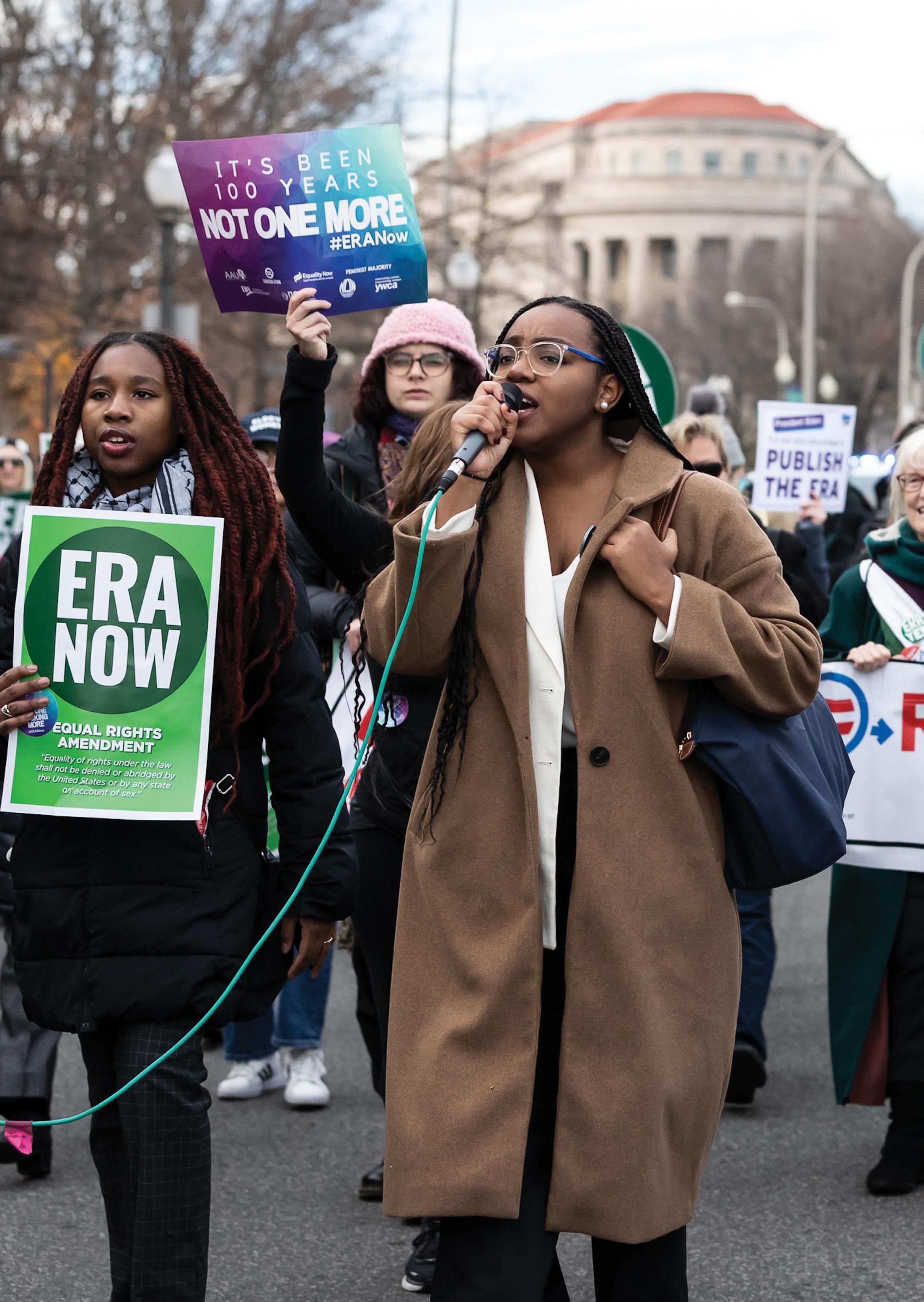
Equal Rights Amendment supporters marching on December 13 on the 100-year anniversary of the ERA’s introduction in Congress. (photo by
Allison Bailey)
It wasn’t all that long ago here in the United States, when women were not allowed to own property, open a bank account by themselves, or apply for a credit card on their own. It wasn’t until the passage of the Equal Credit Opportunity Act in 1974, that women were finally granted the right to open a bank account on their own. This act also allowed women to apply for credit and commit to a mortgage without a male co-signer. I was in high school, working, and had no bank account yet. My mother was divorced. She had been a teacher when I was young but wanted to go to law school not only because she had a passion for the law but because she needed a way to provide a secure life for her three children and some financial security for her future. She had graduated UCLA and been a stellar student. UCLA Law turned her down because, they told her frankly, without a “male co-signer” for her law school tuition they didn’t believe she could pay her way on her own. She found a small law school located deep in the heart of the San Fernando Valley where the dean was a divorced woman. They accepted my mother – she worked a job all day and then attended law school at night. She paid the tuition all on her own. She passed the bar the first time and became a successful union attorney. But it was an absolute, exhaustive struggle, one that her male counterparts did not have to face.
While women today have greater autonomy over their finances than they did back then, they are still significantly economically disadvantaged compared to men across the globe. Women continue to have to fight for basic avenues of security. For their financial security – for access to education, for loans and entrepreneurial start-up support, leadership positions, and for the closing of the gender pay gap. For their housing security – to be safe if they are unhoused, to be safe in shelters, to find support and vital services during commu-
nity or country-wide crises. And they fight for their health security, the very access to affordable, foundational services.
Rarely does a day go by when you don’t pick up a newspaper, a magazine, watch the news, or read on the internet a story about women somewhere around the world whose security has been threatened, terrorized, violated, or suppressed. Young women trapped working in the sugar cane fields in India being forced to get hysterectomies because they can’t see doctors when they begin menstruating. Women forcefully taken by armed groups in Haiti and used for tactical gains. The continuing failure in the United States to stem the tide of maternal deaths. (The CDC puts the current U.S. maternal mortality rate at a whopping 32.9 deaths per 100,000 live births. That already staggering number jumps up to 69.9 deaths per 100,000 live births for Black women.)
In the ensuing pages you will read about women changemakers and their inspirational organizations who share the common goal of fighting to help women and girls have access to crucial, fundamental services needed so that women and girls can thrive and build a future. A secure future. Their work shines a light on grassroots organizations that are building hope, stability, and a more equal future for women and girls. They are helping to increase women’s access to financial resources, support systems, education, training, healthcare, revenue generation, and so much more. From Somalia to Guatemala to the United States, these organizations run by women to reach out and lift other women up, are providing loans, business savvy know-how, they’re building health and homelessness centers, and they’re helping the most vulnerable women find paths to safety and security.
And they never ask if that woman can pay her way.
Kavita Ramdas is a globally recognized advocate for gender equity and justice, at home in academia, the corporate boardroom, and the larger activist community. She may be best known for her work as the president and CEO of the Global Fund for Women, one of the world’s leading foundations for gender equality, from 1996 to 2010. During her tenure, the organization dramatically grew its funding and global reach, with grants increasing to $8 million per year and expanding to reach 160 countries. The Fund has awarded over $100 million in grants to over 4,000 organizations.
Ramdas’ work at the intersection of gender, democracy, development, and philanthropy led her to direct Stanford University’s Program on Social Entrepreneurship, as well as the Open Society Foundations’ Women’s Rights Program. At Open Society, she ensured that the Foundations made their largest-ever investment in gender justice with a $100 million commitment to the Generation Equality Forum.
She has been a senior advisor for global strategy at the Ford Foundation, served on the Global Development Program Advisory Panel for the Bill & Melinda Gates Foundation, and advised United Nations (UN) Secretary-General António Guterres on the importance of gender equality in the UN Sustainable Development Goals. Ramdas continues her advisory work through KNR Sisters, her feminist consulting firm.
In addition to many other awards, Ramdas received the 2010 Women’s Funding Network’s Changing the Face of Philanthropy Award and was named one of the 21 Leaders for the 21st Century by Women’s eNews.
Giving List Women: Through your work in feminist philanthropy, you’ve seen a lot of evolution. What stands out to you about this moment?
Kavita Ramdas: I have to locate this in a larger political reality context. We’re in the middle of a difficult time for the world and for the positionality of the Global North versus the Global South. All of that affects philanthropy and feminism.
The Greek root of the word philanthropy simply means love of humankind. And how are we expressing our love of humankind at a time of such deep divisions,
“For over 50 years, we’ve had the evidence. If you feed a woman, educate a woman, birth rates go down, child malnutrition decreases. I don’t think this is about having facts. I would posit that it’s because everybody knows what the power and agency of women can do –that there is anxiety and fear and downright resistance to actually making it happen.”
when we are othering large groups of people as less than other groups of people?
Much of philanthropy wants to do the right thing, but we don’t agree anymore on what right is or what it means to have equal and fair standards for all people. And it becomes difficult for feminists to argue from a clear, unequivocal position. And it’s clear that the gains we’ve seen in the last 75 years are under threat. And not just in the developing world – in the U.S. as well.
GLW: The world is deeply divided, and women are no exception. We’re not monolithic. Would it be useful to have rules of engagement to help us have productive dialogue?
KR: That speaks to me. We shouldn’t assume all women share the same understandings about what it even means to be a woman or that our aspirations are the same or that we aren’t complicit in patriarchy ourselves. I grew up in a country where every day, 17 women lose their lives to dowry deaths. And it isn’t men who are burning them alive – it’s their mothers-in-law.
For me, feminism has nothing to do with what’s between your legs; it’s what’s between your ears. And what you expressed is an ideal I strive for: Is there a way for us to have reasonably respectful conversations with people who see the world very differently from the way we do?
I’ve tried hard, and the Global Fund for Women was a
huge part of this, to stop making assumptions. We made many assumptions about Republican women or people who want to shut down discussion about abortion, but have we tried to have a conversation? To meet women where they’re at? To understand that this is a difficult decision? I don’t come from the same places as others, and if I can approach things from a place of listening and learning – not be meek about my position, but be open to hearing something that will teach me a different way.
GLW: Less than 2% of philanthropic dollars go toward women and girls. Would it help if donors applied women and girls as a lens in their giving?
KR: Totally. I use the word prism because a prism allows you to see all the rainbow colors that light has. To see what diversity means. There are intersections with things we have no idea would be related to what it means to view the world through a more gender-just lens.
The lens metaphor developed from conversations with many brilliant women who take giving very seriously but still see women and girls as one lane of work. I think they’re missing the intersectional piece, and the understanding that women and girls are a powerful lever for change. Helping people think about it as a lens rather than a lane is super helpful. It’s simple.
GLW: Do you think people need more data to understand the power of that lens?
KR: I’m going to say something controversial: I don’t think we lack the data. For over 50 years, we’ve had the evidence. If you feed a woman, educate a woman, birth rates go down, child malnutrition decreases. I don’t think this is about having facts. I would posit that it’s because everybody knows what the power and agency of women can do – that there is anxiety and fear and downright resistance to actually making it happen.
Many women have been taught defining dominant narratives that go something like: We won the battle on women’s rights. Women got the right to vote in 1920. We’re a developed country. The issues with women and girls have been addressed. Now, it’s about climate change, war, and starvation. The lens on women and girls is resisted, not because women are not progressive or don’t want to do the right thing, but because I think we underestimate the osmosis of the dominant narrative around us.
But women and girls are leading environmental justice struggles and are actually key to shifting. There was a report that came out by [Project Drawdown Founder] Paul Hawken saying the two most significant things you can do to bring down the carbon emissions in the planet is give women and girls access to contraception and sexual and reproductive rights and to education.
I think it’s about an underlying fear patriarchal societies have of just how radical this transformation would be
if women and girls all over were treated as equals with a voice and a say and the ability to actually act with independence. This is a substantial fear that feminists need to take seriously.
GLW: What would you point to as the most transformational piece of your work?
KR: Global Fund for Women profoundly changed the way I was able to understand the world – my transformation about issues of tradition, around listening, my framing of the analysis that I had on critical issues, which allowed me to bring that lens or that prism to other kinds of work. I can’t not have that gender lens. And I realized three things about philanthropy: First, that in the giving, you are also receiving countless things that you’re not even aware of. Second, that the power of money is in the collectivization of that money. Global Fund for Women was able to go from an organization that was 90% dependent on big foundations to, when I left in 2010, an organization where almost 50% of the resources came from individual women and girls. And third, it taught me to be brave in mainstream spaces, which sounds counterintuitive because I was inside a feminist organization, but I had to raise money from places that weren’t. My ability to talk to Jamie Dimon from JPMorgan Chase, who had three daughters, about growing up as the eldest of three girls in India, and how moved he was by the fact that he wanted the best for his girls. There are dads all over the world who want that for their girls. Fathers are not just oppressive patriarchs. In many places where the Global Fund was, it was fathers who stood with daughters over the objections of their mother.
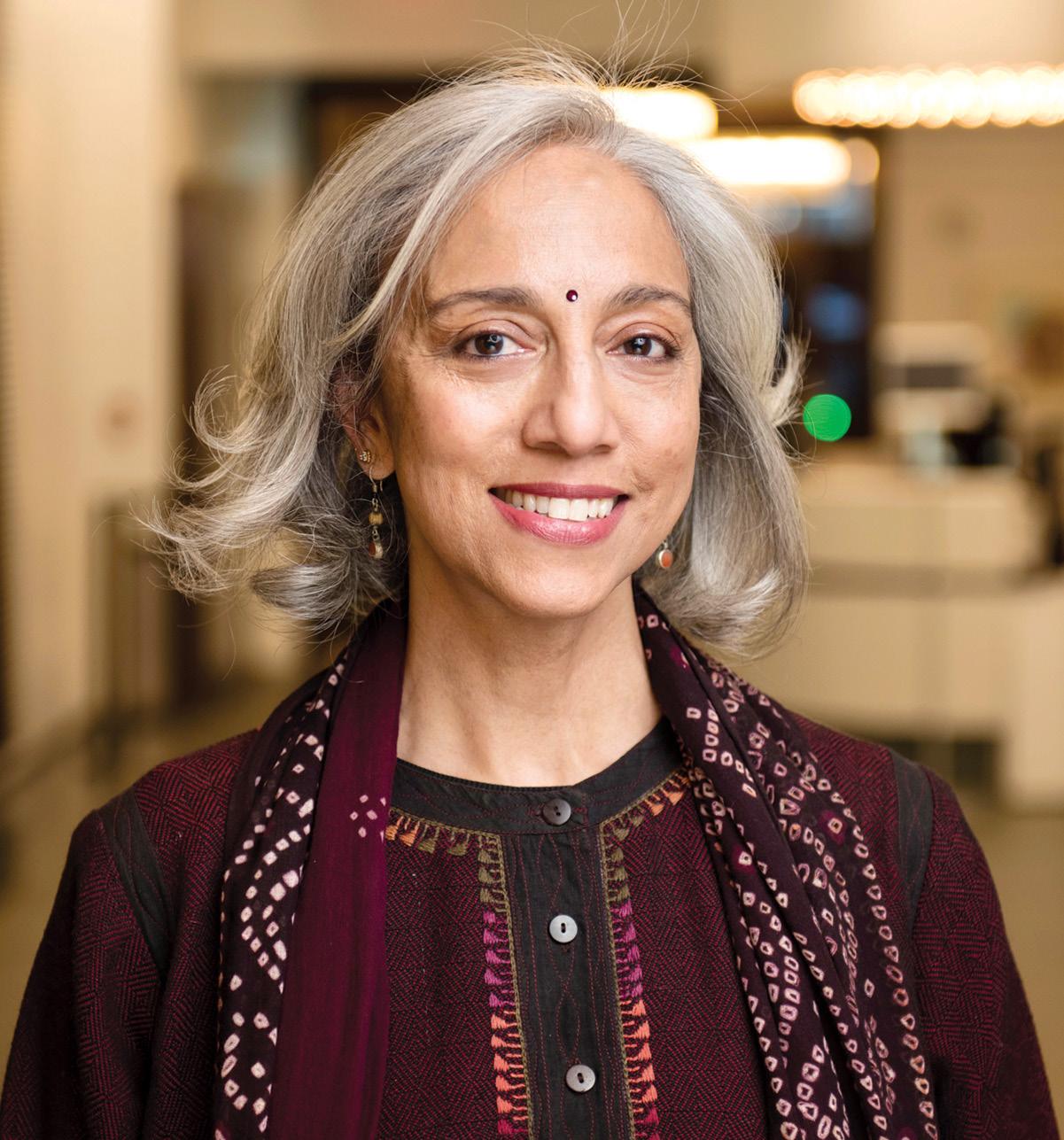





For decades, feminists have debated over whether sex work is a viable profession or inherently exploitative. e result of this debate has been con ict amongst impacted individuals, the fragmentation of feminist movements, and policy gridlock. Enter New Moon Network, an organization moving beyond the debate to serve the interests of all people in the sex trade. rough capacity-building programs, technical assistance, and regranting, New Moon supports sex worker- and survivor-led e orts around the country, and uplifts projects poised for impact to philanthropists.
New Moon is led by the people it serves. e project is co-directed by Melodie Garcia and Savannah Sly, who have a combined 20-plus years of experience in direct services provision and policy advocacy. Both Sly and Garcia have lived and studied experience in the sex trade, which equips them with necessary perspectives for supporting grassroots leaders in impacted communities. “We want to melt the political divide between survivors and workers,” states Garcia, “and to build the tools we wish we had as new activists.”
At the heart of New Moon’s mission is the promotion of self-determination and stability for individuals, which Sly and Garcia believe are central to addressing exploitation. “People are less likely to be exploited in the sex trade or other industries if they have access to basic resources such as housing, healthcare, education, and unrestricted income,” explains Garcia. “People in the sex trade understand this, and New Moon is committed to uplifting their leadership.”
New Moon pursues its mission in three ways: by educating donors; by o ering capacity-building support to grassroots leaders; and by serving as an intermediary funder. New Moon consults with philanthropists and donor networks to connect the dots between movements. “Due to discrimination in philanthropy, many sex worker-led groups don’t disclose their identities to funders,” explains Garcia. “ ese groups might present as LGBTQ+, POC, or women-led instead of sex worker-led. ey might promote their work as criminal reform, HIV/AIDS prevention, or anti-tra cking focused. While all of these descriptors are accurate, it’s unfortunate that sex workers feel the need to obscure their expertise due to stigma.” Sly expands, “New Moon maintains a list of 230-plus sex worker-led organizations in the U.S. In 2015, there were only about 20 such groups. at’s a 1000% increase in eight years! Our goal is to educate philanthropy on why this movement is accelerating, who is leading it, and why their work is relevant to women’s rights, LGBTQ+ rights, and immigrant and disability justice, to name a few connected issue areas.”
The reception to New Moon has been positive, with the organization receiving matching support from feminist programs such as the Matching Program to Unlock Giving to Expand Women’s Power & In uence, the Abortion Bridge Collaborative Fund at Women Donors Network, and Mama Cash, and criminal reform funds such as Vital Projects. However, New Moon has faced systemic barriers because of its centering of sex workers’ rights. “We were denied scal sponsorship by a major progressive foundation because we support sex workers’ rights,” remarks Sly. “ at stung, but it’s exactly the kind of discrimination we’re here to address.”
Since its inception in July of 2022, New Moon has brokered over
$1,200,000 to sex worker- and survivor-led organizations in the U.S. e organization has invested deeply into the Community Support Line hosted by SWOP Behind Bars, which is the only national direct service supporting both survivors of exploitation in the sex trade and sex workers. “Receiving exible core funding and technical support from New Moon has been a game changer,” says Blair Hopkins, the executive director of SWOP Behind Bars. “We’ve used the funding from New Moon to expand the line into key regions and develop a comprehensive database for direct service referrals.”
New Moon o ers monthly open calls for microgrants of $1,000 and employs a panel of community advisors to decide on applications. “We want to decrease competition and increase opportunity,” Garcia says of the microgranting program. “We’re excited to see these groups using microgrants as springboards to secure bigger funding opportunities.” One such group is Ishtar Collective, a survivor- and sex worker-led group in Vermont. “New Moon publicly supported our food justice program, which encouraged other funders to take us seriously,” says Ishtar Collective Co-Founder Henri Bynx. “ ey also helped us get a scal sponsor. Now we’re getting ready to open a drop-in health clinic for people in the sex trade, right here in Vermont.”
Small infusions of cash provided by New Moon can be instrumental to harm reduction and mutual aid collectives such as SWAID in Las Vegas, which does streetbased outreach distributing reproductive health supplies, as well as Narcan and Fentanyl strips, or to MO Ho Justice in Missouri, which creates community spaces for POC and LGBTQ+ individuals in a deeply red state. New Moon also funds direct services programs such as Kylexus Kitchen, which distributes hot meals to people in the sex trade at community events in New York.
New Moon knows it will take more than money to help grassroots organizations succeed, which is why they also o er capacity-building tools. New Moon has partnered with Woodhull Freedom Foundation to host a free online leadership academy called Spokes Hub, which offers training, group discussions, and even nancial incentives for advocates with lived experience in the sex trade. “Spokes Hub helped me tell my story on my own terms,” shares Melissa Gri n, a survivor of sex tra cking who was arrested and put on a sex o ender registry. “ ey’ve been supportive emotionally and nancially when I’ve chosen to educate parole o cers or the media about sex tra cking. Now I’m preparing to teach my rst class for Spokes Hub as a peer educator.” To date, the successful pilot program has paid out over $10,000 to a pool of 20-plus graduates, and engaged over 130 unique participants. “ ere’s a huge demand for this kind of program,” Sly observes.
Leadership at New Moon has a clear vision for the future. e team is working to bridge feminist and social justice movements to collectively build a society where people
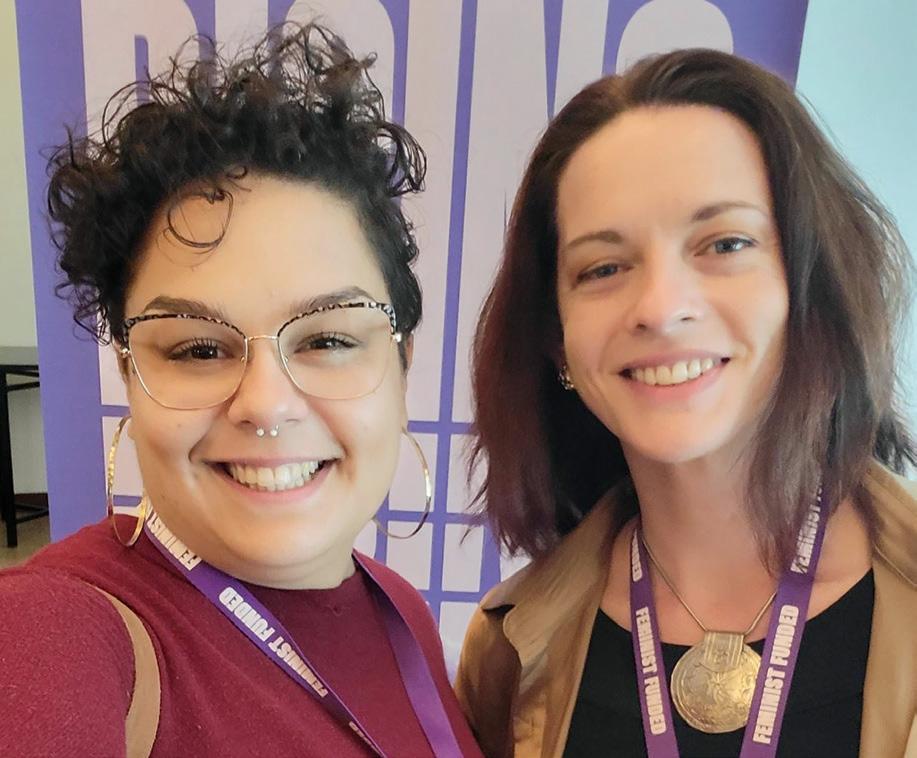
have freedom, rights, and access to the building blocks necessary for determining their own futures. “I envision a world where young LGBTQ+ kids aren’t kicked out of their homes and left with no other option than to trade sex,” says Garcia. “ is world is also one where women of color have meaningful job opportunities, and where everyone has access to education, housing, and healthcare.” Sly takes it a step further: “If we’re successful, adults will have the agency to choose sex work or avoid it completely. People who choose sex work will be protected from violence, banking discrimination, loss of child custody, eviction, or other societal hazards.” When asked where the name New Moon came from, Sly smiles and explains, “ e moon is always in the sky, but you can’t always see it. People in the sex trade are similar. … You can’t always see us, but we’re always here. Like the waxing moon, we are emerging from darkness into bright, brilliant fullness.”
To learn more about sex worker- and survivorled initiatives and ways to support, contact us:
Savannah Sly Founder & Co-Director director@newmoonfund.org (202) 599-6212
Woodhull Freedom Foundation 3302 Gleneagles Drive Silver Spring, MD 20906
Tax ID# 11-3681116
*Please indicate New Moon Network with your donation
She came to Portland, Oregon, from Lebanon with a husband and children and the promise of the American Dream dancing in her head. Within a few years, she was being sex trafficked. Her husband abused her, and when she finally found the courage to file for divorce, he used his American family to employ a team of top lawyers to wrest custody of their two sons. She tried to cope, got a job, and met a man on a dating app. But he, too, was violent. Far from her home country, isolated and vulnerable, and with no support system and no money, she ended up being trafficked.
ere are more than 4.8 million victims of sex trafficking globally (according to the United Nations’ International Labour Organization). And, while traffickers prey on people of all ages and backgrounds, 99% of the victims are women and girls.
e woman from Lebanon ultimately escaped this harrowing situation when she stumbled on a resource card in a Las Vegas brothel for e Cupcake Girls.
Respect. Resources. Relationships.
Founded in 2011 in Las Vegas, e Cupcake Girls is a nonprofit organization that provides confidential, nonjudgmental support, and a range of holistic resources and referral services to those involved in the sex industry, as well as prevention and aftercare services to those affected by sex trafficking.
According to the Urban Justice Center, 45-75% of sex workers will experience violence during their lifetimes.
e Lancet Public Health says that sex workers are at greater risk of poor mental health, social exclusion, violence, and homicide.
e Cupcake Girls aims to ensure consensual sex workers are safe and empowered by offering them a wide range of direct care programs in a confidential, safe place. Among these services are: a Referral Program, which gives referrals to vetted safe partners and resources for pro bono or low-cost assistance (such as to doctors and therapists); an Advocacy Program, which provides an advocate who meets weekly with participants to help them set and achieve long-range goals; and their Outreach Program, where they use their famous pink cupcakes to build trust within the community.
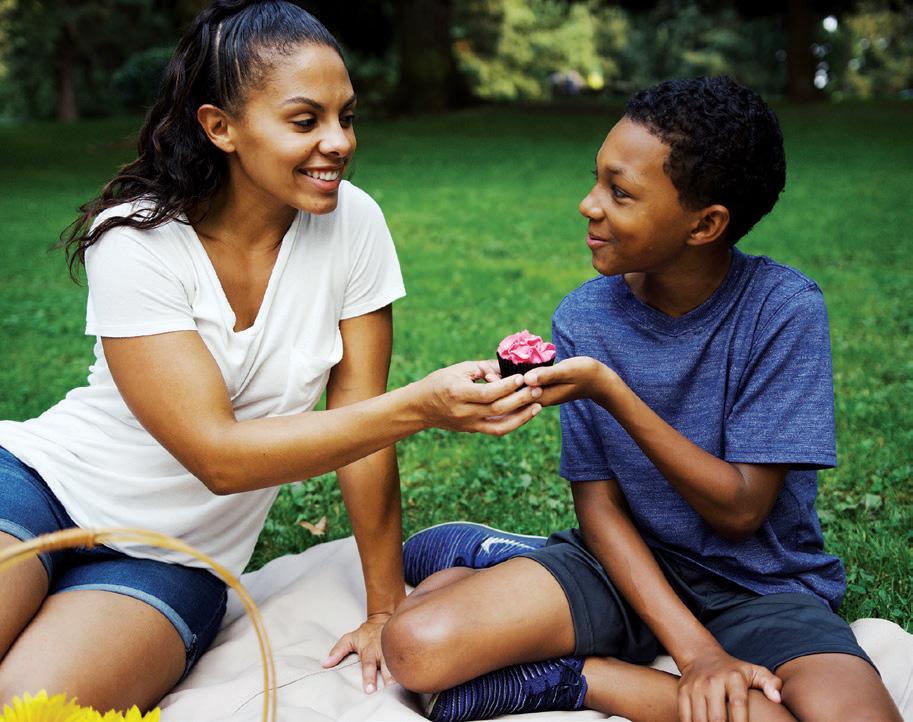
It all begins with a cupcake.
In the organization’s early days, members visited clubs in Las Vegas toting boxes of pink cupcakes because they were an icebreaker. Eventually, the cupcakes became a symbol of trust between the sex workers and those working to help them. e girls would call out, “ e Cupcake Girls are here!” – which is how the organization got its name.
e Cupcake Girls has served over 10,000 women since its inception and plans to support another 600 in the coming months.
“Over these years, we have shifted our approach from a savior mentality to listening and engaging with voices of Indigenous and Black women,” says Amy-Marie Merrell, co-executive director of e Cupcake Girls. “By doing that, we are not only challenging hierarchies, but we are investing in people with lived experience.”
As for the woman from Lebanon, e Cupcake Girls connected her to a pro bono lawyer, who helped her finalize her divorce and relocate to Portland to be closer to her children.
The Cupcake Girls
www.thecupcakegirls.org
Amy-Marie Merrell Co-Executive Director(207) 200-8094
amy@thecupcakegirls.org
Ways to Give...
By Check or DAF:The Cupcake Girls
3110 South Valley View Blvd. Suite 201
Las Vegas, NV 89102
Tax ID# 45-3970815
Liliana, a survivor of domestic violence, found herself displaced from her home at the age of 55. Struggling to afford housing and lacking adequate support from her family, she faced the terrifying prospect of homelessness. However, her trajectory changed when she discovered the Downtown Women’s Center (DWC) in Los Angeles. DWC provides essential services, including supportive housing, a day center, a health clinic, and educational and job training programs. DWC stands as the only organization in Los Angeles dedicated to empowering women and gender-diverse individuals experiencing homelessness.
Liliana was provided with permanent supportive housing and mental health services at DWC, and today, she is an advocate for more and better services for women experiencing homelessness. Her story mirrors many of those of the over 5,000 homeless women who access DWC services every year.
“Sometimes a basic meal or shower leads to permanent housing that DWC owns and operates,” says Amy Turk, chief executive officer of DWC, adding that their mission is to end homelessness for women in Los Angeles.
In 1978, Jill Halverson, founder of DWC, pioneered solutions to rewrite the narrative for women experiencing homelessness, many who face various physical and mental health issues, a heightened risk of gender-based violence, and a lack of social support networks. ese vulnerabilities are exacerbated by the ongoing shortage of safe, affordable housing in Los Angeles, which disproportionately affects women across all age groups.
“We strive to empower women to end homelessness by offering housing, employment opportunities, and healthcare,” says Turk, emphasizing DWC’s commitment to holistic support.
According to DWC’s 2022 Los Angeles County Women’s Needs Assessment, more than 14,000 unaccompanied women were experiencing homelessness in Los Angeles County. Seventy-five percent of these women were unsheltered and facing distinct and multifaceted challenges that demanded urgent attention, such as repeated harassment, threats and theft. DWC is at the

forefront of providing much-needed solutions to these growing, pressing issues facing women.
eir emphasis on a “Housing First” and trauma-informed service model includes: access to basic needs and resources; on-site housing and supportive services; community-based housing; job readiness and employment; and advocacy. Currently, DWC manages 119 units of permanent housing in the Skid Row Community of Downtown Los Angeles. DWC is in the process of developing three new buildings with over 180 new homes for women by 2026.
Engaging with women and understanding their needs is at the heart of every program at DWC, says Turk. Unlike some programs, where individuals may have to meet requirements before gaining access to services, DWC creates a safe and welcoming environment focused on enabling women to direct their services and thrive.
e Center’s social enterprise, MADE by DWC, provides work opportunities through a product line of handmade items, now sold in a coffee shop and a resale boutique of the same name. is nationally recognized model of combining housing, wellness, and employment services can and should be replicated everywhere.
DWC envisions a Los Angeles where every woman is housed and on a path to personal stability.
downtownwomenscenter.org
Jesse Pittman Chief Development O cer
(213) 680-0600 x2818
jessep@downtownwomenscenter.org
Ways to Give... By Check or
DAF:Downtown Women’s Center
442 S. San Pedro St. Los Angeles, CA 90013 Tax ID# 31-1597223
When Ilwad Elman visited her native Somalia, she was eager to reunite with her peace activist mother, who had moved back home three years before.
Elman wanted to understand what had compelled her mother to leave her and her two sisters behind, swapping a peaceful existence in Canada for one marred by decades of civil war.
But in Somalia, Elman’s search for understanding blossomed into a powerful purpose. After seeing firsthand the discrimination her widowed mother faced, along with the pervasive violence, marginalization, and abuse endured by countless Somali women, Elman was propelled to pick up the torch of activism like her parents.
“Somalia unveiled a truth I hadn’t known and that fueled my passion to join my mother … and her cause didn’t just unite us as mother and daughter, but as women,” says Elman, chief operating officer for the Somalia-based Elman Peace.
She stayed in Somalia with her mother, Fartuun Adan, to carry on the legacy and vital work of her father Elman Ali Ahmed, whose life was tragically cut short. In his honor, Fartuun founded the Elman Peace Centre.
Months after Elman’s arrival in Somalia, a devastating drought and famine gripped the country. Hundreds of thousands of Somali women and children, desperate for aid, undertook arduous journeys on foot to the capital, Mogadishu. But the internally displaced persons (IDP) camps were breeding grounds for sexual violence. Recognizing the complete absence of services to protect women and provide safe housing, health care, or violence prevention measures, Elman felt compelled to create a solution.
Elman and her mother raised funds to create Sister Somalia, the nation’s first rape crisis center and safe house, through Elman Peace. Today, the Elman Peace program serves thousands of women, provides life-saving treatment and shelter for survivors, helps girls and women rebuild and reclaim their lives through mental health support, education, vocational skills development, and provides them with grants and coaching to establish businesses.
When 15-year-old Zahra was referred to Sister Somalia several years ago, she was a mother of two who had been forced into marriage, was then divorced, and ostracized by her family. e Sister Somalia program provided her with education, counseling, and productive skills that helped
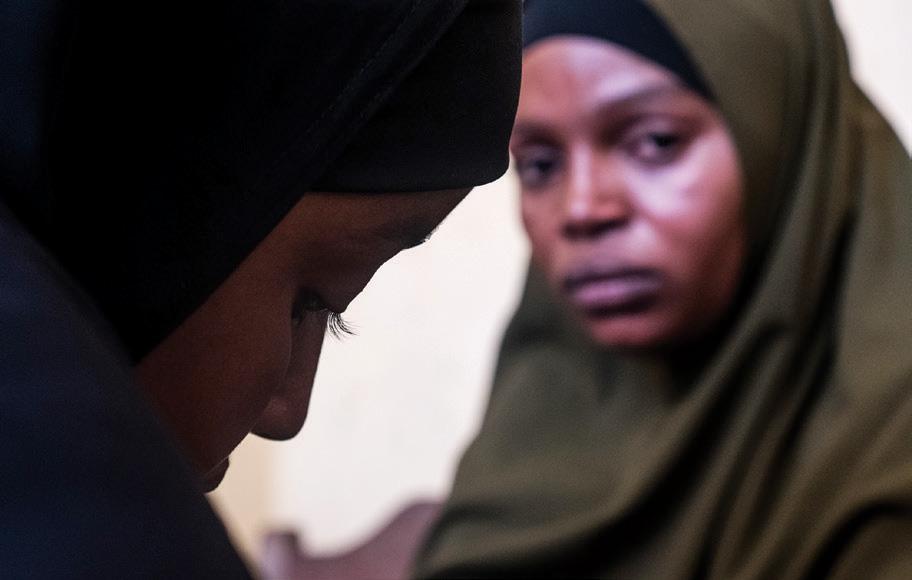
The light within her burns stronger than any darkness. Elman Peace supports survivors to rebuild and reclaim their lives through comprehensive services.
her start her own beauty business.
“Zahra hung a sign outside of her home, launching her entrepreneurial journey, a turning point that changed everything,” Elman says.
“Elman Peace is my real family,” says Zahra, now 22, through a translator. “ ey did what my own family should have done, and they do this for everyone.”
“It’s a Movement.”
The Sister Somalia program also engages in tireless advocacy, Elman says. ey championed a landmark law that criminalizes female genital mutilation that passed earlier this year.
Elman, a Nobel Peace Prize nominee, is buoyed by the progress, despite the undeniable risks and tragedies. Her sister Almaas, also a rights activist, was fatally shot in the capital in 2019.
“ e fight persists, but with our partners’ support, Sister Somalia has become more than a project - it’s a beacon of hope in Somalia. It’s a replicable model, a self-sustaining movement. Together, we invest in acute locations, empowering women to build support systems that grow with them. ey thrive, and the movement ripples outward,” she says. “It’s humbling to witness the transformative impact we achieve together.”
Elman Peace Center – Somalia
www.elmanpeace.org
Ilwad Elman Chief Operating O cer
+252612103454
ilwad@elmanpeace.org
TaxID: EIN 58-2277856
Elman Peace is fiscally sponsored through Myriad USA, a public charity. Donors may claim the maximum tax benefits allowed by U.S. tax law for their contributions.
Grameen America offers a unique, proven solution to economic inequity in the United States, serving women entrepreneurs who are often the most disproportionately excluded from the mainstream financial system. e nonprofit microfinance organization started in New York, in 2008 and has since reached 200,000 entrepreneurial women with dreams of launching or growing a small business.
Grameen America helps women build their financial resilience and mobility, improve their credit identities, generate wealth for their families, and transform their communities through job creation and economic growth. ey do this by offering access to affordable capital with first-time loans of up to $2,500, financial and health education, asset- and credit-building support, and peer networking.
Grameen America’s Group-Lending Model
“I n the current global banking system, credit decisions are stacked against the most vulnerable populations,” says Rajitha Swaminathan, vice president of program strategy and member experience at Grameen America. “It is very difficult for lower-income groups, including women of color, with no prior credit history, documentation, and education standards, to secure credit.”
Grameen America does not require traditional collateral to join the program, but relies on a group-lending model that promotes group vetting, accountability, and trust. As a result, members in the program have a stellar 99% loan repayment rate.
Grameen America’s program demonstrates proven impact. In 2022, MDRC, a nonprofit research organization, published a 36-month impact assessment of the Grameen America model. e study showed “an increase in credit scores, business ownership, and business earnings and a reduction of material hardship.”
e organization continuously enhances its wraparound services to meet members’ needs through credit establishment, long-term asset-building, business education, and digital technology.
L issette was working as an esthetician in e Bronx when she realized that she was hugely underpaid compared to other colleagues. Lissette’s lifelong passion for beauty and skincare fueled her dream of starting her own spa business.
With microloan and peer networking support from Grameen America, she became a proud entrepreneur and owner of her first retail beauty and spa store, Bella Shique.

Grameen America members in Newark, New Jersey, gather in person to share business advice, support each other, and connect with likeminded entrepreneurs. (photo by Vera Rubtsova)
“Our relationship with women is not just about finances,” says Swaminathan. “We make sure that they harness a feeling of ownership so that they are able to take control of their lives.”
“Mainstream financial banks in the U.S. serve high-net-worth individuals with million-dollar mortgages, but the marginalized women that Grameen America serves are not their target audience,” says Swaminathan. “ e numbers tell the story. Grameen America has created over 200,000 jobs and disbursed over 1 million loans worth over $4 billion.”
rough a combination of philanthropic support, loan investment, and revenue generation, Grameen America’s goal is to cumulatively invest $40 billion in 750,000 women over the next 10 years.
Grameen America’s trailblazing work means more and more underserved women have access to fair and affordable financial services, creating a ripple effect on their businesses, families, and communities.
Grameen America, Inc.
GrameenAmerica.com Jill Monum Vice President Development and Marketing jmonum@grameenamerica.orgWays to Give... By Check or DAF:
Grameen America, Inc. 82-11 37th Avenue Suite 607 Jackson Heights NY 11372
Tax ID# 20-8497991
Every time Mayra, 34, talks about her financial struggles, her eyes well up with tears.
“‘Do not give up. You are not the type of woman who gives up. Where is your spirit?’” Mayra recalls a facilitator from Friendship Bridge encouraging her.
Friendship Bridge is a nonprofit social enterprise helping Indigenous Mayan women in rural communities of Guatemala gain access to sustainable business opportunities. e facilitator trained Mayra in her Indigenous Mayan language through Non-Formal Education classes, a critical component of Friendship Bridge’s Microcredit Plus program aimed at alleviating poverty.
Started in 1998 with just 25 women, most of them widowed after three decades of civil war, Friendship Bridge now supports nearly 35,000 women annually through its 12 branches spread throughout the region. Almost 53% of Friendship Bridge’s clients live below Guatemala’s national poverty line.
Mayra undertook business development training at Friendship Bridge and gained critical access to peer networks and new markets. Mayra also took part in a “Trust Bank.” An integral part of Friendship Bridge’s Microcredit Plus program, a Trust Bank is made up of seven to 25 members, like Mayra, who co-guarantee individual members’ loans. In monthly repayment meetings, the women also participate in Non-Formal Education sessions. With her newfound support and knowledge, Mayra started a transportation business that delivers construction materials, sand, gravel, and pumice stone. She now has five trucks, one of which she drives herself.
She is also breaking gender stereotypes in Guatemala’s male-dominated transportation industry.
Guatemala is Latin America’s most unequal country. Two-thirds of the nation’s population live on less than $2 (U.S.) per day. Poverty affects Indigenous people disproportionately, as 80% of them experience deprivation in multiple aspects of life, including food security, nutrition, health, education, and gender equality.
Tracie Cordeiro, President and CEO of Friendship Bridge, is proud of clients like Mayra who meet their unique needs through specially designed credit products, technical training, Non-Formal Education, business assistance, and access to preventive health services.
“Mayra’s story speaks to me in so many ways. She is the

epitome of our intended impact. She learned and grew her business without any formal education while also employing community and family members,” says Cordeiro.
Mayra treasures being a part of a Trust Bank where conversations range from business to nutritious food.
“Normally, banks give you money, and you have to figure out what to do with it,” Mayra says. “But here they (Friendship Bridge) come, and they visit us to see how we are doing and whether our lives are running smoothly.”
For Cordeiro, building a strong relationship with clients like Mayra is the need of the hour to help women increase their resilience, grow businesses, create generational change, and experience greater empowerment. “ at is the ultimate goal of Friendship Bridge,” she says.
In 2023 alone, Friendship Bridge disbursed nearly $26 million in loans to nearly 35,000 women, reaching a year-end gross loan portfolio of $15 million, a 13% increase over 2022. eir microcredit program, and its compassionate components of serving small businesses without requiring collateral, was recognized in 60 Decibels’ 2023 Microfinance Index as a top performer in Latin America for its positive social impact.
Friendship Bridge www.friendshipbridge.org
Nicole Eubanks Chief Development O cer(303) 674-0717
neubanks@friendshipbridge.org
By Check or DAF:
Friendship Bridge
405 Urban Street Suite 140 Lakewood, CO 80228 Tax ID# 84-1141078


An individual loan from Friendship
allowed
to purchase a bulldozer in order to expand her construction materials transportation business. The loan helped her generate more profits and get one step closer to financial independence.
Bridge Mayra (shown)



 by Brenda Gazzar
by Brenda Gazzar


While he was raised in Southeast Los Angeles County by Mexican immigrant parents, Miguel Santana’s life was mostly driven by survival. When his family moved from East Los Angeles into the working-class city of Bell Gardens in 1970, they were the rst non-white residents to move to their block.
“Some people supported that and welcomed us, and some people didn’t,” recalls Santana, who became a father at age 19 and was the rst in his family to attend college. “I have a lot of memories of that experience as a young child – feeling like I didn’t belong.”
Today, the father of four draws on his lived experience to lead one of Southern California’s most in uential philanthropic organizations, the California Community Foundation (CCF), which tackles the region’s most pressing and formidable issues. Whether they’re taking on homelessness, income and educational inequalities, or immigrant integration, the goal is clear but hardly easy – to create a more equitable Los Angeles for all. e Foundation does this through o ering grants and scholarships, advocacy, and advancing systemic solutions that bridge gaps for disenfranchised communities.
“For more than 100 years, CCF has been a leader in connecting donors to some of the greatest issues that we’re confronting,” Santana says. “And over the last 20 years, under the leadership of [past President and CEO] Antonia Hernández, CCF has become a regional leader in advocating for marginalized communities and those who have been left behind during the many periods of economic growth in Southern California.”
CCF, one of the largest and oldest foundations in the state, doles out some $300 million a year in grants, including about $25 million in discretionary grants, to organizations largely serving Los Angeles County. And gender equity is at the center of what the Foundation does.
“All the issues we work on are issues that support women, and by supporting women, we’re supporting families, and by supporting families, we’re supporting communities,” says Santana, who previously led the Weingart Foundation. “We de ne success by how our work advances the quality of life for women and families.”
Among the women-centered organizations that CCF supports is the Downtown Women’s Center (DWC), which aids unhoused women in the heart of L.A.’s notorious Skid Row. DWC o ers women an opportunity not only to be sheltered but to turn their fragile lives around, Santana says.
“More than anything out there, their most impactful way of supporting our community is by putting the issue of women at the forefront of homelessness and housing,” he says.
Women made up about one-third of adults experiencing homelessness in Los Angeles County in 2020; 80% of these women were living on the street versus in a shelter, according to the Los Angeles Homeless Services Authority. Unaccompanied homeless women who are unsheltered are especially vulnerable to violent attacks and to poor mental and physical health compared to homeless women living in a shelter, according to a 2022 Urban Institute report that cited multiple studies.
CCF also supports women-led immigrant advocacy organizations such as the Central American Resource Center of Los Angeles (CARECEN), led by Martha Arevalo, and the Coalition for Humane Immigrant Rights, or CHIRLA, led by Angelica Salas.
“I believe that CCF should be bold enough to bring our community together – our elected leaders, our neighborhood organizations, our civic leaders – to insist that we set ambitious goals that impact quality of life.”
ese nonpro ts have ensured that a Los Angeles network is in place to welcome immigrants like those dispatched by Texas Governor Greg Abbott and “literally dumped at the footstep of [L.A.] City Hall with no support system, often with only the clothes on their back,” Santana says.
Organizations like CARECEN and CHIRLA have helped feed and house immigrants and connect them to any relatives they have around the country, he says. ey’ve also partnered with L.A.’s rst female mayor, Karen Bass, and the all-female Los Angeles County Board of Supervisors, the county’s governing body, to create “a culture of belonging” in the region.
“L.A. County has one of the largest immigrant communities, and we want to ensure that they’re full participants in our economy, that they are able to access services, and that they have the opportunity to really live the dream that they all saw when they came here,” Santana says.
e Foundation, which develops a new strategic plan each decade, is gearing up to launch its next strategic planning process in the coming scal year. Santana has been on tour meeting with area residents about their “hopes and dreams and frustrations,” as well as with donors and elected o cials, to help create a shared vision for Los Angeles.
“I believe that CCF should be bold enough to bring our community together – our elected leaders, our neighborhood organizations, our civic leaders – to insist that we set ambitious goals that impact quality of life, like ending street homelessness. We then use all of our assets, all of our resources, all of our know-how to do that,” he says, adding that he has worked on critical policy issues, like homelessness, during his whole career.
Moreover, Santana says that young people should not only be able to go to college – they should also be able to graduate college. CCF is one of the largest providers of scholarships to young people in the state.
More importantly, Los Angeles County should be a place where young people can envision their future, purchase a home, and start a family, he adds. Too many young Angelenos see those goals as unattainable today.
“We need to come together and identify solutions that

Miguel Santana with Dr. Barbara Ferrer, director of L.A. County Department of Public Health, at CCF’s Trauma Prevention Partnerships (TPP) Convening. Through the TPP initiative, $25 million in American Rescue Plan Act (ARPA) funds have been invested in community-based organizations across L.A. County dedicated to violence prevention.
make Los Angeles a place where everyone can thrive and to be ful lled by their purpose in life,” he says.
However, one of CCF’s most signi cant challenges is to combat a sense of resignation that’s evident in the decline of civic engagement and voter registration in the region, Santana explains. People aren’t as hopeful as they once were about the future of Los Angeles, especially amid a contentious and divisive national political scene.
Santana recognizes that Los Angeles has real challenges that must be addressed, but he’s con dent that government, the nonpro t sector, and philanthropy can rise to the occasion with the right vision, collaboration, and leadership. For if real change is to be realized, the dream of equality and inclusivity that brought so many immigrants to this country must be kept alive.
“We are very committed to this idea that L.A.’s best days are still ahead of us,” Santana says.

The year was 2002. The country, Bolivia. A 15-year-old girl was repeatedly raped by her relative over the course of many months. Courageously, she took legal action against her rapist. But she, like countless other survivors who endure sexual assault, received no support from her community or from the legal justice system. Someone from her community set fire to her home. The message was clear: They wanted to intimidate and shame her. But she persevered. She took her case to court. Twice, the court dismissed her case. Even more devastatingly, she had trouble receiving proper medical care. Hospitals in Bolivia were woefully unequipped to provide treatment for sexual assault, and physicians were typically untrained to treat young survivors of rape. This young girl began moving through life filled with pain, reliving the horror and suffering from dangerously low self-esteem. Her attacker – her relative – went free.
Living through any type of sexual violence traumatizes a woman or girl. But to then face a cold and unsupportive community that misunderstands, ignores, judges, or withholds or fails to provide resources and social justice is retraumatizing to the survivor.
Sometimes such brutality or neglect is inflicted by corrupt governmental systems. Rather than protect and provide safety, governments can forsake and harm. The Iranian government has subjected millions of Iranian women to cruelties committed by their “morality police.” These violated women are forced to abandon their homes, country, and even families in search of safety – but only if they can manage the emotional, physical, financial, or social cost of fleeing a dangerous situation on their own.
Experiencing gender-based violence most often relies on one determinant: identifying as a woman. The epidemic of violence against
women tears across national borders, racial categories, and socioeconomic hierarchies. It manifests in countless forms: rape, harassment, revenge porn, trafficking, and more. According to the Centers for Disease Control and Prevention, in the U.S., over half of women experience sexual violence involving physical contact during their lifetime. And one in four women will experience completed or attempted rape in their lifetime. The enormous breadth of this issue shocks and devastates.
Finally, communities across the world are beginning to recognize the broad need to address violence against women and girls. There is the dawning realization that both men and women must be allies and engaged in the movement to reduce violence against women and to create safety. As solidarity increases, violence decreases.
For the young woman in Bolivia, a third-party legal aid nonprofit stepped in with the support that her community failed to provide. Over 20 years after her assault, she won her case in the Inter-American Court of Human Rights. The court instructed Bolivia to criminalize incest and statutory rape, to establish procedures for tending to minor victims, and to provide youth with tools for identifying and reporting sex crimes. This young Bolivian woman obtained legal justice and sparked change. Over time, she also received crucial physical, emotional, and psychological care. With proper support, she flourished into a powerful community leader and advocate. She reclaimed her body, her mind, and her sense of safety.
While countless women today continue to endure varying degrees of violence, there exists a hope for progress, for change, for a world that’s safe and supportive for all women and girls. Through critical conversations, explicit displays of support, and an expansion of allyship, that world will rise.
Hali Lee has founded or co-founded multiple philanthropy and giving networks, all born from the idea that expanding the notion of who is a philanthropist and what counts as philanthropy democratizes how philanthropy is practiced in the United States. Collective giving – especially when women and/or people of color gather together – is an example of a more thoughtful and democratic form of philanthropy. Lee’s commitment to intersectionality goes beyond the overlapping interests of women from different backgrounds, generations, and hometowns. Her leadership also combines her love for equitable social change and culture, reflecting the idea that change happens through culture and narrative as well as through social, political, and financial commitments.
In 2005, Lee founded the Asian Women Giving Circle, which has raised $1.5 million for Asian American women using arts and culture to bring about social change in their NYC communities. The success of this collective approach prompted Lee to help design Philanthropy Together, a global initiative to diversify and democratize philanthropy. It is also the germ of the book she is writing, The Big We, about how we, together, are so much more powerful than the sum of our individual parts. The book will be published by Zando/Sweet July Books in 2025.
Lee also co-founded the Donors of Color Network, which emerged from the need to understand the philanthropic goals and interests of wealthy donors of color, and which provides a philanthropic home for them to learn and collaborate in advancing racial justice.
Lee continues to innovate, lead, and build out of her consulting practice, Radiant Strategies. A major recent project has been building a philanthropic curriculum, Freedom School for Philanthropy, which aims to move more resources to equity and justice movements at a faster pace, by leaning away from the transactive and more toward transformation.
Giving List Women: How did you choose philanthropy as the vehicle to catalyze social change?
Hali Lee: Like most, I got here by following a series of turns. My first job out of grad school was at a domestic violence services provider in the Korean American com-
“...It’s compelling not only that women and girls are the ones doing the work on the ground and are most affected by the harms from climate and violence – name your issue – but we’ll also be controlling a lot of the assets.”
munity in Queens, New York. They needed an executive director [ED], so I got thrown into the world of fundraising. The first grant [proposal] I wrote as an ED was to the New York Women’s Foundation, and they funded it. I cried because we needed that general operating support so badly. Then the New York Women’s Foundation asked me to be on their board. And I witnessed a group of women sitting around various tables in NYC raising hundreds of thousands of dollars over a meal to support projects with women and girls across amazing, badass causes. And I was like, holy cow, I want to learn some of that.
The New York Women’s Foundation was my philanthropy college. Around that time, I started the Asian Women Giving Circle. We turn 17 this year as an all-volunteer sisterhood of Asian American women of many ethnicities and backgrounds and generations. We have a member in her late 20s and one in her early 80s. We’ve raised and given $1.5 million in a grassroots way in support of Asian American women and gender-expansive folks who are using the tools of arts and culture to bring about progressive social change in their communities.
GLW: You’re writing a book called The Big We. What’s that about?
HL: It’s about how collectively, we’re much stronger than the sum of our parts, as seen with giving circles, collective givers, mutual aid, and book groups. Ultimately, the book is a paean for civic engagement. There’s lots of research about how giving circle members volunteer more, vote more, run for office, are happier and more engaged in their communities. I’m trying to make the case that giving circles are one important way for us to reanimate and reclaim our democracy – a way to exercise
our democracy and civic engagement muscles. Especially when participation in churches, PTAs [parent–teacher associations], the Elks – all those civic associations that animated American culture two generations ago – are plummeting. People are looking for something that’s not church, where they can come together and talk about life’s important things. Collective giving and giving circles are a secular form of coming together in community to find purpose and meaning and do good together.
GLW: The Asian Women Giving Circle applies the women and girls lens intersectionally. What does that look like?
HL: How do I separate out my Koreanness, my Americanness, my womanness? All these things make me who I am. That’s what it means to be intersectional. With the Asian Women Giving Circle, I think I was trying to create a group of Asian American sisters I’d never had. I grew up in Kansas City, and my brother and I were the only Asian kids in our schools. We grew up in a white suburb [that was] idyllic in ways but also sometimes downright racist. In hindsight, I craved a group of Asian American girlfriends. This giving circle has become that for me. I don’t know how you tease out what is the feminist lens versus what is the Asian American lens.
GLW: What is the state of philanthropy in this country?
HL: Well, we know a huge wealth transfer has begun, where trillions of [dollars in] assets will flow from the Great[est] Generation to Boomers to Gen Xers. And women and their children will benefit from most of that money. There’s research showing how moms influence their children’s giving more than dads do. If you add that to the wealth wave moving towards women and next-gen kids, it’s compelling not only that women and girls are the ones doing the work on the ground and are most affected by the harms from climate and violence – name your issue – but we’ll also be controlling a lot of the assets.
GLW: So why is it so hard to get even women donors to apply that lens to their giving?
HL: It is often personal, one-on-one work to move dollars in that direction. It’s women influencing women – peer pressure but in a good way! We’ve been doing [the] Freedom School for Philanthropy curriculum with wealthy people, many of them women, and it’s created an “aha” moment. We literally make a table and show the intersection of women and girls and climate, women and girls and health outcomes, food, safety, peace, criminal justice – really everything – making the case for women and girls as a lens and not a lane in giving. But it requires that oneon-one time, that small cohort time with trusted peers, for people to get it in a way that starts to transform them. The [Women’s Philanthropy Institute at the Indiana Uni-
versity Lilly Family School of Philanthropy] and the Ms. Foundation [for Women] reported that women and girls receive less than 2% of philanthropic dollars, and women and girls of color receive only pennies of that. There’s lots of work to be done.
GLW: What is the most important impact your work has had?
HL: I can’t pick one. But when the Asian Women Giving Circle started, I thought the money moved would be the most important impact. But I’ve since realized it’s really our sisterhood and our voice. In New York City during COVID lockdowns, when the anti-Asian hate stuff was peaking, I got shoved in a Trader Joe’s. One of my sisters got pushed to the sidewalk. Someone else got spat on. It was a traumatic time. And then the Atlanta shootings happened – of the spa workers. There’s that intersection again, that toxic brew of misogyny, violence against women, gun violence, anti-immigration sentiment, the sexification of Asian women’s bodies. All of that came together in this awful, perfect storm. Without this group of girlfriends, this time would’ve been much harder. There’s nothing like a group of women who share something in common to mourn and be in community together. And it’s been lasting not just for us, but for the people we’ve funded. The idea that narrative and cultural change are a foundational piece of social change has taken root. The artist and activist Favianna Rodriguez speaks beautifully about how culture moves faster than politics. It’s the ground upon which social change can happen. Gay marriage was planted on TV – Ellen DeGeneres, Modern Family – into living rooms across America, years before the right to marry was even considered possible in the political realm. I’m proud of having been a small part of that.
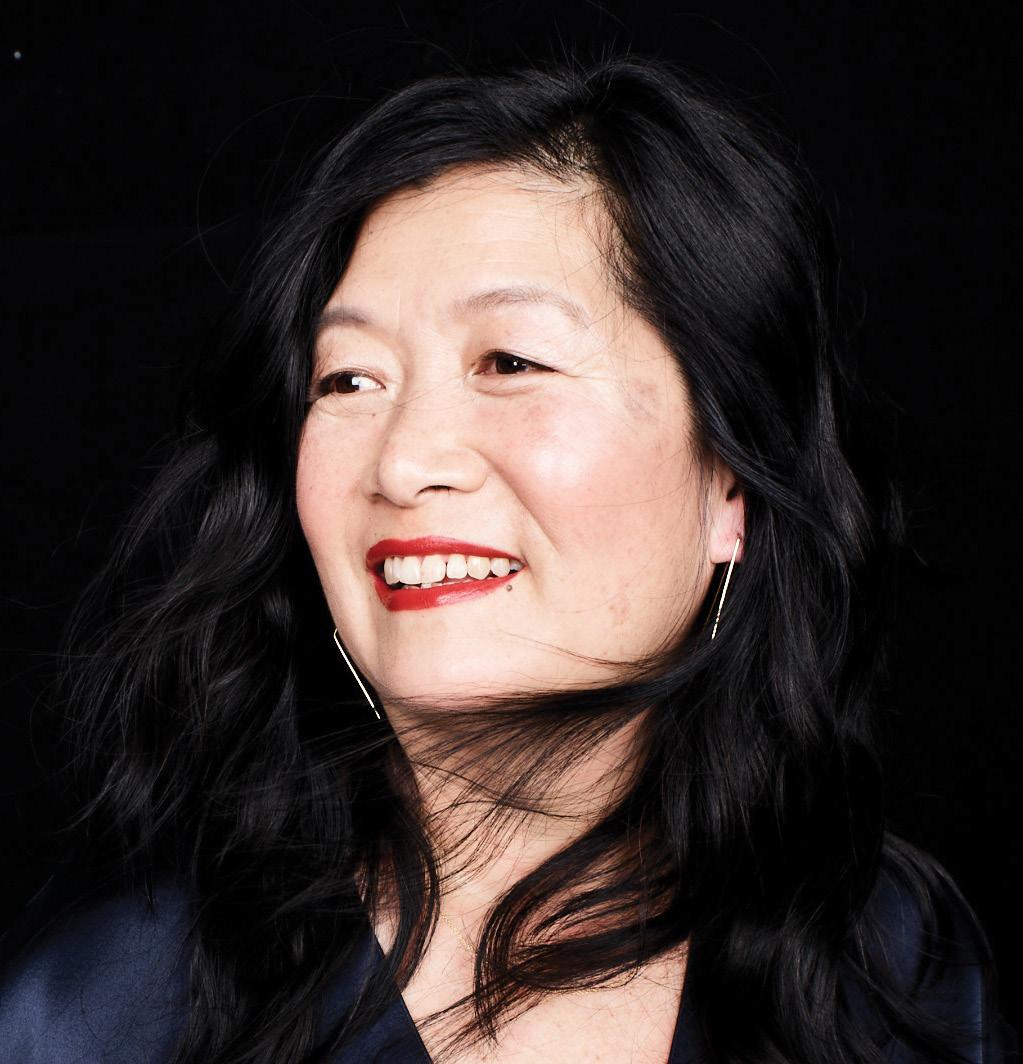







When Katie Marquart joined Gibson, Dunn & Crutcher LLP as a young lawyer, she knew about the firm’s prowess in litigation and transactional matters, as well as the firm’s inclusive, warm culture and longstanding tradition of service. She was excited about the prospect of working at the firm, but could not have anticipated the deep roots she would put down, nor could she have foreseen the role she would play in helping the firm invest in and develop a world-class pro bono practice.
A little over a decade ago, Marquart – at that time, a seventh-year associate – approached firm management to pitch the creation of a formal pro bono practice, with an attorney dedicated to managing the firm’s global pro bono work. e firm’s leadership agreed, naming her Gibson Dunn’s first Pro Bono Director. A few years ago, in 2020, Gibson Dunn promoted Marquart to Partner.
Now, Marquart manages a robust pro bono practice that mobilizes members of practices and offices around the firm. Last year, Gibson Dunn attorneys donated a record-breaking 165,000 pro bono hours, and about 1,650 of its attorneys – more than 80% of its total attorneys – were engaged in pro bono work.
From supporting refugees fleeing war-torn countries to responding to the Covid-19 crisis to helping reunify immigrant families, much of the firm’s diverse pro bono work involves rapidly responding to crises both at home and abroad.
“ The next step of our DEI journey is to focus even more on giving back to the communities in which we work and reside. As it relates to our Women of Gibson Dunn initiative specifically, we look forward to continuing our work alongside community partners and clients to support organizations that provide resources and relief to women and girls across the globe.”
A salient example of the firm’s crisis response pro bono work dates back to 2017, when nearly 200 Gibson Dunn attorneys provided thousands of hours of pro bono assistance to those affected by the travel ban that prohibited individuals from certain Muslim-majority countries from entering the United States. e following year, at the height of the U.S. family separation crisis, Gibson Dunn mobilized Spanish-speaking lawyers and sent them to the U.S.-Mexico border to meet with parents in detention facilities who had been separated from their children and attempt to reunite them. In parallel, the firm helped identify the parents of hundreds of “lost” children who had been transported from Texas to New York without tracking who their parents were or where they were detained.
In 2020, as the COVID-19 pandemic ravaged communities around the world, 300 lawyers at Gibson Dunn came together to provide more than 10,000 hours of free legal advice to small business owners struggling to navigate the effects of the pandemic.
While this crisis still raged, a new one rapidly unfolded. After the Taliban’s takeover of Kabul in 2021, the firm took on hundreds of Afghan clients fleeing threats
of violence from the Taliban, assisting them in their legal journeys to obtain refugee or asylee status in the U.S. and U.K. e firm’s pro bono clients include a group of Afghan women who served in Afghanistan’s Female Tactical Platoon, an all-women security forces unit that fought alongside U.S. and Afghan special forces and were at extreme risk of Taliban reprisals due to their military service and gender. Gibson Dunn helped these women and their families apply for asylum to remain safely in the United States. Gibson Dunn’s pro bono clients also include members of one of Afghanistan’s national women’s sports teams, who became symbols of women’s empowerment and thus a target for the Taliban. e firm is helping dozens affiliated with that team in their efforts to evacuate to the United States.
And, of course, Gibson Dunn’s pro bono practice extends far beyond this type of crisis response work. e firm maintains many long-standing community relationships with organizations that regularly refer cases for clients seeking a variety of different assistance, including work on behalf of veterans, domestic violence survivors, nonprofits and small businesses, individuals facing unlawful evictions, and immigrants eligible for various forms of humanitarian relief. e firm is proud of all of its work on behalf of these clients.
And Marquart notes, the firm has also never shied away from also taking on larger-scale impact cases – cases that have the ability to change the lives of not just their individual clients but of entire communities. Over a decade ago, for example, the firm took on the Prop 8 litigation –advocating in the courts for same-sex marriage. And, more recently, the firm has represented DACA holders at the Supreme Court to preserve their rights to stay lawfully in the only country that they have ever called home. e firm has also taken seriously its commitment to fighting for racial justice and equity, including taking on groundbreaking civil rights cases and, more recently, helping businesses and nonprofits navigate the changing legal landscape post-SFFA. “We are uniquely positioned to take on some of these larger cases,” says Marquart. “ e decision to do so requires the firm to not only invest substantial time and resources, but also to really evidence the courage of our convictions. I am proud to have seen us do just that time and time again, often when it matters the most and when our clients’ civil liberties and due process rights, as well as equal protection under the law are at stake.”
Gibson Dunn’s passion for social justice is also reflected in the firm’s internal focus on diversity, equity, and inclusion. An important milestone came when Barbara Becker – who joined the firm in 2000 and co-chaired its Mergers and Acquisitions Practice Group for over a decade – was elected as the firm’s first female Chair & Managing Partner in 2021. At the time, you could count the number of women in top leadership roles at the 50 largest U.S.-based firms by revenue on two hands, according to e American Lawyer, a premier industry magazine.
Becker’s colleagues describe her as a phenomenal leader who is eager to help and support Gibson Dunn’s 1,900-
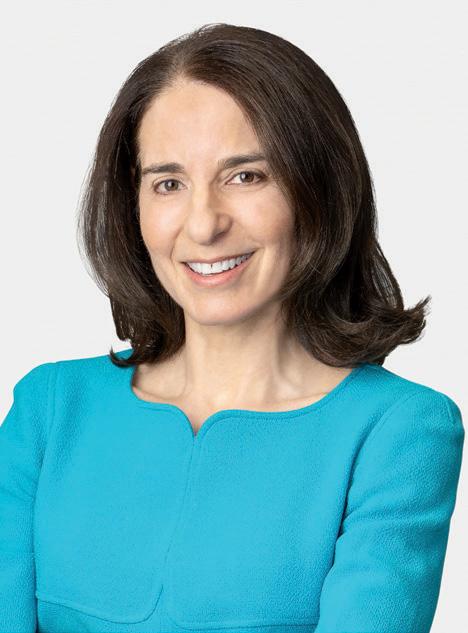
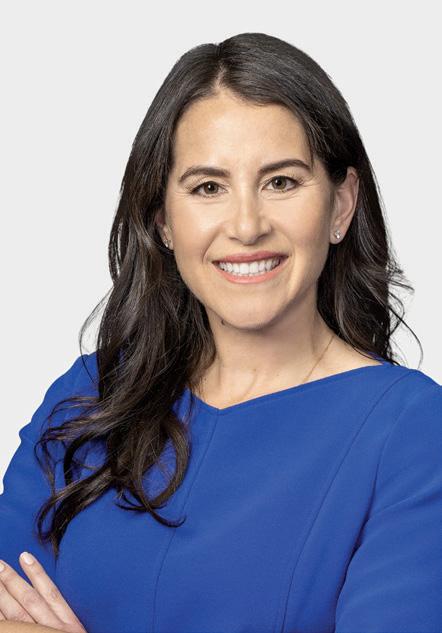
plus lawyers in 21 offices around the world as they find and follow their own paths to success. Becker’s leadership has also been recognized in the broader legal industry, including when she was named Managing Partner of the Year by e American Lawyer in 2023.
Becker – who, prior to her election as Chair & Managing Partner, helped create and lead Gibson Dunn’s Global Diversity Committee – has been championing inclusion at the firm for decades. Since the Global Diversity Committee launched the firm’s Women of Gibson Dunn initiative in 2014, over 80 women have been promoted to partner and over 60 lateral women partners have joined the firm. e firm’s dedication to supporting and promoting its talent is echoed by Zakiyyah Salim-Williams, Gibson Dunn Partner and the firm’s Chief Diversity Officer, who observed: “We want our attorneys to live fulfilled lives, and to that end, we are immensely proud of our inclusive firm culture that allows our talent to meaningfully contribute in both their personal and professional lives.” She also noted, “ e next step of our DEI journey is to focus even more on giving back to the communities in which we work and reside. As it relates to our Women of Gibson Dunn initiative specifically, we look forward to continuing our work alongside community partners and clients to support organizations that provide resources and relief to women and girls across the globe.”
With Becker at the helm, and as the firm approaches its 135th anniversary in 2025, Gibson Dunn continues to cultivate an environment where all can thrive – both within its walls and beyond.
Barbara Becker (left), Gibson Dunn’s first female Chair & Managing Partner, and Katie Marquart (right), the firm’s first Pro Bono Partner, are leading figures in the firm’s commitment to diversity, equity, and inclusion. They have championed initiatives supporting women and spearheaded the firm’s robust pro bono practice. www.gibsondunn.com


“Pillars – India”
Photo: by Lisa Kristine | humanthreadfoundation.org
Slaveholders burned down the village of this community when villagers began to declare their freedom. The villagers were so frightened by the fire's destruction they swayed to the brink of surrender; however, it was the courage and leadership of the women that sparked a newfound determination among them. Together with grassroots activists, they severed ties with the slaveholders and secured a quarry lease for their own quarry. With pride in their voices, the women proclaimed, “This is our quarry, we are the owners, we will never go back to slavery again.” Now, they do the same backbreaking work, get paid for it, and work in freedom. It makes all the difference.
Well before #MeToo became a global conversation, Futures Without Violence (FUTURES) had learned that men would not talk to their peers about gender-based violence. e health and social justice nonpro t launched into action by creating Coaching Boys Into Men, also called Changing the Game for Girls. e highly successful evidence-based program involves having trusted school coaches lead a series of 15-minute conversations with student athletes around topics such as harmful language, consent, and healthy relationships.
“I’d much rather … have these conversations now versus having something terrible happen later,” Derek Lactaoen, then a high school cross country coach in Seattle, explained in a 2016 video. “To have to have this conversation reactively is, I don’t think, the right approach.”
FUTURES knows that inviting males to be part of the solution is as important as reaching them while they’re young. One high school football player said the program helped him think about his own past potentially harmful behavior.
“With Boys (In)to Men, I just realized that I should change,” the student, Ramari, acknowledged in the video. “I started to buy into what Coach was telling us.”
A high school wrestler, Andrew, said he learned that “a good athlete … doesn’t have to intimidate.”
Since the program’s inception some 15 years ago, Coaching Boys Into Men has reached thousands of middle and high school students in all 50 states.
Founded by Esta Soler in the 1980s, FUTURES is a global organization geared toward both the healing of survivors – especially BIPOC community members who are disproportionately a ected by gender-based violence – and stopping violence before it starts. ey may be best known for helping turn domestic abuse from a private matter to a public one through poignant ad campaigns, advocacy, and landmark legislation, like the Violence Against Women Act of 1994, which funded domestic violence and sexual assault responses.
“All of those things fundamentally and materially changed lives and saved lives,” says FUTURES Vice President of Communications Ketayoun Darvich-Kodjouri, noting that domestic violence fell 64% for women in America between 1994 and 2012 before leveling o .
FUTURES has also trained thousands of professionals, including domestic violence responders, healthcare providers, and judges, to better meet the needs of survivors.

e nonpro t is now gearing up to open its Courage Museum, a hands-on experiential learning center for adults and youth that empowers them to act around its mission of healing and violence prevention. e museum, which will enable youth to connect with artists, activists, policy leaders, and educators, is slated to open in the Presidio National Park in San Francisco in 2026.
e Courage Museum has already held a Storyteller Summit that featured lmmakers and survivors sharing their personal experiences with violence, hate, and discrimination and how they found courage through healing and telling stories.
“It’s really a new model,” says Sara Kriksciun, FUTURES’ chief partnerships o cer. “I think it’s something that’s not being done, and we’re super excited about that.”
e Courage Museum will be a place to nurture empathy, action, and moral courage leading to lasting cultural change, a key principle of all of the vital work at FUTURES.
futureswithoutviolence.org
MindyIwanaka Manager of Public Engagement & Corporate Relations (415) 678-5518
miwanaka@futureswithoutviolence.org
By Check or DAF: Futures Without Violence
100 Montgomery Street, The Presidio San Francisco, CA 94129
Tax ID# 94-3110973
Two women live thousands of miles apart and speak different languages, but they are bound by an experience that changed their lives.
Jenny was fi ve when she underwent female genital mutilation (FGM). She grew up in the American Midwest in a conservative, Christian home. Someone held her down and covered her mouth and eyes with their hands. When she felt the fi rst cut, the pain was unbearable. No other pain in her life has ever compared to it.
Saza was at her niece’s second birthday party when her sister-in-law mentioned that her daughter had been circumcised the previous week. Saza said, “ is is wrong – it’s a violation of human rights!” And that is when her older sister told her that she’d been cut as a baby in Singapore. She had no idea it had happened to her.
According to the World Health Organization, more than 200 million girls and women alive today have undergone FGM in 30 countries in Africa, the Middle East, and Asia where it is still practiced. FGM is mostly practiced on young girls between infancy and age 15. Beyond the harrowing and incomprehensible physical and emotional pain, mutilation, and human rights violations associated with the practice, it also brings staggering financial costs. e treatment of health complications due to FGM is estimated to cost health systems close to $1.4 billion (U.S.) per year – a figure that is expected to rise.
While FGM used to be considered a cultural, private practice it is now internationally recognized as a gross human rights violation, a form of violence against women and girls, and a manifestation of gender inequity and discrimination.
Equality Now, founded in 1992, is fighting to end FGM. ey are an international human rights organization that works to protect and promote the rights of all women and girls around the world. eir campaigns are centered on four program areas – achieving legal equality, ending sexual violence, ending harmful practices like FGM, and ending sexual exploitation – with a cross-cutting focus on the unique needs of adolescent girls.
A Multifaceted Approach to Eradicating Female Genital Mutilation
Along with their partners, Equality Now works to eradicate FGM by advocating for laws that prohibit the practice and by holding governments accountable when those laws are not upheld. eir successes include:
• In 1996, Equality Now secured asylum for Fauziya

Kassindja, a teen fleeing FGM in Togo. is landmark case established FGM as grounds for U.S. asylum, setting a precedent for protecting women worldwide.
• In 2020, the organization was instrumental in advocating for Kentucky to pass comprehensive legislation against FGM, which the state did in 2020.
• In 2021, Equality Now’s lawyers successfully fought to uphold an anti-FGM law in Kenya. e court confirmed the constitutionality of the law, and the country is a leading light in how FGM can be eradicated.
To date, Equality Now has successfully changed 85 laws around the world to the benefit of millions of women and girls.
But as FGM continues to harm women and girls globally, Equality Now will not stop their fight until FGM is no longer a threat to any woman or girl.
Amy Hutchinson
Global Director of Development (212) 586-0906
ahutchinson@equalitynow.org
Ways to Give...
By Check or DAF:
Equality Now P.O. Box 7160
New York, NY 10008
Tax ID# 13-3660566
Nadia Murad was just 21 years old in 2014 when she was taken captive by the Islamic State (ISIS) in her hometown of Kocho, a farming village in the Sinjar region of northern Iraq. Determined to destroy the local Yazidi community there, ISIS embarked on a genocidal campaign, killing thousands across Sinjar, including Murad’s mother and six of her siblings. Murad was one of over 6,000 women and girls who were taken into slavery, where they were subjected to repeated rape and torture. After three months in captivity, Murad bravely escaped and eventually resettled in Germany.
Murad’s harrowing personal experience mirrored the experiences of women and girls across Sinjar. As a survivor and witness to these atrocities, she established Nadia’s Initiative (NI), a nonpro t dedicated to rebuilding communities in crisis and advocating for survivors of sexual violence worldwide.
“ e aftermath is not easier than when there is war. Because in the aftermath people have nothing. eir homes are destroyed, their dreams, their villages, their farms, their lives. Everything they built for generations is taken from them. And the people, the women, they are traumatized,” says Murad.
Murad realized that the trauma women and girls from her community had been subjected to was not unique. For centuries women’s bodies had been used as battle elds during con ict. Refusing to let other women su er as she had, Murad partnered with barrister Amal Clooney to begin campaigning for justice on behalf of survivors, believing that future atrocities could be prevented if perpetrators were held accountable for their barbaric actions.
By 2017, when ISIS was defeated and Sinjar liberated, over 70% of the homes and 80% of the region’s public infrastructure had been decimated. Over 400,000 Yazidis were displaced by the genocide.
NI focuses on creating a world where women are able to live peacefully and communities that have experienced trauma and su ering are supported and redeveloped. Since its founding, NI has completed over 120 projects across its six programmatic areas, restoring basic services, rebuilding schools and health centers, reviving cultural sites, and working with a variety of partners to promote women’s empowerment and facilitate the safe return of Yazidis to their homeland. is year they opened NI’s Women’s Center, which will o er a comprehensive, safe, and community-based support center for all women in the region.

Murad shares her own story and the story of the brutal persecution of her community because it is “the best weapon” she has. She wrote a New York Times best-selling memoir entitled e Last Girl: My Story of Captivity, and My Fight Against the Islamic State. In 2018, she was awarded the Nobel Peace Prize alongside Congolese Dr. Denis Mukwege for their work on con ict related sexual violence.
In her memoir, Murad says, “I still think that being forced to leave your home out of fear is one of the worst injustices a human being can face.” She wants to be the last girl in the world with a story like hers, and she’s on a mission to make that vision a reality.
Nadia’s Initiative nadiasinitiative.org
Brandon Jacobsen Executive Director (253) 678-3375 brandon@nadiasinitiative.org
Ways to Give...
By Check or DAF:
Nadia’s Initiative Inc. P.O. Box 9449 Washington, D.C. 20016
Tax ID# 82-3855510
Nicole Matthews was 19 years old when her then-partner tried to kill them both. Believing falsely that she’d been cheating, her partner drove his vehicle head-on into three other cars, then left her injured at the scene.
“I told myself (afterwards) that it was okay. I could be safe with him because … the thought that someone that I loved would cause that kind of harm to me was really unfathomable,” says Matthews, a descendant of the White Earth Band of Ojibwe tribe in Northern Minnesota.
Today, Matthews leads the Minnesota Indian Women’s Sexual Assault Coalition (MIWSAC), a statewide Tribal Coalition and National Tribal Technical Assistance Provider that aims to eliminate sexual and other violence against Indigenous women and children, in particular.
“ e ultimate goal is to work myself out of a job so that my kids, my grandkids, don’t have to think about being safe on the streets or in their homes,” Matthews says.
Utilizing a Native-focused curriculum they developed with survivors’ input, MIWSAC trains advocates and community members on topics related to sexual assault advocacy. To date, more than 1,000 people have been trained using this curriculum.
e rates of sexual assault against Native women is 2.5 times higher than it is against other women, Matthews notes, yet “many trainings, resources, and data sources have very little or no information about Native people included,” making this training all the more vital.
MIWSAC also trains Native men on preventing sexual violence where prevention focuses on “teaching men and boys what not to do to be harmful and create harm in our community.”
Many Indigenous community members or their relatives were sent to Christian boarding schools, where they were beaten or sexually abused and prohibited from speaking their native language, Matthews says. “Now we’re trying to heal from that,” Matthews says. “What are those traditional values that we can use for healing and justice?”
She once heard from a Native elder that if a man’s

hand strikes a drum as part of a traditional drum group, then he should never use that same hand to strike a woman. at’s because the act of drumming is like a sacred prayer. is is an example of the kinds of historical Indigenous values they’re working to impart.
Jourdan Reynolds, a non-Native ally and advocate who works for the Meskwaki Nation in Iowa, attended a two-day men’s training with MIWSAC in late 2023. e training inspired Reynolds, a survivor of childhood abuse, to be a better husband and father, and he says he’s striving to be more fully present with his two young boys.
With a focus on supporting Missing and Murdered Indigenous Relatives, sex trafficking, improving Black and Indigenous solidarity, and the creation of national resource centers addressing sexual violence; MIWSAC’s work is vast, centering the needs and experiences of Native survivors of sexual violence and keeping their voices at the forefront.
Minnesota Indian Women’s Sexual Assault Coalition miwsac.org
Becki Jordan Comms. & Design Specialist (651) 646-4800 ext. 111 bjordan@miwsac.org
Minnesota Indian Women’s Sexual Assault Coalition 1619 Dayton Ave. Suite 202
Saint Paul, MN 55104 Tax ID# 20-1421325
One out of every five women in the United States will be a victim of rape in her lifetime.
In 1974, Gail Abarbanel was working as a social worker at a small community hospital in Santa Monica when she was asked to see a young woman in the Emergency Department who had attempted suicide. Abarbanel met with the patient, and through her compassionate interaction with her, the patient disclosed she had been raped. She felt she had no one to turn to, and that ending her life was the only way to end her pain. Abarbanel soon learned there were no standards for the care and treatment of rape victims in hospital Emergency Departments.
e public discourse on rape was then governed by a deep and profound mistrust of victims, who were predominantly women. Police officers were not trained in how to conduct trauma-informed interviews, or in special protocols for rape investigations. e court system was rife with discrimination against victims. ey had to prove they resisted their attackers, and their sexual history could be introduced in court and used against them. ese practices served as strong deterrents to reporting rapes and to seeking help.
Abarbanel founded the Rape Treatment Center (RTC) at UCLA Santa Monica Medical Center to provide expert and compassionate care for victims 24 hours a day, and spent years working to change the attitudes, laws, and practices that had kept them silent. For decades, the RTC has served as a model and has advocated for special standards and protocols for the care and treatment of rape victims throughout the United States.
In 1991, the Rape Treatment Center was honored by the President of the United States for “bringing justice and compassionate care to rape victims and changing the nation’s consciousness about rape.”
“E verything we have created, all of our model programs and advocacy efforts, have been inspired and guided by what we have learned from victims,” Abarbanel says.
e RTC created the Verna Harrah Clinic, a dedicated 24-hour “ER” for rape victim care. In a private, safe, therapeutic setting within the UCLA hospital, rape victims receive highly specialized emergency and follow-up medical treatment, forensic services, crisis counseling, advocacy, information about their rights and options to support them in making informed choices and decisions,

longer-term therapy, and many other support services. All free. To enhance the treatment victims receive wherever they turn for help, the RTC also trains first responders and other providers of victim services.
Throughout its history, the RTC has translated what it has learned from victims and current research into protocols for all aspects of victim care, social action, community education, and prevention programs.
e RTC is internationally recognized for its pioneering work and exemplary programs. Staffed by highly trained professionals with specialized expertise in the medical, forensic, and psychological aspects of victim care, it is their vision that the future be one where society does not tolerate sexual assault or sexual abuse in any form.
at UCLA Santa Monica Medical Center
uclahealth.org/medical-services/rtc
Ways to Give...
By Check or DAF:
UCLA Foundation
10889 Wilshire Blvd. 10th Floor
Los Angeles, CA 90024
Director of DevelopmentMimi Morningstar Senior
(310) 770-2888
mmorningstar@mednet.ucla.edu
Tax ID# 95-2250801
*Rape Treatment Center





Did you know that the word “radical” comes from the Latin word for roots? “Radical means going to the roots, not staying at the surface,” explains Ana Oliveira, president and CEO of e New York Women’s Foundation (NYWF). “When the roots are strong, they allow the plant to grow, and the winds to come. e plant can bend but it doesn’t break.” e NYWF has a proud tradition of “radical generosity,” a deliberate shift away from the scarcity mentality that limits women’s funding and opportunities. “Radical” signals the depth of their commitment and the steadiness with which they provide support, not upheaval or extremism. As for “generosity,” where some see paternalism, the NYWF sees endless abundance and grace. Radical generosity is both grounded and expansive, an antidote to fear by investing in people.

The NYWF was founded in 1987 by a group of women in New York City who saw how underfunded women’s organizations were, knew how critical women are to a functioning society, and decided to create a local fund run by women for the bene t of women. e problem was they didn’t know where to invest. To solve this, the NYWF reached out to community leaders for answers. From its inception, the NYWF developed a cross-cultural alliance with local leaders from all over New York City, including from Black, Latinx, and Asian communities.
“We believe that we’re bringing the capital, but they are bringing ideas and solutions.” Oliveira admits that certain power dynamics are inescapable in philanthropy – “we can always say no.” To mitigate this, the NYWF has developed a participatory approach to grantmaking that is inclusive, is deferential to local knowledge, and brings more dignity to the process. Decision-making power is distributed, with funding recommendations made by teams composed of donors, community members, and foundation sta . Partnerships last a minimum of ve years, giving organizations time to grow and thrive.
Hot Bread Kitchen is a shining example. It was established in 2008 with a group of immigrant women baking bread in the Brooklyn home kitchen of founder Jessamyn Waldman Rodriguez. ey asked the NYWF to help them buy a commercial oven and become a 501(c)(3) to expand their operation and support themselves. Today Hot Bread Kitchen is one of the top job training incubators for women in the culinary industry in New York City.
As part of their integrated approach, the NYWF stresses the connection between gender, racial, and economic justice. “Philanthropy has to be grounded in women’s real lives,” says Oliveira. “We negotiate our lives through an enormous number of prisms, and grantees need to trust they can show up as their whole selves.
“If someone is housing-fragile, it will be very hard for her to build any kind of economic security. If she lives in a violent community, or in a violent interpersonal relationship – either emotionally, verbally, or physically – it’s so hard to hold on to a job, or keep stable housing. We include those dimensions, and we follow our grantees.”
New Yorkers take pride in being trend-setters, and the NYWF is true to its hometown. In 2015 they launched the landmark NYC Fund for Girls and Young Women of Color, which has invested in hundreds of organizations supporting the next generation of policy leaders and community organizers. e fund has since inspired similar funds for girls of color elsewhere. e NYWF were early supporters of the #MeToo movement, and the National Domestic Workers Alliance. With such strong connections on the ground, the NYWF is proud to be the rst stop for nascent movements.
Why fund women? “Women are underfunded as a destination. But we’re not just a destination. We’re multipliers. We are hubs of things, moving the spokes in the wheels of opportunity.” Oliveira joined the NYWF in 2006 seeking to make a greater impact. She’d previously worked on solving the crack epidemic, which was devastating for low-income women of color, and at the intersection between substance abuse and criminal justice reform. It was important work, but, as she puts it, “I felt like I was coming too late.” e NYWF’s early investment in community-led solutions was appealing for precisely that reason.
As has repeatedly been shown, investing early in women and girls is not only right but also smart. “[Women] are critical partners, critical agents, critical leaders, and critical followers.” Losing autonomy, safety, and opportunity is not only personally devastating but also creates immense societal ripple e ects.
Recent years have been especially challenging, and the NYWF has worked hard to adapt to each crisis. As community problems change, so must the solutions. e NYWF’s exible and trust-based participatory approach to grantmaking, long-standing community relationships, and knowledge of smaller organizations also makes them a key player in NYC disaster response.
When Hurricane Sandy hit, none of the relief funds from the Red Cross made it to the NYWF’s grantee partners, prompting the NYWF to reach out and o er to make the necessary connections. Similarly, when New York City was the global epicenter of the COVID-19 pandemic,

“Having an early investment from the Me Too Fund accomplished the most important thing that any movement funder can hope to accomplish, and that is to trust the leadership of the people who are most impacted by the issue we want to change.”
—Margarita Guzmán Violence Intervention Program
the NYWF created a COVID-19 Response and Recovery Fund. “We needed our grantee partners to survive. ey’re rst responders in their communities.” Once again, they funneled relief funds from larger organizations to the smaller organizations the NYWF supports.
Moving beyond the gender binary can be complicated for women’s organizations, but the NYWF has embraced change. Grantee partners, especially those working with young people, were reporting that young people were alienated by rigid notions of gender. e NYWF listened and in the spirit of radical generosity grew its umbrella to include gender-expansive people. “It’s not instead of; it’s in addition to.”
Looking forward, the NYWF continues to play an essential role as a mid-level funder with close ties on the ground. ey provide ongoing support on perennial issues like reproductive justice and gender-based violence. ey’ve responded to the migrant crisis by helping women nd employment. ey serve as early investors, intermediaries, and conveners, and connect small organizations in need of funds with other inspirational organizations that build community capacity and support women’s leadership.
Please contact us to explore how the NYWF can help you invest in women-led solutions that ignite action and promote the economic security, safety, and health of New York City women.
Camille Abrahams Emeagwali SVP, Programs & Strategic Learningcemeagwali@nywf.org (646) 564-5972
The New York Women’s Foundation www.nywf.org
39 Broadway, 33rd Floor
New York, NY 10006
Tax ID# 13-3457287

Our bodies harbor memories, histories, stories, and identities. They determine how we see ourselves and how others see us. Tied to such perceptions are the values given to our bodies based on our gender, race, ethnicity, nationality, class, ability, size, sexual orientation, and gender expression.
More than 50 years have passed since the first publication in 1970 of the book Our Bodies, Ourselves, written by the Boston Women’s Health Book Collective. Considered to be the comprehensive feminist health guide, it provided a much-needed and groundbreaking resource for women and girls to redefine and reclaim the power and health of their own bodies. Since that first publication, nine reprints have been distributed across and beyond Europe, Asia, and Latin America, in a host of different languages. It resonated globally, even as it often narrowed the scope of women’s experiences. Other books that have been published in its wake – from Audre Lorde’s The Cancer Journals (1980) to the collection This Bridge Called My Back: Writings by Radical Women of Color (1981) to such variations as Trans Bodies, Trans Selves: A Resource by and for Transgender Communities (2014) – have demonstrated that such transformative projects can lay a foundation on which to build more complex, intersectional, and interconnected ways of thinking about the gendered body.
These published works stem from the grassroots work of rethinking the values of different bodies and advocating for the rights of those who are denied the privileges afforded certain bodies at the top of systemic hierarchies. In the U.S., we have a history of bodies confined to chattel slavery, based on racially constructed differences, or to second-class citizenship, based on gender differences. And we also have a history of, despite these inequalities, different individuals and communities rising up and resisting oppression. They freed their bodies from chains; ran away to free-
dom; wrote themselves a legible future through education, determination, and perserverance; and catalyzed the issues of voting rights, civil rights, and human rights.
For these reasons, activists have worked through various nonprofit organizations to ensure that our bodies are treated with dignity, respect, and full autonomy, especially when working against systemic oppressions that encourage the discrimination against, exploitation of, and unequal treatment of certain individuals and communities. Some of these organizations focus on gender differences, either tending to the concerns of women and girls or affirming the gender identities of transgender and nonbinary individuals. Some organizations advance racial equity and respect for racial differences, while others focus on the intersections of gender and disability, with respect to changing our environments toward more accessibility rather than locating limitations within the body itself. Gender and its intersections with other factors – from race to class to disability to nationality – continue to shape our perspectives, representations, and realities, which is why nonprofit organizations that shed light on these differences have the power to shift our thinking and our actions in life-changing and even death-shattering ways.
This chapter highlights four organizations that have emphasized bodily autonomy and integrity through different areas of specialty. Whether the focus is on access to breast cancer research, surgical training, and preventative care and treatment, or on maternity, neonatal, and postnatal care, both within and beyond the U.S., or even the simple access to abortion pills, these organizations are saving lives.
Our valued bodies may be integral to our own personal healing, but they are equally vital to the health of our various communities and the world. These organizations are part of our healing narrative. Here are their stories.





In 2005, Dorothy Largay received a monetary windfall and asked herself how she could use the funds in the most e cient way to generate social change. She always had a passion for empowering women around the world. “Since women are the essential change agents as the health and economic decision-makers for their families, investing in women was a compelling choice,” says Largay.
Many philanthropists create private foundations that are designed to stay scally active forever, but some philanthropic thought leaders have recently challenged this traditional model. Largay is one of those who chose to forge a di erent path. She created Linked Foundation and set a 20-year xed time frame, opting to spend down the foundation’s allocated funds in her lifetime so that she could tackle pressing challenges today.
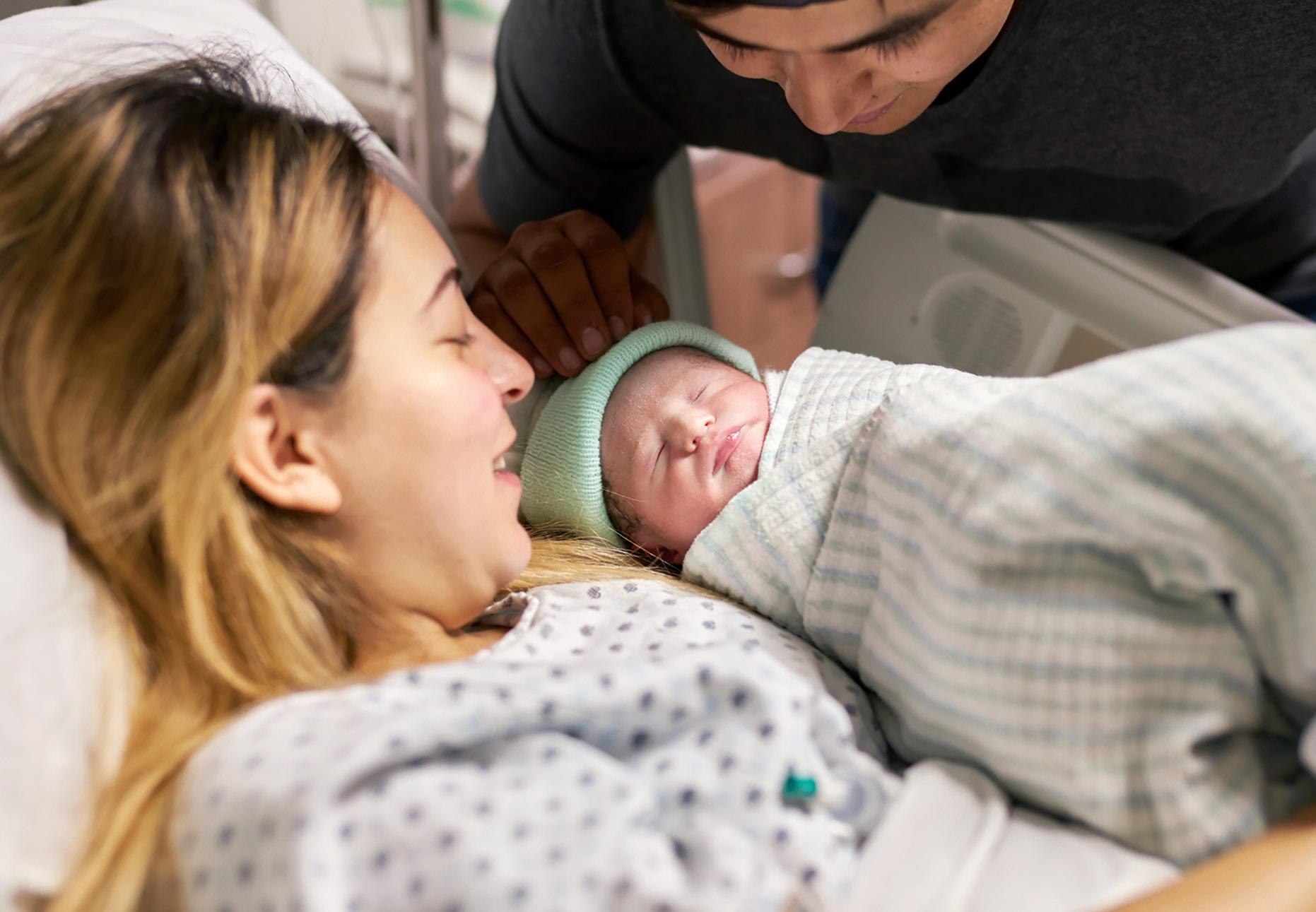
“ e structure of a xed-life organization created an urgency and a focus that enabled the foundation to take risks and to nd opportunities where small amounts of capital and technical support could make a signi cant and measurable di erence,” says Largay.
For the past 18 years, Linked Foundation has promoted solutions that improve the health and economic independence of women and their families in Latin America by investing in direct health services that have a path to sustainability and that generate maximum impact.
“Linked Foundation works very closely with our partners on the ground and uses a range of nancing mechanisms as well as technical assistance to address our partners’ needs. Listening and problem-solving with our partners is key and has brought about very gratifying results,” says Nancy Swanson-Roberts, Linked Foundation’s executive director.
For example, since 2015, Linked Foundation has worked in Monterrey, Mexico, with Clínicas del Azúcar (Sugar Clinics), a Mexican social enterprise that operates “one-stop shops” for much-needed a ordable and comprehensive diabetes

“Another example of a Linked Foundation partner is Friendship Bridge, a nonprofi t social enterprise in Guatemala that creates economic opportunities for low-income women through fi nancial services and education.”
care. Linked brought in another nancing organization to provide Clínicas with their rst impact loan, and Linked provided a grant to implement a women-sta ed call center, which has signi cantly improved adherence and outcomes for their most vulnerable patients. Clínicas has grown to 39 clinics throughout Mexico, treating over 300,000 patients, the majority of whom are low-income.
Another example of a Linked Foundation partner is Friendship Bridge, a nonpro t social enterprise in Guatemala that creates economic opportunities for low-income women through nancial services and education. Linked provided start-up funding to pilot and scale health services for Friendship Bridge’s clients.
Mexican partner organization Reina Madre provides a ordable, patient-centered maternal and reproductive health services to low-income women in and around Mexico City. Linked Foundation worked with a partner nancing organization to provide a low-cost loan to scale Reina Madre’s clinics, and grant funding for a program to
train medical students in colposcopy and to provide free exams to low-income women.
Largay and Swanson-Roberts say that for 2024, Linked Foundation remains committed to solving critical ongoing problems with long-lasting solutions. After intensive learning from employing di erent models with partners on the ground, Linked Foundation decided its ongoing impact could be better scaled by working with a social impact investment rm. Linked has partnered with New Ventures Mexico to develop Empodera Impact Capital –the rst gender lens health fund in Latin America. e $30 million fund addresses the nancing gap for impact-led women’s healthcare companies in Latin America and will continue long beyond the foundation’s lifetime.
Both Largay and Swanson-Roberts agree: “For us, a xed-life foundation gave us a focus to tackle health inequities for women in Latin America. Not only has the work been gratifying, it introduced us to such inspiring and talented social entrepreneurs that are deeply committed to improving the lives of women and their families.”
Swanson-Roberts Executive DirectorBorn to a poor family in Western Province, Rwanda, the country’s most conservative province, Jean Berchmans Uwimana was attending medical school at the University of Rwanda when he began to understand the need for better, and more flexible, systems of reproductive health education. An entrepreneur by nature, Dr. Uwimana founded several nonprofits in Rwanda, including the first non-U.S. chapter of the health equity organization GlobeMed, which connects students and grassroots organizations to promote health equity and social justice. During and after medical school, he also founded or cofounded Medical Doctors for Choice, a vast network of young physicians in Rwanda dedicated to increasing access to comprehensive reproductive health rights, justice, and clinical services; Healthy People Rwanda (HPR), which develops robust road safety, first aid, and other programs; and HPR’s LUBRICATE initiative, which transformed sexual health counseling and therapy for Rwandan women cancer patients and survivors.
His most recent venture is Flavours of Family Planning, a video series that uses food and common kitchen items to teach family planning, with a special emphasis on male engagement.
Dr. Uwimana recently completed a dual MBA/Master of Public Health degree at the Johns Hopkins University Carey Business School and Bloomberg School of Public Health in Baltimore, Maryland. He is looking to use these new tools to improve the global distribution system for medical devices, making them more easily available in low-income countries.
Giving List Women: The Western Province of Rwanda is the most conservative province in the country. What led you to become so passionate about women’s reproductive health and rights?
Dr. Jean Berchmans Uwimana: I was born and raised in western Rwanda, where I was a primary care physician before moving to the U.S. for education. So
yes, in terms of culture and religious beliefs, that’s true. And I feel sad about it. They used to tell me that anything related to sex was prohibited – education, et cetera – and from that family perspective, it influenced stereotypes.
When I went to medical school at University of Rwanda, I had a single view of things, conservative and culturally influenced. I joined some associations, some related to the teaching of safe abortion. The sessions were outside of the University, hiding under the tree. One of my friends was interested in that, and he presented to me the vision of the association and said I would go and learn about a new topic. But deep down, I thought, “I am going to probably challenge the members of the association and tell them whatever they’re doing was wrong.” By the first day, they had an outreach in one of the clinics in Rwanda known for treating complications of unsafe abortion. I went to the maternity ward, and I talked to the patients and listened to their stories, and I felt that what they were doing should not be hidden. So, I told them, “Okay, let’s do this. The stories themselves can tell us a lot, so let’s put the stories together, tell people about the stories.” And that became the mission.
Then more students joined. Today, mainly they talk about abortion in the practical context of when we become providers, what should we do in our society? But it’s given me ideas, including shifting to understanding where is male engagement into this agenda? So, I thought of starting something that was innovative, like showing people that we can talk about family planning and contraceptives and relationships. Because the world needs to see us fully engaged. So the program that started was called Flavours of Family Planning, which is also dubbed the “Cooking Show.”
It is an initiative to disrupt male engagement in family planning by employing kitchen materials for handson simulation to provide quality, gender-friendly family planning and reproductive health information. We do this by engaging young physicians who are committed to this work, and we simulate as chefs by using fruits and
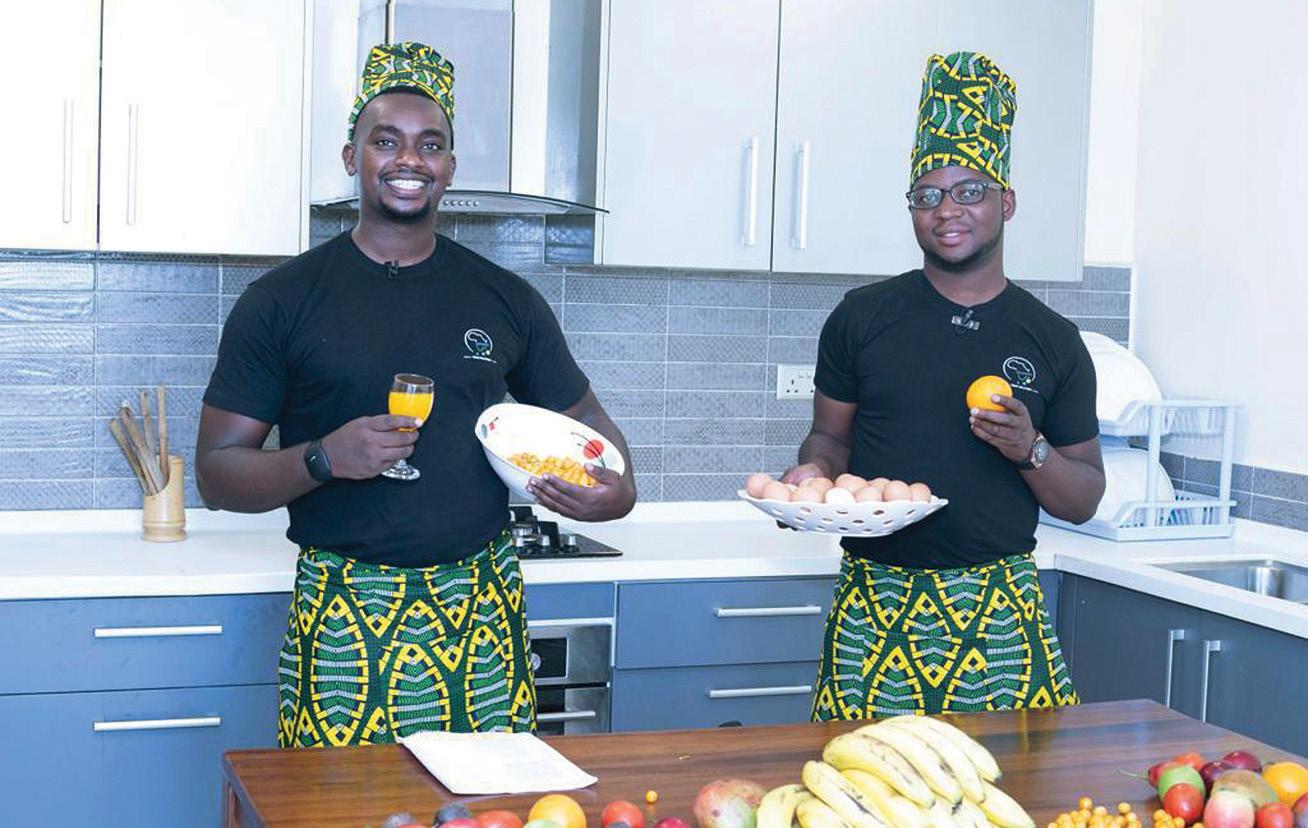
other kitchen items for hands-on simulation to explain different vital family planning, gender-based violence, relationships topics.
GLW: Was there pushback from the community?
JBU: There will always be people commenting. Of course, people may not understand why we are doing it. And that’s why we use new ways of telling people what matters – using funny examples to engage them into the conversation. Sometimes I meet men who say, “What don’t you have in your life that you can go into the kitchen and start talking about all that?” But I think, “Oh, you are talking about the content, so at least now you know what I’m talking about. Even if you’re judging me, at least you have the information.” And it also gives them the opportunity to think it through and to understand the differences between the cultural brackets and the reality in this world.
This is critical. For example, [I recall] a couple that was married for 10 years, from the Eastern Province. They had given birth only to girls, and they have beliefs associated with that, but that’s because of their poor literacy. The family started blaming the woman, believing she was responsible and not capable of delivering boys.
Of course, we know that every child is a child as every human is a human, but some societies have not yet come to understand this concept. So, we produced a straightforward video about sex determination and the role of
a male chromosome, using water glasses to show how a male chromosome plays a huge role in sex determination. Without literacy, relationships could end prematurely. In this story, they came back together after the video offered easy-to-understand science.
But this is only one family. We are trying to bring the basic concepts of family planning and reproductive health science to people’s level of understanding.
GLW: How do you address the fact that women are thought of as less valuable to society?
JBU: It’s a core part of our program. That needs to be addressed broadly and in a way that helps people understand the benefits of gender equality in the society and equal access to opportunities.
GLW: What is the best way to engage men and boys in this effort?
JBU: We’ve seen the value of education. Gender equity is not solely a women’s issue, but a societal one. Shared responsibility and active participation from all genders to create sustainable change is imperative. Some men watch our videos, and their comments show that they have reflected on their own attitudes and behaviors and they begin to understand gender issues in their com-
munities, which promotes personal growth and more equitable relationships.
But engagement in the program is critical. Cultural misconceptions and long-lasting gender norms still exist in our societies. Across different societies, you can see how inheritance of land and other valuable properties is unequal. That’s how the differences continue. Programs that address issues from the roots, distribution, access to opportunities, and so on are important and require different systems to collaborate and to engage men so they can become allies.
GLW: You’re saying inheritance determines wealth, which informs power.
JBU: Absolutely. If people don’t get equal access to education, we’re creating an imbalance in the cognitive skills they develop, which will determine the kind of job they do in the future. And that goes hand in hand with money they can make. Once we’ve created the imbalance, then the financial decision-making will go in one direction.
If we address the education piece, then we can address economic inequalities and healthcare access inequalities, political underrepresentation – all these things have roots associated with the kind of knowledge you have and thus the kind of opportunities you have access to.
We see other imbalances, too. How many countries are implementing the coverage of reproductive labor? We
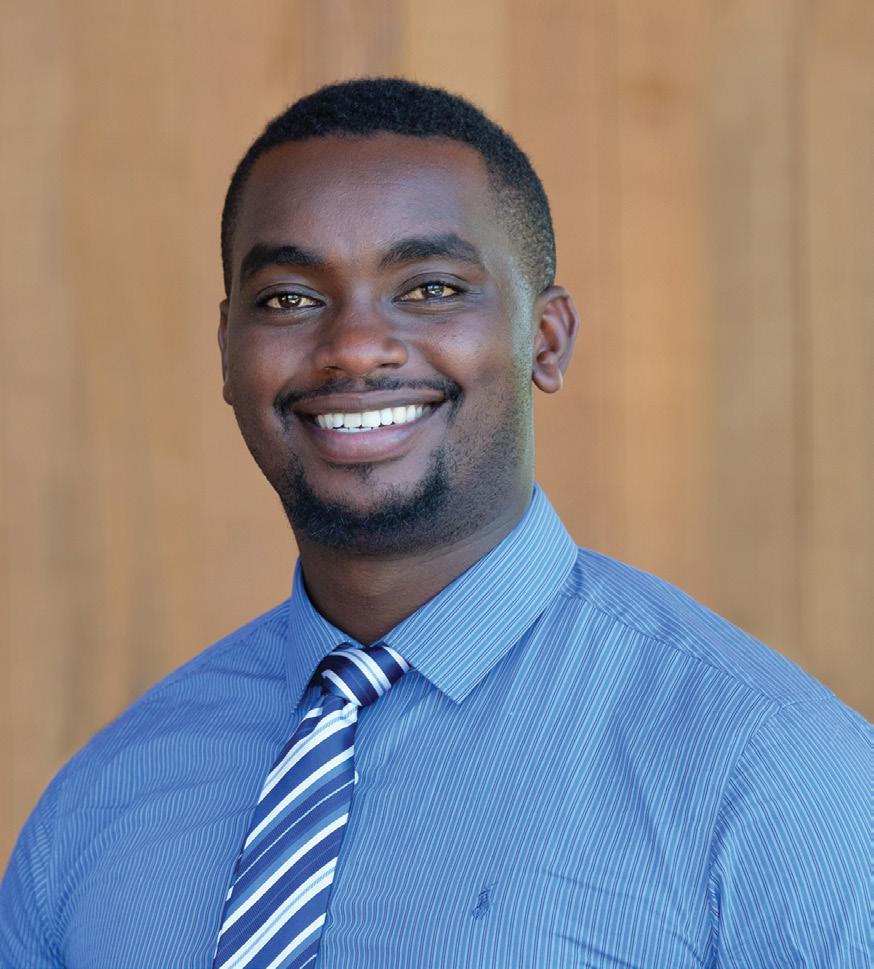
know the number of hours that women invest into that, but nobody wants to think about it. So, advocacy is still needed. Empowering more women directly, giving them more opportunities for education, and helping society know that by doing so, it does not only benefit the woman, but it benefits the country – it benefits the society and everyone who is part of the society.
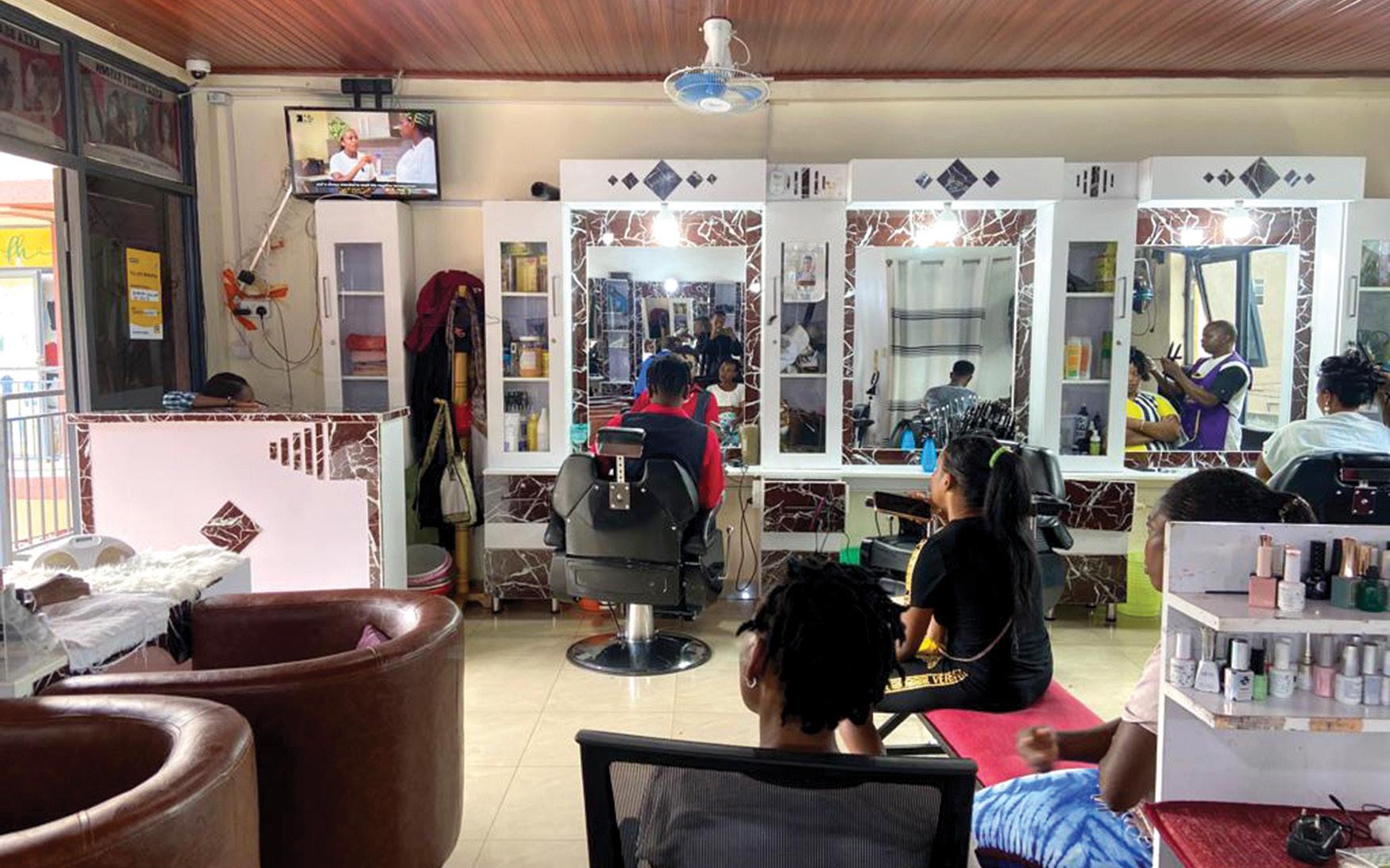
The untimely death of Kira Johnson from internal bleeding after a cesarean section in 2016 highlighted the problem. Tennis champion Serena Williams’ near-death experience after childbirth a year later confirmed it.
Black women were four times more likely than white women to experience pregnancy-related deaths. In highrisk pregnancies, the disparities were even greater, with Black women 5.6 times more likely to die than white women. Amnesty International released a report on this growing lethal crisis back in 2010, and the name of the report says it all: Deadly Delivery: e Maternal Health Care Crisis in the USA. e report gave birth to the Black Mamas Matter Alliance (BMMA) in 2016.
“Just hearing stories from folks about their mistreatment, abuse, and what we now clearly recognize as obstetric violence … there were clear human rights violations that people were experiencing just navigating our healthcare system,” says Angela Doyinsola Aina, co-founder and executive director of BMMA.
BMMA is a national network of Black-women-led and Black-led birth and reproductive justice organizations and health professionals working across the full spectrum of maternal and reproductive health.
“We chose the term ‘alliance,’” Aina explains, “to recognize the fact that there have been so many Black-womenled community-based organizations and entities that have been doing birth work, birth justice work, and reproductive justice work for decades, way before we got here.”
Aina herself has years of experience. She trained with the SisterSong Women of Color Reproductive Justice Collective and worked with both U.S.-born and immigrant Black local communities and at the federal level with the Centers for Disease Control and Prevention. Aina knows that these crises stem from unequal resources and the decentering over the years of women-led community care.
BMMA’s goals are lifesaving. ey seek to change policy, cultivate research, advance care for Black mamas, and shift culture. To do so, they help increase visibility of Black women leaders, foster connections between mainstream entities and Black-women-led initiatives, and support effective collaborations of stakeholders working to advance Black maternal health and justice.
e alliance has hosted several conferences and community events and successfully teamed up with Congress-
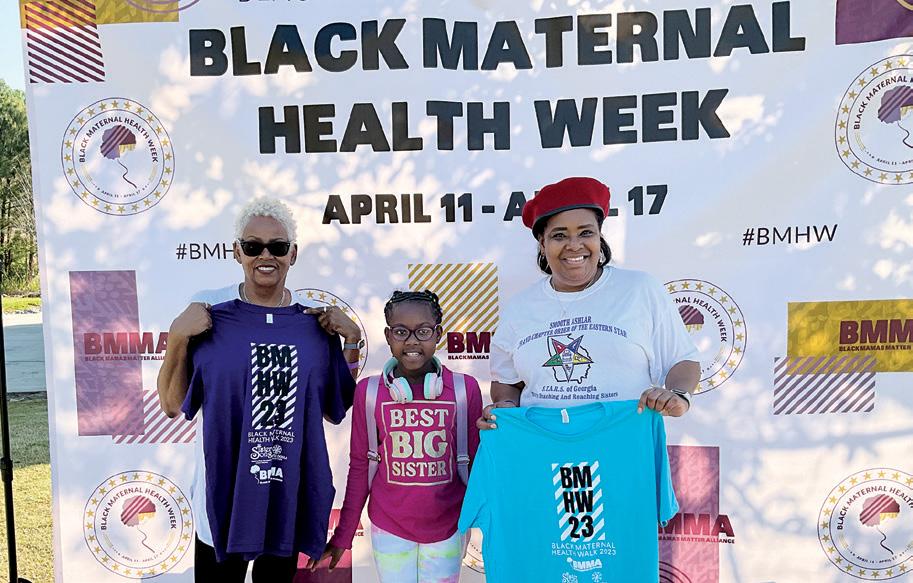
Multi-generational family at the 2023 Black Maternal Health Walk in Atlanta, Georgia.
woman Alma Adams and then-Senator Kamala Harris to pass the Preventing Maternal Deaths Act of 2018.
“ at act finally allowed all 50 states to begin the work of creating a maternal mortality review committee,” Aina states. “Because that was part of the problem; a lot of states weren’t even capable of actually counting maternal death.”
In 2018, BMMA launched Black Maternal Health Week (BMHW) a national week-long campaign held annually from April 11th to 17th to build awareness, activism, and community-building to resoundingly uplift the voices, perspectives, and lived realities of Black Mamas and birthing people. Later that year, BMMA founded the Black Maternal Health Conference & Training Institute™ (BMHC), a biannual conference that meets a national need for a forum dedicated to Black Maternal Health.
BMMA’s efforts to raise awareness have led to the creation of the congressional Black Maternal Health Caucus and the introduction of the Black Maternal Health Momnibus Act of 2021, which called for a comprehensive approach to health equity.
Aina says, “I really hope that maternal mortality is completely eliminated [in the future]. Not just in this country, but in the world.”
Black Mamas Matter Alliance, Inc. blackmamasmatter.org
Shauna Frazier Donor Relations Manager shf@blackmamasmatter.org (470) 242-6359
Ways to Give... By Check or DAF: Black Mamas Matter Alliance, Inc. P.O. Box 571894 Atlanta, GA 30357 Tax ID# 85-1274248
She only had two weeks to live. is is a patient’s story that is all too familiar to Yonni Wattenmaker, the executive director of Breast Cancer Alliance (BCA).
“She’s in Colorado and in liver failure due to metastatic breast cancer, and the doctors are only giving her two weeks,” Wattenmaker remembers after hearing a BCA supporter share. “ ey needed a Hail Mary pass and asked if there was anything we could do. rough our network, I was able to find an exceptional oncologist in Colorado who got her assessed quickly for any potential options.” at connection made all the difference. A year later, this terminal breast cancer patient walked in a fashion show that BCA had organized as a part of their annual fundraiser. According to Wattenmaker, “While cancer did take her life, she lived another five years, and she credits us with that 100%. She died with no regrets, knowing she was loved, and feeling fulfilled. Extending her life was an incredible gift to her, her family and friends, and they were most grateful.”
The nonprofit work of BCA is unique and consists of a comprehensive network of healthcare providers, survivors, and activists doing the life-changing work of expanding breast cancer awareness, research, treatment, and community building. BCA changes the course of this disease through its three-pronged, highly-focused mission: Provide research grants focused on funding pre-clinical research that drives breakthrough treatments; award fellowships for breast oncology surgeons who improve outcomes; support the underserved in the region surrounding its headquarters with screening services, as early diagnoses make a significant and positive impact on survival rates and outcomes.
Courtney Olsen, president of BCA’s Board of Directors, has witnessed the impact in these areas. “As a 13-year breast cancer survivor, I wanted to do something to make a difference,” she says. “ at’s what BCA does: providing free mammograms and other breast cancer screening service to underserved patients, and facilitating access to fellowship-trained breast surgeons through our grants. Our fellowship program is a never-ending gift,” Olsen notes. “Because we support the training of these breast surgery fellows, some of them venture to the middle of Wisconsin, or down by the border in Texas where a breast cancer
surgeon has never existed; they’re making a real impact on patients’ lives. at is because of us.” Wattenmaker added, “You can have a new doctor in Fresno, California, treating migrant workers, where before they never even had someone to perform a mammogram,” Wattenmaker says. “And now they have a full breast center, because we were able to provide the funding for somebody to get trained and go back into that community.”
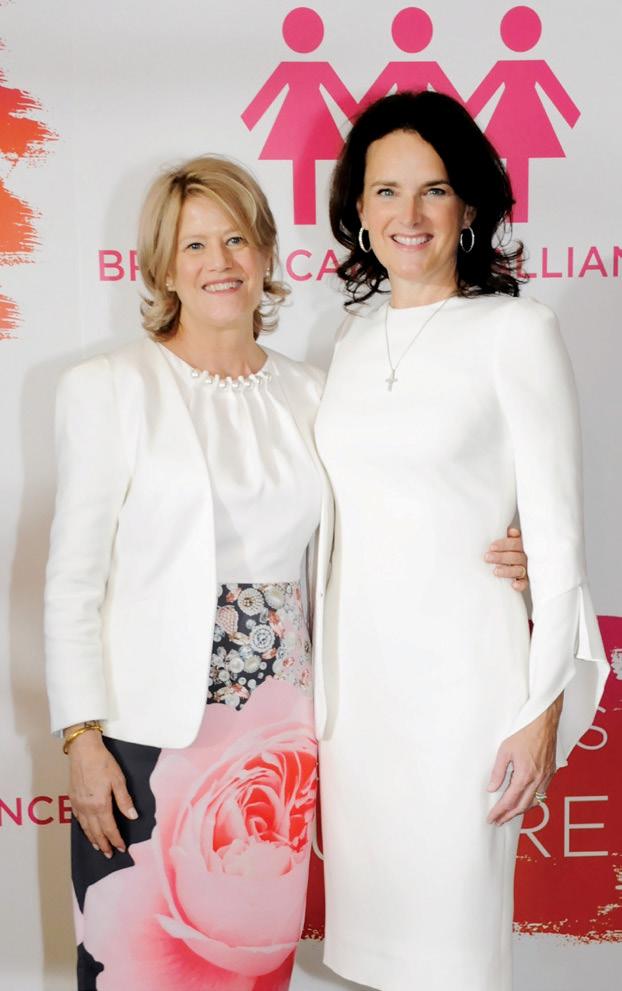
On the Cusp of a Vaccine
WIn loving memory of Kristen (L) on the day she modeled at BCA's Annual Luncheon and Fashion Show. She is pictured with her dear friend, Mary, (R) who was the one who reached out to BCA for help, getting Kristen her life-changing treatment.
attenmaker adds, “We were one of the early funders of the Cancer Vaccine Institute [at the University of Washington Medicine] in Seattle, and they are developing cancer vaccines for breast cancer patients, now being cured by their own targeted therapies. It’s tremendous.”
Due to this extraordinary work, countless women, men, and nonbinary individuals with breast cancer diagnoses have newfound hope and resources that have contributed to higher survival rates. It’s truly life-saving.
Breast Cancer Alliance breastcanceralliance.org
Yonni Wattenmaker Executive Director(914) 482-3262 yonni@breastcanceralliance.org
Breast Cancer Alliance, Inc. 48 Maple Avenue Greenwich, CT 06830 Tax ID# 06-1453500
In 2022, the U.S. Supreme Court overturned the longstanding legal protections of Roe v. Wade, which ensured the federal right to abortion. Never has nonprofi t Plan C’s mission been more vital. Plan C, a public health campaign that started in 2015, transforms access to abortion in the U.S. by normalizing the self-directed option of abortion pills by mail in every state.
Abortion pills are safe and effective, FDA-approved with decades of use, and deemed essential medicines by the World Health Organization. Direct access is commonplace around the world: which is why Plan C insists on maintaining communication on self-managed abortions and access to pills, both to spread information on the availability of this modern method and to mitigate the harm of abortion bans. With a post-Roe reality unfolding across the U.S., Plan C has become a go-to and unique resource for those in restricted states still seeking safe and accessible abortions.
But the U.S. is not singular in navigating bans, and as U.S. politicians erode women’s fundamental healthcare rights, people in the U.S. have much to learn from other countries that have navigated restrictions to provide access to care. Amy Merrill, co-founder of and digital director for Plan C, is especially impressed with Mexico’s eff orts. “Mexico has done a brilliant job of organizing and ensuring access,” Merrill says. “A group called Las Libres spent 20 years developing a network of community-based care of peer support accompaniment. ey are basically credited with why Mexico decided to decriminalize abortion: because it was already happening.”
Plan C’s website contains a comprehensive directory of information on abortion pills by mail, from all states. They also conduct research and publicly share information on new routes of access to abortion pills, run creative campaigns to spread the word, and lay the groundwork for over-the-counter access to abortion pills.
Merrill explains, “ is medication has been around for 30 years, and we’ve been working hard this last decade to get the U.S. up to speed and help people reclaim agency over abortion.”
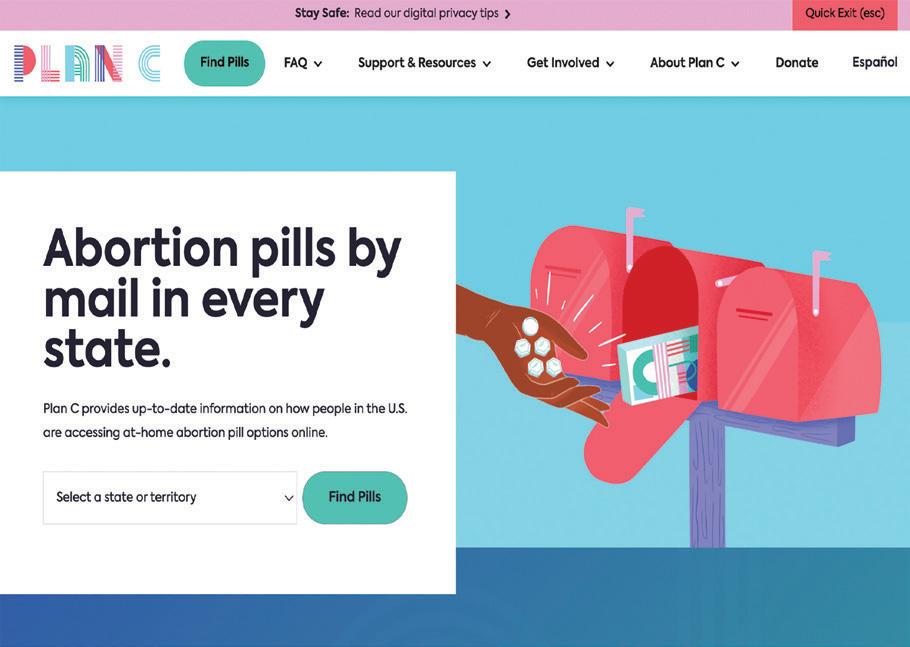
Knowledge and information are the keys to getting “up to speed.” Merrill says that she fi rst learned about abortion pills from Francine Coeytaux, a public health researcher, who had helped bring Plan B over the counter,
“In that meeting, as Francine told me about abortion pills, my jaw was on the floor,” Merrill says. “I couldn’t believe I didn’t know about this. I couldn’t believe how transformative it seemed, and I asked how I could help. She said, ‘I need a website.’” Merrill had just started her own web studio and realized she could encourage a paradigm shift in how people think about abortion, what abortion is, and who gets to access an abortion. Plan C’s website now reaches two million people per year across the U.S., including in restricted states, and has a comprehensive social media presence that communicates with people on a daily basis.
Ultimately, Plan C recognizes access to abortion pills as a human right and a vital expression of bodily autonomy.
Plan C plancpills.org
Amy Merrill Co-founder(202) 682-2640 amy@plancpills.org
Ways to Give...
By Check or DAF:Plan C c/o NWHN 1413 K Street NW 4th Floor Washington, D.C. 20005
Tax ID# 52-1081261
Designate gift: for Plan C
The question was simple: “How can you help pregnant women and newborn babies survive?”
e question led to the creation of One Heart Worldwide, according to David Murphy, chief executive officer of the international organization. Beginning its operations in Tibet, after founder Arlene Samen met with the Dalai Lama, who posed this question, One Heart Worldwide eventually moved to neighboring Nepal. is is where it continues its life-saving work to decrease maternal and newborn mortality rates in some of the most remote regions of Nepal.
“In Nepal, a woman [or girl] gets married at an early age, 15, 18, maybe 20. … And when she’s pregnant, she doesn’t know what’s going on with her body and isn’t afforded access to quality services that we have in the West.”
One Heart Worldwide prides itself on providing maternal and neonatal healthcare by increasing access to safe pregnancy throughout Nepal using a unique model called the Network of Safety.
The Network of Safety is a six-year model where One Heart Worldwide works with the government to strengthen the existing health system. It begins with conducting an intensive assessment of rural birthing centers and tailoring a plan of action that includes the upgrading of birthing centers, providing equipment, training healthcare professionals, and building the capacity of local governing structures. ese activities are implemented over years two to four with the local government sharing in the financial cost. In the final two years, One Heart Worldwide begins transitioning out of active implementation but remains engaged to ensure long-term sustainability.
“Maternal healthcare is challenging in many countries. Americans don’t know how good we have it,” Murphy notes. “We take for granted so many of the opportunities and services that we have. In Nepal, a woman [or girl] gets married at an early age, 15, 18, maybe 20. … And
when she’s pregnant, she doesn’t know what’s going on with her body and isn’t afforded access to quality services that we have in the West.”
“For many of these women, they live one or two days’ walk on extremely rough roads,” Murphy continues. “ e terrain in Nepal is [treacherous]. … It takes hours to drive … because the roads are literally built into the side of mountains with sheer drop-offs. Just giving them access to care is something that we’ve been working on since we’ve been in Nepal.”
“What’s unique is that we go in with just a finite period of time,” Murphy explains. “We have an exit strategy from day one, and we know that we’re going to cost-share with the municipality. So, it’s a partnership of building up the existing system and not setting up a parallel structure to foster sustainability.”
Katie Dyas, communications manager for the organization, is a champion of this system because they collaborate with the local communities instead of simply relying on foreign intervention.
“We obviously influence things and help things along,” Dyas observes. “But what I love is that Nepalese are serving Nepalese. It’s not a bunch of Americans going in and saying, ‘You’re doing everything wrong, and you need to change all of these things.’”
In the end, those they train, such as Skilled Birth Attendants, are quick to mention their boost in confidence.
“With One Heart there are safety nets in place,” Dyas explains. “So, if they need to be referred to a District Hospital … they know where to send patients and can assess complications to ensure that this mother and newborn can survive.”
rough this “each one, teach one” method, One Heart Worldwide can be confident that their work and their mission has been successful and can be modeled across different districts and national borders.
It’s a mission worth striving for, one community and one nation at a time.
One Heart Worldwide oneheartworldwide.org
David Murphy Chief Executive O cer(720) 635-4872
david@oneheartworldwide.org
Ways to Give... By Check or DAF:
One Heart Worldwide 8141 El Extenso Ct. San Diego, CA 92119 Tax ID# 30-1032421
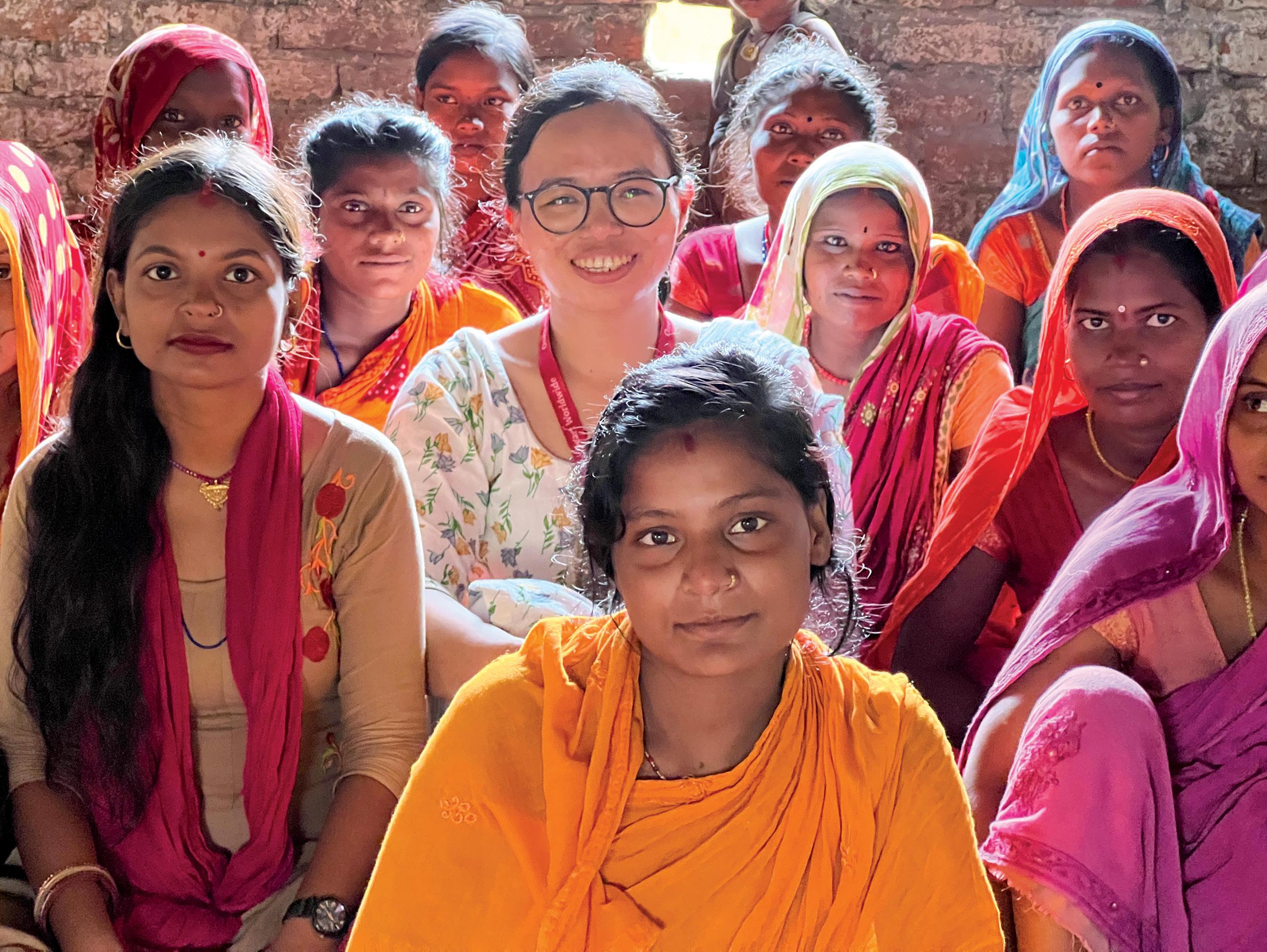

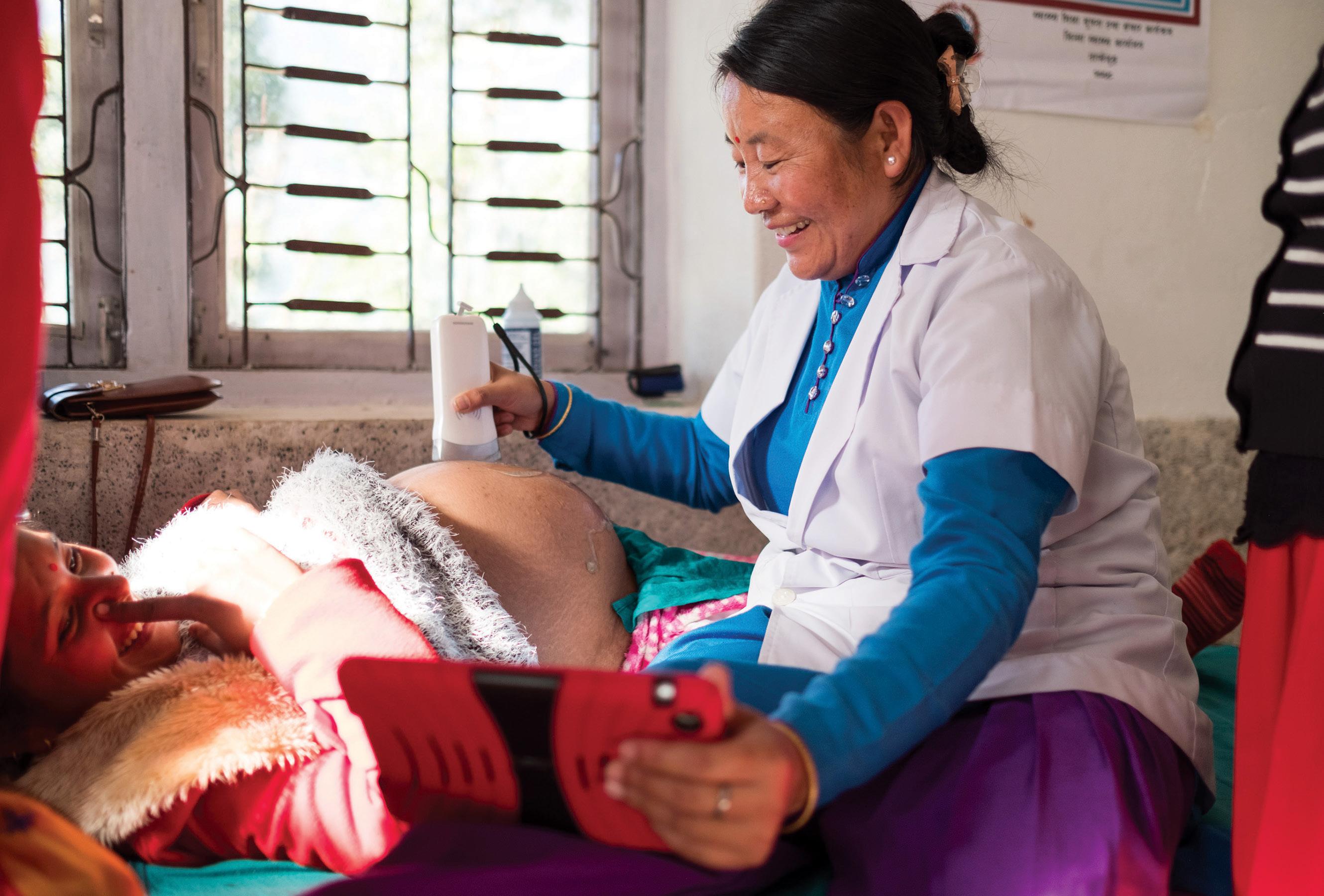
 One Heart Worldwide’s Senior Training O cer, Pratiksha Rai, sitting with pregnant women and recently delivered women after an informational session in Sarlahi, Nepal. (photo by Pratiksha Rai)
Skilled Birth Attendant and expectant mother at a Birthing Center in Nepal during a rural ultrasound. (photo by J. Houston)
One Heart Worldwide’s Senior Training O cer, Pratiksha Rai, sitting with pregnant women and recently delivered women after an informational session in Sarlahi, Nepal. (photo by Pratiksha Rai)
Skilled Birth Attendant and expectant mother at a Birthing Center in Nepal during a rural ultrasound. (photo by J. Houston)






They say a heart-driven approach to leadership can change the world. If this is true, Jennifer Risher is on her way to doing just that. A self-described “heart-driven person,” Risher is a wise example of how getting clear about wealth, being true to yourself, and taking action can have a big impact. In 1991, Risher joined Microsoft and became an extra-lucky bene ciary of the dot-com boom. But as she moved from middle class to multi-millions, her new fortune brought uncertainty and discomfort. It took years to come to terms with new wealth. As part of the process, Risher wrote a memoir entitled, We Need To Talk: A Memoir About Wealth. Risher’s book is an honest exploration of how wealth a ects identity, one’s place in the world, and how nances too often correlate to our self-worth. e book is a catalyst for demystifying wealth. Since then, Risher has been “all in,” using her experience and social capital to help others understand their own money stories and nd their purpose. She has also been
“ Philanthropy is only one small part of how we, as women, can drive the change we want to see. We need to activate the power of our talents, time, ties, testimony, and treasure in all aspects of our lives and make sure we invest with our values and with a purpose beyond fi nancial return.”
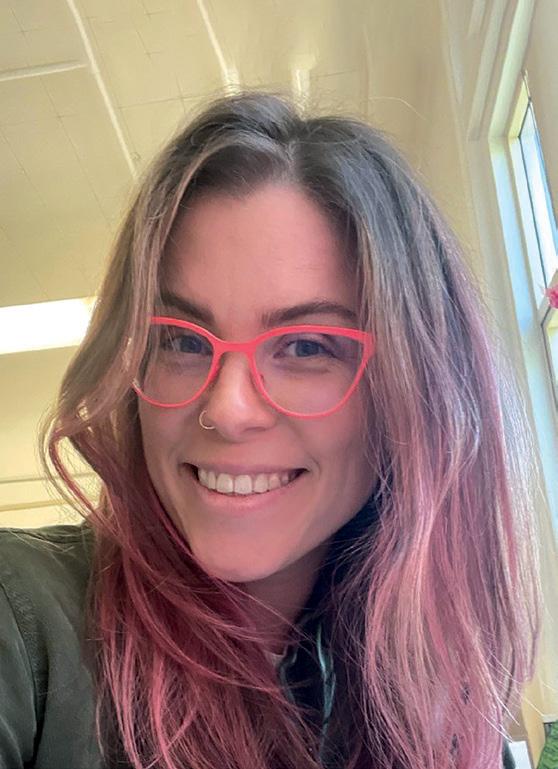
“In the past four years, I’ve seen the impact of #HalfMyDAF grow not just for Gateway Public Schools but across the board for nonprofits. I’m sharing the initiative with fellow fundraisers so they can make #HalfMyDAF part of their major donor work, and it’s become part of every conversation I have with Gateway’s current and potential donors. While the concept is simple – moving charitable dollars to nonprofits and increasing investments in our community – it takes a peer-to-peer and donor-driven e ort like this to make it happen. We’re deeply appreciative of the Rishers and the growing list of DAF donors who are making this possible!”
– Chanda
Lockhart, Gateway Public Schools, San Francisco, CA.
investing with women of color and shaking up a system that allows – even encourages – too much wealth to sit on the sidelines. “I’m breaking the taboo around talking about money, and shifting power and capital with the goal of economic, gender, and racial equity.”
#HalfMyDAF
Sitting in their backyard, sheltering in place during the early months of COVID, Jennifer and her husband, David, discussed how to help nonpro ts. ey were highly aware of the need and hard work being done and also of the billions of dollars just sitting in donor-advised funds. In addition to what they were already giving, they came up with a way to inspire yet more and get other donors to join them. “Our hearts went out to nonpro ts that were working harder than ever and yet starved for funding. #HalfMyDAF was an emotional reaction to the need and uncertainty.”
As evident in her memoir, Risher is not one to stay quiet when she sees a need, even when it means disrupting the status quo. e Rishers put up $1 million in the form of matching grants to inspire people with donor-advised funds to start giving. “Any donor-advised fund (DAF) donor who committed to spending half of their DAF by the end of September 2020 had the chance to get matching grants from us. We created a website, launched in May on Giving Tuesday, began to raise awareness of what was, at the time, $140 billion stuck in DAFs, and got money moving to nonpro ts.”
That first year, in just five months, #HalfMyDAF moved $8.6 million from DAFs to nonprofits. Although it hadn’t been their intention, over the last four years, the Rishers have continued with #HalfMyDAF, contributing millions, rallying donors and nonprofits, and creating a sense of urgency, excitement, and community. “It’s become a real movement. There’s a lot of buzz.”
Some donors meet for hours upon hours with nancial and philanthropic advisors. ey craft strategic giving plans and platforms. It can take years to gure out the right “ ow” of resources. ey run each and every potential scenario for their money by a vast array of stakeholders. Again, and again, and again. Taking time and money away from real people, in real time, that need support.
But sometimes the philanthropic process can get in the way of human transformation.
In March 2020, Risher reacted to a world in trouble. She used a heart-driven approach and let her empathy inform her actions and drive her philanthropy. In the last four years, #HalfMyDAF has mobilized over $50 million. Risher openly discusses wrestling with her own re-
lationship to money and wealth. She also notes that heart-centered philanthropy has been a learning journey. “Like it or not, we are part of a capitalist system. Philanthropy is only one small part of how we, as women, can drive the change we want to see. We need to activate the power of our talents, time, ties, testimony, and treasure in all aspects of our lives and make sure we invest with our values and with a purpose beyond nancial return.”

“#HalfMyDAF is a fantastic program. It has been so helpful to Prospera because we’ve received matching grants and have been able to connect with other donors who want to support a vibrant community of Latina immigrants.”
– Maite Gasco, Prospera, Oakland, CA
#HalfMyDAF is issue-agnostic but has also given millions to nonpro ts working toward gender and racial equity and for reproductive health. Risher personally seeks to bring a stronger gender lens to her philanthropy and organizing into the future. A proud member of the Women Donors Network and a new board member of Women Moving Millions, she seeks to inspire more women to support each other by leaning into these times and aligning their resources for change.
Her heart-driven leadership advice? “Get out there and be unabashedly visible. Build your LinkedIn. Build your thought leadership. Network as part of your work day. e old ways of women being invisible are over. ere is nothing indelicate about standing in your power, owning your voice.”
Please contact us to explore joining as a donor on the matching pool side of #HalfMyDAF.
Jennifer Risher Co-founder jenniferrisher.com halfmydaf.com/contact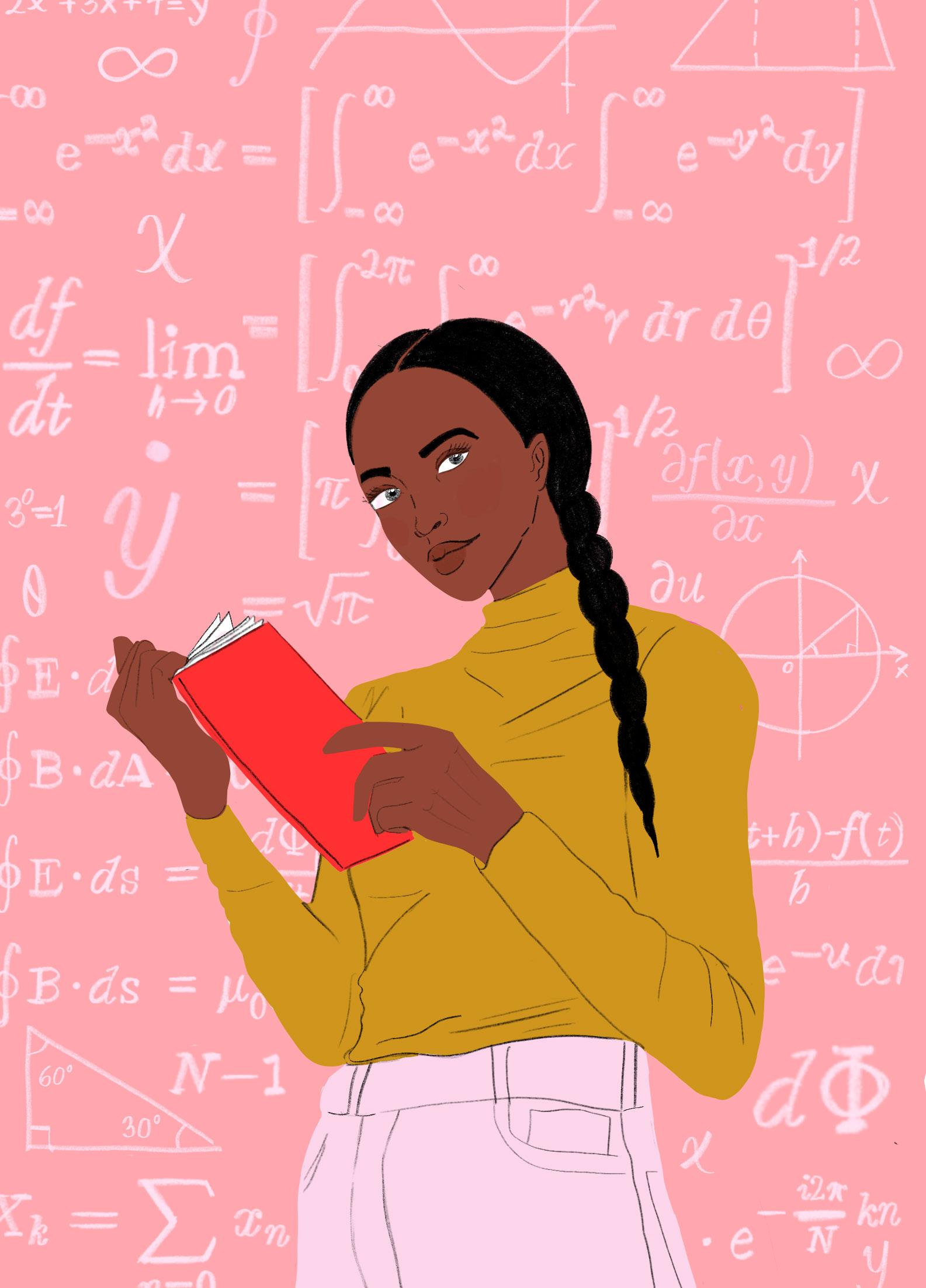
Too many preteen girls have the same worrisome rite of passage. Their confidence plummets. They suffer from negative body image. They become less physically active. They internalize the message that math and science aren’t subjects in which girls excel.
It doesn’t have to be this way. Groups across the country are working to ensure that girls have a different coming of age – one that doesn’t sacrifice their self-esteem and prioritizes the mindbody connection. These organizations are training girls to be emotionally resilient by honing their leadership skills. Instead of shrinking into themselves, girls lean into strengthening themselves emotionally, psychologically, and physically. Their minds are nurtured by access to mental health resources, and they learn to resolve conflicts with others and advocate for social and political causes that matter. Through sports and other physical activities, they nourish and fortify their inner spirit and inner strength.
Today’s girl-centered nonprofits have made it clear that their focus is on the whole person. From teaching girls to surf or use power tools to STEM programs and building financial literacy, their programming tells girls that no skill is off limits to them, even those that have long been coded as “male.”
But some girls have been historically marginalized to such a degree that they lack the academic foundation to sharpen their skill sets. Enter the nonprofits that are subsidizing the costs for systemically underserved girls to receive rigorous educational instruction, culturally responsive schooling that keeps them connected to their ancestors, personal development programming, and early exposure to trade professions. Outreach to these young women paves the way for them to become economically mobile adults.
As pro-girl nonprofits work to revolutionize and expand the lives of youth, they face enormous ob-
stacles. Girls have struggled with body image for decades, but experts say that the social media age has worsened the problem. That’s why some organizations are teaching young women to identify and analyze the harmful and sexist messages circulating in the media. Beyond body image, social networking sites have been linked to mental health problems among youth, including loneliness and depression, conditions that the COVID-19 pandemic exacerbated. By taking part in targeted outreach programs, young women are seizing the chance to collaborate with their peers in environments focused on sisterhood.
Youth mental health has also suffered in a political climate in which the nation’s culture wars have played out in schools and doctors’ offices. Restrictions on reproductive health and gender-affirming care have hit young people hard, as has the introduction of a series of bills that limit what they read and learn in school. Such legislation has motivated advocacy groups to help youth come together to fight for their rights, access a wide range of reading materials, and meet peers who share their experiences.
Meeting the emotional, physical, and mental needs of youth is hard work. It requires resources that nonprofits struggle to secure. COVID-19 not only resulted in a worker shortage that made it challenging for organizations to hire personnel but also created greater societal need. Nonprofits require more funds to serve the most vulnerable members of their communities.
Data show that girl-centered nonprofits are already making a difference. The youth who take part in them feel good about their bodies, are more likely to graduate from college, and know how important it is to be engaged citizens. Imagine what these organizations could achieve with sufficient resources. They might guarantee that girls have a different coming of age – one from which they emerge as leaders who change their communities for the better.
Kara Nortman, a venture capitalist and tech executive, is currently the co-founder and managing partner of Monarch Collective, a sports venture capital fund with a focus on women’s teams, leagues, and business opportunities. Before that, she worked for Microsoft and Morgan Stanley, as well as at IAC, where she oversaw the acquisition of Urbanspoon and Dictionary.com. Nortman is also a founding member of All Raise, a venture capital-led nonprofit dedicated to increasing diversity in the tech and tech funding communities. She also advised the U.S. Women’s National Team Players Association during the soccer team’s pay equity fight.
Julie Uhrman made her mark in the technology, gaming, and entertainment sectors. She founded the video game console company Ouya and was an executive at Lionsgate, Vivendi Entertainment, and Playboy Enterprises. She is also an advisor to numerous tech companies and venture firms, including Drive by DraftKings and Act One Ventures. Uhrman has been named one of the 100 Most Creative People in Business by Fast Company and one of the most powerful women in gaming by Inc. She is an advisory board member of the Los Angeles Sports & Entertainment Commission and the Rose Bowl Institute, as well as a board director of the Los Angeles Sports Council.
In 2020, Nortman and Uhrman – in partnership with Hollywood and sports luminaries like Natalie Portman, Jessica Chastain, Serena Williams, Abby Wambach, and Mia Hamm – launched Angel City Football Club (Angel City FC), the L.A. area’s first women’s professional soccer team since 2010. The goal was to create a sports venture that was not just profitable but that could change the narrative about gender and equity. The team has been wildly successful, leading the National Women’s Soccer League in attendance, ticket revenue, sponsorship sales, and merchandising, all while investing 10% of sponsorship dollars back into the community. Uhrman serves as president of Angel City FC.
Giving List Women: You were an entrepreneur for decades before you co-founded Angel City FC. How has this experience been different?
Julie Uhrman: I’ve never been part of a more effective, efficient team with results beyond anyone’s expectations.
GLW: What made you want to create a women’s sports team?
JU: The idea for Angel City began with Natalie Portman and her work during #MeToo to bring access and opportunity in representation and equal pay to female actors and directors. Kara Nortman, our second co-founder, and Natalie worked together at Time’s Up with the U.S. Women’s [National] Soccer Team in their lawsuit against U.S. Soccer, because women players who consistently outperformed their male counterparts at the national level don’t make the same amount of money.
Natalie was also inspired by Abby Wambach’s speech after receiving ESPN’s [ESPYS Icon] Award, along with Kobe Bryant and Peyton Manning. Abby talks about walking off stage and having the epiphany that she was walking into a very different retirement than Peyton and Kobe, who had hundreds of millions of dollars waiting for them. And Abby doesn’t have health insurance or a way to pay her mortgage.
The last piece for Natalie was watching her son, a big soccer player, wear a [Lionel] Messi jersey one day and a Megan Rapinoe jersey the next and him not seeing gender when it comes to excellence in athletics, and wanting to be a part of a world where that’s the norm and not the exception.
Then [the] U.S. women go to France in 2019 and win the World Cup for the second time in a row. It felt like now’s the time to draw attention and awareness to equality and equity for women [in] sport.
Kara and I were playing together in the Women Who
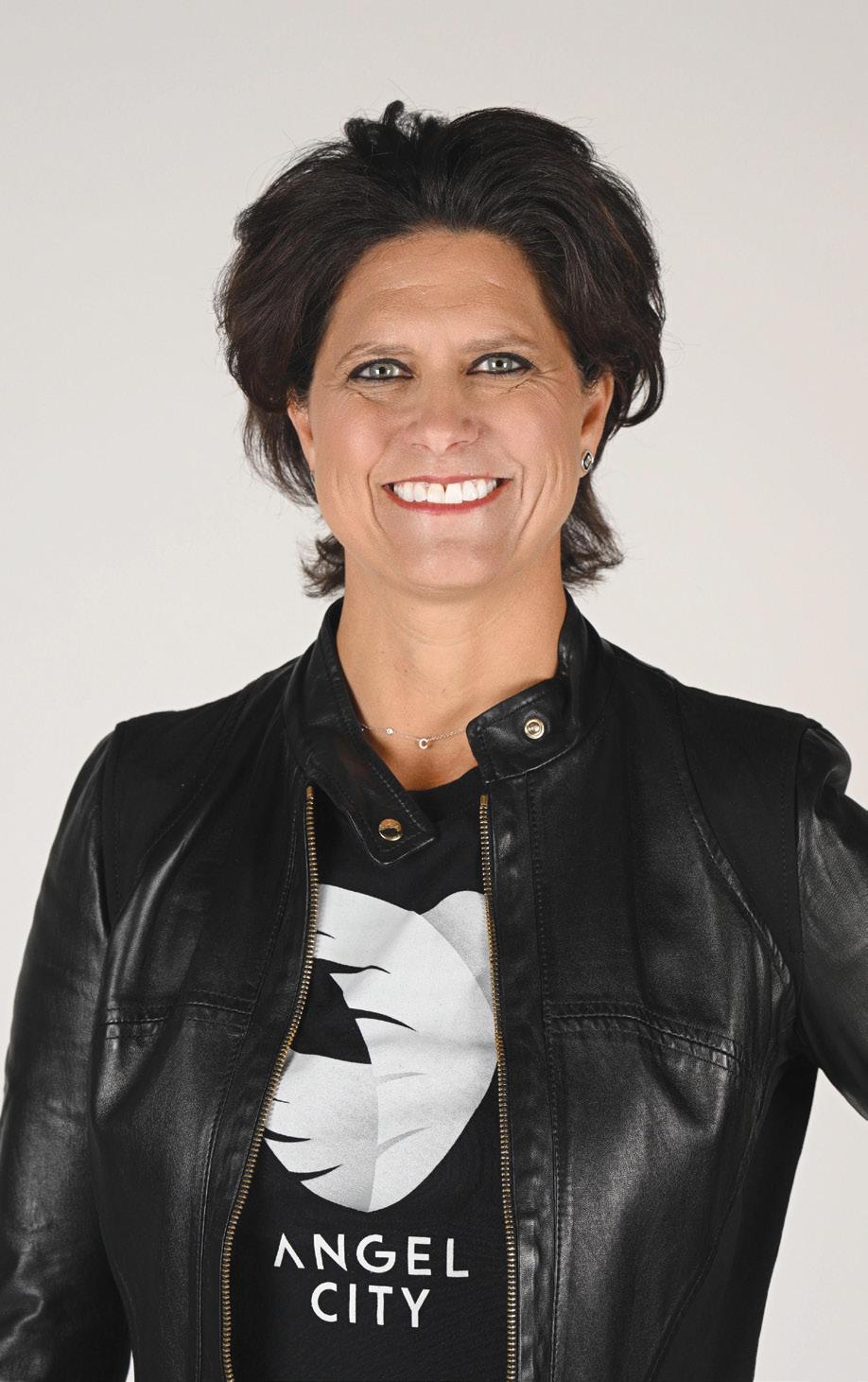
Tech basketball league when she returned from the World Cup and pulled me aside and said, “Natalie and I have this crazy idea to bring a women’s professional soccer team to L.A. Would you help us?”
I’m an athlete, and I had no idea the National Women’s Soccer League even existed. Which is the exact reason it’s important for us to exist. Less than 3% of media coverage is about women’s sports. Add to that the backdrop of L.A., with 11 professional sports teams, including two men’s soccer teams, proving there’s a marketplace for soccer. We had to figure out – was there a marketplace for women’s soccer?
We built Angel City differently, given our roots with Time’s Up and #MeToo. Natalie wanted the mission to be at the core of Angel City and, as an entrepreneur, I wanted profit to be at the core, understanding that 90% of all sports teams don’t make money. As female founders, it was important for us to have a different outcome, because if we led with purpose and were profitable, we could change the narrative and drive people to follow in our footsteps. We committed to building an organization where mission and capital can coexist, with the
goal of having a positive impact on our community and on the sport, and to drive equity for women.
GLW: Mission and capital rarely coexist. How did you do that?
JU: We lead with passion and purpose to drive profitability. Everything has an impact. When we announced Angel City, we partnered with the LA84 Foundation and the Play Equity Fund. We started selling seat deposits and partnered with Nike to give sports bras to girls in need, because the main reason girls stop playing sports is they can’t afford a sports bra. As we started taking money, we wanted to do something good with it.
To be successful in L.A., with 11 pro sports teams, we needed to create a spectacle. Gameday had to be a FOMO [fear of missing out] experience. We wanted to recreate the 1980s [Los Angeles] Lakers Showtime [era],
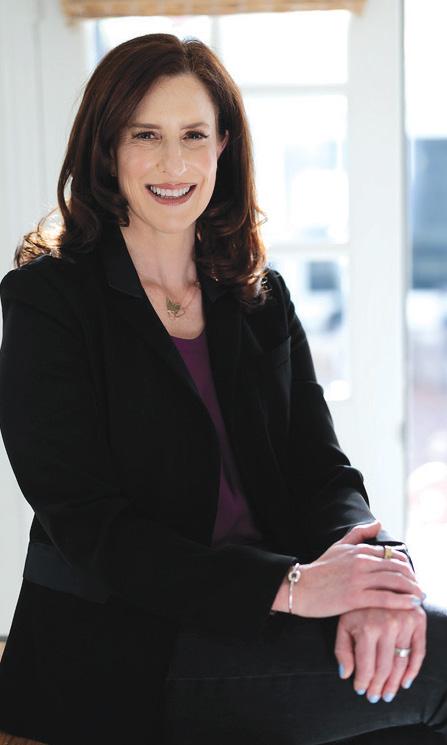
where you went to a game either to see Magic [Johnson] or to see who Jack [Nicholson] was sitting with courtside.
We had two principles. First, every game is somebody’s first. How do we create an experience that both entertains and makes you want to bring someone else to have an incredible time?
Second, creating an experience with a price point for everyone. To make sure everyone knew how incredible the product was and then add to that the experience.
We wanted to build a community that reflects L.A. – inclusive and diverse – and a safe and fun gameday experience.
ting nearly $2.3 million to work. With DoorDash, we support [efforts to address] food insecurity, and we’ve given out over a million meals. We do nutrition and education with Sprouts [Farmers Market], and we’ve donated nearly 243 tons of produce. We do coaching programs to help women and non-binary individuals find jobs. We’ve given over 40,000 grants. We do things that address essentials to play sports – transportation, food, sports bras, and access. We do a summer internship program for BIPOC students. And we wanted to include players and fans in the drive for pay equity. So, we created the Angel City 1% player impact fund, where 1% of our net gate receipts goes to our players if they use their name, image, and likeness to promote games.
“As female founders, it was important for us to have a different outcome, because if we led with purpose and were profitable, we could change the narrative and drive people to follow in our footsteps. We committed to building an organization where mission and capital can coexist, with the goal of having a positive impact on our community and on the sport, and to drive equity for women.”– Julie Uhrman
GLW: What role do women’s sports play in bringing about a cultural shift toward gender equity?
JU: It starts with access. We’ve launched several programs to address equity, but we recognize it’s going to take time to achieve pay equity. But you have to lay the breadcrumbs today to actually achieve it.
We wanted our partners and sponsors to be part of our community impact work. So, we created the Angel City 10% Sponsorship Model, where 10% of our sponsorship dollars go back into the community. We created a social impact platform of equity essentials and education. We work with our partners to be valued, aligned, and then to support programs in the community. We’ve supported over 35 partners put -
We are, uniquely, female founded, with a majority female ownership group, including 14 former U.S. Women’s National [Soccer] Team players. We’re building Angel City on their shoulders, and having them involved in our organization from a guidance, advice, and recruiting perspective has been incredible.
We also wanted to do something for former players, so, with the California Community Foundation, we launched the Player 22 Program, a grant program for former players to stay in the sport, to increase their education and their tool set to continue to provide impact.
And because so many people want to support Angel City, we built the Angel City Impact Fund to continue to create access and opportunities for youth and to invest more in the program where we’re doing both.
GLW: What role can sports play in the journey toward gender equity from a cultural perspective?
Kara Nortman: Women’s sports is a cultural institution that brings people joy, that moves their mind, body, and spirit. It moves things forward by getting people to show up, getting their butts in seats, and making them feel part of something that isn’t connected to a screen – part of a community in the real world – and all that makes us feel human and present.
It’s sitting in a modern community where you feel like you have a place as a woman, as a Black person, as a gay or queer person, whatever it might be. It’s a way to get people to understand how we can build community and to let the joy and fun speak for itself – to look around and say, huh, people in the crowd look a lot more like L.A., or the people on the bench coaching the team look a lot more like the team. It’s a way of moving society forward with power structures and normal everyday moments we all crave, which is being together as human beings.
JU: That’s how change happens. That’s how movement happens.




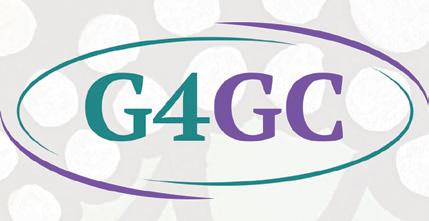


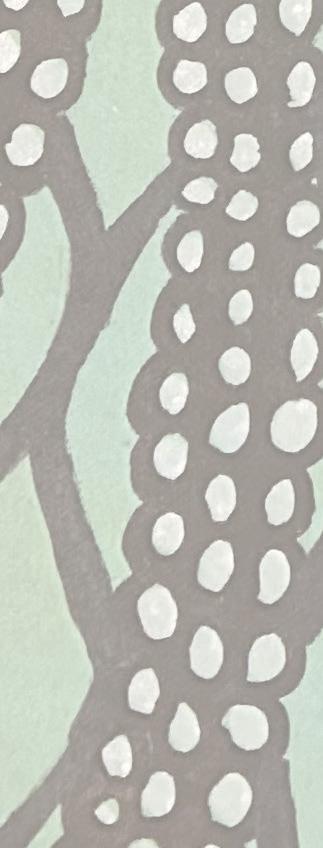


 “Iby Lauren Brathwaite
“Iby Lauren Brathwaite
’ve been committed to girls of color since I was one.” Dr. Monique Couvson, president and CEO of Grantmakers for Girls of Color (G4GC), has dedicated her life to young people, beginning with her involvement in organizing, mobilizing, teaching, and researching during her teenage years. Rooted in her identity as a Black girl from the diverse and eclectic melting pot of California’s Bay Area, her perspective has been shaped by her upbringing in an environment that embraced people from all walks of life, which led to her scholarly pursuits exploring the intersections of race, gender, justice, and education.
“One of the things I like to say about the way G4GC operates is that we do our grandmothers’ philanthropy… We think about our grandmothers, how they showed love and community, how we impact our communities, how we care for our communities, how we hold our communities, and our notion of doing that as a grandmother.”
“If you love yourself, you want to be part of a community that invests in you,” says Couvson. Although girls are sometimes taught that such thinking may be perceived as sel sh, she rmly believes that “this is an essential way to think if girls are going to grow, be healthy, and [be] whole.”
Throughout her life, Couvson has rejected the idea that being a girl of color should limit what is possible. She recognizes that girls of color are welcome and deserving, and she has always de ned her work as community and freedom work.
After years of research, Couvson saw a stark funding gap for studying girls and women of color. is led her to research the broader issue within philanthropy, which ignited her commitment to addressing the lack of investment in girls of color.
Assuming leadership of G4GC in 2020, amidst the onset of the COVID-19 pandemic, Couvson was acutely aware that this global crisis would have a disproportionately negative impact on youth of color. It was imperative for Couvson to swiftly allocate resources to organizations working in communities that serve and engage girls of color.
Couvson advocated for the organization’s transformation from a convening space into a grantmaking institution, and she initiated the Love is Healing COVID-19 Response Fund. Between April 2020 and September 2020, this vital fund raised and regranted more than $4 million to over 100 organizations across 26 states. By envisioning G4GC as a proactive philanthropic intermediary, Couvson positioned the organization to become an impactful entity working with, and for, girls and youth of color.
According to a recent philanthropy study by the Ms. Foundation for Women, women and girls of color receive a mere 0.5% of the $66.9 billion granted by foundations. is translates to a staggering gure of just $5.48 per woman and girl of color in the U.S. Couvson articulates that the mission of G4GC is to invest in the liberated futures of girls and gender-expansive youth of color. is commitment is guided by an intersectional and participatory approach in developing priorities, with the goal of ensuring that all young people have access to a future they can take pride in.
“One of the things I like to say about the way G4GC operates is that we do our grandmothers’ philanthropy… We think about our grandmothers, how they showed love and community, how we impact our communities, how we care for our communities, how we hold our communities, and our notion of doing that as a grandmother.”
Today, Couvson takes great pride in G4GC’s expansion to a team of 18 members and the successful allocation of $25 million into communities nationwide, supporting nearly 400 grantee partners. Under Couvson’s leadership, G4GC has initiated impactful projects, including the Black Girl Freedom Fund; the New Songs Rising Initiative, in partnership with the Seventh Generation Fund for Indigenous Peoples; and the Holding a Sister Initiative, a collaboration with the Black Trans Fund for trans girls of color.
G4GC also provides guidance and professional opportunities for their grantee partners. “Working with girls and gender-expansive youth of color means that many of our organizations are trying to navigate complex systems in real time, and require some strategizing around how to navigate some of the nancial systems that negatively impact their organizations,” says Couvson. “We know there’s an underinvestment in organizations that women and young people of color lead. And so, we do a lot of technical assistance, brainstorming, planning, and strategizing with our grantees.
Couvson’s journey in the intersection of gender and race faces challenges, including the dismissal of these issues. She notes that the 2020 surge in funding after George Floyd’s killing highlights the onset of funding fatigue not long after, which she believes can be detrimental if left unaddressed. Couvson believes these challenges are not con ned to discrete and narrow lanes; instead, they permeate various aspects of justice.
is presents a unique fundraising challenge that requires careful consideration in resource distribution to maximize impact. “One of the greatest gifts we get from working with girls, and centering girls and gender-expansive youth, is that we can have a unique perspective on the unlimited possibility of justice. In doing that, we are
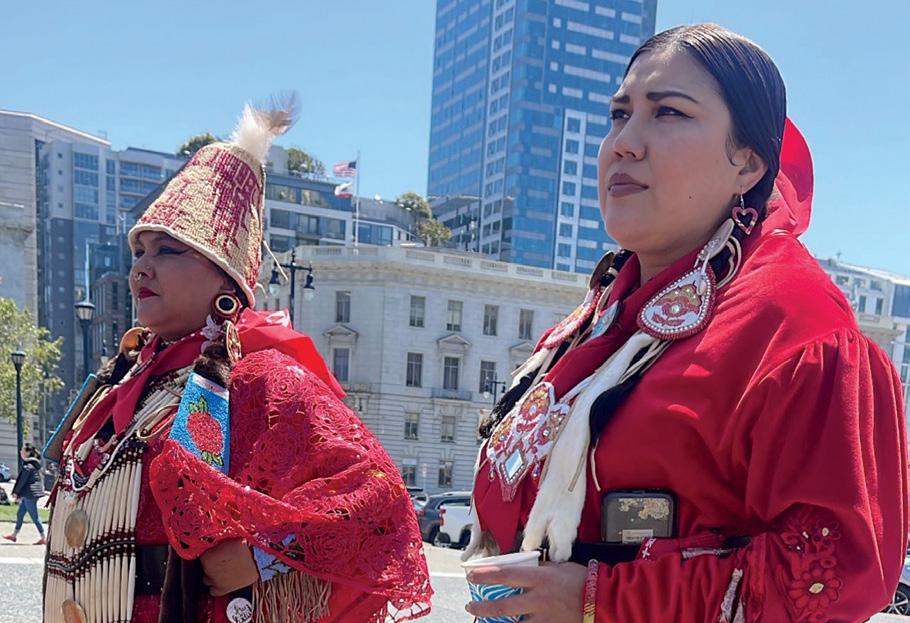
G4GC Grantee Partner, Indigenous Justice, at a Missing and Murdered Indigenous Women, Girls & Two Spirit Peoples gathering at San Francisco City Hall in partnership with the San Francisco Department on the Status of Women. (photo: Indigenous Justice & Morning Star Gali)
investing in strategies, practices, and organizations that not only give us new language around these ideas, or give us new identities around these ideas, but also new strategies for remedy,” says Couvson.
Couvson notes that G4GC’s success lies in establishing infrastructures and systems that show philanthropic stakeholders why it’s essential to resource girls and gender-expansive youth of color. Ultimately, G4GC aspires to transform how society perceives girls and gender-expansive youth of color, reshaping resource allocation to help them realize their dreams.
“We’re interested in a sustainable transformation that allows us to actualize what is possible when all our young people have access to quality health care, quality education, access to capital and economic opportunities,” she says. “An investment in [G4GC] is an investment in the constructive processes we have built to inform philanthropy – opportunities to meet us where the young people want to be met,” says Couvson. “We want our girls and young people to emerge into healthy adults so they can move in unobstructed ways into experiences rooted in joy.” Please contact us to explore joining as a donor:
g4gc.org
Grantmakers for Girls of Color c/o Rockefeller Philanthropy Advisors 120 Broadway, Ste. 3475, New York, NY 10271 Tax ID# 13-3615533
Janet Todd, executive director of Girls on the Run North Bay, has the same goal for everyone who participates in the nonprofit’s programs: To develop the resilience to be their authentic selves in an inclusive and diverse space.
By presenting elementary and middle school students an evidence-based national curriculum that helps them to understand who they are, how they can make a difference, and the benefits of supportive friendship, the Northern California-based organization is providing girls with vital life skills that allow them to navigate the social pressures that chip away at preteens’ self-esteem. When the girls wrap up their eight weeks of after-school programming, they complete a 5K to further build their confidence and an impactful project to build community.
“We reinforce that as they’re growing physically stronger, they’re also building their inner strength and learning skills to help foster their mental health,” Todd says. e emphasis on social and emotional learning, and the pairing of a curriculum with physical activity, distinguishes Girls on the Run from other girl-focused programs. But the name of the nonprofit, which has over 160 councils nationwide, belies the fact that it teaches girls about far more than running. Participants learn communication skills that include important tools to navigate conflicts. ”We received great feedback from teachers and principals about how our girls show leadership, especially on regulating emotions,” says Maria Jacobo who is a teacher and Girls on the Run North Bay volunteer coach.
e lives of over 2.25 million girls have been transformed through Girls on the Run councils so far. Independent, peer-reviewed studies have found that 97% of Girls on the Run participants learn critical life skills. And 85% of the girls made gains in characteristics such as confidence, compassion, and competence.
Helping Diverse Groups of Girls See Positive Representations of Themselves
F
ounded in 2006, Girls on the Run North Bay has always actively recruited coaches that represent the girls. Patricia Terrones is a multilingual coach. She shared that the opportunity allowed her “to get out of my comfort zone and challenge myself as a woman and a Latina.”
“We want the girls to see that they’re represented and that all women can be leaders,” Todd says. “We have girls who are all races and ethnicities from all socioeconomic backgrounds coming to this welcoming space.”
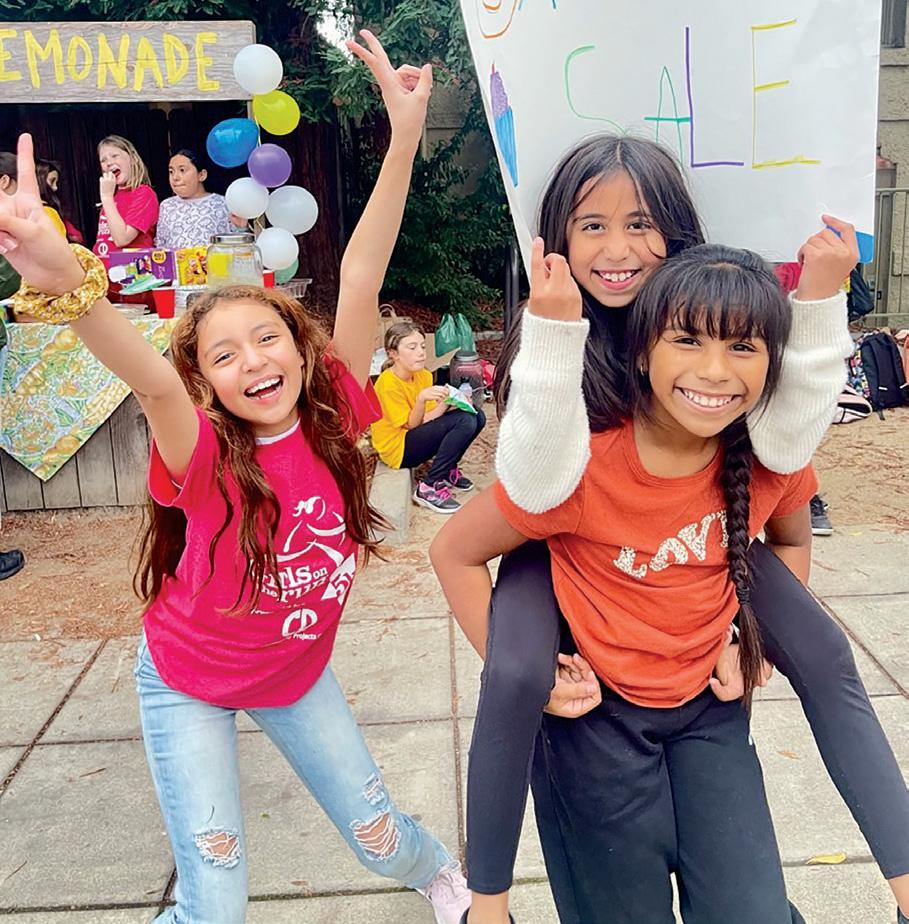
But recruiting volunteer coaches to mentor the girls has been challenging since the pandemic. Fundraising has also been difficult for the organization, which serves more than 1,500 participants in three counties every year. About 75% of families receive financial assistance to participate, and 66% of girls come from traditionally underrepresented racial-ethnic backgrounds.
With more funds, Todd says, Girls on the Run North Bay could serve even more girls from under-resourced communities. All girls need help to weather the loss of self-confidence and decrease in physical activity that too often coincide with puberty.
“We still need help, not only for our girls to be strong and stand up for who they are, but we need to help our community and our world to see that girls can do anything,” Todd says.
Girls on the Run North Bay
www.GOTRNorthBay.org
Janet Todd Executive Director (707) 280-5664
janet@gotrnorthbay.org
Ways to Give...
By Check or DAF:
Girls on the Run Napa & Solano (DBA Girls on the Run North Bay)
3299 Claremont Way, Suite 6 Napa, CA 94558
Tax ID# 55-0906534
Why is gender equity crucial to building the next generation of leaders in Santa Barbara County and beyond? Girls Inc. of Greater Santa Barbara (GIGSB) is committed to addressing this question. With a mission to inspire all girls to be strong, smart, and bold, the organization delivers evidence-based programs that are focused on equipping girls with the resources and support needed to thrive.
“If I hadn’t come to Girls Inc., my life would be different. I wouldn’t be where I am now,” explains alumna Yesenia after reflecting on her path from Girls Inc. to UCLA for college.
Established in 1958, GIGSB is a catalyst for change in Santa Barbara, a county situated on the Central Coast of California with a population of nearly 444,000. e organization addresses the intersection of gender and economic inequities by empowering young girls, ages 5-18, through education, mentorship, and life-skill building programs. rough these initiatives, Girls Inc. is actively breaking down barriers and challenging the status quo – all with a vision of powerful girls in an equitable society.
“Here at Girls Inc., we believe that the greatest measure of success and progress in a community is the well-being of its people and the opportunities they are afforded to thrive,” says Cydney Justman, executive director at GIGSB.
While Santa Barbara is often touted for its beautiful beaches, sunny weather, and other tourist attractions, the county is not exempt from the inequities that persist in the U.S. and beyond. According to the California Poverty Measure, a joint research effort between the Public Policy Institute of California and the Stanford Center on Poverty and Inequality, Santa Barbara County has one of the highest child poverty rates in the state, with 19.5% of all children in the county living below the poverty line. Additionally, Santa Barbara Unified School District’s 2022-2023 enrollment data showed that 61% of students in the district are from low-income families.
“Equity is embedded into everything we do at Girls Inc.,” Justman says. “We want to remove the structural barriers that often prevent girls from unlocking their full potential while providing fair access to everyone we serve
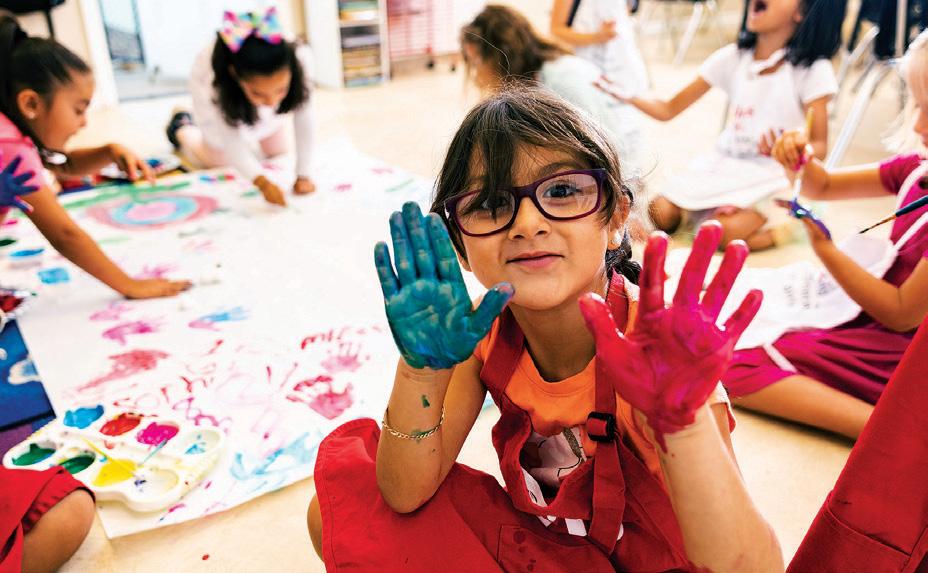
– regardless of their ability to pay.”
Girls Inc. is dedicated to making a measurable difference in the lives of girls across three key areas of focus:
Strong: Strong girls are in charge of their health and possess the knowledge, skills, and attitudes needed to develop and sustain healthy lifestyles.
Smart: Smart girls are academically engaged and connected to life experiences, opportunities, and careers through academic pursuits.
Bold: Bold girls are socially and emotionally intelligent and display character and confidence in the life skills that enable independent, productive, and fulfilling lives. Bold girls are civically engaged and see themselves as advocates.
In 2023, over 6,300 girls ages 9 and up, across 75 affiliate organizations, participated in a Girls Inc. national survey. Selected results from Girls Inc. girls are below:
• 87% plan to graduate from college
• 88% believe it is important to be an active and an informed citizen
• 89% report feeling like they have a great future ahead of them
Girls Inc. of Greater Santa Barbara girlsincsb.org
Cydney Justman Executive Director(805) 724-0264
cjustman@girlsincsb.org
Ways to Give...
By Check or DAF:
Girls Inc. of Greater Santa Barbara
4973 Hollister Ave. Santa Barbara, CA 93111 Tax ID# 95-6006417
Victoria Shorr still remembers the eagle that soared over her students on the opening day of the academy she co-founded eight years ago: Pine Ridge Girls’ School (PRGS).
“ e ancestors are with these girls,” a school board member said after spotting the bird. “I took that to heart,” Shorr says.
Shorr’s heart for educating girls led her to open PRGS –the only independent all-female school on a Native American reservation – for students in grades 6-12. e high school dropout rate is 70% on the Pine Ridge Reservation, where more than half of residents experience poverty, a quarter of newborns have fetal alcohol syndrome, and suicides hit crisis levels. Shorr was determined to change this. e school started with seven students, but it quickly grew to a current enrollment of 25, with hopes of eventually educating most of the 200 middle and high school girls on the Reservation.
But even those not yet enrolled are feeling the effects. Suicide rates for young teens have dropped dramatically since the School’s founding. As for the PRGS students, “ ey’re not thinking of killing themselves,” Shorr says. “Instead, they’re filling out college applications.” e rigorous education they receive at PRGS has helped all students improve in reading, and most have improved in math as well. Shorr attributes their success to the School’s culturally responsive curriculum.
“I like that we can learn about our culture and medicines and language and our ways of life. I’m lucky to have a school like this,” says student Brittny. Student Shay adds, “What I like about the school is learning Lakota teachings, the Inípis, and the meditation room. Along with our cook and the traditional food.”
Anpo Wicahpi, the school’s Lakota name, means “morning star” and symbolizes new beginnings. Even as PRGS makes huge strides for the young girls from the Oglala Lakota Nation, the School still faces challenges. Enrollment dropped when the COVID-19 pandemic started, and leaders have struggled to hire personnel amid a national teacher shortage. While PRGS has vans to transport students to school, finding drivers to transport girls from all corners of the vast Pine Ridge will never be easy. It’s no wonder that students dream of the day when there’s a dorm at the school.
“We learned early on that there were girls who really wanted that possibility, sometimes because of difficult
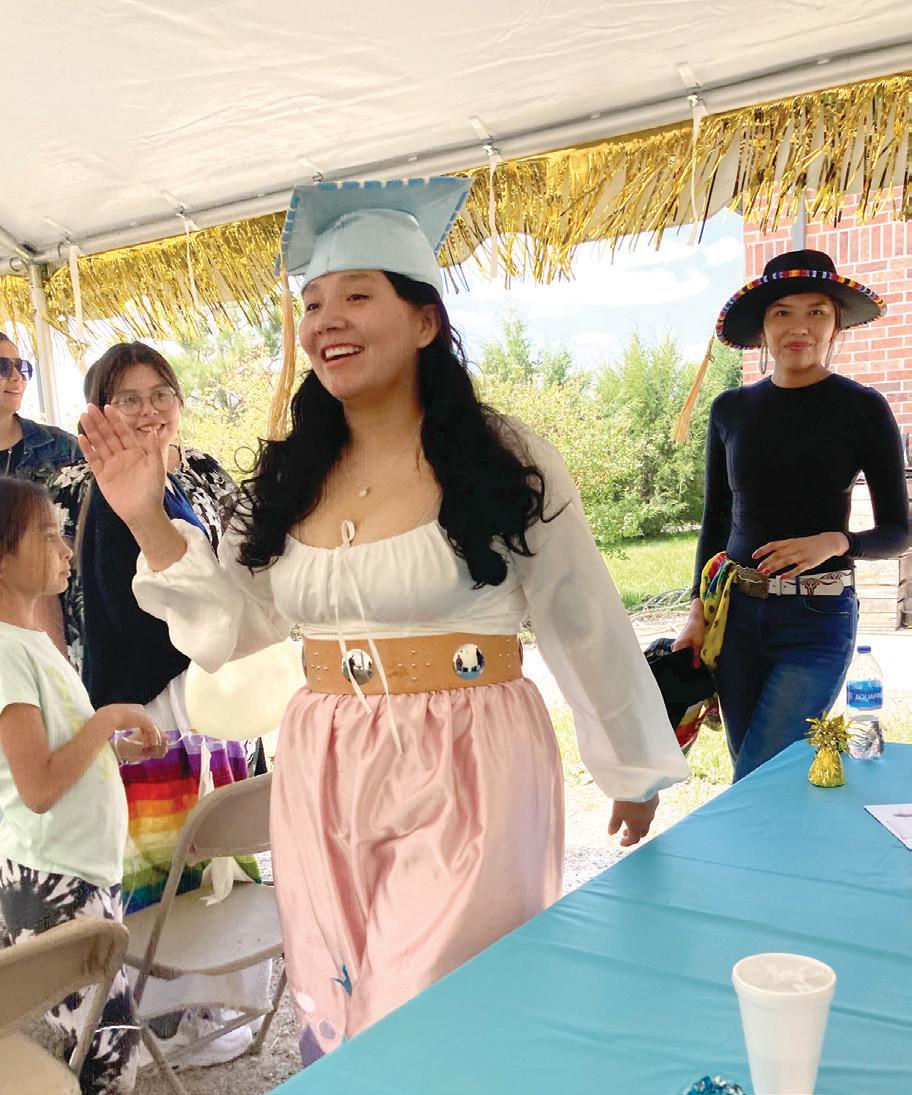
living conditions at home, sometimes because sheer distances and bad weather make the back and forth too difficult,” says Carole Goldberg, a PRGS co-founder.
On a reservation with high rates of obesity, diabetes, and food insecurity, the students’ needs go beyond transportation. ey also include athletic facilities for daily exercise and a new kitchen to ensure that students get daily, nutritious meals. Since PRGS does not receive government funding and is tuition-free, simply raising money for the annual budget can be grueling.
“ ese girls matter,” she says. “We’re constantly emphasizing the service to this community and to these girls, and seeing them flourish is so rewarding that it propels us forward.”
Pine Ridge Girls’ School pineridgegirlsschool.org
Jennifer Stover Head of School (605) 455-1812
jennifer.stover@pineridgegirlsschool.org
The Pine Ridge Girls’ School 2237 BIA 27 Porcupine, SD 57772 Tax ID# 46-3668492
When her son came out to her as transgender 11 years ago, Roz Gould Keith had never heard that term. Few resources existed for parents of transgender children then, particularly in Michigan, where she lived.
“ ere was absolutely nothing for us,” Keith says. “He was 13 at the time. Resources were scarce and for minors they were pretty much nonexistent.”
After her son shared his story on social media, and the family told their story publicly, other parents confided in her about their struggles to find support for their children. So, in 2015, Keith launched Stand with Trans, which began with one support group for parents of transgender children and then added a trans teen group. Keith serves as executive director of the organization, which offers services, programming, and events including a lifeline library, therapy assistance, a banned books club, a youth advisory board, family social events and monthly support groups for trans youth, young adults, and parents/caregivers.
Stand with Trans has also hosted three virtual college fairs that allow families to discover what universities have to offer to trans students. “We’ve had parents say, ‘My child wouldn’t even consider talking about college until we came to the college fair,’” Keith says.
Stand with Trans differs from other LGBTQ+ organizations, Keith says, because it focuses specifically on trans youth and their loved ones. Stand with Trans is the only organization in Michigan whose mission is solely focused on transgender youth. When families are able to connect with others like them, the isolation and fear lessens.
Keith shares that her son said, “I don’t know anyone like me,” before Stand with Trans started. “ at’s just heartbreaking for a parent to hear.”
“W e provide a lot of hope for young people by teaching adults what it means to be transgender,” Keith says. “By educating parents, teaching them how to be an ally, and supporting them through their journey, they can be more open and affirming with their children.”
By making education, information, and support the core of their program, Stand with Trans also builds a more knowledgeable, compassionate community, which
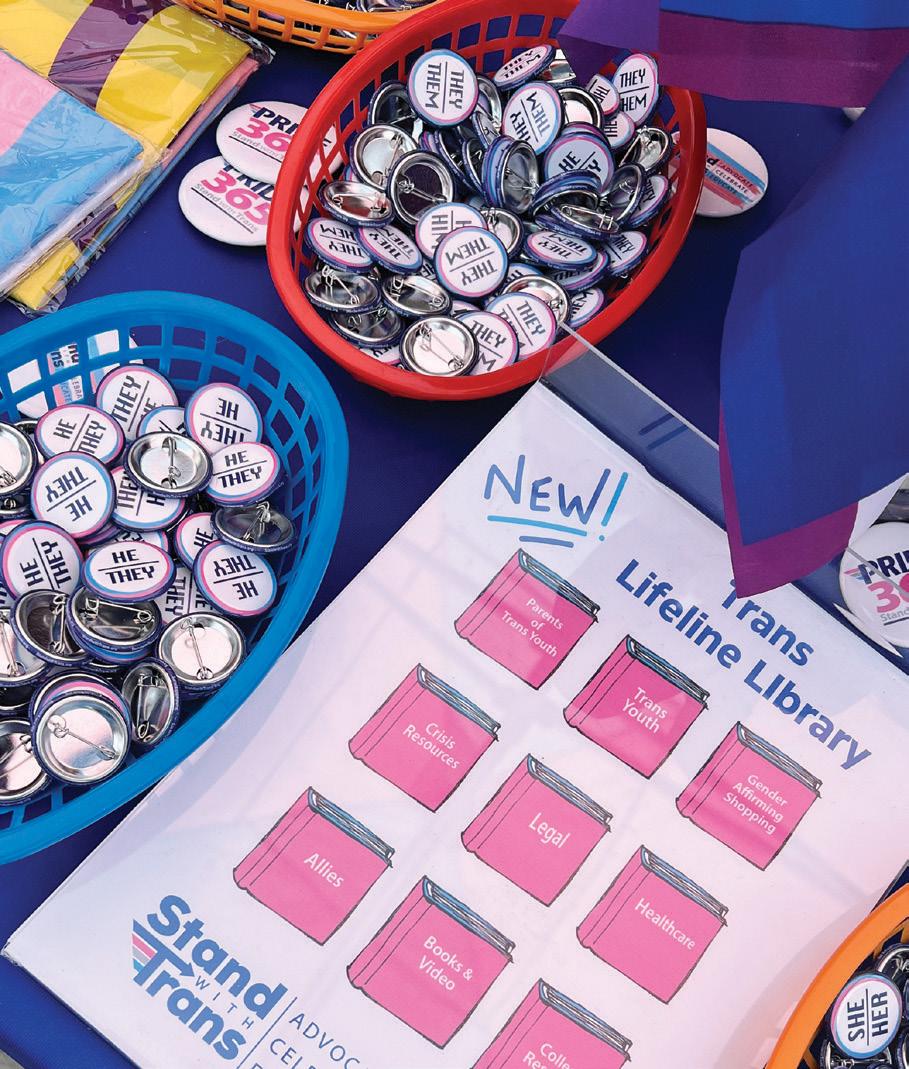
Pronouns are important.
is sorely needed now. A new Human Rights Campaign report, released at the end of 2023, describes “the epidemic of violence” against transgender and gender-nonconforming people. e majority of the victims killed last year were people of color, most of whom were Black transgender women.
Also, while there has been an “anti-trans wave” in politics, with many states recently introducing anti-trans legislation to ban gender-affirming care or trans girls from joining sports teams, Stand With Trans doesn’t engage in political advocacy, due to its 501(c)(3) status.
“We can’t tell you who to vote for, but we can talk about why anti-trans bills are dangerous and harmful and how it affects the mental well-being of the young people we serve in the community,” Keith says. “Having the resources to be able to do that advocacy is critical to making change.”
By Check or DAF:
Stand with Trans 23332 Farmington Rd. Farmington, MI 48336 Tax ID# 47-3135745
Nanny. Housekeeper. Personal shopper. Plumber.
Judaline Cassidy worked a series of jobs after leaving her native Trinidad and Tobago to immigrate to New York City as a teenager in 1989. “But plumbing has been the thing that has helped me to climb out of poverty,” she says.
“A six-year-old picks up a drill. She picks up a welding torch, and she believes, ‘I can do this!’ She’s unstoppable.”
Cassidy received training as a plumber while attending trade school abroad and carved out a career in the field within a few years of arriving in the U.S. In the construction trades, women are still a rarity. Women represent 14% of the construction workforce overall but just 4% of professionals in the building trades.
rough Cassidy’s New York nonprofit Tools & Tiaras Inc., which she launched in 2017, she trains and mentors girls ages 6-14 interested in the construction trades. Exposing girls to male-dominated occupations such as electrician, carpenter, plumber, and auto mechanic puts them on the path to economic mobility and gives them the self-confidence to challenge the idea that jobs have genders.
rough Tools & Tiaras, girls get exposure to the mechanical, industrial, and technical trades by participating in hands-on monthly workshops during which skilled women teach them about tools, craftsmanship, and the history of the trades. Girls also have the option to attend a summer camp where they learn the fundamentals of diff erent trades and develop team-building skills – complete with a hard hat, safety glasses, and work gloves.
“A six-year-old picks up a drill. She picks up a welding torch, and she believes, ‘I can do this!’ She’s unstoppable,” Cassidy says.
Some of the first participants in the program are heading to college. ey’re planning to study fields such as engineering and aviation, having encountered women pilots through Tools & Tiaras. e girls also met the feminist Gloria Steinem and Second Gentleman Doug Emhoff, whom they grilled about his wife, U.S. Vice President Kamala Harris.
“It was just amazing for us that that happened,” Cassidy says.
Tools & Tiaras has not only made an impact on the young girls it serves but also deeply impacted their mothers, many of whom have pursued trade careers after learning about the pay and benefits.
“It is a way for a woman who is really living in poverty or close to that line to go through a union apprenticeship program and make a salary and then be able to take care of a family, buy houses,” Cassidy says.
Still, she warns women that a trade career isn’t easy. As they perform physical labor, they will also have to deal with the emotional toll of working in a largely male environment where others have low expectations of them, she says. Cassidy now balances being a fulltime plumber with running Tools & Tiaras, which she would like to move to a bigger and better space. She needs resources to achieve both that goal and another goal – to open chapters of Tools & Tiaras in multiple locations, beyond its Boston chapter, à la the Girl Scouts.
Cassidy believes that the confidence the girls gain from operating power tools at a young age will follow them into adulthood.
“Even if they never become plumbers or electricians, I know for a fact they’re going to be leaders,” she says.
Tools & Tiaras Inc.
www.toolsandtiaras.org
Jen Jones
Partnership Relations Operative (917) 975-6916
info@toolsandtiaras.org
Ways to Give...
By Check or DAF:
Tools & Tiaras Inc.
155-03 Jamaica Ave., 2nd Floor
Jamaica, NY 11432
Tax ID# 82-1675434

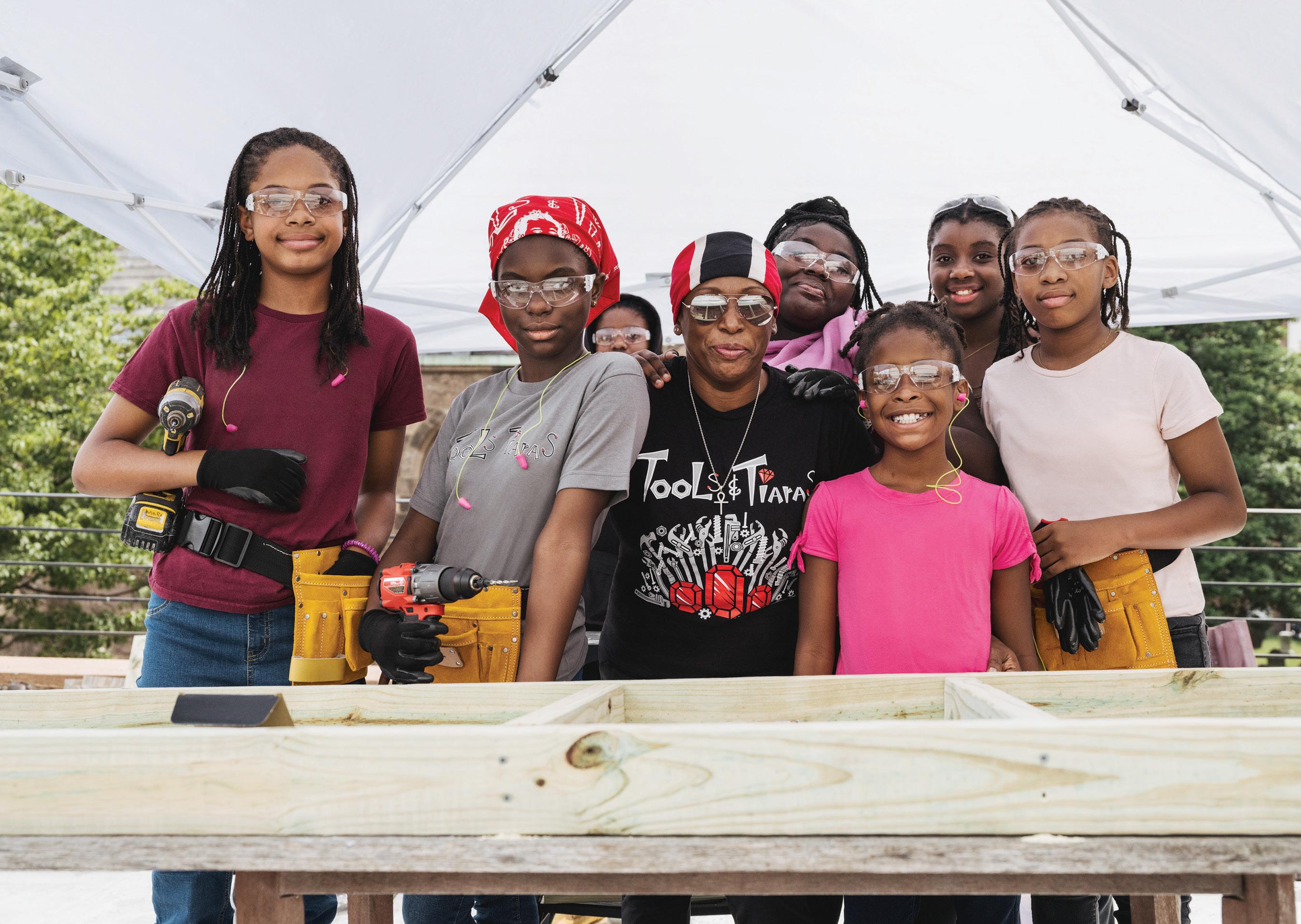

 Tools & Tiaras summer campers Paige (left) and Izzy (right) hard at work on a faucet install during a plumbing workshop. (photo: LIXIL)
Tools & Tiaras Founder/CVO Judaline Cassidy with a group of summer campers during a carpentry workshop. (photo: L’Oréal Paris)
Tools & Tiaras summer campers Paige (left) and Izzy (right) hard at work on a faucet install during a plumbing workshop. (photo: LIXIL)
Tools & Tiaras Founder/CVO Judaline Cassidy with a group of summer campers during a carpentry workshop. (photo: L’Oréal Paris)

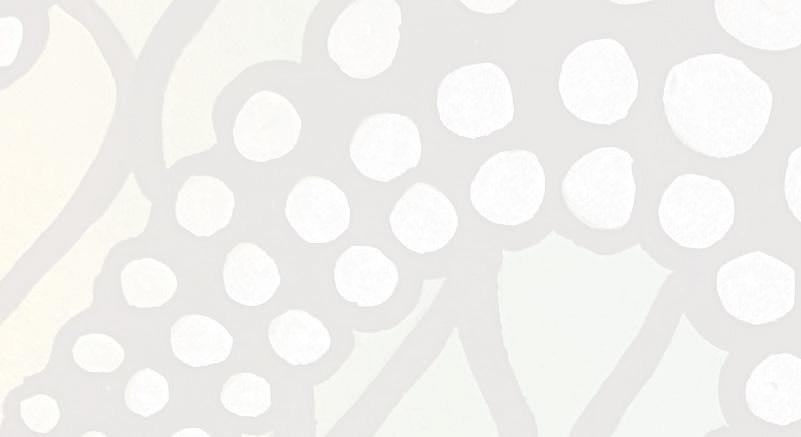



An Atlanta native, Lisa M. Hamilton hails from the heart of America’s civil rights movement. Her father was a criminal defense lawyer and her mother a teacher, so she says her exposure to advocating for humanity is imprinted in her DNA. It is no surprise, then, that she is now the visionary president and CEO of the Annie E. Casey Foundation, a private philanthropy based in Baltimore. Her leadership of this pioneering foundation re ects her upbringing and her profound conviction to lift up children, youth, and families who face the greatest obstacles and challenges.
e Annie E. Casey Foundation was established in 1948 by Jim Casey, founder of the logistics company UPS, and named in honor of his mother. Its mission is to make sure that all children and youth in the United States have a bright future. To


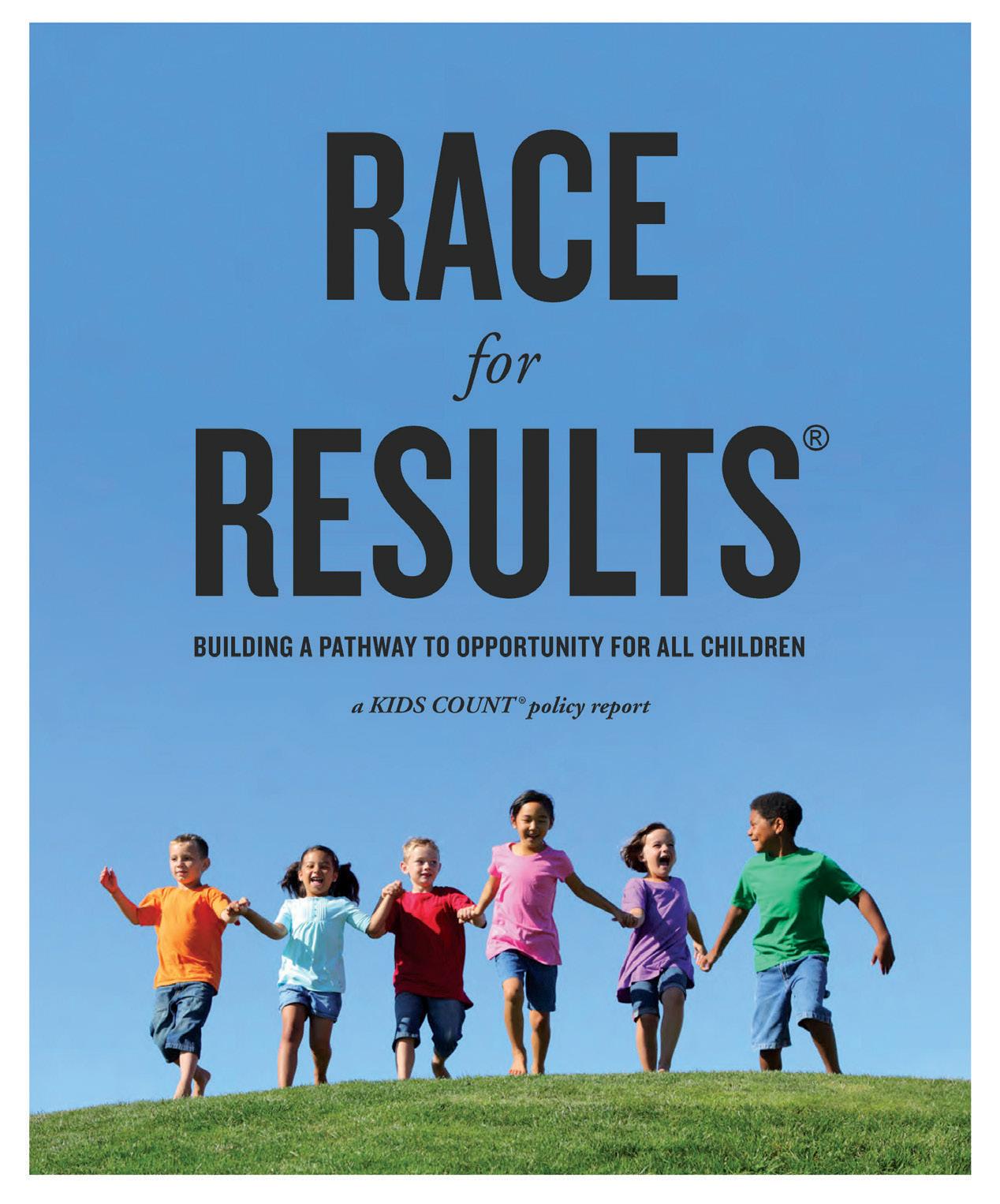
realize that vision, the Foundation is directing its investments where it believes it can make the greatest impact –what Hamilton calls “targeted philanthropy.” By focusing on the people most in need, including youth and families in high-poverty communities and those involved in the child welfare and justice systems, she believes that Casey can help improve outcomes for all kids.
Casey’s detailed research produces evidence that then drives the creation of new ideas and programs and advances much-needed policy reform. e Foundation focuses its grantmaking on innovative ideas, practices, and policies that can impact and improve the lives of millions. At a high level, Casey invests to make sure children, youth, and young adults have the “family, opportunity, and community they need to thrive,” says Hamilton. In 2022, the Casey Foundation made 955 grants to 662 organizations for a total of $79 million.
ere are three prongs to the Annie E. Casey Foundation’s approach: developing innovative ideas, demonstrating solutions, and scaling results. Ultimately, they want to expand the best programs, policies, and systems to reach as many children and families as possible.
Central to all their work, Hamilton says, is a focus on racial and ethnic equity and inclusion, since people of color disproportionately face the challenges Casey is working to address.
Recently, the Foundation released its landmark 2024 Race for Results report, 10 years after their inaugural publication. is expansive research uses 12 indicators to identify gaps in child well-being across race and ethnicity in every state.
eir data showed that on average, just 62% of children lived in families earning 200% or more of the federal poverty line. at rate is 42% and 47% for Black and Latino children, respectively. is pervasive issue shows the urgent need for targeted interventions to alleviate economic disparities among children. Alarmingly, the data also showed that 68% of fourth graders are not yet pro cient readers, which signi cantly increases their likelihood of dropping out of high school.
e Foundation’s ndings illustrate other disparities faced by children of color across various measures of well-being. ese barriers impede their path to success, necessitating concerted e orts to eliminate systemic inequities. Given that 51% of children in the country are children of color, there is an urgent call to prioritize the well-being of children of color and ensure equitable opportunities for all. With 72 million children comprising a quarter of the population, they represent the cornerstone of the nation’s future prosperity.
“We are literally in a race against time to get better results for children,” says Hamilton. “To do that, we must acknowledge that race is often a barrier to achieving the outcomes we seek.”

“We are literally in a race against time to get better results for children. To do that, we must acknowledge that race is often a barrier to achieving the outcomes we seek.”
– Lisa M. HamiltonHamilton points out how the Foundation’s innovative research leads to illuminating and comprehensive data, which paves the way for focused philanthropy. “Neglecting their needs jeopardizes the well-being of families, communities, and the country. erefore, it is imperative to prioritize investments in children’s welfare to secure a brighter future for all.”
Crucially, the Race for Results report outlines several ways that leaders can invest in policies, programs, and services that support all children while closing gaps across race and class. e Foundation’s research is creating a ladder of change.
Before his death in 1983, Jim Casey said, “What is needed is a renewed determination to think creatively, to learn from what has succeeded and what has failed, and, perhaps most important, to foster a sense of common commitment among all those concerned with the welfare of children.”
According to Hamilton, it was Jim’s “constructive dissatisfaction philosophy” that guides the Foundation today. e Casey Foundation believes there are always opportunities to do better by using what they’ve learned to develop new, more innovative strategies.
It’s in that spirit that Hamilton will continue to lead the Annie E. Casey Foundation forward.
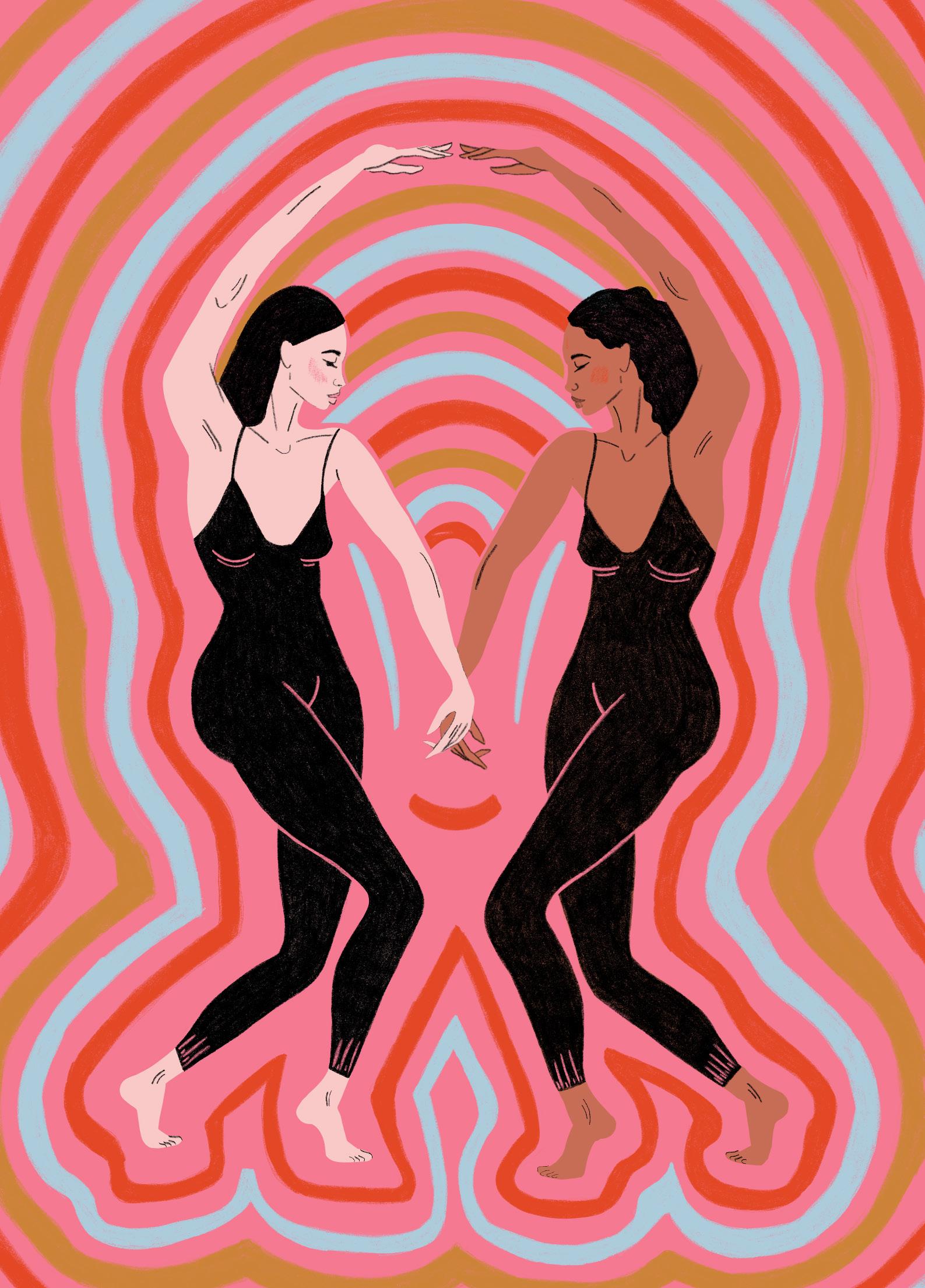
In virtually all areas of arts and culture, women and girls are underrepresented – and it’s not because they don’t have the talent, drive, or desire to succeed. It’s a problem that starts from an early age, with how children see women represented across all forms of art.
Great women artists, including filmmakers, philosophers, writers, musicians, singers, playwrights, and performers, thankfully exist, but they do so in spite of not being afforded the same opportunities as boys and men. Historically, the institutions that foster artists’ growth do not accept or support women artists with the same gusto, intentionality, or economics as they do male artists.
How can you become great, or even take the steps necessary to innovate and dream, if you’re barred from the outset from seeing the possibilities of your future in the lives of others like you, if you aren’t offered chances to learn, or if you don’t encounter spaces where you feel safe to express yourself?
“In actuality, as we all know,” wrote art historian Linda Nochlin in an influential 1971 article, “things as they are and as they have been, in the arts as in a hundred other areas, are stultifying, oppressive, and discouraging to all those, women among them, who did not have the good fortune to be born white, preferably middle class, and above all, male.”
The gaps in parity are staggering. In popular music, between 2012 and 2022, women accounted for 22.3% of artists and 12.8% of songwriters and received 2.8% of production credits. In an analysis of over 1,600 content creators in the U.S. film industry, in 2022, women accounted for only 8.8% of directors, 16.3% of writers, 26.8% of producers, and 8.2% of composers. These numbers dwindle even more when considering women from underrepresented ra -
cial and ethnic groups or those belonging to the LGBTQ+ community.
The effects of these gaps behind the scenes lead to misrepresentations in the media itself that range from disheartening to downright dangerous. In a 2019 study surveying 409 songs on top music charts between 2006 and 2016, researchers found that over a quarter of the songs’ lyrics were overtly misogynistic or objectified women and girls. Or, another haunting example: films would have us believe that one in four rape accusations are false. Research on real-life sexual assault indicates that false allegations happen at a rate of only 2.5%.
Distorting the real experiences of women and girls, their worth, and their abilities can lead to their devaluation as artists, professionals, and people. Real change could occur, if only women and girls’ ideas were respected and amplified, if they were given seats at the table and adequate resources to succeed in the arts, culture, and media.
When women and girls aren’t given the same opportunities as boys and men, the path towards success becomes thornier, at times even impassable. When women and girls don’t receive resources to support their goals and dreams, they won’t have the tools necessary to build a better future. When women and girls become mired in derogatory stereotypes or face gender-based violence, they’ll expend all their energy combating their devaluation as people, rather than thinking freely, living expansively, and doing great things for themselves and their communities.
After all, when we help women and girls see themselves reflected accurately in our culture, when they are inspired and supported in following their passions and developing their talents, we’re benefiting not only them but us all.
In 1990, Franco Stevens founded Curve magazine, the best-selling lesbian magazine in the U.S. for the last three decades. The publication was the first of its kind and played a crucial role in creating visibility for lesbian and queer women at a time when representation was notably lacking. The publication was a platform for queer women’s voices, stories, and experiences to be shared and celebrated, as well as a space to create community.
The magazine is now a publication of The Curve Foundation, co-founded by Stevens, which will secure its continued publication and house an archive of its stories and impact. The Foundation also empowers lesbian and queer women by providing financial support, resources, and opportunities. The publication’s history has been captured in the 2020 documentary film Ahead of the Curve
Stevens built Curve on the idea that storytelling not only is transformational but can also save people’s lives – especially when the rights of women and members of the LGBTQ+ community continue to be under attack. To ensure that the stories of lesbian and queer women continue to be told and shared, The Curve Foundation and NLGJA: The Association of LGBTQ+ Journalists present the Curve Award for Emerging Journalists.
Stevens has served on the board of directors for GLAAD, the world’s largest LGBTQ+ media advocacy group, and was a founding board member of the San Francisco LGBT Community Center. She has also been inducted into the NLGJA: The Association of LGBTQ+ Journalists Hall of Fame.
Giving List Women: What inspired you to launch a magazine for women in the LGBTQ+ community?
Franco Stevens: Well, they say that necessity is the mother of invention. So, I’m an early-20-something baby lesbian coming out in San Francisco. I had been married to a man at the time when I realized that I was gay. And I was an unhoused person when I got divorced, and I really wanted to work at the gay bookstore. I thought once I work at San Francisco’s gay bookstore, I’m going to find community everywhere. But even in a place like San Francisco, even working
at what’s possibly the gayest bookstore in the country, I felt like I wasn’t finding my community. I didn’t see representation of myself.
I remember women would come into the bookstore and ask for a lesbian magazine because there were only men’s magazines. And eventually one day I went, “You know what? I need to start this magazine.” I was 22 years old at the time. I had no idea what it would take to create a magazine, but I knew that I wanted it to be color and glossy and professional and something that you could leave on your coffee table and your mom would walk by and you wouldn’t be embarrassed by it. I wanted it to showcase the beauty of our community and the women making a difference.
And those women might be the first out politician, but they might be people doing regular jobs that are making a difference in their world. So, I put up a sign in the entrance to the bookstore that just said, “Writers and photographers wanted for a new lesbian magazine,” and I got 300 calls in a month, so I knew I was onto something.
Some of those women stayed involved with the magazine for 30 years. So, I can’t say that I started Curve magazine by myself, but I had this vision that we needed to take pride in ourselves because nobody else would do it. Nobody seemed to care about lesbian or queer women.
I wanted to put “lesbian” on the front cover of the magazine because I felt like there was no greater visibility than seeing that in print and seeing it on the cover. And people told me, “That’s a crazy idea. You won’t get funding; you won’t get bookstores to carry it.” And I found that no banks would give me money, and neither would any well-to-do lesbians that I reached out to.
GLW: So what did you do?
FS: I did the only thing that I knew how to do, which was get a bunch of credit cards, cash out, and go to the horse races. And “luck” was on my side, or God must be a lesbian or something, because everything that happened that day at the track was like I had insider information. At the end of the day, I had enough money to print three issues of the magazine, and the first edition
sold out nationwide in two weeks. Of course, getting it into bookstores and getting it into people’s hands is totally another story, because like I said, there were so many challenges.
GLW: Do you still feel that’s true today – that nobody cares about lesbians or queer women?
FS: Sometimes I wonder. I mean, so little funding is devoted to gay people, and then there’s no accurate demographics on how much money is given to lesbian causes because nobody keeps track of that kind of stuff.
GLW: Could you point to some change or impact that has resulted from your work through Curve magazine or The Curve Foundation?
FS: I can’t tell you how many women have come up to me and said, “You have literally saved my life. The magazine was there for me when I felt at my lowest, and I didn’t know if I could go on through breast cancer or through feeling completely isolated in the world that I live in.” I felt this sense of connection, and that’s the mission that we took from Curve magazine and continue through The Curve Foundation. It is my life’s goal to give visibility to a community that is so underfunded and so forgotten and yet so diverse.
“Gender is a very important subject in general in these times. I think gender is one of the most important conversations we can have. And the queer women’s community is overlooked, underserved. There is a higher rate of suicide there because they don’t see a lot of positive role models.”
And to me, I am a huge believer in the power of storytelling. And I think as humans, what we most crave is to be seen. And when someone can pick up that magazine or watch your film or see your work and feel, “Oh, wow, they see me – like I exist.” And I think that’s really powerful.
GLW: Can you talk about where LGBTQ+ and general gender equity intersect?
FS: First and foremost, I represent the women in my community. These are women. I don’t want to get off on a tangent, but I see trans women as women. I see all non-binary people as having a place in the women’s community. And a lot of people have trouble with that. And I know it’s a huge debate, and I think women should fund – if they just come into a bunch of money – they should look at: where is society going? How are people presenting? How are women presenting themselves? How are they? Gender is a very important subject in general in these times. I think gender is one of the most important conversations we can have. And the queer women’s community is overlooked, underserved. There is a higher rate of suicide there because they don’t see a lot of positive role models. And The Curve Foundation is really trying to change that to create community, to meet people where they are, to uplift each other by telling our stories. No one should have to face the kind of – I don’t want to say judgment – but I helped.

Our understanding of history begins in the classroom. As young students, ideas of identity, equity, and place are explored through books, classroom lessons, and the media. Yet how often do these representations include women?
“Women make up only 15% of people represented in state social studies standards,” says Jennifer Herrera, National Women’s History Museum’s (NWHM’s) vice president of external affairs. “Our children begin their educational journey with a skewed retelling of history, one that largely omits the contributions and accomplishments of women.”
According to NWHM research, when women are included, it’s primarily in the context of a chosen few movements like the fight for women’s suffrage, or to highlight their domestic roles and relationships as wives and mothers of famous men. But women are – and have always been – vibrant, leading contributors to every political, social, and cultural movement, and it’s time their stories are told.
Founded in 1996, NWHM is the nation’s leading cultural institution for women’s history. eir exhibits, programming, events, and free digital content amplify the voices and stories of women, past and present, and drive action towards gender equality and inclusivity. e organization led the lobbying effort for the construction of the future brick-and-mortar Smithsonian American Women’s History Museum – still at least a decade away – and is now reimagining their role as a museum of women’s history in the digital age.
In addition to developing immersive, tech-forward educational content and interactive experiences, the Museum offers physical exhibitions and events across the country. eir current exhibition is at the Martin Luther King Jr. Memorial Library. It focuses on the stories and voices of Black feminist organizers and features a welcome video by Oprah Winfrey and utilizes cutting-edge technology to create digital experiences in the service of women’s history education. is hybrid of offering a physical exhibition with extensive free curated online educational content is representative of the innovative work being developed by the museum.
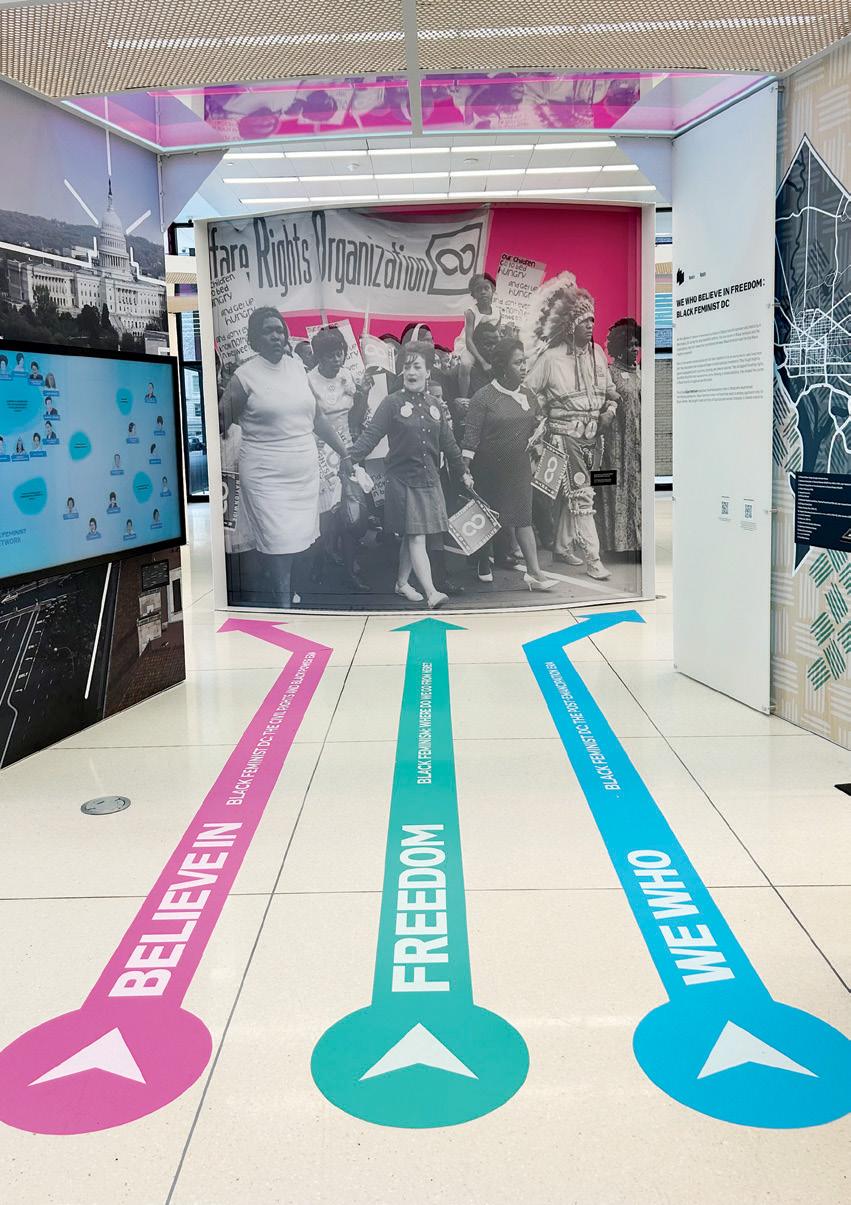
According to the World Economic Forum, North America is 95 years away from closing the gender gap. Even today, children and adults are conditioned to accept a dearth of women – in politics, in business, and on our currency. NWHM is thinking forward by looking back. NWHM President and CEO Frédérique Campagne Irwin explains that we need to change the narrative at the beginning and play a long game.
“From the very first days in a classroom, the absence of women’s inclusion means young boys start to perceive girls as less strong, less than. Likewise, young girls start thinking that they’re weaker, not as strong, not as capable, and not as good. is has tangible, dire implications for gender equity, and we have the power to course correct.”
Systemic changes are necessary, and NWHM’s approach is a vital step on the path to greater gender equality worldwide. NWHM puts women back where they belong: everywhere. “Inclusive history is good history,” says Herrera. “But you can’t tell an accurate story if you’re missing the voices and contributions of half of the population.”
Women’s History Museum womenshistory.org
Frédérique Campagne Irwin President and CEO (703) 461-1920 x100
firwin@womenshistory.org
National Women’s History Museum
800 Connecticut Ave NW 3rd Floor
Washington, D.C. 20006
Tax ID# 54-1801426
If you can’t get a seat at the table, says Queer Women of Color Media Arts Project (QWOCMAP) Founding Executive Director Madeleine Lim, then you build your own table. At rst, that table looked like a handful of chairs around a borrowed room, with a stack of handouts and a tiny white board from which Lim led workshops teaching lmmaking to queer women of color.
Now, almost 25 years later, QWOCMAP is an organization that provides funding, training, equipment, resources, and a platform for lmmakers whose voices are frequently silenced. To date, over 480 lms have been created – the largest catalog of original lms by queer women and gender-nonconforming people of color in existence. Operating in partnership with over 100 community organizations, QWOCMAP is now a powerful, innovative institutional leader when it comes to queer arts organizations.
The heart of QWOCMAP is its free Filmmaker Training workshops. In addition, the organization presents a free and wildly popular annual Queer Women of Color Film Festival, which brings communities together to shine a light on the lives of its members. By supporting, inspiring, and showcasing the work of queer women of color, QWOCMAP raises the pro les of its participants and raises awareness of the issues and experiences of people whose voices are still often marginalized in the mainstream media industries.
Growing up as a queer teenager in Singapore in the late ‘70s, Lim struggled to be open about her sexuality while facing harassment in school, from teachers and students alike. At 16, she contemplated ending her life. But then, in her early 20s, Lim ed government persecution for her activist work and ended up in San Francisco. “ is is where my activism stems from,” says Lim, “striving to make it easier for the young queers coming behind us” to survive, thrive, and ourish in the world.
While its workshops used to be based primarily in San Francisco, QWOCMAP has nimbly grown to adapt to the needs of the community it serves. In the last 10 years, QWOCMAP expanded its reach, via a four-day lmmaking bootcamp, which now allows for
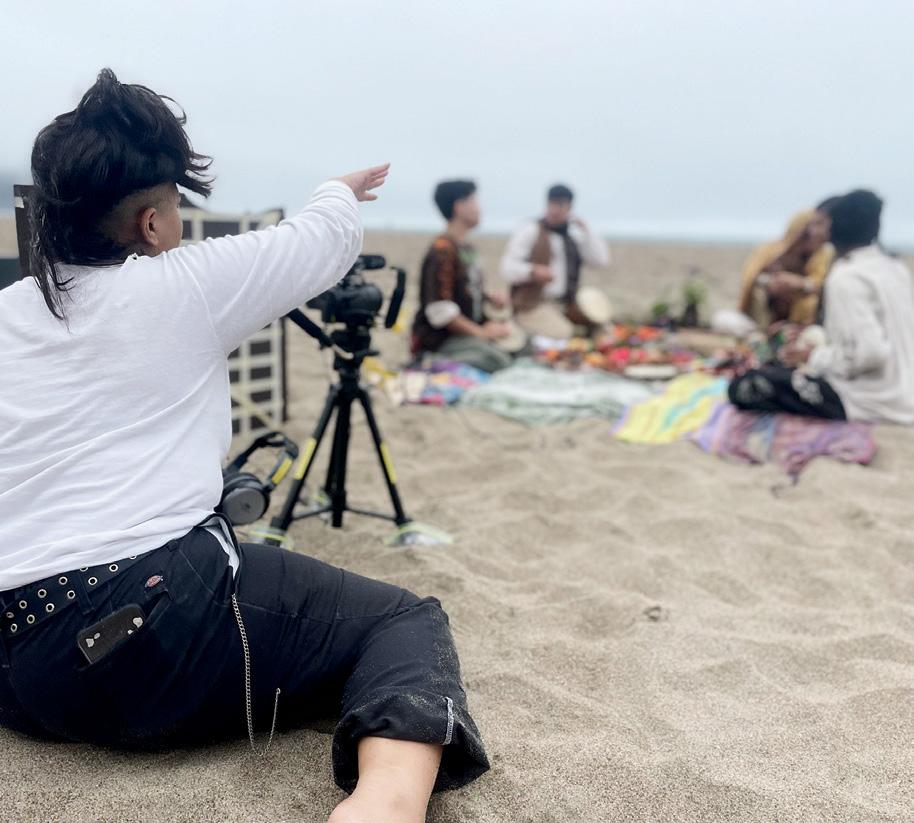
travel around the country, particularly to places where queer residents of color struggle to build community because of political and social pressures. e expense of making lms and learning how to do so is a major impediment for many, meaning that most lms are made by people already favored by American society with cultural and nancial capital. QWOCMAP removes those structural barriers. Additionally, very few arts organizations include diversity, equity, inclusion, and accessibility e orts as vital components of their work. Access and accessibility of all kinds has been at the center of QWOCMAP’s mission since its inception.
Says Lim, “If we center the needs of those who are most vulnerable among us, then we include everyone.”
Queer Women of Color Media Arts Project qwocmap.org
Madeleine Lim Founding Executive Director(415) 509-7372 director@qwocmap.org
By Check or DAF:
Queer Women of Color Media Arts Project 1014 Torney Avenue, Suite 111 San Francisco, CA 94129 Tax ID# 80-0094746
Teenagers consume media at a startling rate, averaging over 10 hours a day via film, television, video games, social media, and the internet. is statistic underscores not only the vital importance of media literacy, but also the necessity of engaging across and with popular media in order to change a culture in which women and girls are so often valued primarily for their looks.
Jennifer Siebel Newsom’s 2011 documentary Miss Representation, a dynamic and successful interrogation of gender in popular media, addresses this very issue. e film boasts pointed interviews with celebrities and media experts and incorporates shocking-yet-familiar examples from across media that dehumanize, sexualize, infantilize, and diminish women and girls.
Playing to sold-out, standing-room-only audiences at the Sundance Film Festival, Miss Representation was then more widely distributed by the Oprah Winfrey Network and has been seen by millions of viewers. e film resonated “so strongly with women and girls everywhere,” says Siebel Newsom, “that there was exuberant demand for education and action beyond viewing the film.” us, e Representation Project (TRP), an organization that seeks to awaken “consciousness around the media’s harmful and demeaning portrayal of gender stereotypes and norms using film, education, and activism,” was born.
The rapidly shifting media landscape means that TRP utilizes multifaceted campaigns, all spanning from its core work around gender and its intersections with race, class, sexuality, body size, age, and ability.
To advance TRP’s mission, Siebel Newsom and her team have produced three additional incisive documentaries: e Mask You Live In, about the challenges of masculine stereotypes; Fair Play, about domestic inequity; and e Great American Lie, about economic inequality. TRP also serves as a vital resource for research on media representation and its effects. It also manages a responsive series of hashtag campaigns that call attention to the most pressing issues facing women and girls in contemporary culture and that have received almost two billion impressions. Additionally, TRP’s educational programs, (among them, Youth Media Lab, Next Gen Filmmaker Academy, Gender Equity Training program), have served over two million youth so far.
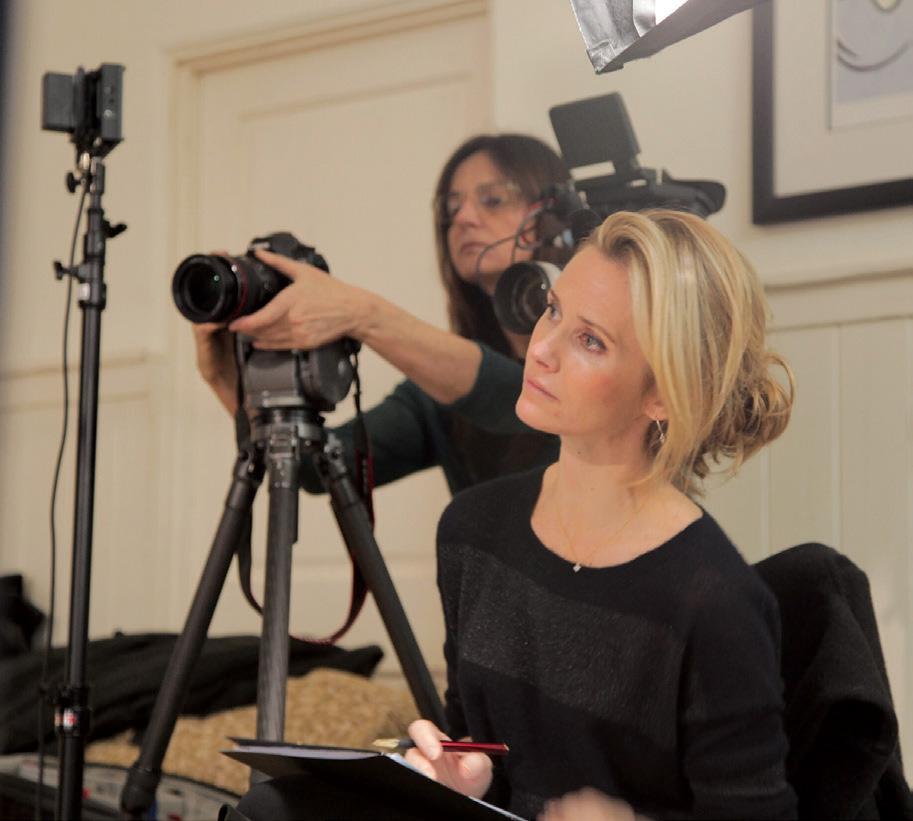
As a “cultural shift” organization, TRP has long-term goals that seek systemic change. Its work remains, in Siebel Newsom’s words, “partner-oriented,” making TRP’s objective collaborative.
“We’re pulling people together in the space,” says Caroline Heldman, executive director. is effort includes aggregating research on gender in the media, as well as working with other nonprofits on campaigns and action. Tackling the complexities of the ways gender stereotypes in media impact us all is a full-time job and then some, but it’s one with both immediate results and long-term benefits.
TRP’s campaign around sexism in Super Bowl ads led to a marked decrease in those kinds of ads in subsequent years. “When it comes to society’s limited perception of gender and intersectionality, progress comes from changing the hearts and minds of one individual, one community, and one industry at a time,” says Siebel Newsom. “And, when that happens, attitudes and behaviors shift, and cultural transformation is possible.”
therepproject.org
Debra Garber CFO/COO (415) 233-4060 deb@therepproject.org
Ways to Give... By Check or DAF: The Representation Project 5716 Folsom Blvd., #155 Sacramento, CA 95819 Tax ID# 45-1611066
Starting with small community performances, a one-woman off-Broadway production, and then performances on college campuses, e Vagina Monologues was a revelation. Its raw, honest, and unflinching look at women’s relationships to their vaginas changed minds and hearts, catalyzing viewers to look at themselves, their loved ones, their place in society, and their own bodies differently. is led to an extraordinary moment where on a fateful night in February 2001, 18,000 spectators gathered in New York City’s Madison Square Garden, not for a hotly contested sporting event or a rock concert but the performance of a play. From that moment on, the V-Day movement exploded across the globe.
Since it was written by V (the playwright formerly known as Eve Ensler) in 1994, e Vagina Monologues has been performed in over 140 countries, been translated into 48 languages, and touched millions of people. Both funny and heart-wrenching as it explores topics ranging from the giddy pleasures of sexual awakening to the traumas of rape and abuse, e Vagina Monologues inspired an arts and activism movement that has expanded far beyond the stage. Performances of the play have raised over $120 million for anti-violence groups, rape crisis centers, and domestic violence shelters.
For V-Day, a global arts movement dedicated to ending violence against women, gender-expansive people, and the Earth via grassroots activism, bringing thousands of people together to inspire and empower is the rule rather than the exception. V regrets that this fight is still necessary. “Our job is to go out of business,” she says. “I don’t think we ever intended to be here so long. We thought patriarchy would run its course, and it’s much more intractable and difficult to dismantle.”
But V and her collaborators, including Executive Director Susan Celia Swan, don’t lose hope. “Movements,” V says, “live in people’s hearts and spirits and minds. ey can turn pain to power, alchemize grief into transformative action.”
V
-Day, founded in 1998, serves as a banner for thousands of individuals and groups working together on projects at the intersection of art and activism. ese

women, gender-expansive
projects include: continued performances of the still-resonant e Vagina Monologues; One Billion Rising, a mass action campaign to end violence against women (given that one in three women across Earth, or one billion women and girls, will be beaten or raped during her lifetime); and “Voices,” a new soundscape written and performed by Black women intended to unify the vision of ending violence against women across the African Continent and African Diaspora.
V-Day also helped found the City of Joy in the Democratic Republic of the Congo, a leadership center built by and for women who have survived violence. Over 2,000 women have graduated from the City of Joy since 2011.
V-Day started with a performance. Now, it’s an expansive network of survivors, creatives, change-makers, and future-builders in places all over the world driven by the needs of women and girls and finding power through solidarity.
V-Day vday.org
Susan Celia Swan Executive Director (917) 865-6603 susan@vday.org
Ways to Give... By Check or DAF:
V-Day 4104 24th Street, #4515 San Francisco, CA 94114 Tax ID# 94-3389430
Picture this: a shy girl, 10 years old, hangs back in the classroom and on the playground. A few years before, she was a rambunctious first grader who always had something to say. en, all those unspoken lessons girls are taught about their worth in society started to trickle into her subconscious: too loud, too bossy, too outspoken, too wild. is girl loves music, but she’s grown reluctant to perform. Perhaps she’s even started to feel anxious and sad about who she is and what’s possible for her to achieve in life.
and women wanting to become singers, producers, and sound engineers but also every one of us who listens to music on a daily basis?
“It’s a huge deal for women to have their authentic voices heard in culture,” Miranda emphasizes. Since music is such a significant catalyst for how we communicate and how we identify with ourselves and others, she says that “having the authenticity of [women’s voices] and what we want to put out into culture is really important.”
“Most of us spend dozens of hours listening to music every week. At the same time, less than 3% of music producers are women.”
Serving primarily girls of color and girls from other underserved populations, GMB holds standalone workshop series, in both five-day and longer formats, and collaborates with schools and other community organizations to provide training in sound engineering, music production, and DJing.
Imagine this same girl joining others like her, girls aged 5–17, in a program designed just for them. She starts out her week at Girls Make Beats (GMB) initially quiet, hanging back. But it’s a safe space, and she’s encouraged to express herself. She’s praised for her ability to speak out and sing and dance and learn. By week’s end, she has not only learned about music production, engineering, and performance, but she’s back to her extroverted self, proud of her accomplishments, and confident in her strengths.
Stories like this abound for the participants in GMB, an organization founded in 2012 by Tiffany Miranda, a recording artist, music producer, and audio engineer whose firsthand experience in recording spaces, where she was often literally the only woman in the room, drove her vision for GMB.
Most of us spend dozens of hours listening to music every week. ( at’s hundreds of hours a year!)
At the same time, less than 3% of music producers are women. What difference would it make if there were more women behind the scenes in the music industry? How would that change the experience of not just girls
When they’re interviewed for admittance to the scholarship-based programs, girls often reflect on how boys are privileged in society and what it means to enter a space where you don’t see any people like you. To counter those lessons, GMB provides incredible opportunities beyond the classroom. GMB participants have DJ’d a celebration for Missy Elliott’s induction into the Hollywood Walk of Fame; teamed up with the Barbie Dream Gap Project; and met with industry titans such as Salt-N-Pepa and Janelle Monáe, among many other amazing women in the profession, about making music.
When asked what she’d do after graduating from the program, an eight-year-old, with the DJ name “Mak10,” (who is now 13) announced that she’d like to DJ parties, produce music, and then, when she grows up, “be the first Black female president.” GMB is about more than just the music. As Miranda reminds us, if the confidence these girls gain “applies to music, why wouldn’t it apply to being the president or anything else?”
Girls Make Beats Inc. www.girlsmakebeats.org
Ti any Miranda Executive Director (954) 871-0683 ti any@girlsmakebeats.org
Girls Make Beats Inc. 4300 N University Dr. Ste C-200 Lauderhill, FL 33351 Tax ID# 46-3360600
 DJ Sparkle at the Girls Make Beats Studio.
DJ Sparkle at the Girls Make Beats Studio.




“Lesbian” may be the rst word in the LGBTQ+ acronym, but e Curve Foundation founders Franco Stevens and Jen Rainin think that too often, lesbians are prioritized last. Overlooked by the broader culture, lesbians are underrepresented in the nonpro t world, and lesbian-speci c causes attract less than 0.01% of philanthropic dollars.
“We’re nding a lot of people who fund women’s issues do not include queer women in that group,” Rainin says. “And LGBT funders tend to prioritize men’s issues. ere’s very little attention on this space.”


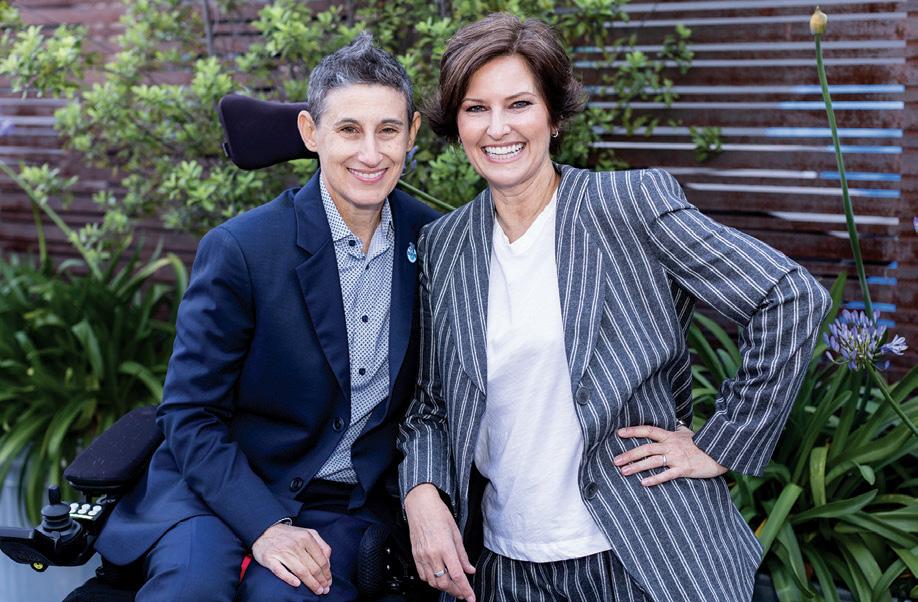
at’s why in 2020 the two, who are married to each other, created e Curve Foundation. It is the only national nonpro t organization that champions the stories and culture of lesbians, queer women, trans people, and nonbinary people through intergenerational programming and community building.
Rainin and Stevens hope to expand Curve’s e orts, as the work is urgent now. Society may have become more accepting of LGBTQ+ people since the two rst started working on these issues, but there is a growing backlash. “SCOTUS is elding a barrage of ‘religious freedom’ arguments seeking to discriminate against LGBTQ people, hundreds of anti-LGBTQ bills are being introduced at the state level, and there are still far too many politicians winning elections with anti-LGBTQ+ rhetoric,” Rainin says.
Stevens adds that she’s also noticed, through e Curve Foundation’s Facebook community, that many women still feel “really alone.”
One of Curve’s main goals is to increase the number of queer women who can make journalism a viable career while also telling the community’s stories.
“No one can tell our stories like we can,” Stevens says.
Curve incentivizes outstanding coverage through the Curve Award for Excellence in Lesbian Coverage and the Curve Award for Emerging Journalists, created in partnership with NLGJA: the Association of LGBTQ+ Journalists. e Emerging Journalists award recognizes and supports early-career journalists who demonstrate exceptional talent and raise awareness of LBTQ+ women and trans and nonbinary people. e Curve Foundation also runs a speaker series, photo contests, an online gathering space, and several other initiatives including promoting Lesbian Visibility Week in the United States.
“Showing people that they’re not alone is very important,” Stevens says.
Stevens has been working on this mission since the late ‘80s, when she went to an LGBTQ+ bookstore in San Francisco and could not nd a lesbian-focused magazine.
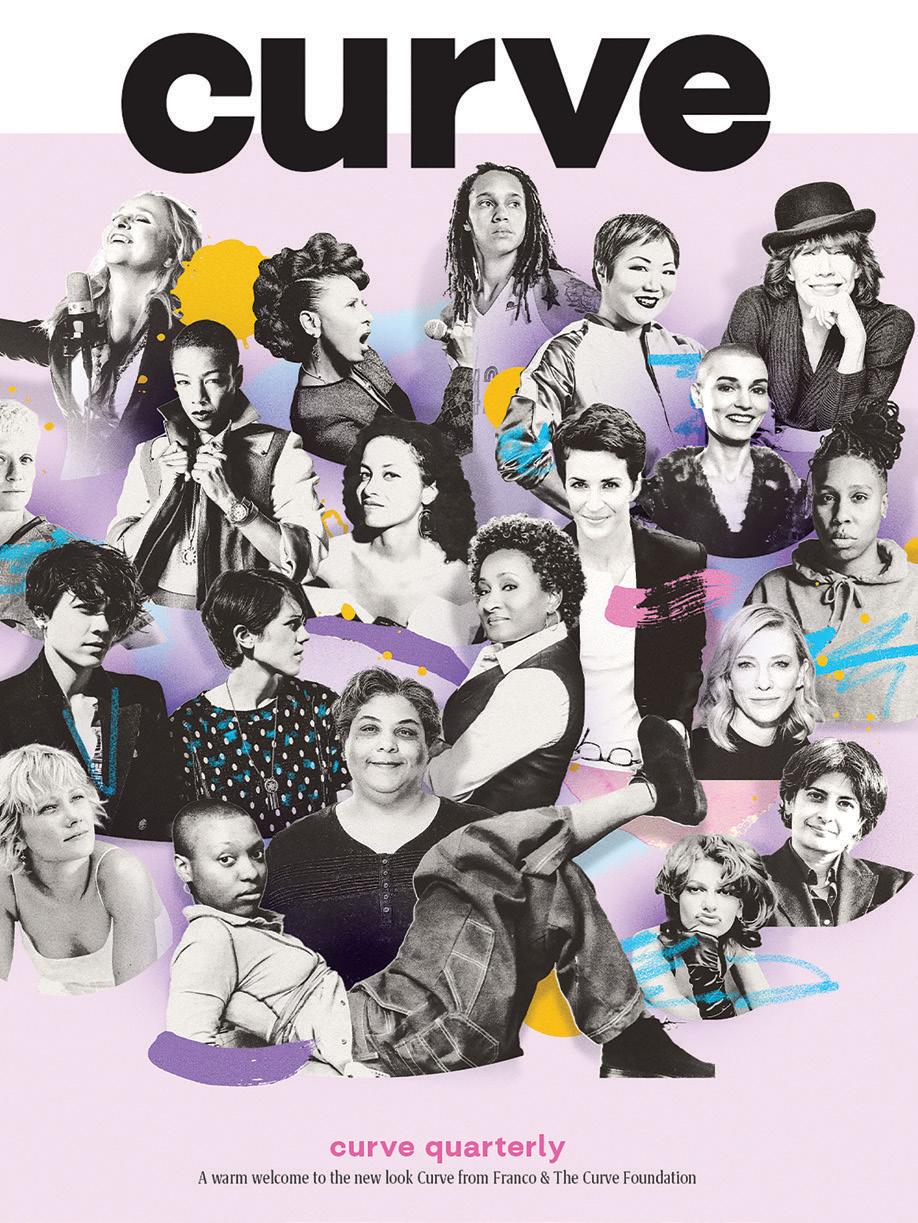
“I didn’t see myself re ected in the media, and I felt alone. Here I was in San Francisco, and there should have been community all around me, yet I couldn’t nd it,” Stevens says.
Stevens and a group of friends in 1990 started what became the world’s best-known glossy magazine (which subsequently became Curve) that focused exclusively on lesbian culture and community. In her award-winning 2020 documentary Ahead of the Curve, lmmaker Rainin captured the power of lesbian visibility and community from the early ‘90s through the story of the founding of Curve magazine.
Pre-internet, Stevens traveled the country promoting the publication at bars and co ee shops and hosting parties that brought lesbians together. As the community’s visibility grew, so did the number of “celesbians” whom Stevens put on the magazine’s cover. Stars like Ellen DeGeneres, k.d. lang, Melissa Etheridge, and the Indigo Girls came out – some for the rst time – on the magazine’s front cover. But you didn’t have to be famous for the magazine to tell your story. Articles covered the arts, politics, relationships, sex, and friendships. ere were wedding announcements, personal ads, advice columns, and pro les of community leaders.
“I wanted to know the women in the community who were making a di erence, and I also wanted to know the women in our community who were just living their everyday lives,” Stevens says.
Stevens sold the publication in 2010 but a decade later, she bought it back and donated it to e Curve Foundation. While Curve no longer publishes the print magazine, the foundation hired an archivist who is creating a searchable digital archive, and additional context is wrapped around the work in a quarterly online edition.
“With so much of what’s happening in culture and politics today, there is a through line from what we were talking about 30 years ago in the pages of Curve,” Rainin says. “We are in a position to help people learn from the past and ensure that we continue on the right path today and our stories and contributions aren’t forgotten.”
Rainin and Stevens hope e Curve Foundation will also show the value of female leadership. It’s a generalization, they acknowledge, but they believe women lead differently. Stevens prefers to lead by working collaboratively with a team. “I believe we can all do greater things together,” she says. Rainin believes others could learn from how women leaders tend to be more “alert to one another and generous with the people in the room.” ough not often re ected in traditional hierarchies, inclusivity and intentionality are valued at Curve.
“We are more powerful when we use our voices together,” Rainin says.
Neither wants to imagine a life without e Curve Foundation. ey hope that with additional funding they can grow their work to support more culture-makers and journalists and increase visibility and connection.
“As Senator Tammy Baldwin says, ‘If you’re not seen, you’re not counted, and if you’re not counted, you are not a full participant in society,’” Rainin says, and then adds a bit of her own wisdom.
“If we don’t keep our stories front and center, they disappear. at makes it easy to discriminate against us.” rough e Curve Foundation’s work, the “L” in LGBTQ+ should never be overlooked again.


One of the Most Important Social Justice Movements You’ve
For nearly a half-century, a growing number of men of all races and ethnicities in North America and around the world have followed women in working to prevent domestic and sexual violence and protect reproductive rights, while also working to redefine and transform traditional ideas about manhood, fatherhood, and brotherhood. We’ve been called all kinds of names but describe ourselves as members of the profeminist or antisexist men’s movement.
Our movement includes and covers a range of men and men’s experiences: from boys on the journey to manhood and fathering to male survivors and men of color; from GBTQI+ men to men overcoming violence; from men’s health to men’s experience of feminism. Woven together, we’ve created a dazzling, multilayered tapestry of one of the most important social change movements you may never have heard of. The five organizations profiled in this chapter are not just representative of the rich collection of profeminist, antisexist groups and organizations in the U.S. and Canada, but of the hundreds of these activist organizations fueling change in scores of countries around the world.
Profeminist men hold the simple “radical” belief that gender and sexual equality are fundamental democratic goals and that women and men should have the same rights and opportunities. Although often marginalized in the mainstream media, profeminist men have been engaged in a sweeping critique of manhood and masculinity since the 1970s – work that has largely been overlooked in the national conversation about gender.

The groups profiled here are emblematic of the new generation of profeminist organizations that have emerged since the start of this century. They represent the diversity of profeminist men’s work, and each is contributing to the movement’s rich history.
Many of the early profeminist men’s organizations supporting women’s rights almost exclusively addressed men’s violence against women (as opposed to, say, advocating for advancing women’s economic circumstances or reproductive rights). Many nascent profeminist activists were either reading or reading about Andrea Dworkin’s book, Woman Hating: A Radical Look at Sexuality, published in 1974, and Susan Brownmiller’s book, Against Our Will: Men, Women and Rape, which came out the following year.
The 1970s and early 1980s were a time of deepening awareness of men’s violence against women, and over and over, profeminist men’s organizations reported that women in their communities were alternately imploring and demanding that men make men’s violence against women their top priority. As Gloria Steinem famously said, “Women want a men’s movement. We are literally dying for it.”
Decades later, when #MeToo had exposed the breadth and depth of some men’s sexual harassment and assault of women, there was not only a deeper analysis but also an increase in resources that men could use to understand the scope of the problem and how to confront it.
Many men felt simultaneously threatened by and envious of women’s groups, women’s politics –the entire women’s movement. Most men couldn’t keep up. Women’s bilingualism – speaking both “Emotionalese” and “Politicalese” – certainly made
“ Women want a men’s movement. We are literally dying for it.”
– Gloria Steinem
it challenging, but not impossible, for men to understand what was happening in those dizzying times, especially once men relinquished our heretofore-unquestioned belief that when it came to gender, there was only one official language: “Manspeak.” (This was years before Rebecca Solnit humorously captured men’s arrogance in an essay that inspired the term “mansplaining.”)
Acknowledging women’s fluency in Emotionalese, men haltingly began to talk about our struggles, our feelings, our inner lives. Trouble was, men were primarily doing so with the people they believed could hear and understand them best – women. Slowly, over time, more men began to realize that who we really needed to be talking to were other men. Men learning to talk to each other has been part of the story of our own liberation. Like other men, profeminist men have benefited greatly from working on themselves, recognizing that our personal growth – our own liberation –wasn’t separate from women’s liberation.
In 2009, some 450 men and women allies from 77 countries met in Rio de Janeiro, Brazil, for the four-day Global Symposium on Engaging Men and Boys in Achieving Gender Equality. Five years later, in 2014, a second symposium, Men and Boys for Gender Justice, was held in New Delhi, India. Nearly 1,200 delegates from 94 countries attended. In 2020, the third symposium in Kigali, Rwanda, was primarily held remotely because of the COVID-19 pandemic. Its theme, Ubuntu – “I am because you are” – underscored the interconnectedness of those of us doing gender equality work.
This global campaign is united under the banner of the MenEngage Alliance, a network of more than 1,000 members in 88 countries. Major conferences on themes related to preventing violence against
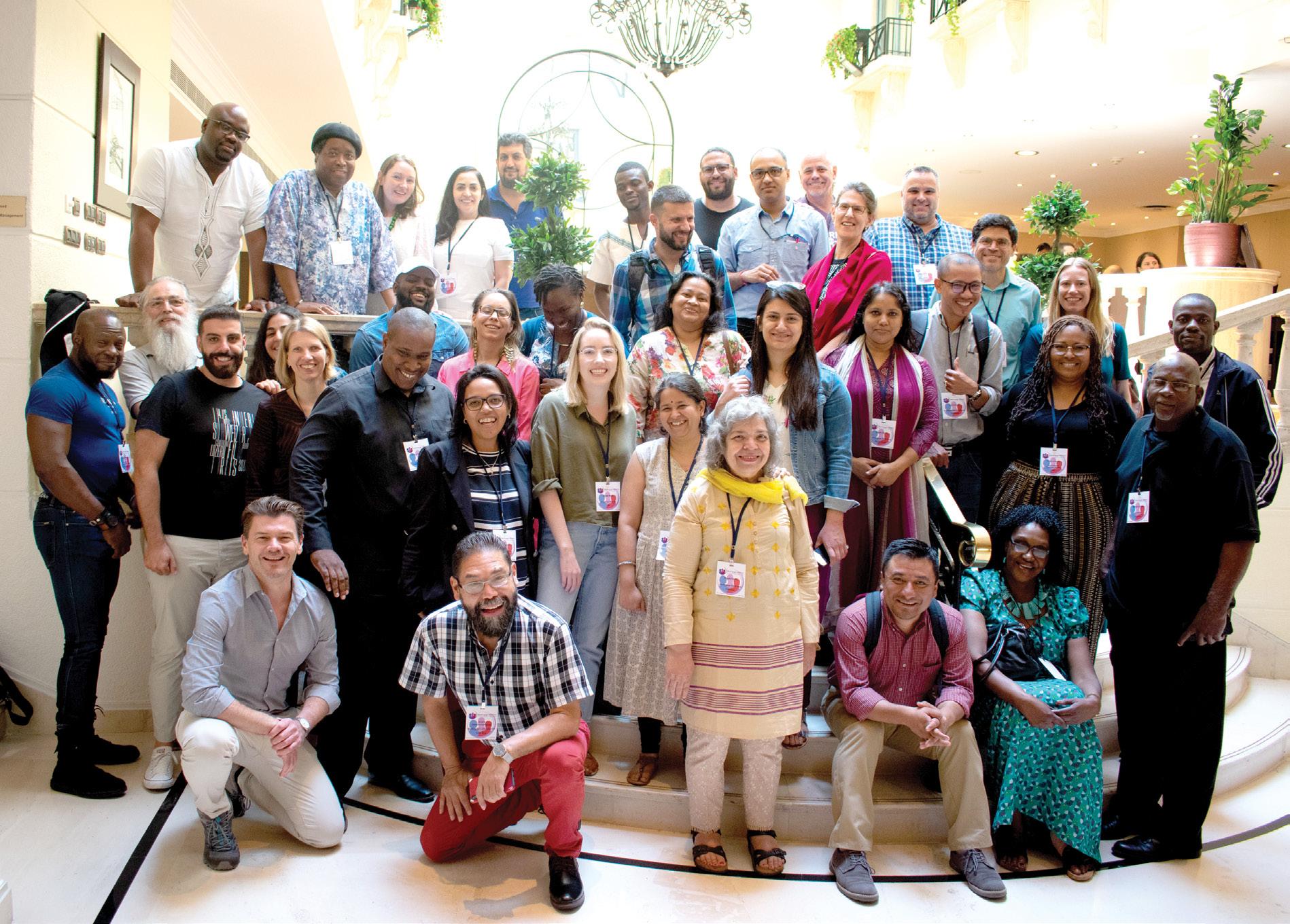
Members of the MenEngage Alliance board, meeting in Beirut in 2019. Organized into country and regional networks, MenEngage currently has more than 1,000 members in 84 countries. (photo: MenEngage Global Alliance)
women and promoting healthy masculinity for boys and men are held regularly across the globe. In North America, such events occur from coast to coast, in our largest cities, and on the campuses of many of our most prestigious colleges and universities. The profeminist men’s movement has come a long way.
There is tremendous opportunity in the second half of this decade for profeminist men to add to our numbers. The groups profiled in this chapter, like the profeminist men’s movement as a whole, advocate for men to better integrate our inner lives with our outer actions, exploring our personal attitudes while working to achieve gender and social justice.
Even though women long ago stopped asking men to give up our privilege, it didn’t mean they gave up on men. As renowned feminist cultural theorist bell hooks wrote in The Will to Change: Men, Masculinity, and Love, “… only a feminist vision that embraces feminist masculinity, that loves boys and men and demands on their behalf every right that we desire for girls and women, can renew men in our society.”
Men cannot turn away from acknowledging the power we hold in society. Not a power we earned,
but one we received at birth simply by arriving on the planet in male-identified bodies. Relinquishing our grip on the twin symbols of that power – privilege and entitlement – has never been easy. Men fear both losing control and having less. Most of all, we fear the unknown. Men wonder, “What will my life look like if I am not in charge?” It’s not asking too much to invite men to trust that our lives will be enriched in ways we can’t imagine if we loosen our grip and share the reins or, Goddess forbid, hand them over to women.
A half-century into our movement, profeminist men have a unified message: Men can change, men want to change, and men are changing. Men are saying farewell to a single, rigid definition of masculinity and replacing it with an emotionally rich expression of masculinities. We are navigating our lives with both our eyes and our hearts open, beginning to see the contours of a manhood that celebrates rather than dreads men’s tears and uncertainties. We are now able to cross the gender landscape on surer footing, better able to witness women’s lives and understand women’s realities. To the men in your life who will read these words, I have an invitation: Join us.
An esteemed leader in civic and philanthropic work who currently serves as the president and CEO of the California Community Foundation (CCF), Miguel Santana has been deeply influenced by the women in his life, from his mother and grandmother to transformational L.A. activists and civic leaders Gloria Molina and Antonia Hernández.
A lifelong Angeleno whose work has spanned politics, the nonprofit sector, and the foundation world, Santana began his career as a community liaison at the Mexican American Legal Defense and Educational Fund (MALDEF), after which he worked with L.A. County Supervisor Gloria Molina. His administrative skill and desire to help underserved communities at scale led him to become a Deputy Chief Executive Officer for Los Angeles County, managing all social service programs supporting children, families, veterans, and persons experiencing homelessness. He then became City Administrative Officer for the City of Los Angeles, overseeing the City’s $9 billion budget and designing its first comprehensive homeless strategy.
At CCF, which stewards nearly $2.6 billion in assets, Santana strives to continue the Foundation’s focus on creating a more equitable region for all its residents, especially those who have been historically marginalized. This work includes an emphasis on diversity and inclusion, both at the Foundation and in the broader community, and an awareness of how women have provided a model of leadership for all communities.
Santana also serves as co-chair of The Angeleno Project, an innovative collection of civic leaders that formed after the pandemic and is committed to the critical issues of homelessness, anti-Black racism, the digital divide, and equitable support of the nonprofit sector. He is the board second vice chair of the Los Angeles County Affordable Housing Solutions Agency and commissioner of the CalAccount Blue Ribbon Commission, which aims to provide financial services like checking and savings accounts to all Californians.
Giving List Women: You began your career at MALDEF, then had a yearslong stint in politics with L.A. County Supervisor Gloria Molina. You then worked in nonprofits as the president and CEO of Fairplex, before running the Weingart Foundation and now the California Community Foundation. Why the shift from politics to nonprofits to the foundation world?
Miguel Santana: In many ways, I feel I’ve been working on the same issues my whole career. The context changed, and maybe the hat I’m wearing changed, but the through line has always been advancing social, racial, and economic justice in Southern California. I’m a native Angeleno. My lived experience as a son of immigrants, as a first-generation college student, becoming a father at 19 – that all really informed my purpose. And I’ve been working on ways to make our community more inclusive in its economy and in ways that allow every person to achieve their greatest potential.
GLW: Women and girls are a key lever for change. In your grantmaking work at CCF, do you apply this lens in your grantmaking considerations?
MS: Well, I apply it to my life. On my bucket list is to one day write a book about how women shaped my life, starting with my mother, who came from Mexico in the 1960s as a young woman, feeling she couldn’t fully be herself in a country that doesn’t always give wom en opportunities. My grandmother, who endured a difficult childhood and a difficult marriage, found ways to celebrate her life and to contribute. And I have four daughters who remind me every day of what most matters. And I’ve benefited from the mentorship of very strong women – Gloria Molina and Antonia Hernández. When the civil unrest happened in Los Angeles in the early ’90s, I found my purpose: to be of service to our community, to try to identify the systemic issues that created the environment for the civil unrest.
My first entry into that was working at MALDEF,
the Mexican American Legal Defense and Educational Fund. Antonia Hernández was the president and general counsel. I learned from her the power of being able to give voice to a community, to advocate and be centered around outcomes and working in collaboration with other communities to have a vision for Los Angeles. Through my work at MALDEF, I met Gloria Molina. I was just 24 and already a young father with two children. And she asked me to join her team as a newly elected [county] supervisor. I saw this phenomenal leadership of a woman who was told her entire life to sit down or to not pursue her life purpose, who was denied opportunities in very specific ways. And despite all that, she was able to break through those barriers to be the first [Latina] elected to the five-member Board of Supervisors.
Gloria was tenacious – never abandoning her values and principles, willing to take on any issue, no matter how difficult or how slim the chances of success, but always remembering that what matters most is the outcomes to community. Gloria knew how to use her authority effectively as an elected official to advance those issues. I studied under Gloria for 16 years, saw her in action, partnered with her on many issues.
GLW: Do most community foundations apply the lens of women and girls in their grantmaking?
MS: Maybe not as directly as what you articulated, but when you think about all the issues that philanthropy works on, women and girls are at the center, and now in leading nonprofits, leading social change movements in government, and certainly in the issues to which philanthropy seeks to respond. I think about our work in the immigration space. We host an annual conference, and the majority of the attendees are women. Many of the movement leaders are women. And that lens is very much part of how we think about these issues and certainly the experience of girls who are victimized, abused, and experience the brunt of a broken system. And so it is not as intentional as it should be. But it is very clear that women are a significant part of that work.
GLW: How do you think we can better engage men in these conversations about the importance of supporting women and girls, and to help them understand the impact that has on us all?
MS: In a couple ways. First, philanthropy often focuses on data and measures of success. If you look at many of our issues, the data clearly takes you to this core issue in poverty, in access, in healthcare. And now, unfortunately, in homelessness and housing, women are the fastest-growing group experiencing homelessness, when it was largely seen as something that was main-
ly experienced by men. And the elderly population is growing at a significant rate, and in that population, women are disproportionately represented. So the data makes it clear that we have to focus on these issues from the perspective of how it impacts women. And how the solutions must be responsive to their experience. One size doesn’t fit all. There must be intentionality to create a pathway towards solving these issues that are clearly connected to and grounded in the experience that women have.
The second way to engage men is by drawing the connections in their own personal experience, as I have in our conversation. I am of a generation where the women that mentored me were the first groundbreakers who, through their own tenacity and persistence, were able to break through a very patriarchal system that wasn’t created for them – that in fact was created in part to exclude them. And when you understand that history and how the women in all our lives are really in roles that a generation ago would not have been considered, it’s a testament to the drive that women have. But [it] also creates a real lens of what we need to do to advance all communities, particularly other marginalized communities. So, it’s a template in some ways. I think that hopefully most men would see that and would see it in the women they work with, see it in the women close to their lives, see it in the mentors that they may have. That trajectory, that history, that movement that women have experienced in our lifetime is transformative in a way that could help us understand how to be responsive to all issues.

In 1990, Tony Porter was director of a substance use program in a hospital north of New York City. ere, he’d meet the profeminist community of primarily Black and Jewish women who would change the trajectory of his life. Porter’s work was initially focused on antiracism, but the more he listened at the feet of his female colleagues, the more he understood the intersections between racism, patriarchy, and violence against women. is challenged Porter to get involved in violence-prevention work – and to invite other men to do the same.
He volunteered for a domestic violence offenders intervention program for the next five years, learning about domestic violence through a feminist lens and the socialization of men who cause harm. “It was about power and control, seeing women as less valuable – as property and objects, particularly sexual objects.”
“ We invite men. We don’t indict men. We are reaching in and grabbing the hearts of men. That’s where transformation happens. That’s where vulnerability begins.”
Porter also recognized that abusive behavior doesn’t manifest in a vacuum. It is enforced by societal norms and a lack of accountability. Ending violence against women required a culture shift that started with men –not just abusive men, but all men.
Breaking out of the “Man Box”
Porter subsequently organized what he thought would be a one-time training, “A Call to Men: Ending Domestic Violence, Becoming Part of the Solution.” After the event, there was extensive interest in bringing the same training to other communities. e sessions were so successful that Porter and the group facilitator, Ted Bunch, established A Call to Men in 2002. eir vision? To create a world where men and boys are loving and respectful, and women, girls, and other marginalized people are valued and safe. Porter and Bunch built their work on a foundation of challenging the collective socialization of manhood, also known as “ e Man Box” – a term coined by Porter to describe
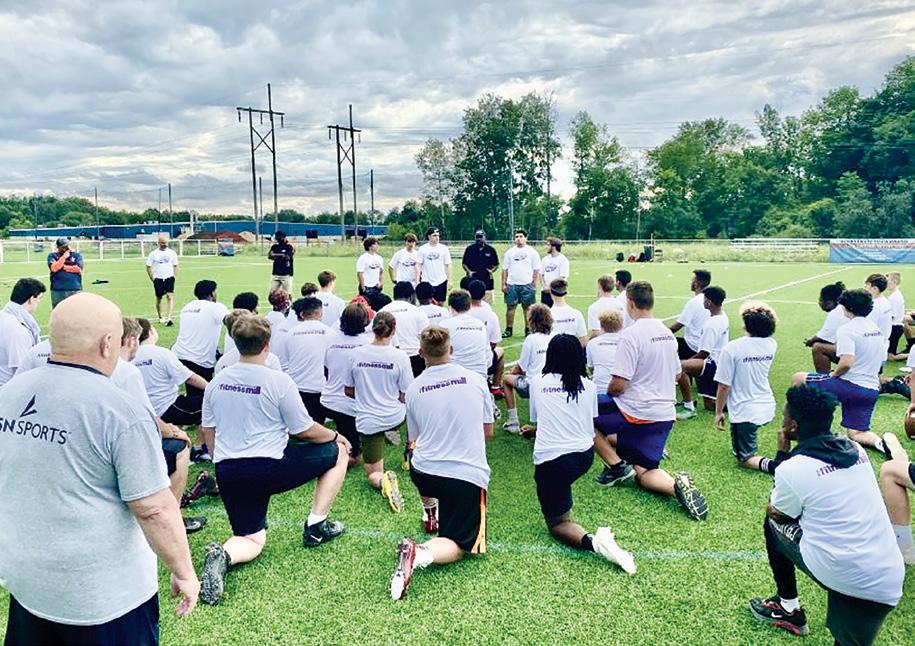
the rigid set of societal beliefs that foster an epidemic of violence against women and girls while preventing men from embracing their authentic selves. “We invite men. We don’t indict men,” Porter explains. “We are reaching in and grabbing the hearts of men. at’s where transformation happens. at’s where vulnerability begins.”
A Call to Men has since trained millions of people and worked with organizations worldwide – including the NFL, NBA, MLB, NHL, MLS, U.S. military, colleges, universities, high schools, human service organizations, faith communities, and corporations across the country. In addition, the organization offers its signature trainings, along with a curriculum for boys, corporate coaching, technical assistance, policy advising, film and media that “impact culture with culture,” and more.
One thing that hasn’t changed? Marginalized voices are as essential to A Call to Men’s work today as at its founding two decades ago – a majority of their trainers and leadership team are women of color. “I’m proud to work for an organization that centers the perspectives of people who have historically been silenced,” says CCO Kimya Motley. “We’re invested in collective liberation. None of us is free until all of us are free.”
O cer (917) 922-5668 ted@acalltomen.org
ACTM Corp
250 Merrick Road #813
Rockville Centre, NY 11570
Tax ID# 90-0641200
Equimundo’s roots can be found in Brazil, where founder and CEO, Gary Barker, was researching men in Rio de Janeiro’s favelas about what manhood meant to them and their support or opposition to gender equality. Most efforts to engage men often assume they are opposed to equality for women. Clearly some are, but the founders saw in that initial research that many men were on board. at early work affirmed that many men resist harmful, violent ideas about manhood around them. And it’s that untapped resistance to inequality and harmful manhood that drives men’s energy to join as allies for gender equality.
Based on that early research, the young men who favored gender equality became the first community promoters and co-authors of Equimundo’s initial program and research initiatives. From the beginning that work has been based in the belief that gender equality needs men as allies and that men need and benefit from gender equality. Gender equality and justice cannot be approached as a zero sum game. Working first in community change models and national and international advocacy, Equimundo has dedicated decades of work to alleviate the violence, injustice, and oppression affecting the lives of women and girls, by challenging and changing how men and boys are raised to treat women, and by reshaping what they believe it means to be men.
ey’ve led one of the largest ever studies on men’s attitudes about manhood, violence, and gender equality, IMAGES: the International Men and Gender Equality Survey that identifies the factors that lead some men to support gender equality and led to national policies for male allyship.
Today, Equimundo works globally to achieve gender equality and social justice by breaking intergenerational cycles or patterns of harm and promoting patterns of care, empathy, and accountability among boys and men throughout their lives.
Through their flagship research like the State of the World’s Fathers report, and investigating caregiving, Equimundo and colleagues made a discovery that has changed the trajectory of the movement to transform manhood and masculinity. “We recognized that nowhere in the world was anyone examining the issues of care and care quality, and not just mainly focused on men as fathers,” Barker notes. “ e more we looked, the more we
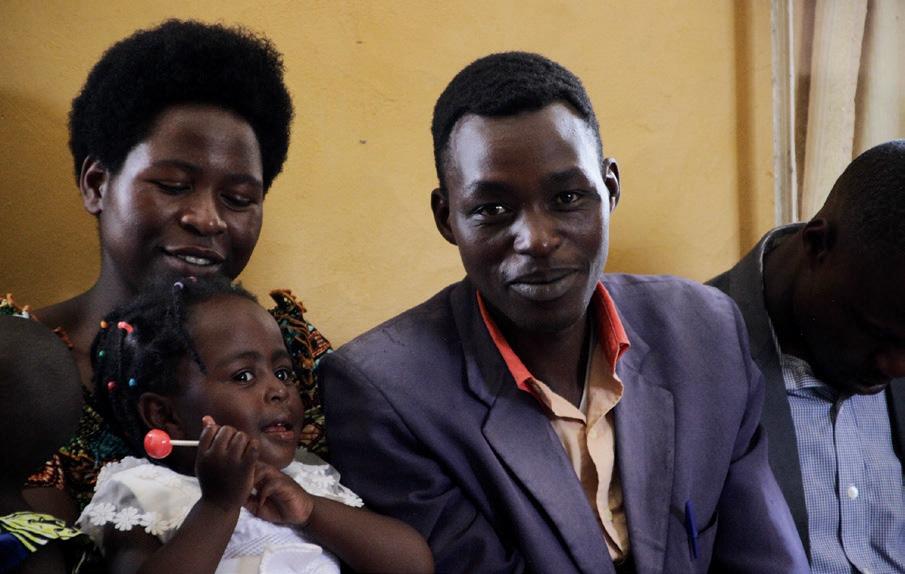
saw that men’s lack of participation in caregiving is one of the biggest drivers of women’s lower participation in politics and social life.”
is research was one of their flagship research initiatives and it became the genesis of “MenCare,” a campaign they coordinate with the South Africa-based organization Sonke Gender Justice. MenCare promotes the benefits of working to end violence against women, to change norms, including promoting gender equity, beginning when children are young. MenCare encourages men to use what’s been sometimes called their “care muscles.”
Program
Another key Equimundo global initiative is Program H (also known as Manhood 2.0, in the U.S.). Both programs offer a gender-transformative curriculum and community-based programs designed to engage men in challenging harmful gender norms and reducing sexual violence, adjust coping mechanisms, and introduce healthier ways to deal with conflict. “We use an intersectional lens to ask adolescent boys and young men to reflect critically about their identities,” Barker says.
Equimundo’s Program H has been adapted and/or implemented with partners in 32 countries around the world. Program H has also been named a best practice in promoting gender equality and preventing gender-based violence by the World Bank and the World Health Organization, and has been officially adopted by ministries of health in Brazil, Mexico, Chile, and Croatia, among other countries.
Equimundo: Center for Healthy Masculinities and Social Justice
www.equimundo.org
Ammarah Maqsood Director of Business Development a.maqsood@equimundo.org
By Check or DAF: Equimundo 1367 Connecticut Ave NW Suite 210 Washington, D.C. 20036 United States Tax ID# 26-1931968
Brian Anderson, a social worker and educator learning about sexual and domestic violence, started to explore issues surrounding men and masculinity about 20 years ago. But when he became a father, his interest in the subject matter deepened dramatically.
“ is was around the time of #MeToo. ere were seismic shifts putting attention on men,” Anderson recalls. “I realized that in being an equal partner with my wife in raising our daughter, I could translate what I was doing at home into advocating the same for other dads.”
Amember of the Facebook group Dads with Daughters, Anderson thought it should be more than a place for dads to chat. “I wanted it to have an advocacy component, to raise dads’ consciousness, like interrupting ‘jokes’ peppered with sexist language.”
When the pandemic struck, there were already more than 100,000 dads in the group, Anderson recalls. “Most were asking, ‘How can I be better connected? How can I do right by my kids?’ at’s when I realized we needed to be more than a Facebook group.”
Anderson and colleague Chris Lewis founded Fathering Together (FT) in 2019. Simply put, Fathering Together is reimagining fatherhood and turning dads into positive change agents by convening panels, organizing support groups, and working daily to change the narratives of fatherhood. It’s also helping to achieve exactly what Anderson wanted it to: it’s taking gender equity from the home and emphasizing it in the community.
And the data is clear: Multiple studies have shown the positive impact a father’s presence can have on their children – children have higher self-esteem and form stronger attachments and healthier friendships.
We Don’t Limit Who Identifies as a Father
F athering Together has an expansive definition of fatherhood: “We don’t narrowly define who a dad is,” Anderson says. “We have trans fathers, grandfathers, uncles, big brothers. We have lesbian couples where one of the pairs identifies in the father role.”
In 2022, Anderson published Fathering Together: Living a Connected Dad Life, which makes a critical, heretofore under-appreciated connection between fathers’ work and home lives. “Most men have been taught to excel in the workplace, to build professional skills. But

we haven’t taught them to adapt those skills, to apply them in their dad lives.”
A Dads with Daughters member, Cordan Haveron, an educator and coach, is now the executive director of Fathering Together. Under his tutelage, the organization emphasizes their school-based programs as a complement to their training on emotional intelligence, communication, and mental health.
“We began piloting school programs in 2022, focusing on dads with elementary-school-aged kids,” Haveron says. “Our aim is to deepen dads’ participation in school activities by accomplishing three things: increasing their emotional intelligence, helping them better connect with their kids, and advancing a gender equity mindset.”
To that end, Fathering Together sees its school programs and its offshoot organization, City Dads Group, as essential in its efforts to empower dads to foster change not just in themselves, but also in their families and communities.
www.fatheringtogether.org
Cordan James Haveron Executive Director (206) 941-8507
cordan@fatheringtogether.org
Ways to Give...
By Check or DAF:
Fathering Together
1704 Keeney St. Evanston, IL 60202
Tax ID# 84-3392823
Men4Choice understands clearly that the fi ght for women’s reproductive freedom is not just a women’s battle. It is a vital issue that men must be educated about. ey must know what’s at stake and become allies in the face of the anti-abortion movement’s constant and growing attacks.
In early 2015, Men4Choice Co-Founder Oren Jacobson was listening to a presentation about protecting abortion rights when he had a horrifying realization: e anti-abortion movement was plotting to overturn Roe v. Wade and wouldn’t stop until they’d banned and criminalized abortion nationwide.
“I was stunned,” he recalls. “I was politically active, educated, and I had zero idea that laws across the country were targeting both reproductive rights and access to care.” He immediately started educating himself.
“If I was not aware,” he says, “what did the average guy know?” He was thunderstruck by what he found: ere wasn’t a big gender or ideological divide; liberal and progressive men and women both feel virtually the same – they support abortion being legal in most or all cases. e big divide was on who decided to take action on the issue. Who sees this as their issue and therefore who bears the burden of the work to organize, mobilize, and follow through on the fight on this issue? What Jacobson couldn’t understand is if most men support reproductive freedom, why are they staying silent? Why isn’t this their fight?
Jacobson co-founded Men4Choice to turn already pro-choice men from passive, silent supporters into active allies in this fight.
Originally a local Chicago-based nonprofit, Men4Choice expanded nationally with the arrival of Co-Executive Director Mrinalini Chakraborty.
“Mrin reoriented our direction. We now situate ourselves at the intersection of culture change and policy change,” Jacobson says.
To change the culture, Men4Choice focuses on Millennial and Gen Z men before their political identities are baked in. Because the fight to ensure reproductive rights will be long – a 10-20 year campaign, Chakraborty believes – “we need younger men constantly entering the leadership pipeline.”
e Youth Fellowship Program is the heart of Men-


4Choice’s organizing and long-term capacity-building work. It’s a 10-week, rigorous, hands-on training program. ere, a community of peers learns about the issue, learns how to organize, learns to communicate, learns to show up as an ally. e fellowship program is offered throughout the year. Graduates then become organizers, ambassadors for reproductive freedom.
We Can’t Leave Half the People on the Sidelines
“T here’s no way to win this fight if we leave half the people who are with us on the sidelines,” Jacobson contends. “We know the reason men are on the sidelines is because they haven’t been listening to women. It’s on us, Men4Choice, to go out and get them to listen.”
Chakraborty agrees. “We can’t win this fight without changing a culture that tolerates men using their power to control other people’s bodies. at requires teaching men not only to engage, but also to educate, activate, and mobilize other men.”
Men4Choice Education Men4Choice.org
Oren Jacobson
Co-Executive Director(847) 910-0176
Ways to Give... By Check or DAF:
Men4Choice Education 3420 Whirlaway Drive Northbrook, IL 60062 Tax ID# 83-2629031
Next Gen Men has hope for the future of masculinity. eir four founding values – curiosity, equity, courage, and empathy – fuel their mission to work towards a future where boys and men feel less pain and cause less harm.
Next Gen Men (NGM) was founded 10 years ago, by Executive Director Jake Stika and his Co-Founders, Jermal Alleyne Jones and Jason Tan de Bibiana, after they each experienced their share of suffering, from a younger brother’s suicide to bouts of deep depression. While theirs may have been an unusual portal into “gender justice,” it allowed Next Gen Men to find its voice and goals as an organization.
“ This practice, centering love for boys – and the desire to see boys thrive –is key to our work.”
Instead of “looking through a gender-based violence prevention lens – or even one promoting gender equity – we look through a lens that sees gender as a social determinant of health,” Stika says. Next Gen Men’s programs counteract the destructive messages that promote separation and suspicion of boys and men with an approach that showers love on them. “ is practice, centering love for boys – and the desire to see boys thrive – is key to our work.”
One of their flagship programs, the NGM Circles initiative, encourages publicly accessible conversations about gender and masculinity. e conversations are not conducted in academic or feminist circles, or even in men’s groups, Stika says. “ e conversations are open to people of all genders so we can learn and unlearn together.” Launched in Calgary and Toronto in 2016, and expanded to five cities across Canada, NGM Circles have hosted more than 100 events with themes ranging from “Raising Feminist Children” to “Unpacking Patriarchy.”
As 2024 began, Next Gen Men became the new publisher of the U.S.-based Voice Male magazine, inheriting
its mission of chronicling the profeminist men’s movement. “In carrying on the magazine’s 40-year legacy,” Stika says, “we see its potential to become the ‘marketing arm of men in feminism.’”
Transforming Culture: From the Boardroom to the Locker Room
The young people Next Gen Men works with represent the next generation of men; Stika and staff more accurately might be called Present Gen Men. As they work to transform the culture, they recognize that men’s and boys’ health – and their gender attitudes – are formed by their community and surrounding culture.
“Too much work with men and boys follows a ‘let’s create programs for problems’ approach,” Stika notes. “ e nonprofit sector removes boys and men from the settings of their culture – classrooms, boardrooms, locker rooms, pubs – and takes them through a multi-week program to measure a change in their views and beliefs.
en we release them back into ‘the wild’ and don’t see behavior change.” Why?
His answer is straightforward. “ ose boys and men are products of the culture of those spaces. Until that whole culture – and society more broadly – is reconfigured, individual men’s healing will not be enough to create the change we seek.”
Of course, it’s still worth pursuing individual men’s healing. “But,” Stika says, “there’s not enough time and resources to make that approach our ‘change vehicle.’ Instead, we must enlist the people who populate those locker rooms, boardrooms, workshops, and pubs as change agents to transform the culture.”
When society does that, Next Gen Men believes, boys will be better equipped to navigate the choppy waters of boyhood, and men will be better able to help them from being swept away in the rough currents of their approaching manhood.
Next Gen Men
www.nextgenmen.ca
Jake Stika Executive Director(587) 894-7849
jake@nextgenmen.ca
Ways to Give... By Check or DAF:
Inc
8 The Green, Suite 4000
Dover, DE 19901
Tax ID# 82-1439407
* Next Gen Men
Canada: genEquality


Next Gen Men’s The Rite of Passage Expeditions Project believes that boys who experience unconditional positive regard will contribute to a rming and supportive environments for others. (Photo taken by youth expedition participant, Flynn, on the French River, Ontario.)




Philanthropy Together is a global nonpro t initiative that has reached hundreds of thousands of individuals through its work to diversify and democratize philanthropy through the power of collective giving. Its vision is to create a world lled with passionate and empowered people who collectively want to generate change.
e project was co-created with more than 100 collective giving leaders, researchers, and supporters from across the United States, with seed funding from Bill & Melinda Gates Foundation and the Lodestar Foundation; it has since garnered support from the W.K. Kellogg Foundation, Fidelity Charitable Catalyst Fund, and more. Since its formation in 2020, Philanthropy Together has grown and strengthened the collective giving movement, encouraging individuals to come together and pool their money and time to support the causes they most care about.
Sara Lomelin, Philanthropy Together’s founding CEO, is a true believer that anyone and everyone can be a philanthropist. She’s reclaiming the true meaning of “philanthropy” as the love of humanity, and she has long been a proponent of the power of people pooling their resources to support issues and how that can be a catalyst for making the world a more equitable place.
“My goal is that we come together and give together so that our contributions have a more signi cant impact, simultaneously creating a circle of relationships of individuals who want to make an impact to change the world. at is the power of collective giving,” says Lomelin.

“Fueled by a desire to empower Black women entrepreneurs, Elizabeth and I dreamt of launching a giving circle. The dream was made real with the support of the Philanthropy Together team and Launchpad for You. The online training o ered practical tools and a supportive community where I could wrestle with my questions, draw inspiration from other giving circle founders, and gain the confidence to take the next step. Nearly a year later, we have completed our first grants cycle, awarding $5,000 to eight Black women entrepreneurs. I owe much of our success to Philanthropy Together’s platform and resources.”
– Shannon Je ries, The Tanna Fund
Philanthropy Together focuses on four strategic areas:
1. Showcase the movement of collective giving to change the narrative of who is considered a philanthropist and how to give.
2. Scale participation and growth in collective giving groups globally.
3. Strengthen existing groups to shift practices to be more connected, equitable, and rooted in trust.
4. Sustain the collective giving movement by elevating the need for philanthropic infrastructure support for a long-term, vibrant eld.
e organization is catalyzing the eld of collective giving, which includes many models of giving together including giving circles, collaborative funds, nonprofit-led circles, giving projects, women’s funds, and countless other models. With a mission to expand who and what gets funded, Philanthropy Together is ushering in a new era of philanthropy that is democratic, diverse, and powered by people acting in solidarity.
For Lomelin, this work is personal.
“We didn’t know it at the time – my group of Latina moms and I – but this simple idea of leveraging all of our shared resources to do more good together had a name: a giving circle. A group of people who come together: everyone gives, everyone discusses, and everyone decides together where to channel their generosity,” Lomelin re ects on her time living in Dallas over a decade ago and starting the AHOrA giving circle.
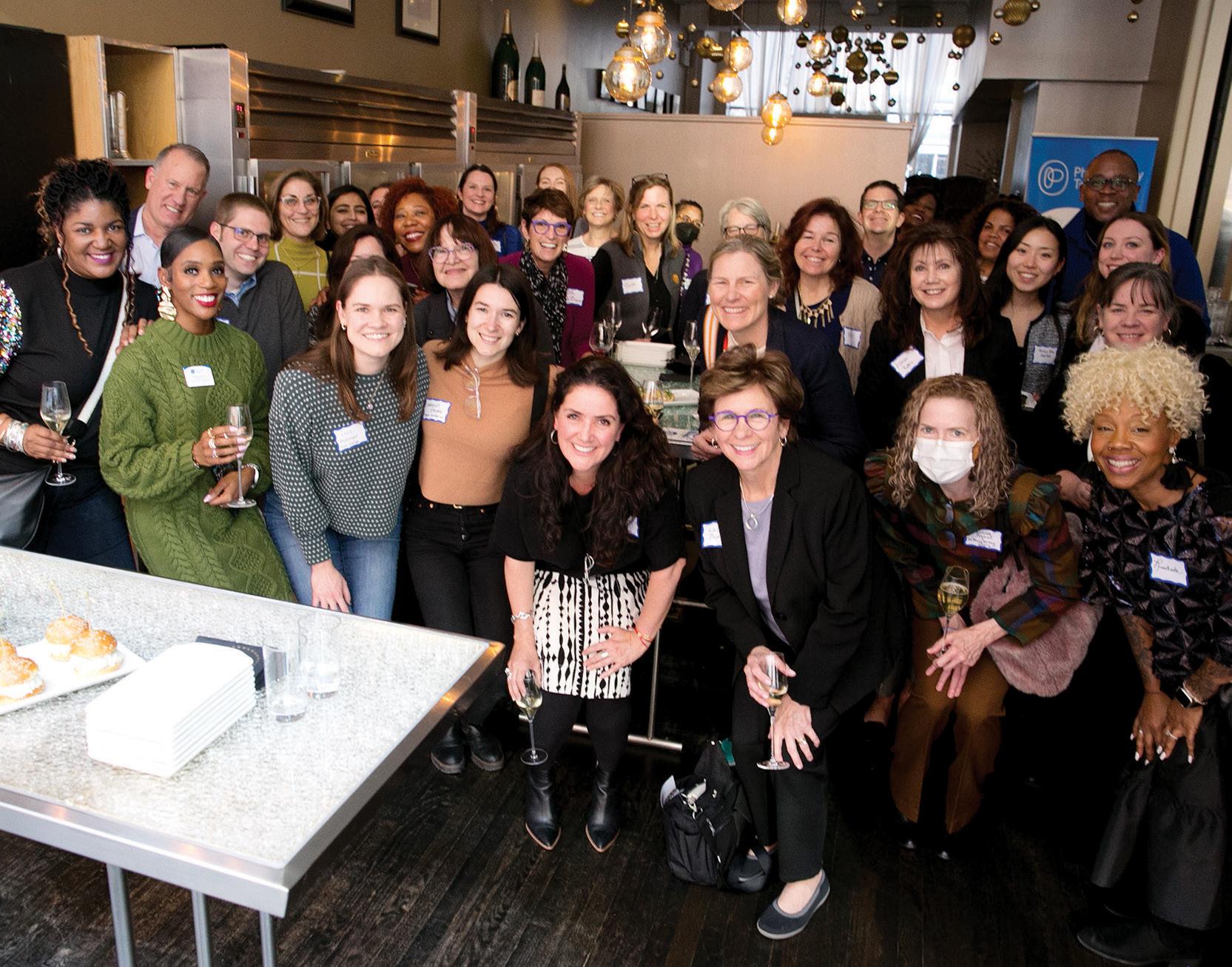
As hundreds of philanthropists traveled to Chicago for Women’s Philanthropy Institute’s Annual Symposium in 2023, members and supporters of collective giving groups gathered for an evening of connection. (Photo: Ana Miyares)
“AHOrA still exists today and has gone on to collectively give close to half a million dollars over the course of a decade to nonpro ts focused on Latina moms and children. We didn’t have all the money in the world, but it wasn’t about having all the money in the world. It was making what we cared about heard. It was about the relationships we built, with each other, and with those working on the frontlines of change.”
Among the fundamental pillars of this movement are democratic values and the people’s civic participation. At a time when isolation, distrust, and polarization prevent social and proactive initiatives from happening, collective giving fosters spaces to practice democracy and build community connection.
“When you become aware of the issues of your local community, you get more involved and civically engaged,” says Lomelin.
In addition to shaping communities that are engaged in bringing about positive change, Lomelin also stresses the value of trusting each other. “To change the narrative of what we refer to as a philanthropist, we must be able to trust and from there, we build more resilient relationships,” she says.
Currently, more than 70% of giving circles are led by women. According to Lomelin, women tend to get involved more collaboratively and collectively.
At national and global levels, women’s movements have driven action for social changes. By pushing for change and accountability, women develop leadership skills which can lead some of them to enter and transform the political environment and thus become more civically engaged.
Women’s leadership contributes to overcoming cul-
tural and institutional barriers around who can lead and the necessary characteristics to do so. “Over the years and through my experience with giving circles, I have seen how women learn to trust each other and build solid and lasting relationships,” says Lomelin.
Among its commitments for 2024, Philanthropy Together wants to continue demonstrating how collective giving is a vehicle for building trust across di erent communities and uplifting how this model can support grassroots, community-based nonpro ts as early seed funders in their work. “We are going to focus on 16 states in the country and on di erent international projects to continue ful lling our passion to empower individuals and strengthen civic engagement,” says Lomelin. “We look forward to connecting with hundreds of community leaders from around the world through our training programs and convenings.”
N Shabazz Senior Operations and Communications Directorilyasah@philanthropytogether.org (336) 303-0755
Philanthropytogether.org
Philanthropy Together
*a fiscally-sponsored project of Global Impact 1199 N Fairfax St. Suite 300, Alexandria, VA 22314 Tax ID# 52-1273585
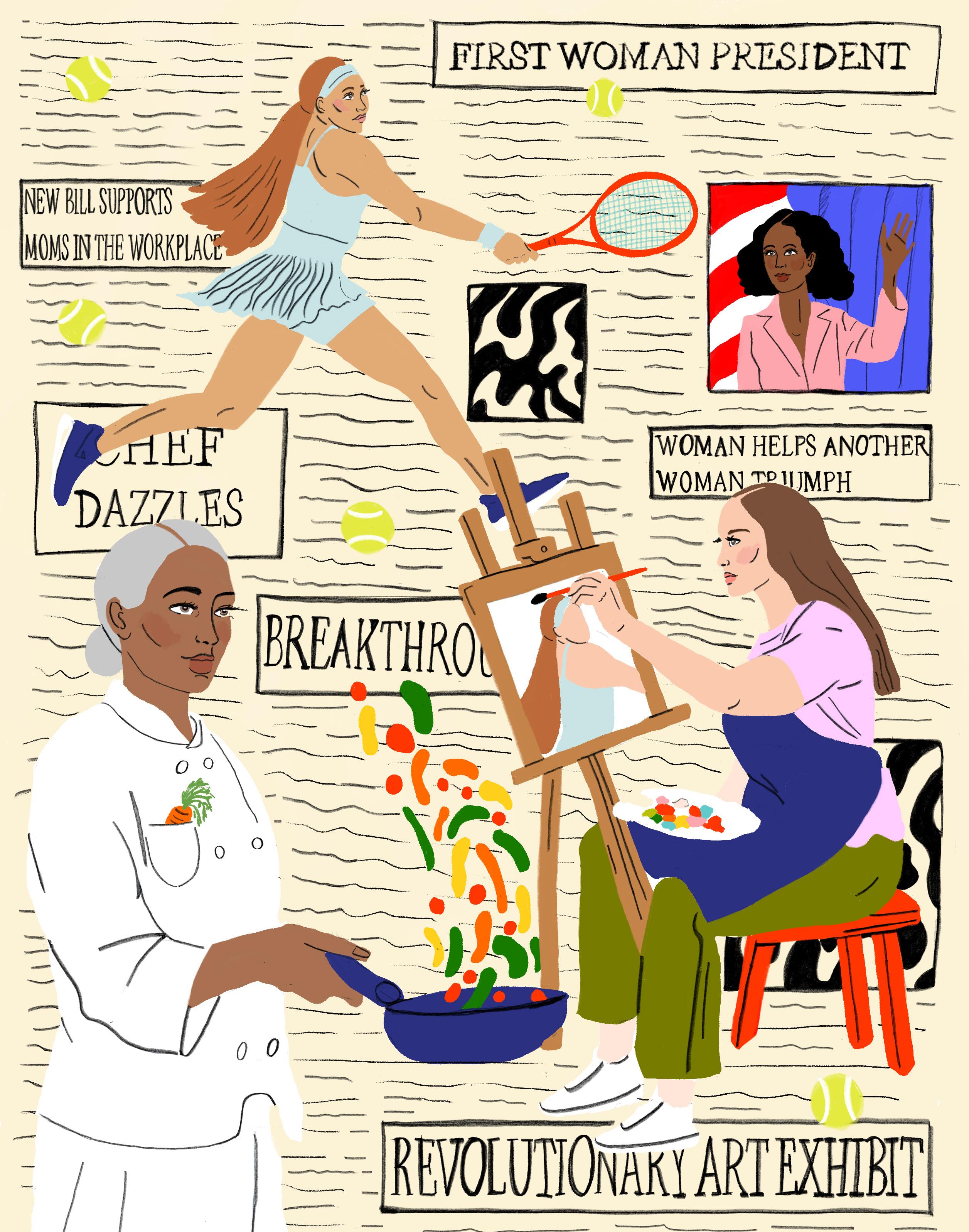
Why do women keep getting the short end of the economic stick? Throughout history, women have been a powerful, vital, driving engine in the workforce. What they often are not is duly recognized and treated as equal to their male counterparts. May Chen, Betty Dukes, Dr. Rebecca J. Cole, and Wilma Mankiller are or were all women who changed history and paved the way for other women to follow in their barrier-breaking footsteps. Yet their names are not commonly known, celebrated, or written about in history books.
During the Industrial Revolution in the 18th and 19th centuries, many women worked in factories, mills, and the textile industries, contributing to the emerging industrial economy. They went on to play vital roles in teaching, nursing, and other professions. During both World Wars, large numbers of women worked. They labored in factories, building ships and tanks. They worked in schools, hospitals, and offices.
Women have been key to breakthrough medical discoveries, technological advances, and life-saving inventions. And, yet, there remains widespread economic gender disparity in the workforce. Women simply continue to struggle for equality. They continue to be held back and face bias against motherhood, sexual harassment, microaggressions, unequal pay, and racism. To succeed and thrive, women need what men so readily have access to: the support and resources to be innovative entrepreneurs; a sisterhood that reaches out to lift them up in their careers; access to and guidance around financial backing; and tireless advocates who fight for their safety, the end of discriminatory practices, and equal pay.
According to the Pew Research Center, the gender pay gap between men and women has barely budged in the U.S. in the past two
decades. In 2022, American women typically earned 82 cents for every dollar earned by men. Women continue to be underrepresented in management roles.
Yet research shows that women overwhelmingly contribute more to family and society when they are “financially well.” Women’s personal financial health and economic stability make them more likely to secure their rights and improve their health and safety. A larger, more substantial narrative is at play here. Women not only improve the economy – they use it as a catalyst to make a more just and healthy society for all.
Over time, the intersectionality of these issues has been recognized and explored by various scholars, activists, and organizations. The women’s rights movement emphasized the importance of women’s economic independence to ensure their safety and health. In the 19th century, suffragist Elizabeth Cady Stanton said, “A woman will always be dependent until she holds a purse of her own,” clearly drawing a connection early on that until they are financially free, women will always be limited in their agency and autonomy.
In addition to this connection, it is also critical that we recognize the intersectionality of identity and never operate in silos as we explore the various ways to invest in and support women, their careers, and their economic empowerment.
Research has consistently shown that gender economic equality benefits business, society, and the individual. Businesses see higher profit margins, more efficient workplaces, and a better reputation among customers and stakeholders. Parity contributes to the health and productivity of families, communities, and countries, creating a ripple effect that uplifts everyone. Women’s careers are more than just a path to personal fulfillment and financial wellness: They are a core element of advancing women’s rights and agency.
Cherie Blair CBE, KC is an enormously influential figure at the intersection of business, politics, activism, and law. A renowned British barrister and advocate for gender equity and women’s financial independence, Blair grew up in a family acutely aware of how social and financial systems were stacked against women. Her exceptional academic success and development of a successful legal practice in employment, discrimination, and public law led her to appear in a number of leading cases in the U.K. and at the European Court of Justice.
In 2008, she founded the Cherie Blair Foundation for Women, a charity that supports women entrepreneurs in developing and emerging markets. To date, the Foundation has supported more than 250,000 women in over 100 countries, alleviating poverty and contributing to economic growth by building women’s skills, knowledge, and confidence and thereby increasing their access to financial networks and new markets.
As the wife of former British Prime Minister Tony Blair, Blair has had an opportunity to see how decisions are made at the highest level of power, and the role of women in that process. Some of these insights appear in two books: her autobiography, Speaking for Myself: My Life from Liverpool to Downing Street, and, with Cate Haste, The Goldfish Bowl: Married to the Prime Minister 1955-1997. The latter is a history of the lives of spouses of British prime ministers during the second half of the 20th century.
Blair is currently the co-founder and chair of Omnia Strategy LLP and chancellor of the Asian University for Women.
Giving List Women: Why have you focused your philanthropic efforts, particularly through the Cherie Blair Foundation for Women, on female entrepreneurs and financial independence and literacy for women?
Cherie Blair: Our passions are formed by our life experiences. In my case, as a young girl growing up when
my father abandoned my mother, my sister, and I, leaving my mother to bring us up on her own with no financial support, but with the support of his mother, my grandmother. That taught me about the resilience and perseverance of women. Neither my mom nor my grandma had the sort of formal education opportunities I had, but they absolutely did us proud. It taught me that, without financial independence, without an ability to earn your own living, so many women are vulnerable and can’t make the right choices for them and their family.
Whereas if you have financial independence, a way of making your own living, you can choose to walk out on an abusive relationship or take a path in a world that says, women don’t usually do these things – whatever that is.
I was lucky. I did get an education and a great career as a lawyer, which gives me that financial independence. So, I’ve always wanted to give back, particularly to women and girls. And in deciding how I might give back after my incredible experience of being at 10 Downing Street, I wanted to focus on women’s economic independence, and particularly entrepreneurship, because so many women find that the world is designed to suit men and not in a way that enables them to fulfill what they want to do. Which is why many women choose to do it for themselves. Women’s entrepreneurship is an important way of helping with development, growing economies, but also giving women that independence and choice. And on top of all that – let’s face it, women are the backbone of their societies. And yet, no country in the world has achieved full gender equality.
GLW: As the spouse of a former prime minister of the United Kingdom, you had a front-row seat to political power. But you also have your own law firm. So, you have your own seat at the table. Do you think it’s important for women to lead differently than the examples we see in systems primarily set up by men?
CB: Women tend to approach things differently. It’s not that women are innately different from men, but society has always treated women differently, and this shapes the way women approach things. What is powerful is when
people come together with those different experiences to work together to find more creative solutions.
GLW: Do you think that things are becoming better for women and therefore our world?
CB: Across the world, the rules have been stacked against women for thousands of years. Even today, there are only 14 high-income countries where women have the same rights as men, whether it’s the rights of inheritance, the rights to their children, to the family property, to education. … There’s a lot of leveling up to do.
“ Women’s entrepreneurship is an important way of helping with development, growing economies, but also giving women that independence and choice. And on top of all that – let’s face it, women are the backbone of their societies. And yet, no country in the world has achieved full gender equality.”
GLW: Why do you think less than 2% of all philanthropic dollars go toward supporting women and girls?
CB: It’s honestly astonishing because again and again, we see research that says if you invested more in women, particularly women contributing to the economy, trillions more would go to global GDP. That investing in women tends to not only pay back in an economic sense, but also because of the trickle-down effect – the intergenerational [effect], the community effect, of a woman doing well in her community. Investing in women means investing in a whole host of positive outcomes, from health and education to poverty eradication and innovation. It’s extraordinary. But the message doesn’t seem to get through to those who are making the investments.
GLW: Should women and girls be seen as a lens and not just a lane in philanthropy?
CB: Yes. How can you solve environmental or social justice without 50% of the population, often the ones who are on the ground doing the work? But also, if you don’t target your support to women’s actual needs and experiences, it doesn’t necessarily get through to them. So often women are told, “This is not for you.” For example,
business training is the same whatever gender you are. At the Foundation, we have a business skills app for women called HerVenture, which is freely downloadable in the countries in which we operate – it’s like a nano-MBA that takes the woman on a journey of setting up and growing her business. She gains the same knowledge that a male entrepreneur would need, but the app is purpose-built for women’s specific needs and so is much more successful at actually supporting women than something designed to be gender-neutral would be, as these often default to favoring men. That’s why our supporters look to give to our specifically women-centered initiatives.
GLW: What advice would you give to young women beginning their entrepreneurial or philanthropic journey?
CB: Historically, money’s been in the hands of men, but women are turning that around. Suddenly there’s a lot more wealth in women’s hands due to women’s economic empowerment and much due to women’s entrepreneurship specifically. We see a movement now of philanthropy led by women who are looking to help the world, understanding that that means ensuring that 50% of that world are getting their fair share. I actually think that when you look at the younger generation, there’s so much that they can teach us about thinking globally rather than just locally, about understanding how the world is so interconnected today. I think they’re strongly aware of that, whether it’s because of their concern for the environment or their familiarity with how technology has brought us all together. This younger generation gets it that men and women working together is the key to a successful family, a successful community, a successful society, and real harmony in the world.
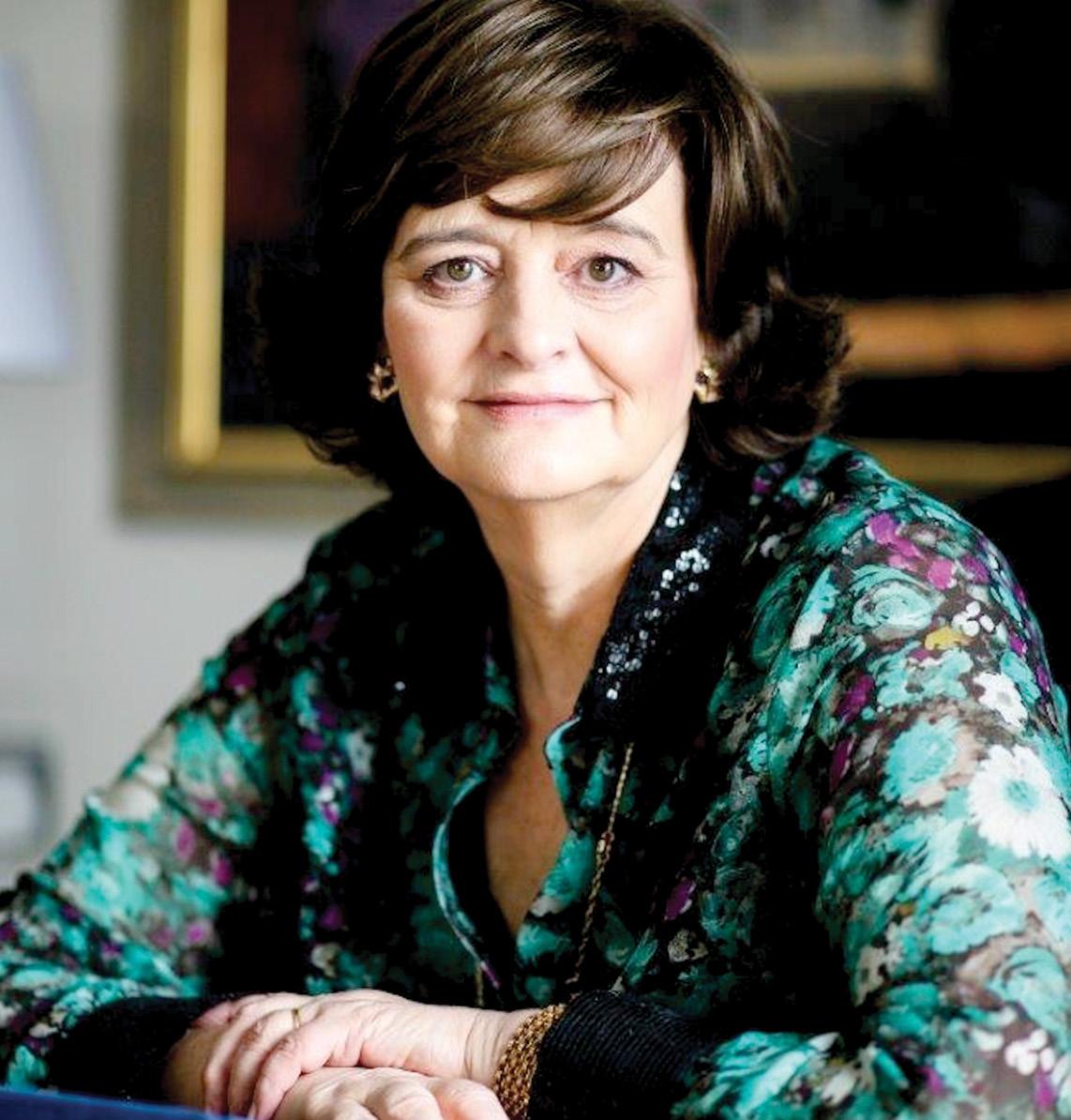
In a small community in Georgetown, Guyana, locals flocked to Radhika Basdeo’s family farm to get their fresh produce. en COVID hit. And like many other family-run small businesses, the pandemic nearly wiped them out. Vendors and locals stopped coming to buy produce. Workers stopped coming to harvest the crops. People began to steal from their fields. e family quickly realized they must use whatever limited resources they could find to survive.
Basdeo found those resources and turned them into products and started her own local packaged food business. With the help of the Cherie Blair Foundation for Women’s business skills training, she turned her business into a thriving food brand and became a successful entrepreneur.
The Cherie Blair Foundation for Women is a U.K.based nonprofit organization founded in 2008 by Cherie Blair CBE, KC, leading barrister and wife of former British Prime Minister Tony Blair. e Foundation is a beacon of empowerment, innovation, and collaboration in the world of women’s entrepreneurship. It is a dynamic force that uses a combined approach of training, mentoring programs and advocacy to support women’s entrepreneurship by helping them establish and grow successful micro, small, and medium businesses in low- and middle-income countries.
“If there’s one thing I know for sure, it’s that women entrepreneurs are a powerful tool for change. When women are supported to thrive, they create a better world for all of us. eir businesses fuel economies and provide vital services in their communities and beyond,” Blair says.
Among the Foundation’s women-centered programs are: HerVenture, an award-winning business skills microlearning app, and Road to Finance, a training program that builds financial literacy, skills, and confidence to help women secure financing.
The Foundation also sets itself apart through its pioneering ability to convene global networks of private and public sector partners, from USAID to PayPal, as well as individual supporters and allies, to amplify its impact through awareness-raising, funding, and support.
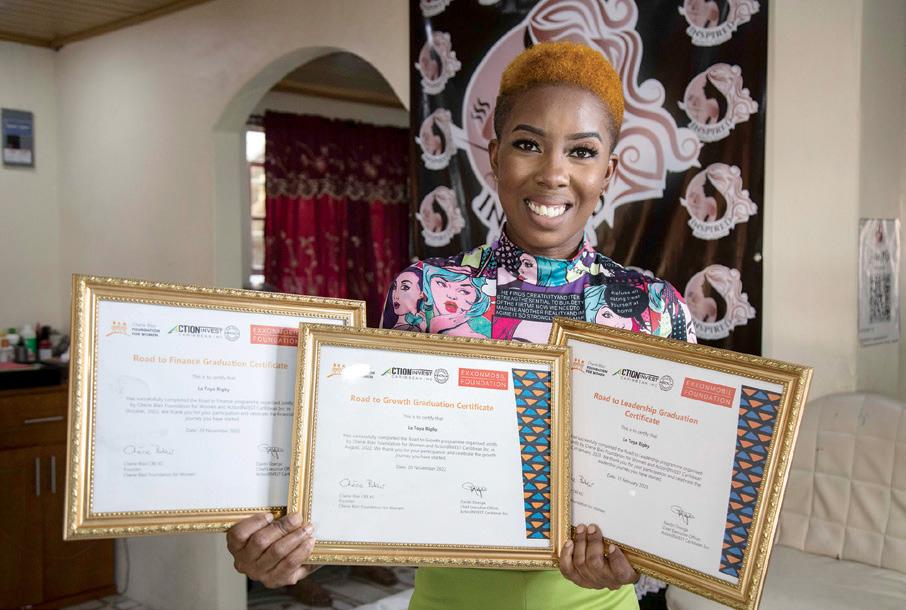
The statistics tell the story of why the Foundation and its support are so desperately needed. Globally, women-led startups receive less than three percent of venture capital funding, and 2.4 billion women of working age do not have the same economic opportunities and legal rights as men.
As Blair says, we cannot keep ignoring the inequalities that hold women back from running businesses. We need to commit to bringing our children up to know that a woman’s place is wherever she wants it to be, and that includes at the helm of a business.
To date, the Foundation’s programs have already supported 250,000 women in more than 100 countries.
The continued impact of the Foundation shows that its innovative model works. For every Radhika Basdeo, there are thousands more whose potential stands to be unleashed through the Foundation’s work.
At the Clinton Global Initiative 2023 Meeting in New York, Blair announced the Foundation’s bold commitment to action: to support one million women entrepreneurs by 2030. Join the Foundation in making this commitment a reality.
Cherie Blair Foundation for Women
www.cherieblairfoundation.org
Mary Connolly Head of Philanthropy mconnolly@cherieblairfoundation.org +44 7871 030523
By Check or DAF:
New Venture Fund (Cherie Blair Foundation for Women) 300-A
1828 L Street NW Washington, D.C. 20036 Tax ID# 20-5806345
Wealth, in the traditional sense, is often only thought of as money. But what if it transcended that simple de nition?
To achieve true gender parity, new conversations with leaders within the women’s economic empowerment world should go beyond the need for women to simply access money and nd decent jobs. ey must build a bridge between women and their money that also discusses the need for women to access quality healthcare, seek happiness, and build power in their communities. What if an organization existed that led legal action with such a holistic vision?
Turns out that such an organization does exist. At Equal Rights Advocates (ERA), a national nonpro t legal organization that focuses on advancing gender equality and combating discrimination in the workplace, education, and life overall, the work is expansive. Concentrating on low-income individuals and communities of color, ERA uses movement building, community education, impact litigation, and policy advocacy to challenge gender-based discrimination, promote fair treatment, and ensure equal rights under the law.
“Women must be able to talk about their lives holistically and ERA has an agenda for change that addresses their needs comprehensively. When we do that, communities are activated in a way that they have never seen before. ey feel seen in their own power,” says Noreen Farrell, executive director.
While ERA is a legal organization, community power building is critical to its success in passing new laws and enforcing them. Working with hundreds of partners, ERA has been the force behind 50 new economic security laws in California in the past decade, and hundreds more across the nation.
“Women are the backbone of our economy and democracy. We build power to ensure they have a voice and access to quality jobs with pay re ecting their value. When we work for laws and change ensuring high wages and equitable careers, so many other things fall into place for women’s equality and autonomy,” says Farrell.
Founded in 1974, ERA has led hundreds of groundbreaking impact cases opening entire industries to women and people of color. ERA’s landmark case challenging sex and race discrimination against the San Francisco Fire Department resulted in a 1987 consent decree transforming the industry. Among its 50 wins in

Equal Rights Advocates Community Power Rally celebrating groundbreaking policy wins.
the past decade, ERA led passage of the California Fair Pay Act of 2015 and other laws advancing wage justice for 18 million workers. ERA incubates locally and replicates nationally through its networks and national digital hub.
Catalyzing Philanthropy
Farrell calls on philanthropy to innovate at this moment: “Congress has invested $4 trillion dollars into the creation of higher-wage jobs in infrastructure industries like manufacturing, construction, and green energy. To leverage this moment, Equal Rights Advocates is developing our Women Rebuilding America Initiative to ensure that women of color and others who have historically been underrepresented bene t from these higher-wage and equitable jobs. Now is a once-in-a-generation moment to change the future of work for millions across the nation.”
Equal Rights Advocates www.equalrights.org
Jacqui LoganSr.
Development Manager(415) 621-0672
jlogan@equalrights.org
Ways to Give...
By Check or DAF:Equal Rights Advocates Inc.
611 Mission Street 4th Floor
San Francisco, CA 94105
Tax ID# 23-7217027
Gretchen Carlson and Julie Roginsky never imagined their stories of sexual harassment in the workplace would launch a wave of change for women throughout the world.
But in 2022, they helped spearhead two of the biggest labor law changes in the last 100 years: the Ending Forced Arbitration of Sexual Assault and Sexual Harassment Act and the Speak Out Act. ey also helped pass the Silenced No More Act in Washington State the same year, which limited the use of non-disclosure agreements (NDAs) and related provisions in employment agreements. e two women leaders are laser focused on ending silencing mechanisms in the workplace that have aided in covering up bad behavior at work for decades – a movement they are building for all employees across the globe by way of the organization they co-founded, Lift Our Voices.
“Right away, when Microsoft got rid of those NDAs not just for Washington State employees, which they had to do by law, but for their employees across the nation, we knew this was real structural change that would last for generations to come,” says Roginsky.
Roginsky’s words emphasize the strong impact legislative action can have when it is birthed out of real-life experience. Roginsky and Carlson’s personal experiences of harassment and retaliation at Fox News garnered international attention and helped to ignite the #MeToo movement. Carlson shares, “It’s interesting how one’s horrible life experience can turn into positive outcomes. I would have never predicted how we are changing workplaces and the lives of millions of people in the aftermath of all that.”
Lift Our Voices is dedicated to transforming the American workplace by making it safer and more equitable for everyone. ey organize communities to change laws and policies, advocate for survivors, and promote awareness for a safer and more inclusive workplace environment. e team is taking aim to restrict or regulate the use of forced arbitration and NDAs for all toxic workplace issues, including all forms of discrimination and retaliation. “ is work is so important,” says Roginsky.
“When I served as a consultant for New Jersey Governor Phil Murphy’s campaign, a young woman came to me and told me that she was raped by a senior aide to the governor. She tried everything she could to have the governor and first lady pay attention to her story but de-

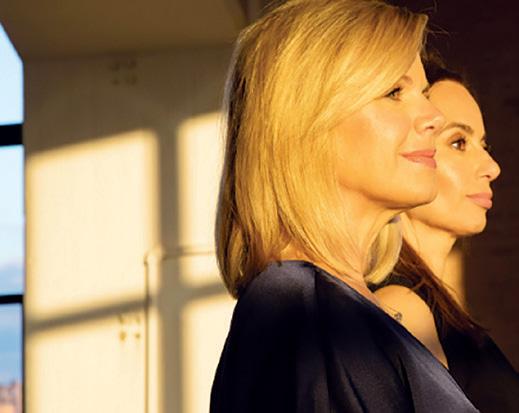


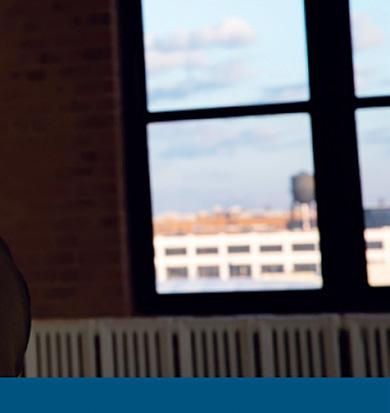
spite her pleas, they ignored her. Because I had signed an NDA upon joining his campaign, I, too, could not give her any information that might be helpful to her mentally, to her well-being, to her healing… at was truly one of the darkest days of my professional career.”
This ‘silencing’ is what Lift Our Voices hopes to eradicate law by law, initiative by initiative. With 54 to 81% of women still reporting sexual harassment at work as a key factor impacting their livelihoods and mental health, both legal action and support services are very much needed.
“ ere is power in people investing in us and this work. We are changing the infrastructure bit by bit, every day. We are an organization that has a track record of getting stuff done,” says Carlson.
Lift Our Voices
LiftOurVoices.org/donate
Gretchen Carlson & Julie Roginsky Co-Founders (206) 420-2518
Gretchen.Carlson@LiftOurVoices.org
Julie.Roginsky@LiftOurVoices.org
Ways to Give...
By Check or DAF: Panorama Global c/o Lift Our Voices 2101 4th Ave #2100 Seattle, WA 98121 Tax ID# 81-4204119
Access to credit is a mighty tool in the modern world. Without it, individuals may face barriers to education, housing, and entrepreneurship, which in turn limits their ability to achieve financial independence, success, and happiness through their lifetimes.
Removing such barriers is one of the principal goals of Women’s Economic Ventures (WEV), a nonprofit that passionately believes in entrepreneurship as a pathway to achieving financial security, enabling women to live full, healthy lives. e organization was launched to help women start and grow their own businesses through providing training, consulting, and access to capital. “Our founder had worked at a rape crisis center and observed that women had trouble getting out of abusive situations because they had no financial resources – or access to financial resources,” says Kathy Odell, chief executive officer. “She saw firsthand that if women couldn’t be economically independent, they’re trapped in whatever life everybody else imposes on them. And we don’t want that.”
The Engine to Build a Better Economic
WEV has grown from a pilot program in Santa Barbara County to expanding its reach and impact across California’s Central Coast region. e organization has developed a comprehensive suite of programs and services, in both English and Spanish, tailored to the needs of women and historically-marginalized entrepreneurs. From social media training and financial education to customized consulting services to grants and forgivable loans, all wrapped up in opportunities to network and build community, WEV is giving entrepreneurs the tools they need to launch or expand their ventures, setting them on a path to fulfillment and financial independence.
Odell notes that WEV continues to evolve and serve where there is the most need and highest impact for all women. “Sixty-six percent of the people we serve now are BIPOC (Black, Indigenous, People of Color) and low-income people. We find that by focusing on these women, we ensure change for their entire communities, by lifting them out of poverty and into a more sustainable life.”
W
EV’s impact can also be witnessed by walking around downtown Santa Barbara and Ventura.
“Our clients have built your neighborhood. ey’re the dog grooming salon you stop at. ey’re the cheese shop
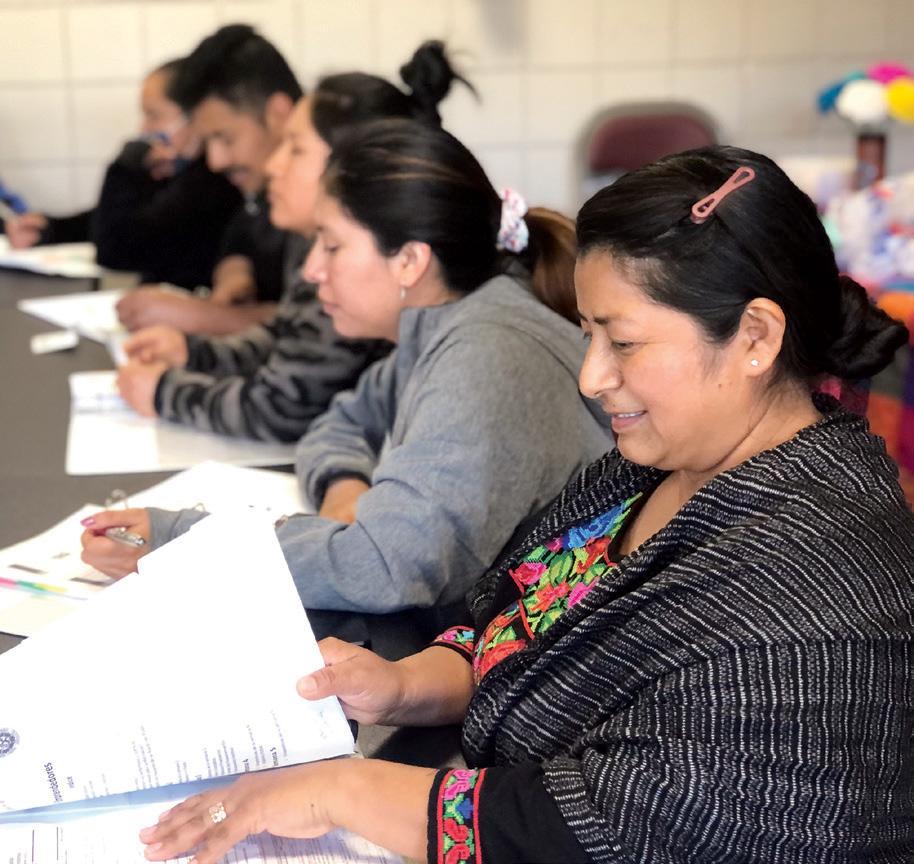
you go to for a weekend speciality. ey are the heart and soul of the neighborhood,” says Odell.
Counting on women is a central theme for economic growth, it leads to strong community development outcomes that benefit many. For philanthropists interested in women’s economic equity, Odell calls for funders to invest locally and connect with each woman’s story. “I think one of the frustrations organizations like ours have with funders is their expectation that they want big numbers. ey want to see hundreds or thousands of people served. For us, it’s the intention. We’re serving, like, 700 entrepreneurs a year right now. We’re really connected to those 700, helping them grow and become successful. It’s not always about the number of people coming through your doors.”
For WEV, which has already assisted 5,500 local businesses that have generated an estimated $800 million in annual sales, this is a journey of empowerment and determination.
Economic Ventures
www.wevonline.org
Lauren La erty Development & Donor Relations O cer (805) 908-0093
lla erty@wevonline.org
By Check or DAF:
Women’s Economic Ventures
21 E. Canon Perdido St. Ste 301 Santa Barbara, CA 93101 Tax ID# 95-3674624
Imagine that the steering wheel of your car malfunctions. Controlling the vehicle becomes extremely challenging and potentially dangerous to all: you, the passengers in your car, the pedestrians on the sidewalk, and the other drivers on the road. is one element of your car’s system, this one crucial thing that keeps everything on track, suddenly stops working, and it changes how the entire vehicle functions. Not only does it affect your vehicle; it affects everything and everyone else around it.
In America, care work is one of the most undervalued
“ The workers we rely on to care for us can’t care for their own families doing the work they do. It’s what we call a vicious cycle and a big driver of inequality.”
and underappreciated ‘steering wheels’ for all of society. Without it, almost every other aspect of our economy and society cannot function. Yet caregivers, such as house cleaners, nannies, and direct care workers, who provide critical ongoing services to our families and communities, work without basic labor rights and protections. Additionally, 91.5% of these 2.2 million domestic workers in the U.S. are women, of whom the majority are immigrants and women of color.
At the National Domestic Workers Alliance (NDWA), a prominent advocacy organization dedicated to improving the rights and working conditions of domestic workers in the U.S., the primary focus is on getting these workers dignity, respect, and fair compensation for their labor.
“One of our biggest challenges as a country will be
solving for our failure to create programs and policies to support the care we need. We are one of few developed nations that has no paid family leave program, and no universal child care or long-term care program,” says Jenn Stowe, executive director. “We are losing some of our most dedicated care workers to jobs in fast food and retail, because they cannot put food on the table and pay the bills on the income they earn. e workers we rely on to care for us can’t care for their own families doing the work they do. It’s what we call a vicious cycle and a big driver of inequality.”
One of the signifi cant milestones in NDWA’s history was the successful advocacy for the passage of the Domestic Workers’ Bill of Rights in New York State in 2010. is legislation granted domestic workers basic labor protections such as overtime pay and days off .
Since its inception, NDWA has grown into a nationwide network of domestic workers and allies, engaging in grassroots organizing, policy advocacy, and public awareness campaigns. But there is more work to be done.
“With resources at our disposal, we can raise our voices louder, ensuring that the stories and struggles of domestic workers are not only heard but also understood. Philanthropy becomes a crucial ally in our mission to create awareness, provoke change, and ultimately build a more just and equitable future for the workers who have long been unseen and unheard,” says Stowe.
National Domestic Workers Alliance domesticworkers.org
Karla Salguero Director, Individual Giving(201) 921-9459
ksalguero@domesticworkers.org
National Domestic Workers Alliance, Inc.
45 Broadway, Suite 2240 New York, NY 10006 Tax ID# 35-2420942

 Domestic workers at the Care Can’t Wait Day of Action in Washington, D.C., July 2021. (photo by Othello Banaci, National Domestic Workers Alliance)
Domestic workers at the Care Can’t Wait Day of Action in Washington, D.C., July 2021. (photo by Othello Banaci, National Domestic Workers Alliance)









ERA Coalition March on December 13, 2023 in Washington, D.C. (l to r) Ti any Shlain (Let it Ripple), Eleanor Smeal (Feminist Majority Foundation), Christian F. Nunes (NOW), Dr. Nancy O’Reilly (Women Connect4Good), Keri Edwards.

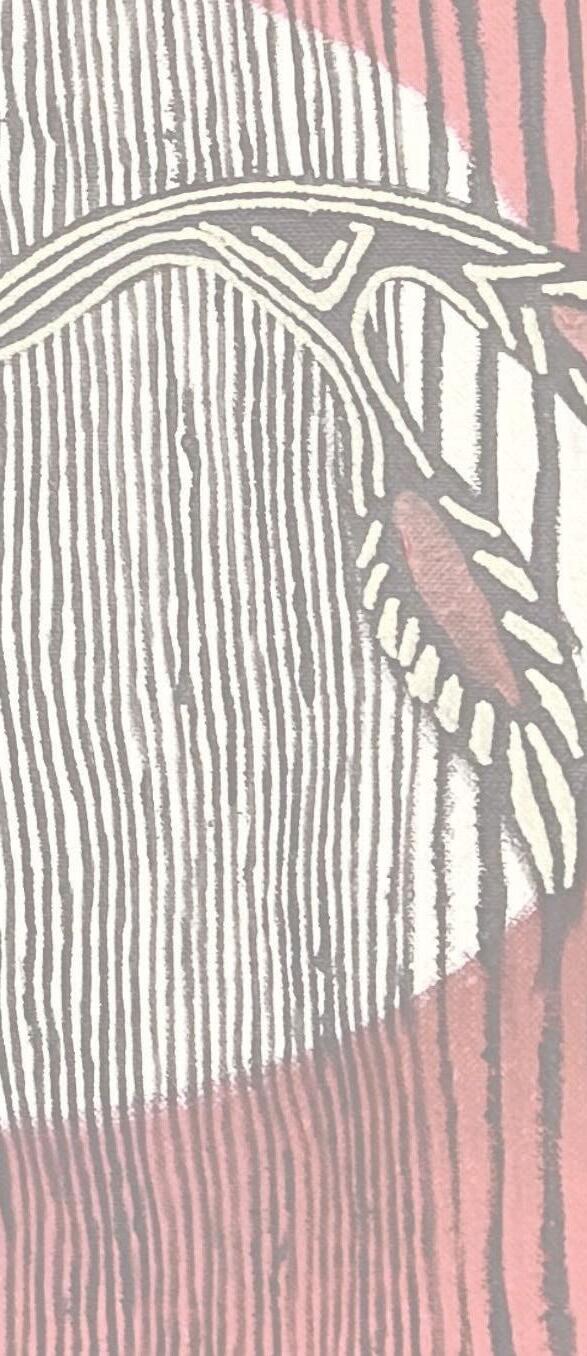

For Dr. Nancy O’Reilly, the mission of Women Connect4Good is intensely personal. Growing up, she felt that life looked easier for boys and noticed society did not value girls in the same way, so she was a tomboy. But things changed when she had her own children – all daughters – and knew she had to leave a legacy for them. “My rst daughter came, my second daughter came, my third daughter came, and I went okay – I’m getting the message,” she says. “Finally, I realized I had to leave something for them” and in doing so, explore “my own need to understand and become a woman.” at road led Dr. Nancy to become a renowned psychologist, author, and philanthropist who deeply believes that women helping women is our greatest self-help tool.
In 2011, Dr. Nancy founded Women Connect4Good, Inc., a 501(c)(3) social-profit foundation focused on championing women’s equality and advancement in the workplace, in politics, in business, in society, and beyond. Women Connect4Good empowers women by supporting organizations that work toward the advancement of women and girls.
Above all, “our goal really has always been about connection,” says Dr. Nancy. Connecting people opens the door for collaboration, innovation, and growth. To achieve this, the foundation utilizes a multi-pronged approach: ey share women’s stories, expand women’s leadership, uplift tomorrow’s female leaders, promote diversity and inclusion, advocate on behalf of all women, and identify and engage male allies.

Some of the successful programs they’ve supported include Take e Lead’s 50 Women Can Change the World programs, through which select women participate in a cohort in their industry and support and sponsor each other’s advancement and success; Diversity Woman Media’s Business Leadership Conference, a premier leadership conference where attendees learn from some of the most in uential thought leaders
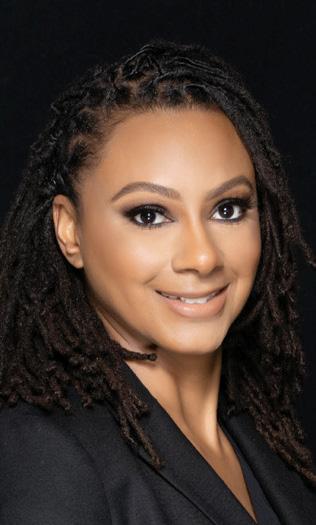
“Dr. Nancy doesn’t just talk about women’s empowerment, she lives it. She is a mentor, coach, and champion who tells it like it is and knows that women have to support each other to succeed. In partnership with Dr. Nancy and Women Connect4Good, we are connecting, uplifting, and growing our movement for equality.”
– Zakiya Thomas President and CEO, ERA Coalitionand executives from across the nation and the world; e National Women’s History Museum, which brings to life the countless untold stories of women throughout history, and their own initiative, the Lift Women Up campaign.
Dr. Nancy and her team are gaining momentum with this newest initiative, a free-to-join community of like-minded “female warriors,” which has grown to at least 5,000 members since its launch in 2020, just as COVID-19 lockdowns took hold. Indeed, the pandemic forced Women Connect4Good to scrap many of the videos and community actions it had planned for the campaign – instead pivoting to share special free content focused on helping women navigate unprecedented circumstances, while also helping them balance family responsibilities, workplace challenges, and their personal well-being. It was also an opportunity to seize the moment to reframe the conversation around many of the issues women continue to face.
Today, participants receive weekly emails and calendar reminders with advice and resources around uplifting themselves and other women. Dr. Nancy explains the key is “community building.” When women “lift as they rise – you take someone else along with you,” which advances more women to leadership positions and changes the shape of organizations.
Women supporting women in this way not only creates greater gender diversity but is also good for business and employees. Studies show that growing the number of women on boards and in top roles boosts an organization’s nancial performance, correlating with higher returns on equity, higher valuations, and lower earnings volatility. An academic study published in the Journal of Business Research in 2023 found that employee productivity also improves with female representation.
Since Women Connect4Good’s inception, the social-pro t foundation, which is privately funded, has partnered with more than 300 organizations and gifted more than $10 million.
As part of its dedication to connecting people in order to facilitate growth, expand expertise, and create new resources, Women Connect4Good has supported the mentorship program at World Pulse, an independent, wom-
en-led social network, for the past three years.
With the help of Dr. Nancy and Women Connect4Good, the mentorship program pairs mentees and mentors across 25 countries to support one another in a global knowledge exchange so they can bolster opportunities to change their communities for the better.
Women Connect4Good also emphasizes the importance of working with male supporters and sponsors. “We’re not going to get anywhere alone. If you want to go fast, go alone; if you want to go far, go together. We have to ask for help from them,” Dr. Nancy says. Indeed, the foundation elds dozens of requests for collaboration but only accepts the ones that align closely with its work. But “if we are not the right t, we try to nd the right t for them,” says Dr. Nancy.
Partnerships around advocacy are another major part of instigating change. Such action supporting the safety and security of women, allowing for personal health decisions, as well as equal pay, for example, must be taken not only to further gender inclusion, but to stop the erosion of women’s rights. “It is crazy to think in the year 2024, that women years and years ago had more rights than women today. We’re going backwards. We can’t allow that,” says Dr. Nancy.
Last December, Dr. Nancy joined the ERA Coalition and other organizations such as the Fund for Women’s Equality in marching from Lafayette Square in Washington, D.C., to the U.S. Capitol via the White House. She also spoke at an Equal Rights Amendment congressional reception at the U.S. Senate, urging those present to engage their superpowers to e ect change and reminding them that when “we connect our partners and friends, we open the door to collaboration, innovation, and momentum.”
For Women Connect4Good, success is “the people and the places we’re getting in front of, and who’s standing there with us,” says Dr. Nancy, pointing to her array of partners and their impact. Success is “the organizations that are coming to us now because our value has been understood and our signi cance has been understood.” But completing the mission is far from over. As Dr. Nancy reminds us all, “We have more work to do.”

Change doesn’t just happen overnight; we must make it happen.
Solving gender equity issues, as well as effectively navigating other pressing challenges that lay before us, from climate change to ethics in AI to threats to democracy, will require a new definition of leadership that accounts more for the good of the people and planet. It will also require leaders who more accurately reflect the demographics of the people they represent.
“If you look at the evidence that is gathering from all over the world about women leading in every sector – from governance to grassroots leadership – what you find is that women tend to have higher relational intelligence that considers the good of the whole,” said Nina Simons, co-founder of Bioneers and author of Nature, Culture and The Sacred: A Woman Listens For Leadership , during an interview for a 2023 Forbes article. “At this time of ecological and social change, upheaval and danger, those are tremendously valuable assets that women bring to leadership.”
Yet in 2024, fully half of the world’s population remains vastly underrepresented in positions of power across business, government, and culture at large. While the number of women at the helm of Fortune 500 companies hit a record high, the representation of women CEOs currently still stands at only about 10% – and just two of those CEOs are Black women.
So what is holding women back from stepping into these top positions of power? The barriers are varied and multifaceted but include the “broken rung,” which refers to the fact that women – and especially women of color – are less likely to be promoted into management positions than their white male counterparts. There is the motherhood penalty: Mothers are paid less than fathers, and 23% of working mothers report they have been passed over for
a promotion because they have children. Additionally, there is the issue that women traditionally have had less access to mentors, sponsors, and support networks.
“Women and girls represent half of the world’s population and therefore also half of its potential,” says Denise Dunning, founder and executive director of Rise Up, a nonprofit that partners with women, girls, and allies who are transforming their communities and countries to advance justice and equity. “Gender inequality persists, however, and prevents social progress and costs national economies trillions of dollars annually.”
Jocelyn Mangan, founder and CEO of Him For Her, a social impact organization that connects women leaders with board opportunities, believes boardrooms – where just 16% of board directors are women, and only 4% are women of color – are the most important rooms in business.
“It’s really about if a room [such as a boardroom] has influential decision-making power, which it does, would you want one filled with groupthink or with cognitive diversity?” says Mangan.
If we had more women in key decision-making positions – from boardrooms to C-suites to the government – it stands to reason that we would be better equipped to tackle issues such as the gender and racial wage gap, ongoing gender and racial discrimination in the workplace, the pervasiveness of gender-based violence, the lack of national paid leave, and the shortage of affordable childcare.
In the pages of this chapter, you will read about women who are stepping up to be the change they want to see in the world, all while lifting up others along with them. They are taking action and simultaneously inspiring others to do the same.
“[When it comes to] gender issues, equality issues, healthcare issues, the changing role of
“[When it comes to] gender issues, equality issues, healthcare issues, the changing role of women, lack of financial support for childcare, climate change – this whole basket of issues – you can’t just stand on a corner with a sign, because nothing is going to change as a result of that.”
– Linda Crompton, president and CEO of Leadership Women
women, lack of financial support for childcare, climate change – this whole basket of issues –you can’t just stand on a corner with a sign, because nothing is going to change as a result of that,” says Linda Crompton, president and CEO of Leadership Women, a nonprofit pushing for equal opportunities and participation for women in leadership at all levels of decision-making.
It’s also important to note that simply reaching equal representation in leadership is not enough to achieve gender equity; we also must change the systems that perpetuate inequities.
“Despite progress in the fight for gender equity, major systemic barriers prevent girls and women from realizing their full potential,” says Dunning. “Around the world, millions cannot fully participate in the economy; are underrepresented in government, education, and leadership roles; and lack access to economic opportunity, education, and essential health services. Local leaders in communities around the world are working to uproot these systems of oppression, but they face overwhelming challenges.”
Joanne N. Smith, founder and executive director of Girls for Gender Equity, believes that centering the most marginalized among us benefits everyone and that the solutions to inequities should be led by those most in the margins.
“We need to interrupt the systems of oppression that invisible-ize Black girls, and create ways in which their voices, experience, safety, innova-
tion, and creativity are at the center of services, policy, practice, and culture,” says Smith.
The women-led nonprofits amplified in these pages are creating pathways for more women to lead. The nonprofits are doing this by giving women tools to confront the barriers and biases they face, by building networks so women can lift up other women as they rise, and by driving solutions through a gender lens to some of the biggest problems of our time.
In order to successfully navigate gender equity issues, the new face of leadership must include people who identify as women, people who reflect the diversity that makes up our world, in equal numbers and with equal influence.
When we amplify, support, and offer resources to women who are leading organizations that are creating community and cultivating more leaders, it creates a ripple effect of change.
When leaders of companies close the gender and racial wage gap, they are better able to attract and retain talent. When governments and companies put in place policies that better support caregivers, it boosts the GDP. When leaders hold people accountable for sexual harassment, workplaces become safer environments for all.
For the health of our people, our communities, our government, and our very democracy, women must be equally represented in leadership positions. Only then will we create a tipping point where we truly give “power to the people.”
More than 42 years ago, the intersecting ideas that representation matters and there is strength in numbers sparked nine women to co-found the nonprofit Leadership Women. eir goal was to push for equal opportunities and participation for women in leadership at all levels of decision-making in political, economic, and public life.
One of those nine women was Ann Richards, the second woman to become governor of Texas. In 1976, after taking her four children to the Institute of Texan Cultures in San Antonio, Richards’ daughter asked her, “Where were the women?” It was clear to her child that women weren’t being represented in the history that was being taught or included in the stories that were being told. Richards channeled her anger into action by bringing women together in the fight for gender equity through her nonprofit work, as well as by going into politics herself.
Today, Leadership Women, Inc. is an organization of more than 8,000 powerful voices that focuses on amplifying those voices by bringing them together in cohorts to prepare them to lead in complex and confusing times.
“We offer leadership development programming for women of diverse backgrounds and industries to address the most pressing leadership challenges of our day, such as climate change, inequality, healthcare issues, and the lack of affordable childcare” says Linda Crompton, president and CEO of Leadership Women, Inc.
Crompton, a former bank president with 30 years of experience in leading nonprofits, believes that real wisdom comes from the margins, rarely the center. She is convinced that meaningful change happens when women create connections and educate one another about important policy issues. is is accelerated by ongoing learning, and by giving women the ability to call upon anyone within the network to ask for resources, information, or introductions.
Audrey Selden, a Harvard-trained attorney and former Texas state government executive, has a long history with Leadership Women. In 1991, while working at a law firm in Houston, she was tapped by the Ann Richards administration to serve as Assistant Secretary of State. Judge Judith Guthrie encouraged her to get involved with Lead-
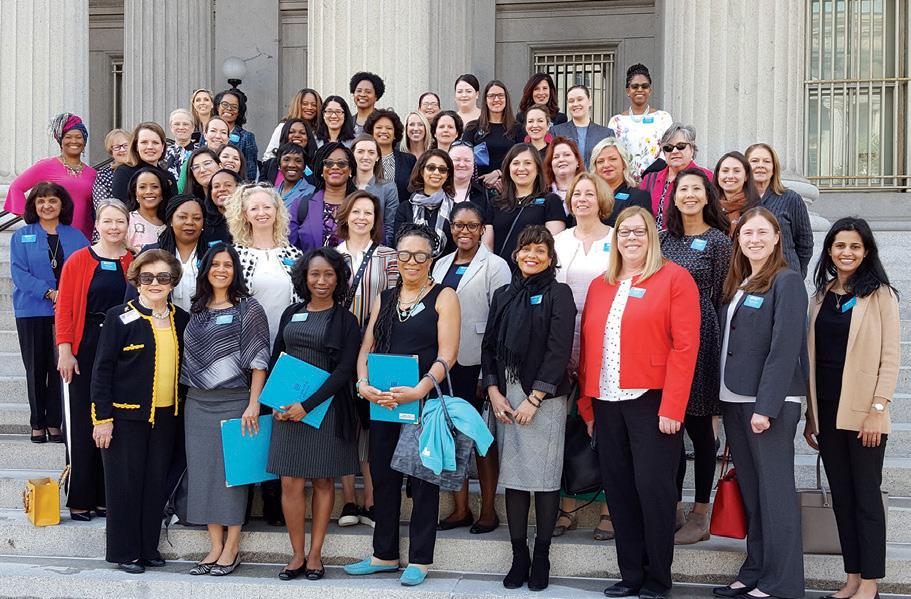
ership Women, which Selden says was a career changer. She has participated in Leadership Women programs ranging from Leadership America and Leadership Texas, which bring leaders together for experiential learning that focuses on addressing today’s most pressing issues, to Leadership International, which connects women globally with travel-study experiences, to Leadership Encore, which marries travel, learning, and networking for leaders looking to stay involved and grow their knowledge and community.
“ e connections I made were not only instrumental in introducing me to state government, but also in helping me to not feel alone in the challenges I faced as a woman of color in a field that’s very male dominated,” says Selden. “At the core of Leadership Women’s programming is a commitment to excellence and to helping women grow their networks. We used to joke that we’re like the good old girl network. e good old boys have had it for a long time, but we’re doing this because we know the power of relationships. We know the power of knowledge. And we’re going to make sure that everybody gets a chance to have that.”
Leadership Women, Inc. leadership-women.org
Linda Crompton President & CEO(202) 352-3385
linda.crompton@leadership-women.org
Leadership Women, Inc. 10455 N. Central Expwy #109-231
Dallas, TX 75231
Tax ID# 23-7345926

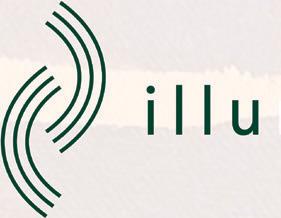



 Wby Holly C. Corbett
Wby Holly C. Corbett
hen it comes to pushing for more equal representation of women and other underrepresented groups in top leadership positions, your mind might go to increasing the diversity of CEOs at Fortune 500 companies or having our rst woman president. Less attention might be paid to the number of women or diverse directors on boards, but the boardroom is the most in uential room in business, says Jocelyn Mangan, CEO and founder of illumyn, a public bene t company that connects those historically underrepresented in the boardroom with board visibility and opportunity.
“If you look at private boards – which are the bulk of companies today – only 16% of their boards are made up of women, and only 4% are women of color,” says Suzanne Soares, chief business development o cer at illumyn.
Simply put, diversity on a board of directors brings quanti able business bene ts. According to the United Nations International Labour Organization, having gender equality in the boardroom makes companies 20% more likely to improve their performance. Other research has shown that gender equality boosts rm value, corporate social responsibility, quality of decision-making, and sales. Having a diverse board is vital in re ecting the customers served.












“Not having equal representation of women on boards is a big miss, because women hold tremendous purchasing power: Women are responsible for 85% of consumer spending, 91% of new home purchases, and 80% of healthcare spend,” says Mangan.
If corporations understand that boardroom diversity is good for business, why is progress so slow when it comes to diversifying boards? e answer may lie in the lack of visibility of board-ready candidates, as well as a lack of access to opportunities. at’s where illumyn comes in.
“We looked out into the world, and we recognized that the majority of the talent many of the boards were seeking, especially women and historically underrepresented talent, were hidden in large corporations,” says Soares. “ ey’re hidden maybe
because they themselves don’t necessarily report to their own board, or they don’t see themselves as board quali ed, or they just don’t have the network today to help them expand their visibility to opportunities.”
illumyn brings visibility and opportunity to historically underrepresented corporate executives. With their Boardroom Excellence Fellowship, corporations help nominate top talent they believe has board potential. If the candidate is a match, they can join the fellowship, where they will get an in-depth view of what’s truly involved in terms of board service, align their interests and talents with in-demand boardroom skills, and also have the opportunity to be connected to key boardroom opportunities.
Allison Bubar, a regional vice president at Advance Auto Parts, says the Boardroom Excellence Fellowship program gave her the support and knowledge she needed as she’s prepared to join a board.

“The illumyn Fellowship program e ectively bridges a vital gap in our leadership development portfolio. Beyond delivering top-notch learning experiences, it fosters vital connections, enabling practical, hands-on expertise. Historically, sourcing partners or developing this inhouse presented challenges. With illumyn, participants benefit from a comprehensive enterprise understanding — a perspective sometimes overlooked in daily departmental roles. Additionally, through board service, they’re introduced to an expanded viewpoint, refining their strategic vision for both immediate and longterm business objectives.”
–Kristy Feldkamp, Boardroom Excellence Fellowship participant“When I had the opportunity to interview for a board “ ere’s also a really interesting component to being on the board, and it’s far more EQ than IQ,” says Soares. “It’s not about the governance and how much you understand that component of it or understand the nancial acumen of being on a board. Rather, it’s really about how you show up in a meaningful way, not as an operator but as an overseer.”
“Not having equal representation of women on boards is a big miss, because women hold tremendous purchasing power: Women are responsible for 85% of consumer spending, 91% of new home purchases, and 80% of healthcare spend.”
position, the team was available with quick turnaround time to help me prepare and ensure that I had all necessary information and was set up for success,” she says. “One of my favorite sessions was on the concept of ‘informed curiosity.’ While the focus of the session was on the board interview process, I’ve also leveraged what illumyn calls the ‘Little Book of Killer Questions’ and insights for other applications, such as preparing for a strategic roadmap discussion with our executive team.”
i
llumyn o ers another vital program for historically underrepresented board members, in the form of insider training on how to bring excellence to the boardroom once they have a seat at the table.
“We’re not just creating opportunities for women [and historically underrepresented people] to get board seats, but also making sure they’re having an impact,” says Soares. “We’re making sure they’re not a silent voice, which can happen sometimes, because those boards will have the founder, their friends, their investors, and others who may have been out there for a long time.”
If someone has achieved board member status, they already have the skills, experience, and knowledge to get the job done, but what separates good board members from MVP board members is having high emotional intelligence, or EQ.
illumyn has created a three-month Boardroom Brilliance Program to support new board members and help them increase their EQ. e program is lled with valuable insights reaped from years of intimate dinners that Him For Her (illumyn’s nonpro t partner) has hosted with CEOs, C-level executives, and board leaders.
“It’s really based on what we call the 10 most valuable characteristics of board members that we gleaned from hosting more than 135 dinners with the country’s top executives and asking, ‘Who makes your MVP of your board and why?’” says Soares. O ering this sort of soft-skills training sets illumyn apart from other board training programs. e program is led by industry leaders with extensive corporate board experience and designed so new board directors can immediately apply actionable learnings.
Soares says she hopes all new board directors come out of the program having found their voice. at they are “ready to make an impact on the board they’re sitting on and feel really comfortable about their position on that board.”
Please contact us to explore how the illumyn Boardroom Excellence Fellowship program can support your corporate leaders today:
Suzanne Soares Chief Business Development O cersuzanne@illumyn.co (512) 466-2301
The idea for Him For Her began in 2016 when Jocelyn Mangan, founder and CEO, got a fellowship at the Aspen Institute that tasked fellows to start a venture they believed would change the world. “I decided the boardroom was where I wanted to focus, because I knew if you want to change the world, you have to start at the top,” says Mangan. “ e average person should care about the boardroom because the board sits above the CEO and makes decisions about the products and services we use every day,” adds Mangan. “ e last bite of food you took is tied to a corporation who is influencing how it is made and gets to you, or how safe our cars are, or what medicines are available to us.”
Change Starts at the Top
Mangan established Him For Her as a social impact organization aiming to connect women leaders with board opportunities and to accelerate boardroom diversity not only because it’s the right thing to do, but because it’s good for business and society at large. Women are 51% of the population, yet 91% of executive board seats are held by men. Dozens of studies and decades of research show that diverse teams outperform homogeneous teams and are likely to make smarter decisions.
“Companies will have better business results if their board represents the audience they’re selling to,” says Mangan. “ ere are also ties between having women involved in decision making and improving climate change.”
During her fellowship research, Mangan interviewed about 100 CEOs and board members, all of whom happened to be men because men continue to hold the majority of CEO and board positions.
“ ey all said, ‘I would love to see it change, but I don’t know how. How can I help?’” says Mangan. “ en I asked, ‘Where did you find your last board member?’ And I got 100 versions of a personal network story – private dinners, golf games, ski weekends, hunting trips. at was when I realized that it wasn’t a pipeline issue; it was a network problem. We just needed to find authentic ways to get new people in these small, trusted networks where board members are found. at’s how we started.”
Today, with more than 7,000 board-qualified women in its network, Him For Her is illuminating that the lack of representation of women on boards is not a pipeline problem, but a network problem. e nonprofit hosts

roundtable discussions to expand networks for current and aspiring board members, makes introductions to connect companies with board-ready women, and tracks progress of private-company boards. To date, Him For Her has been directly responsible for more than 100 board appointments.
“ ere are enough talented people for every open board seat, but the work is hard because it’s systemic and takes time,” says Mangan. “It requires patience and stubborn optimism. We’ve been able to attract our own team that exhibits those qualities, and the other key to our success has been partnerships from the business community. No one person or organization can do this work alone. Him For Her hopes to be the driver because it is a problem that is solvable.”
himforher.org
Crista Bailey Chief Business Development O cer(512) 466-8036
crista@himforher.org
By
Check or DAF:Him For Her, Inc.
1889 Harrison Street Suite 741
Oakland, CA 94612 Tax ID# 83-1293236
Amovement often starts with a moment. For
Dr. Denise Raquel Dunning, that moment happened when she was just 12 years old.
Dunning’s worldview changed in an instant during a trip to visit family in Argentina while riding on a train. e doors opened and a girl – appearing to be only two years older than herself, carrying a baby, and with a toddler in tow – stepped into the same car as Dunning.
“She was not even close to being an adult, yet she was a mom to these two small children,” says Dunning. “ ey walked down the whole length of the train, stopping to ask people for money and food and help. And I remember, nobody even looked at her. I just remember feeling so incredibly angry and ashamed because there was nothing that I could do. I promised myself that someday I would do something for girls like her.”
Fast forward to 2009. Dunning kept that promise when she and Josie Ramos co-founded Rise Up, a nonprofit that she says, “is about supporting girls and women to achieve their potential, fulfill their dreams, and live the lives that we all want to be living in terms of being able to finish school, have access to healthcare, and support ourselves and our families.”
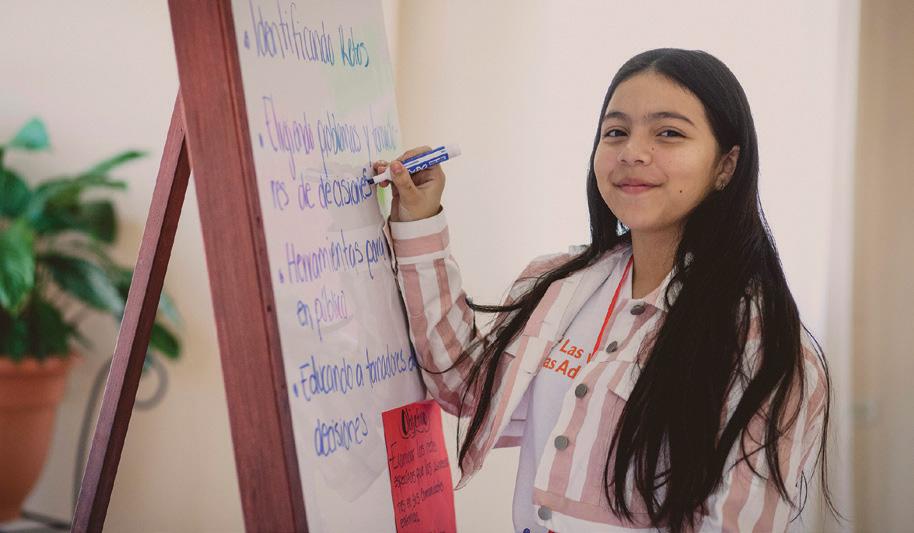
Rise Up follows a bottom-up approach for creating impact by supporting and investing in local leaders with lived experiences and who know best what they need to solve the issues they are facing. ey do this by providing women, girls, and their allies with training, funding, and connections to a global network to create sustainable change.
Rise Up’s movement includes a global network of more than 800 leaders and their organizations whose ad-
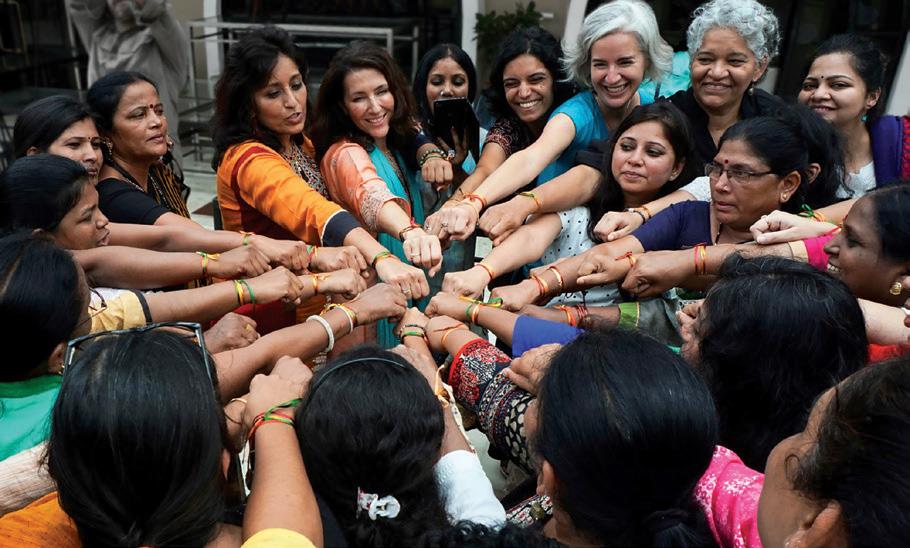
vocacy and determination have already helped pass 185 laws and policies that have impacted 160 million people around the world. eir powerful network of worldwide leaders includes such notable visionaries as:
Memory Banda, who advocated for a national law banning child marriage to help safeguard the rights of four million girls in Malawi.
Hameda Deedat, who successfully fought for a policy ensuring women’s economic opportunity by protecting 1.2 million workers in South Africa from gender-based violence and harassment in the workplace.
Silvia Alejandra Holguín Cinco, who strengthened gender equity policies and increased political representation for more than one million women and young people in Mexico.
To date, Rise Up has focused on supporting community leaders and organizations in the U.S., Latin America, South Asia, and Africa, but the nonprofit’s goal is to deepen and grow their gender equity and justice work. From enabling girls to get an education to improving women’s health and economic opportunities to advancing legislation that protects against gender-based violence, the stories in the Rise Up Leaders’ network are a testament to the change that is possible when we listen to girls and women.
“Working towards a more gender-just world is critical to all areas of a healthy society, from reducing poverty to promoting education, health, and economic opportunity around the world,” says Dunning. “When women and girls are able to thrive, everyone thrives.”
Rise Up riseuptogether.org
Jen Byrne Development and Engagement Manager (510) 285-5500
jbyrne@riseuptogether.org
Ways to Give...
By Check or DAF:
Public Health Institute c/o Rise Up 555 12th Street, Suite 600 Oakland, CA 94607 Tax ID# 94-1646278
*The Public Health Institute (PHI) is Rise Up’s fiscal sponsor and a 501(c)(3) nonprofit organization.
It’s been more than 20 years since Joanne N. Smith founded Girls for Gender Equity (GGE), a nonprofit that works intergenerationally to center the leadership of Black girls and gender-expansive young people of color to reshape culture and policy. Smith says, “GGE challenges systems of oppression and drives change through a ‘three-legged stool’ model that includes direct service programs, policy change, and culture change work.”
GGE understands that supporting and uplifting the most marginalized among us benefits all of us. Sixty percent of Black girls will experience sexual violence before age 18 (Black Women’s Blueprint, ND). Black girls and women are three to four times more likely to experience pregnancy-related death than their white counterparts (CDC, 2019).
The model is working. e organization is not only changing lives; it’s helping to save lives.
Smith recounts how one young person asked her how she could get more involved with GGE after participating in the organization’s Sisters in Strength program, which is a survivor circle for youth survivors of childhood sexual abuse and their allies. “Sisters in Strength is a healing justice program for young people to join in siblinghood, where youth advocate and strategize ways to interrupt patriarchal violence – from participating in city council testimony to spearheading legislation to holding healing circles,” Smith says.
e young person listened to Smith detail the holistic youth-centered programs that GGE offers. At the end, the young person quietly told Smith, “I just really wanted to thank you because before joining, I was contemplating suicide, and now I have a reason to live.”
“She was very introverted when she started, and to hear that her survival was not only because of this program but was also because of how other program youth showed up for her was powerful,” Smith recalls. “Her voice was heard; her identity affirmed because I think she was figuring out what her sexuality and gender was.
e permission to figure out who you are, to show up in different places, allowed her to not feel so isolated to the point where she didn’t want to commit suicide.”
Smith says, “I told her I couldn’t imagine sitting here without her. I told her she is probably that story [of hope] for somebody else in the room and to keep showing up. And this young person went off to college and continues to prosper.”
GGE centers Black girls’ joy with initiatives such as an internal joy committee dedicated to ensuring that, despite serious work, young people enjoy being young.
“In the words of young author Leila Mottley, ‘We owe Black children the gift of childhood,’” Smith says. She adds, “We’ve been able to see what it looks like to pour into young people in ways that we might have never imagined, and then see them lead in ways that make them proud of themselves, from getting the Incorrigible Bill passed in New York State to leading the National Young Women’s Initiative in eight states.
“ Sisters in Strength is a healing justice program where youth advocate and strategize ways to interrupt patriarchal violence.”
“ e youth are the climate protectors, the thinkers, and doers that we are working to make it easier for, and knowing that Black girls and gender expansive youth have done so much with so little, it would work against us as a whole to short them during a time when they need uplifting the most.
“We’ve seen young people become doctors, teachers, nurses, parents, and just overall phenomenal people. To know that GGE has played a part in that trajectory, and now they’re off in the world expanding democracy with and for other young people, makes us want to do more.”
ggenyc.org
Joanne N. Smith President & CEO(917) 647-3157
president@ggenyc.orgBy Check or DAF:
Girls for Gender Equity, Inc
25 Chapel Street Suite 1006 Brooklyn, NY 11201
Tax ID# 043697166
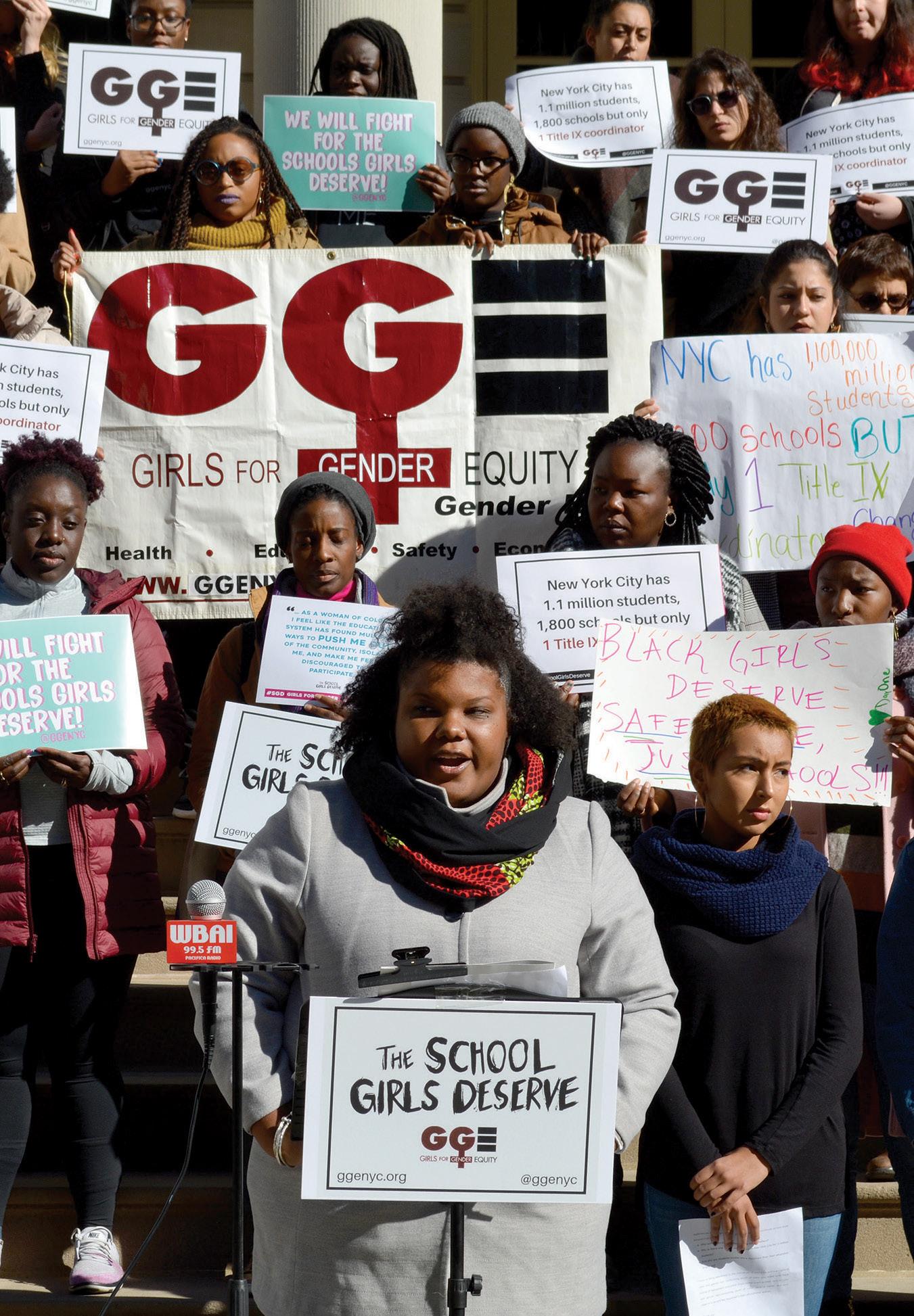


 GGE The School Girls Deserve campaign launch.
GGE The School Girls Deserve campaign launch.
In 1965, when Sara Miller McCune was only 24, she founded Sage Publishing, which grew into a major international academic publisher with subsidiaries in India, Singapore, and Australia. McCune believed that research and education were critical forces in moving society toward greater justice, which included the support of scholars writing in their own voices, and representing new and emerging fields.
As a philanthropist and visionary, McCune’s support of social science and academia has been particularly significant at the University of California, Santa Barbara, and Stanford University. At UC Santa Barbara, McCune created the SAGE Center for the Study of the Mind, and the Miller-McCune Center for Research, Media and Public Policy, for which McCune serves as executive chairman. For her leadership, the university awarded her the Santa Barbara Medal, its highest honor. At Stanford, McCune endowed the directorship of the influential Center for Advanced Study in the Behavioral Sciences.
In 1990, McCune and her husband, George D. McCune, established the McCune Foundation, which began to direct its resources to nearby Santa Barbara and Ventura counties. The Foundation’s mission supports the empowerment of local communities, with an emphasis on championing grassroots, collaborative organizations working to increase the region’s social capital for underserved populations.
In 2013, McCune was inducted into the Pacific Coast Business Times Business Hall of Fame, becoming the first woman to receive this honor. Other honors include the Entrepreneur of the Year Award in Media/Entertainment for the Greater Los Angeles Region from Ernst & Young and the London Book Fair Lifetime Achievement Award. In addition to holding many honorary degrees, she is an honorary fellow at the University of Oxford.
Giving List Women: As the president of a fully endowed private foundation, are women and girls a big focus of your work?
Sara Miller McCune: To some extent. The McCune Foundation has nine female board members and only three men. There aren’t that many men that I know or know of who are interested in philanthropy to promote
social, educational, economic, and environmental justice. Maybe in another generation that will shift, but right now, it is what it is. I’ve been working hard to get more younger people and people of color [involved in the Foundation].
GLW: You were the founder and CEO of one of the world’s largest academic publishing companies, when very few women were in such positions. What was that like?
SMM: Sometimes I was very aware of being a woman in what was essentially a man’s world. Back in the mid ’60s, there weren’t many women investors or bankers to talk to. In fact, most of the companies that I had worked at in the U.S., and one in the U.K., had hardly any women executives. I was out there on my own. I was certainly aware that too many men, and not enough women, were at the table. And that had to change.
GLW: What kind of a difference does it make when women are at the table?
SMM: It’s always a broader view for one thing. When we’re looking at things from different angles, it’s very useful to have some of those angles seen through a woman’s lens. There were times, like sitting down with the banker and him talking about the Boy Scouts and everything to do with a male perspective, and I would try and widen the discussion. I can also remember sitting with the head of The [University of] Chicago Press and him telling me with pride that he was saving The Press tons of money by hiring female graduate students for minimum wage so that The Press had more money to put into their book program, their journal program, etc. And it was all I could do to keep myself from going for his throat and throttling him. Didn’t even blink at telling me this crap. He was proud of it. It was 1970 or so. That’s crazy nuts.
GLW: I think women are capable of the same tribalism as men, unless we consciously decide to lead differently. Do you agree?
SMM: Yes. But that’s got to be done from within and not imposed. But as I said, there are times when I’m not thinking as a woman, I’m thinking about getting this
something done, and I would do it that way, whether it was a man, or a woman.
GLW: What gave you the confidence to build and lead a major global company when very few women were doing that?
SMM: I’m lucky because my family recognized that I was very intelligent, and there was a lot of faith in my going places. But I can still remember one of my dad’s brothers – he had loaned me money, $4,000, to complete a deal very early on. Four years later, I paid back the last part of the loan, and we’re sitting at a table with my uncle and his wife in a restaurant in Manhattan. And he took the check and said, ‘Gee, I never thought we’d get this money back.’ I can’t believe I didn’t toss my glass of soda water. I mean, it never occurred to me that I would not pay it back. Never.
“Where to focus your philanthropy, I think, must come from within you. What’s in your heart? What’s on your mind? What do you passionately care about?”
GLW: What do you consider your most important philanthropic experience?
SMM: I started in philanthropy when I was 14. I joined what was then B’nai B’rith Girls [BBG], and I left as president at 19. Last year was the 80th anniversary of BBG’s founding, and I went to their headquarters, and we talked for 45 minutes or an hour, and at the end, I pulled out an envelope and I said, ‘BBG made a huge difference in my life, and I feel I owe you something. So here’s a check.’ And the check was for $80,000 – 10 grand for each of the eight decades that the organization had been around. And he was blown away.
GLW: There’s an enormous wealth transfer underway in this country and around the world, much of which will be in the hands of women. What advice would you give to Next-Gen donors in terms of where to focus their energy?
SMM: Where to focus your philanthropy, I think, must come from within you. What’s in your heart? What’s on your mind? What do you passionately care about?
GLW: Many believe that women and girls have made great strides toward equality since the ’60s. Yet, progress for women is being rolled back as we speak. To what do you attribute so many people’s willingness, including women’s, to roll back
reproductive rights, the lack of political will to pass the ERA [Equal Rights Amendment], etc.?
SMM: Oh, it was planned. I mean, guys like Karl Rove, the Koch brothers, some very bright guys, looked at the judicial and political systems and went to work. And the Democrats saw it coming and let it happen.
GLW: Do you still have hope that the ERA will be passed in your lifetime?
SMM: I no longer believe that it is likely that I will see that come to pass. I think we’re going to have to fight that fight all over again, just like we’re going to have to fight for abortion all over again. The world is not a fair place. I’ll go to my grave being aware of it. It wasn’t a fair place when I got started in business. But to make advances and then lose them is heartbreaking.
GLW: Do you think the world believes the narrative that women have already achieved equity with men and that’s why so little funding goes to women and girls, and less to those of color?
SMM: I don’t think most people think that women and girls are equal. I think many people believe that women and girls are capable of a hell of a lot more and should be given all the opportunity, all the help, etc. But I also think there’s a huge number of people who do not think that way, have never had to think that way, and still need to have their eyes opened. Now, having people’s eyes open and making them change their core beliefs are two different things. And part of the problem is that we can open a lot more eyes, but we may not be able to change quite as many hearts and minds. And that’s the challenge.
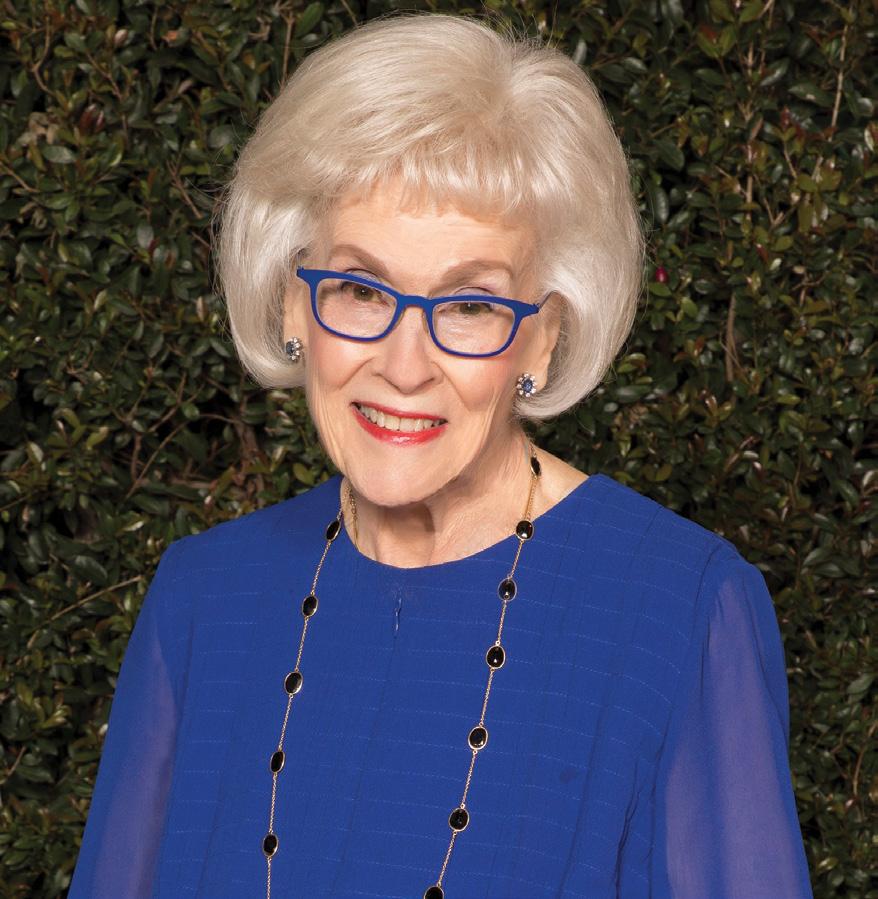







Chairman, President, and CEO of the Annenberg Foundation Wallis Annenberg with Debbie Allen and Shonda Rhimes at the grand opening of the Shonda Rhimes Performing Arts Center, which includes the Debbie Allen Dance Academy. Wallis Annenberg proudly supports the Dance Academy, which seeks to enrich disenfranchised Black and Latino communities through dance, theater, and the performing arts.
One of the largest and most impactful private foundations in the United States, the Annenberg Foundation, has led the charge for forward-thinking, expansive, and conscientious giving since its founding in 1989. A family foundation helmed by Chairman of the Board, President, and CEO Wallis Annenberg since 2009, the Foundation is committed to addressing the critical issues of our time including access to the arts and healthcare, food insecurity, education, animal welfare, diversity and inclusion, aging and longevity, and affordable housing. And they focus on all of these areas with an equity lens.
e Foundation also works to empower leaders, especially women, as a particular focus of its giving and community partnerships. “I was a woman in the working world long before the women’s movement really took hold,” says Annenberg, “so the gender gaps and discrimination we still see all around us – not to mention the true subjugation of women around the world – are very personal to me.”
e Annenberg Foundation foregrounds community development through direct charitable activities – providing funding to tackle pressing social challenges, sometimes through bricks and mortar and often through strengthening partnerships between organizations.
“Wallis Annenberg is a tireless advocate for the most vulnerable among us and sadly, women and girls are frequently at the top of that list,” says Cinny Kennard, executive director of the Annenberg Foundation. “Time and time again, Wallis has created possibilities for people who don’t have the access or the resources to pursue their dreams or even feed their families.”
“ We invest in innovators, rule-breakers, people who are creating brand new models for change. That way, their example can be copied and leveraged, creating change on a scale that no philanthropist could ever afford.”
– Wallis Annenberg
In the last 15 years alone, the Foundation has supported over 2,700 organizations, and offering only a handful of examples illuminates the tremendous impact and impressive scope of the Foundation’s giving centered on women and girls.
e Downtown Women’s Center in Los Angeles is the only organization in the city dedicated exclusively to women experiencing homelessness, helping them with housing, food, and medical care. In 2007, the Foundation donated the necessary funds to renovate an historic building so the Center could have a new home; the Foundation’s $6.3 million in support has allowed the Center to continue helping thousands of women get the care and assistance they need. e Foundation also contributes to advancements in women’s healthcare through millions of dollars in donations to the Women’s Lung Cancer Initiative, the Gynecologic Oncology specialty, and the Women’s Guild Simulation Center for Advanced Clinical Skills at Cedars-Sinai Medical Center. And, through Volunteers of America Los Angeles, the Foundation helps sustain Blue Butterfly Village, a veterans’ housing complex for women in the San Pedro neighborhood of Los Angeles.
As a one-time journalist, Annenberg understands the abiding necessity for women’s voices at the table and in the field, helping determine who tells the stories, how they are told, and whose stories are reported in the first place. Honoring the importance of inclusive journalism, the Foundation supports the International Women’s Media Foundation, the only global organization to serve women and nonbinary journalists in holistic and multifaceted ways – through awards, reporting opportunities, fellowships, grants, safety training, and emergency aid.
Performing Arts brings world-class performances to the community. And over $10.9 million in grants given to the Debbie Allen Dance Academy has expanded the reach of dance and theater for youth. Wallis funded the Annenberg Inclusion Initiative led by Dr. Stacy Smith - the leading think tank devoted to studying diversity and inclusion in entertainment and offering simple actions to facilitate change. e Initiative has conducted groundbreaking research pointing to the lack of female leadership roles and financial support in TV, Film and Music.
Direct grants are only one way Wallis Annenberg and the Annenberg Foundation supports women and girls. It turns out that one of the best means of enacting change is to empower inspirational people – through resources, support, funding, advocacy, and employment.
e Annenberg Foundation’s partnership with Grameen America, a microfinance nonprofit organization, serves thousands of inspirational women entrepreneurs.
“We invest in innovators, rule-breakers, people who are creating brand new models for change,” says Annenberg. “ at way, their example can be copied and leveraged, creating change on a scale that no philanthropist could ever afford.”
rough its revolutionary AnnenbergTech and PledgeLA programs, the Foundation supports women in venture capital through grants, training, and job placement. PledgeLA’s goal is that “50% of all LA venture capital dollars will go to companies led by women, Black, and Latinx founders by 2028.” And the Annenberg Alchemy program trains and provides grants to women who lead Los Angeles-based nonprofits, many of which, in turn, champion the needs of women and girls.
“It starts with a deep connection to the cause. I have to give from my heart, first and foremost,” says Annenberg. “Which is why I’ve been focused on issues like women’s empowerment, engaging people in the visual and performing arts, strengthening the human-animal bond. ings that really matter to me.”
A passion for advocacy, a drive to inspire, and a vision to partner with leaders and innovators have paved the way for the Annenberg Foundation’s philanthropic giving and its matchless dedication to empowering women and girls.
e Annenberg Foundation also believes strongly in the power of the arts.
e Wallis Annenberg Center for the